U.S. Coast Guard Cutter Barque Eagle - Sail Portsmouth 2024

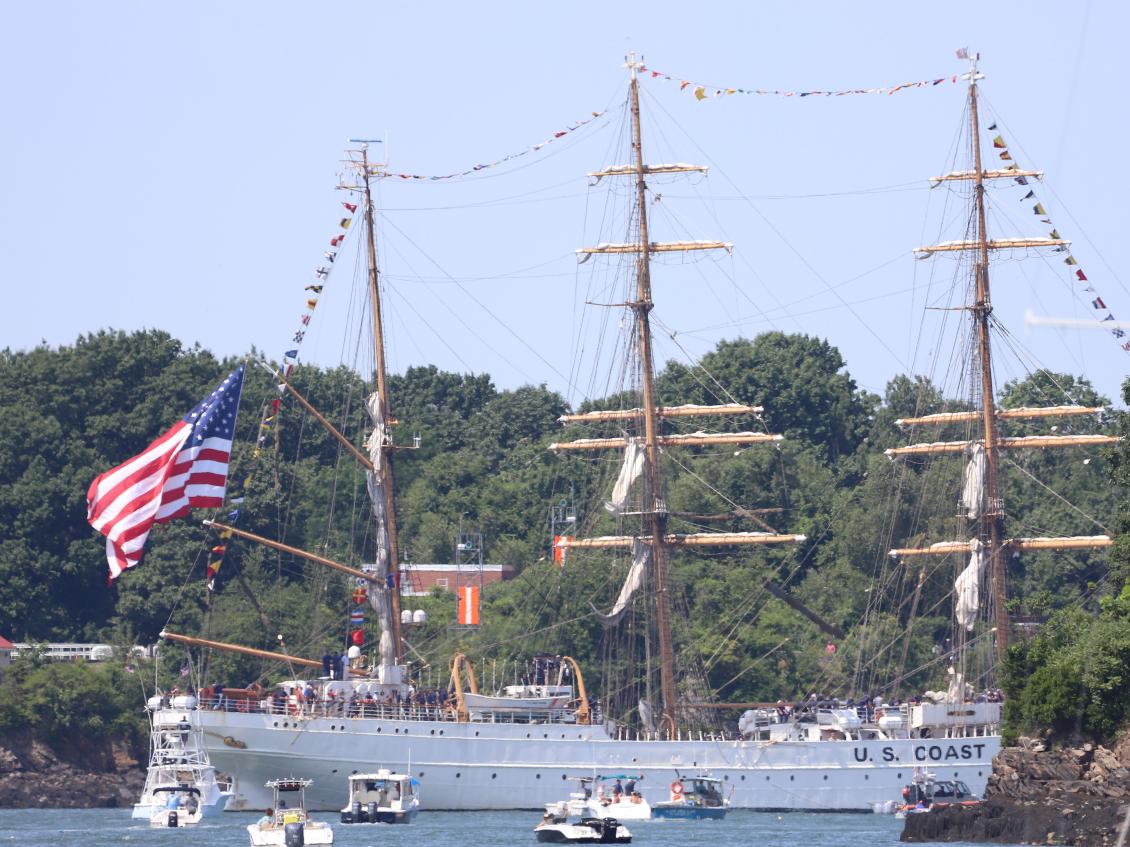

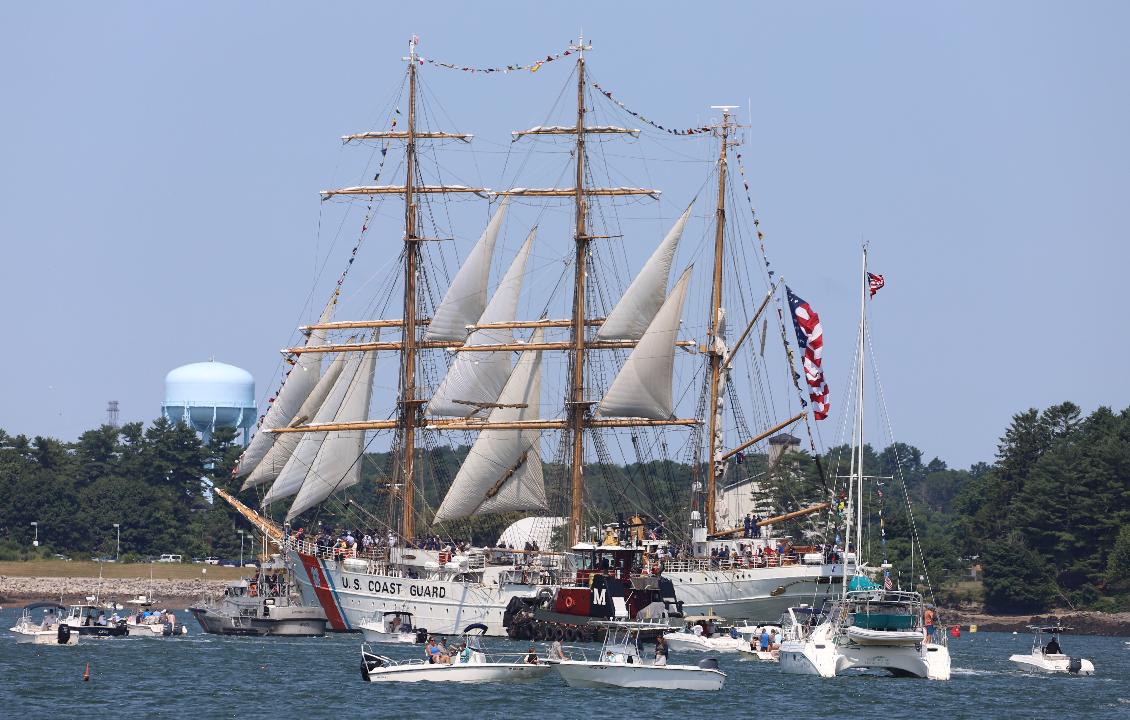


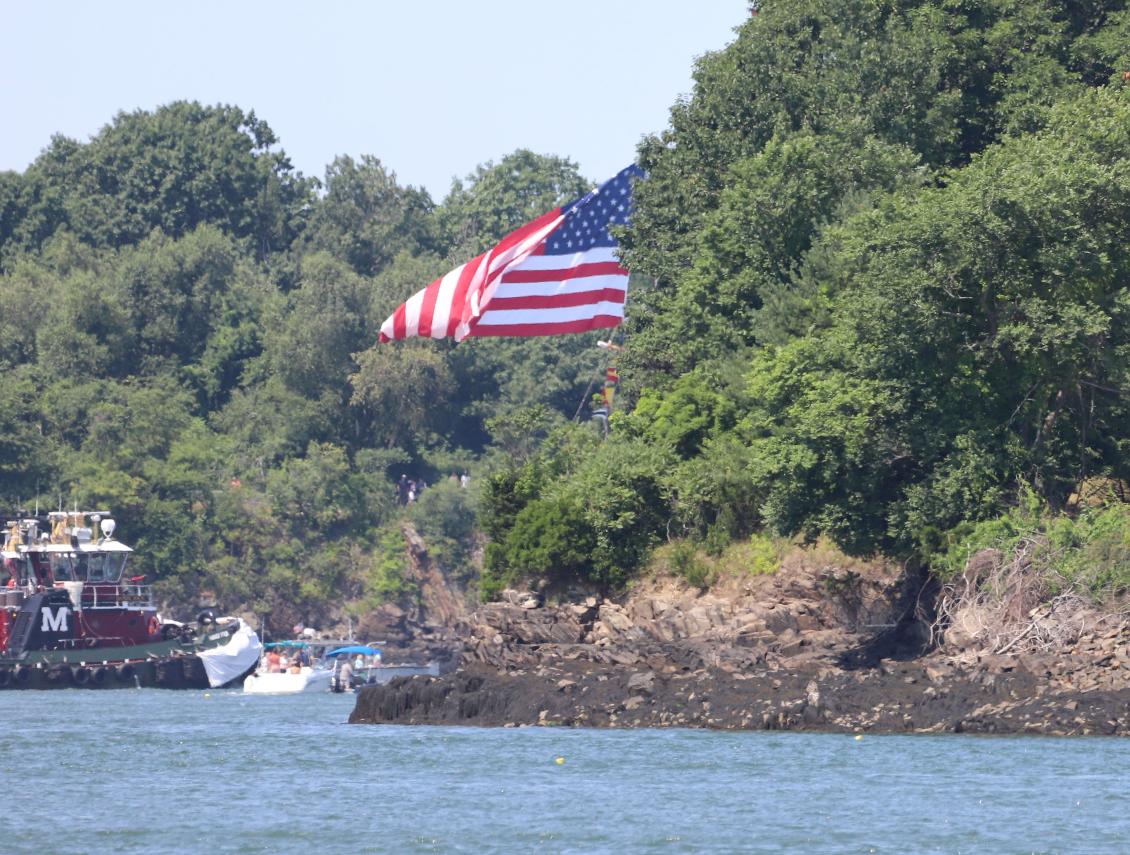
U.S. Coast Guard Cutter Barque Eagle - Docked in Portland Maine - August 6,2023
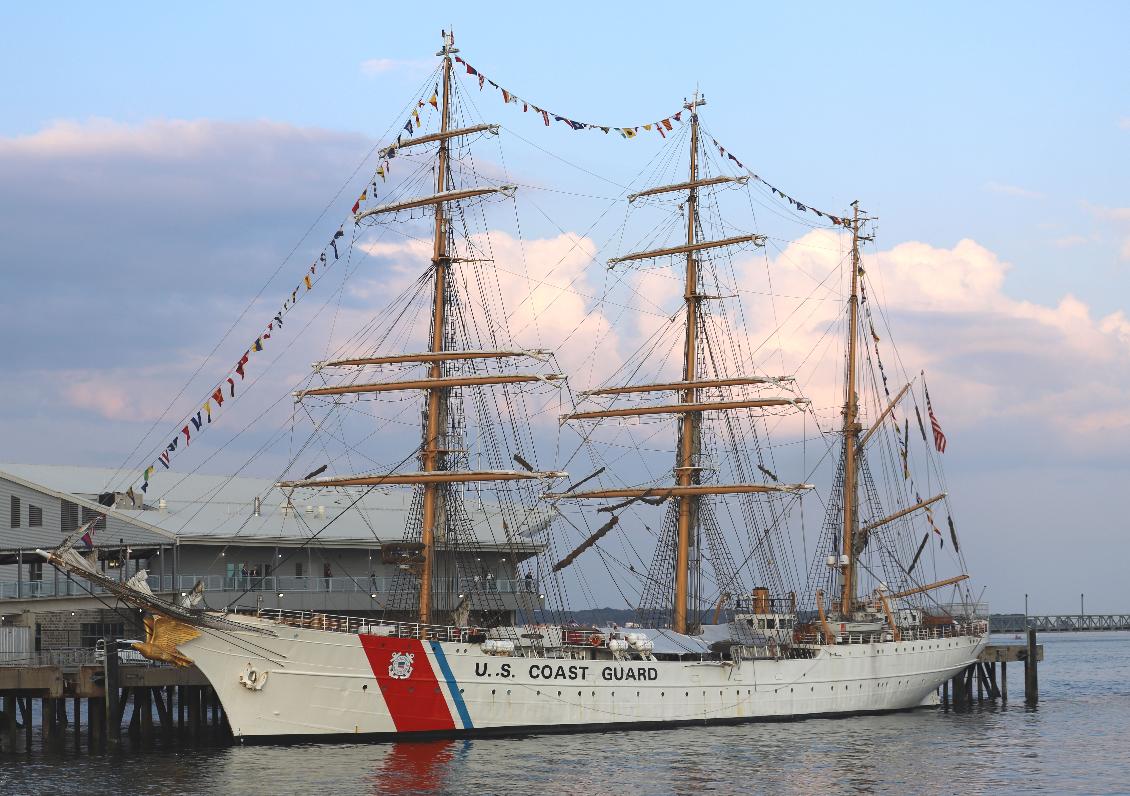


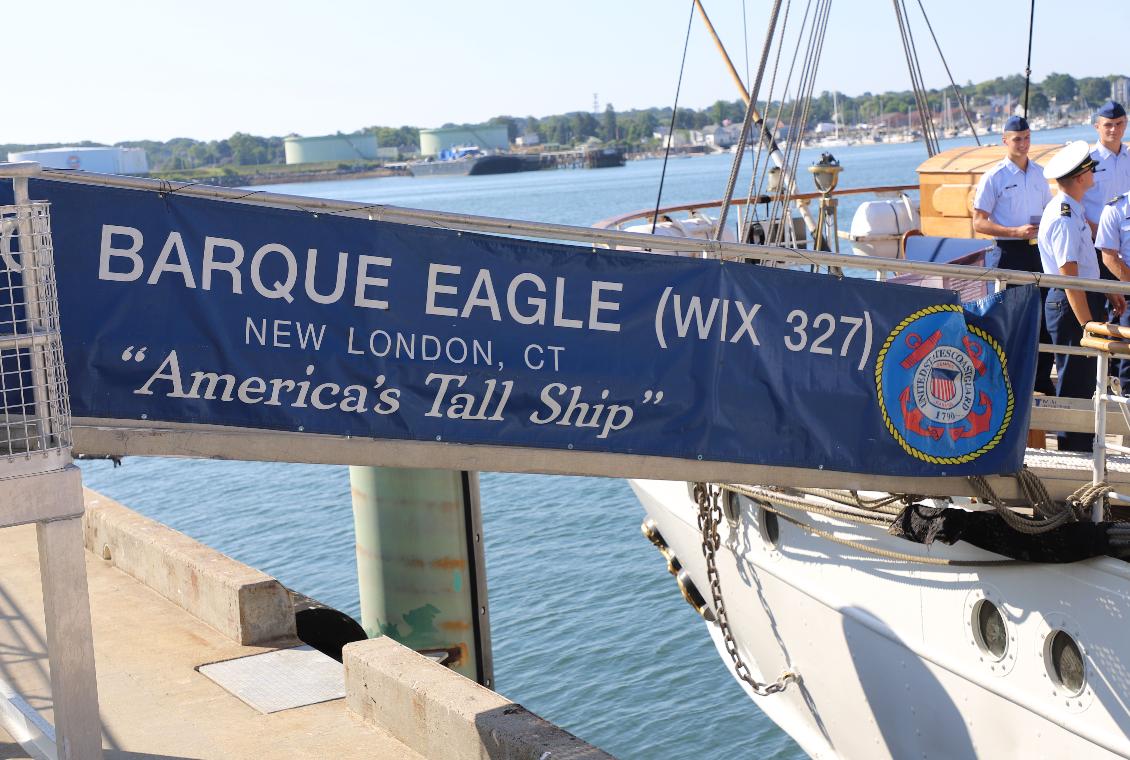
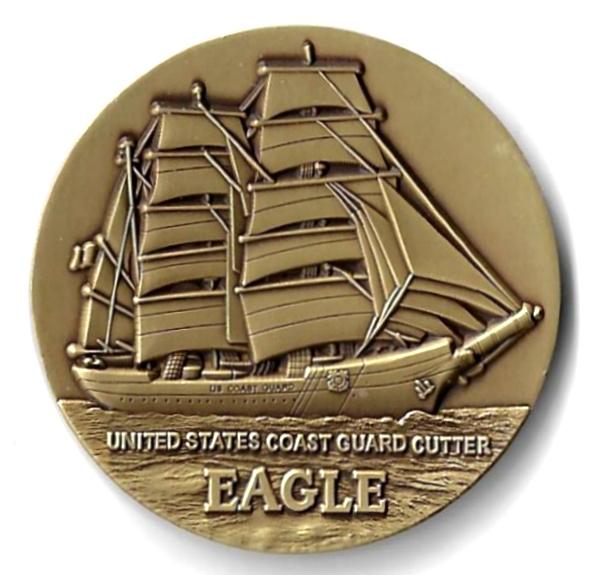
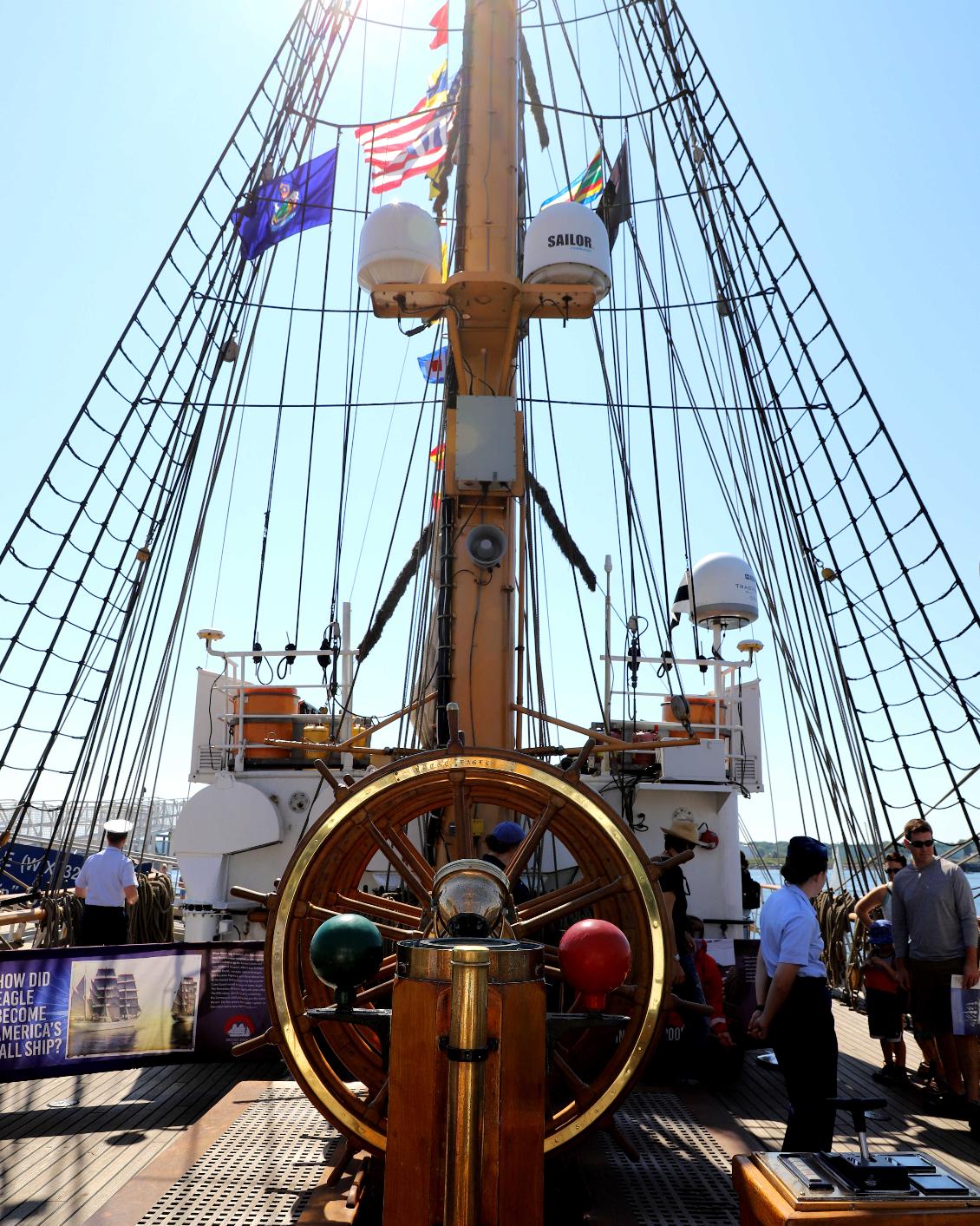
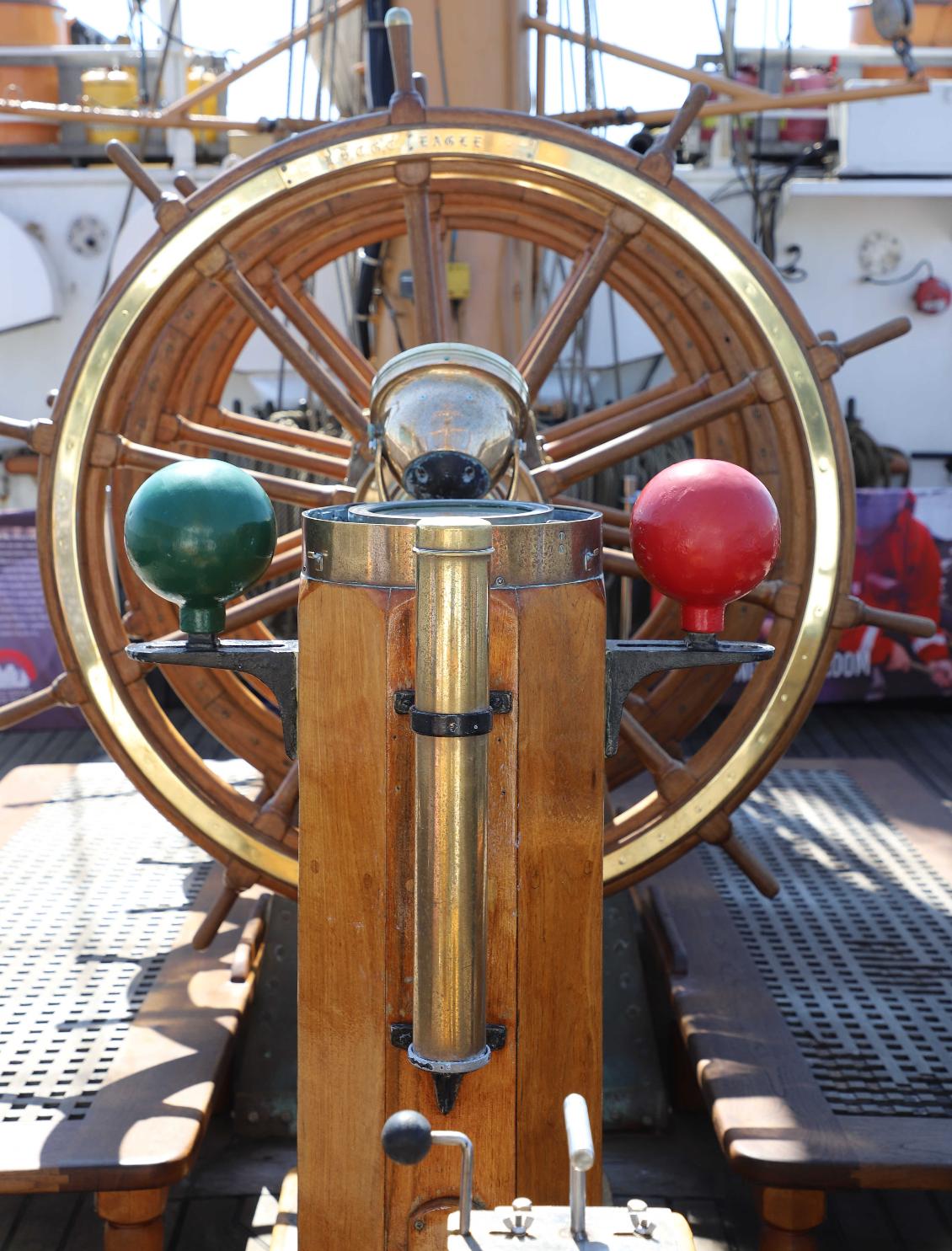
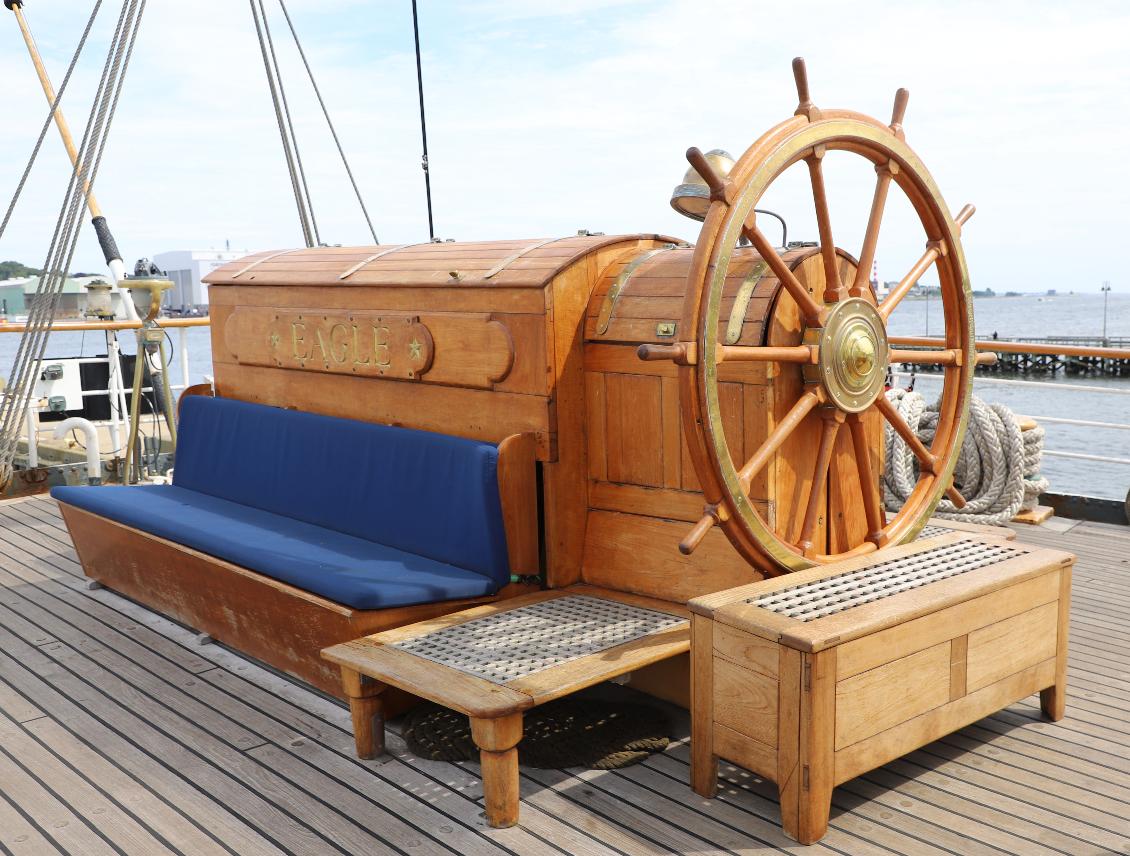
Captain Jessica Rozzi-Ochs (and Friend)

United States Revenue Cutter Eagle - War of 1812

1950s Photo of the Coast Guard Eagle - Shared by Kati Gomez from here Dad's Collection
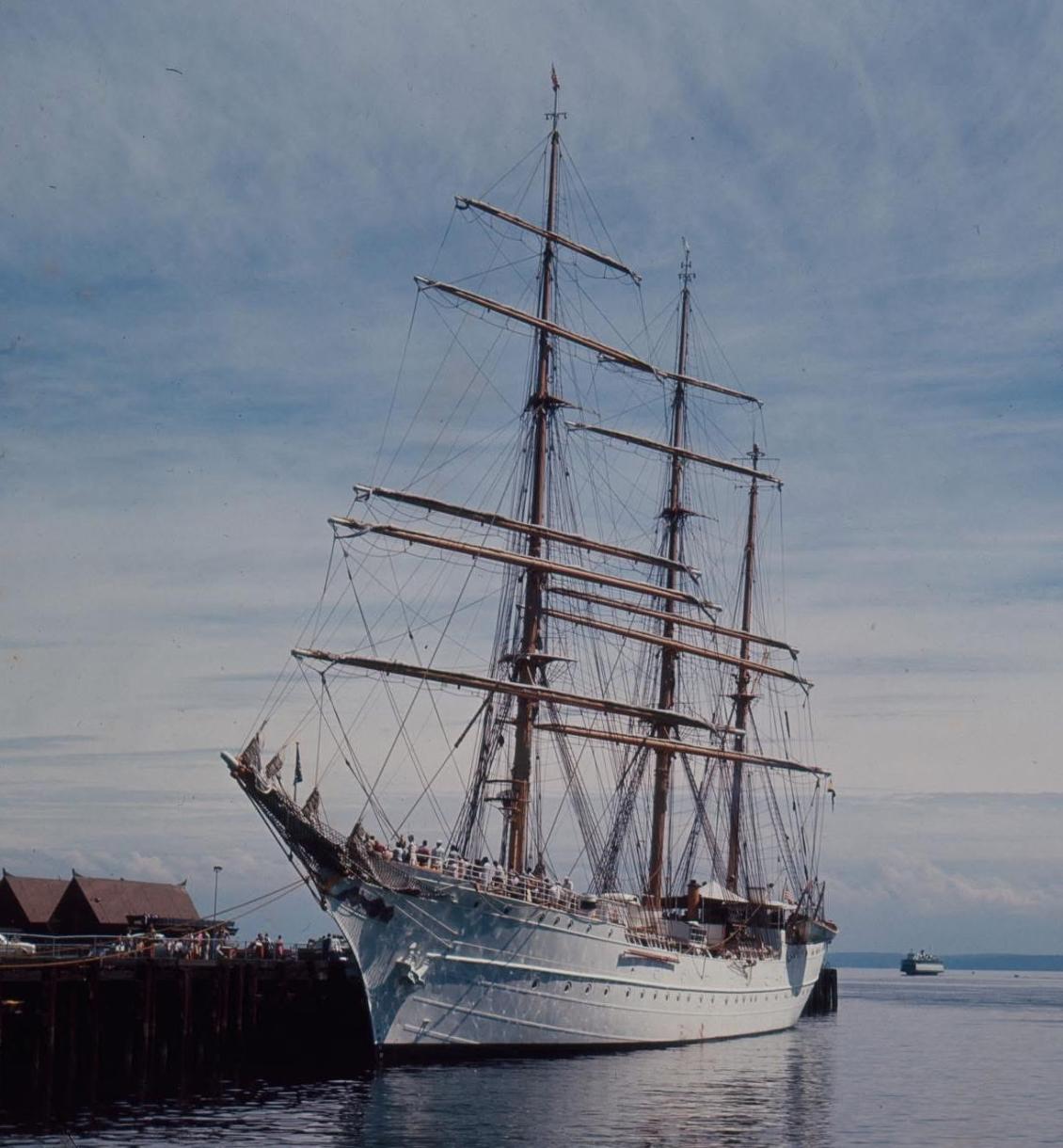
Schiffe Albert Leo Schlageter, Horst Wessel & Gorch Fock - 1938
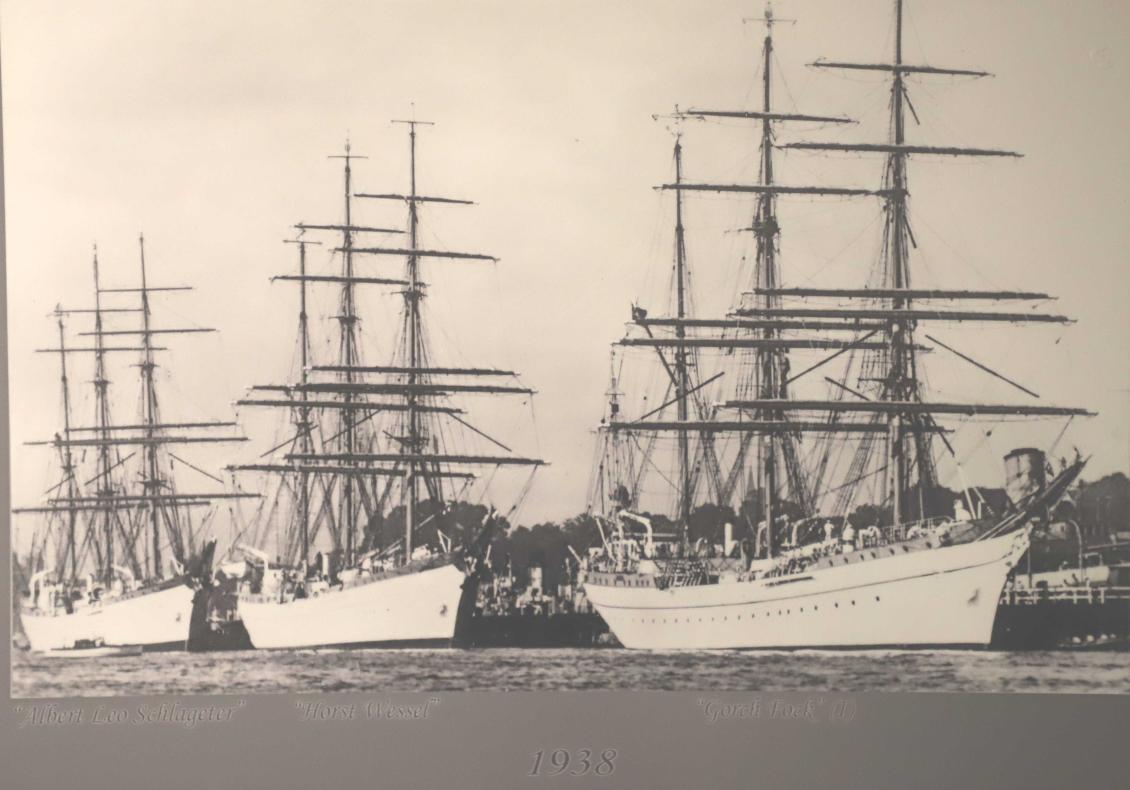
Schiff Albert Leo Schlageter -- 1948 Brazil "Guanabara" --1961 Portugal "Sagres"

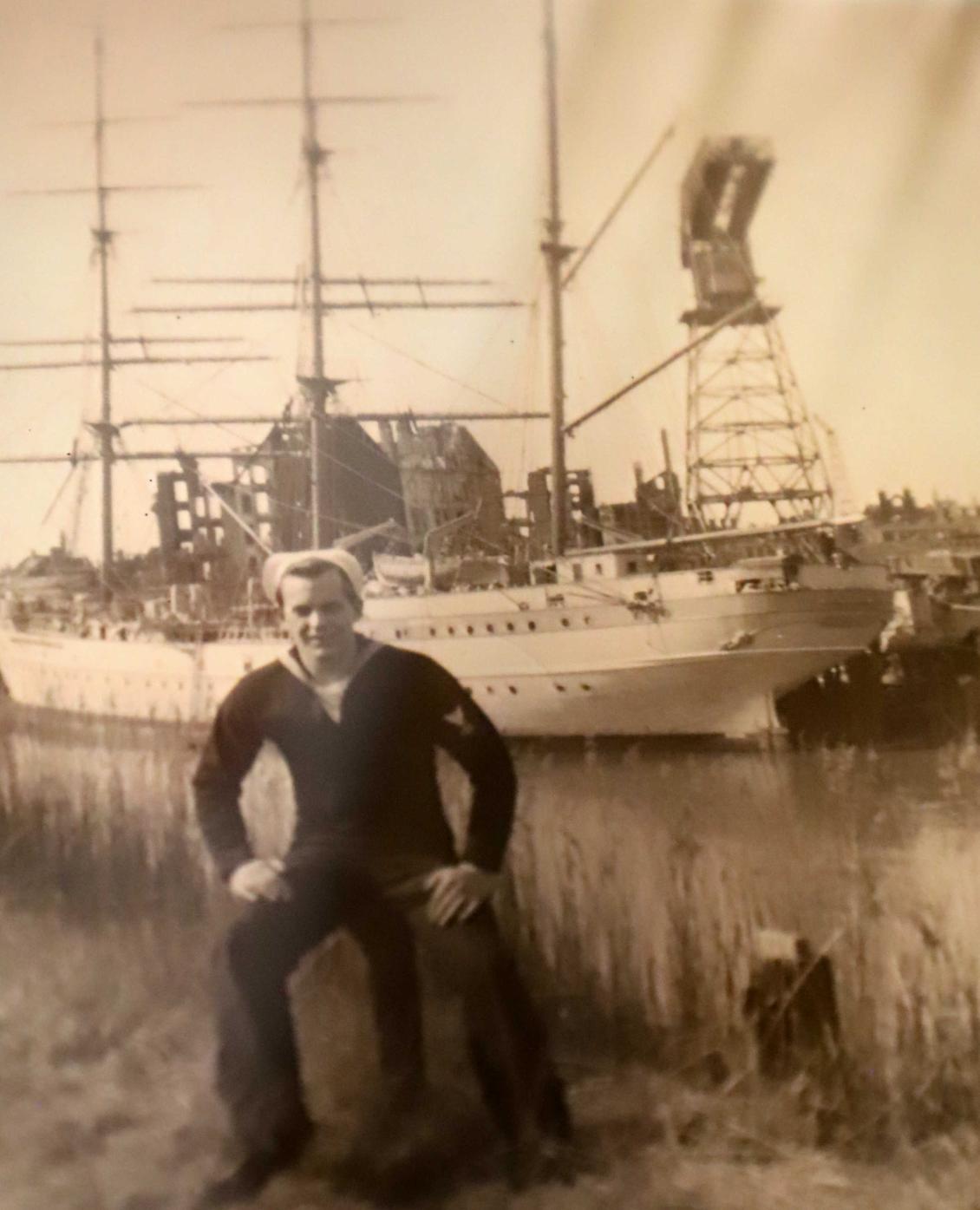
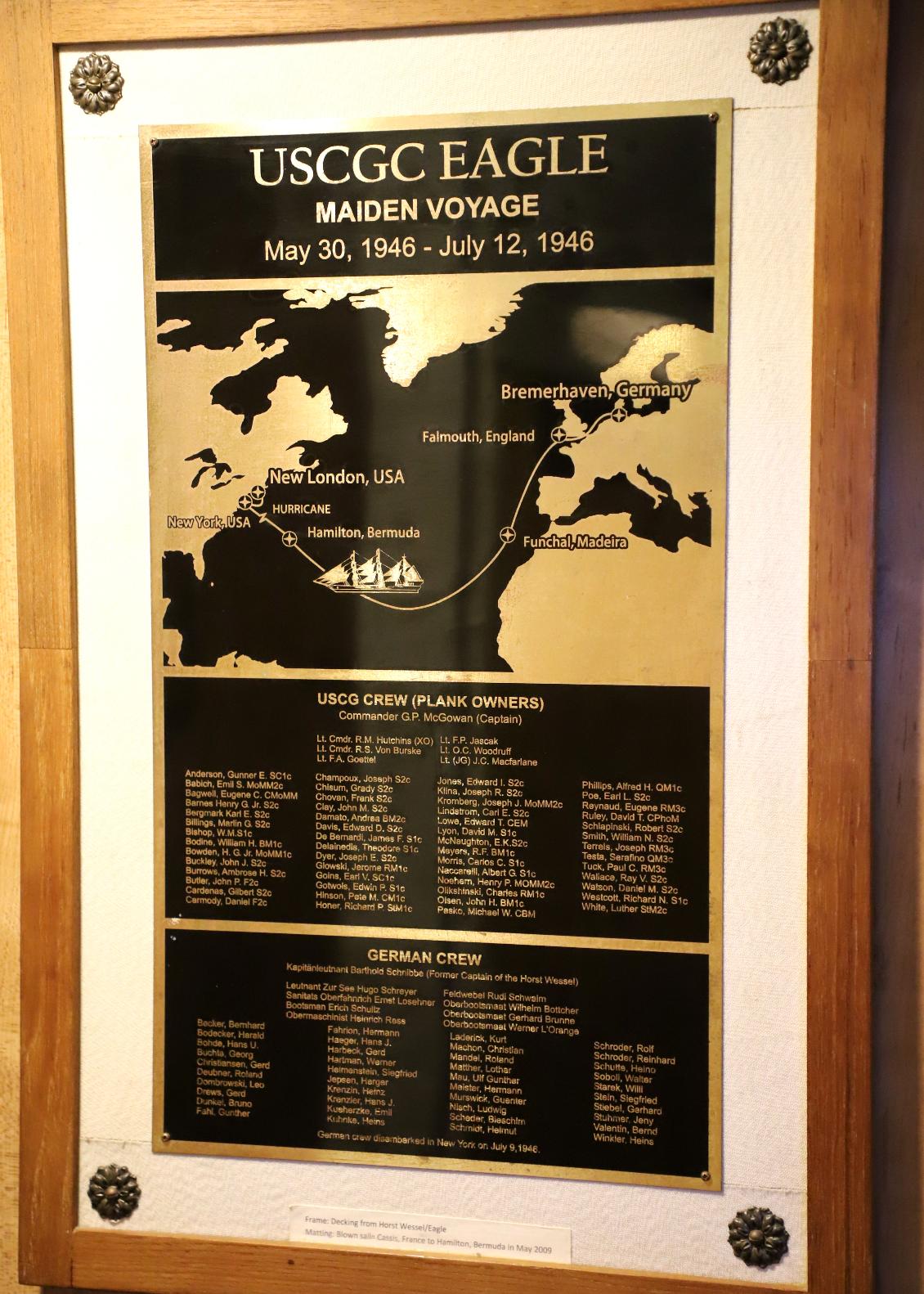
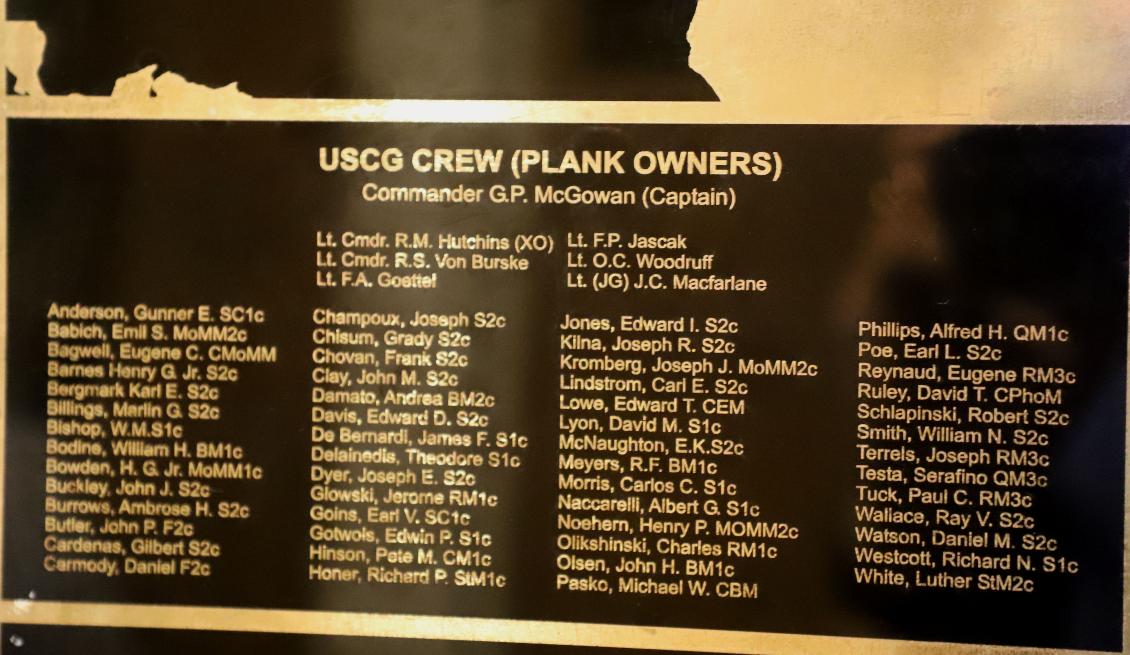
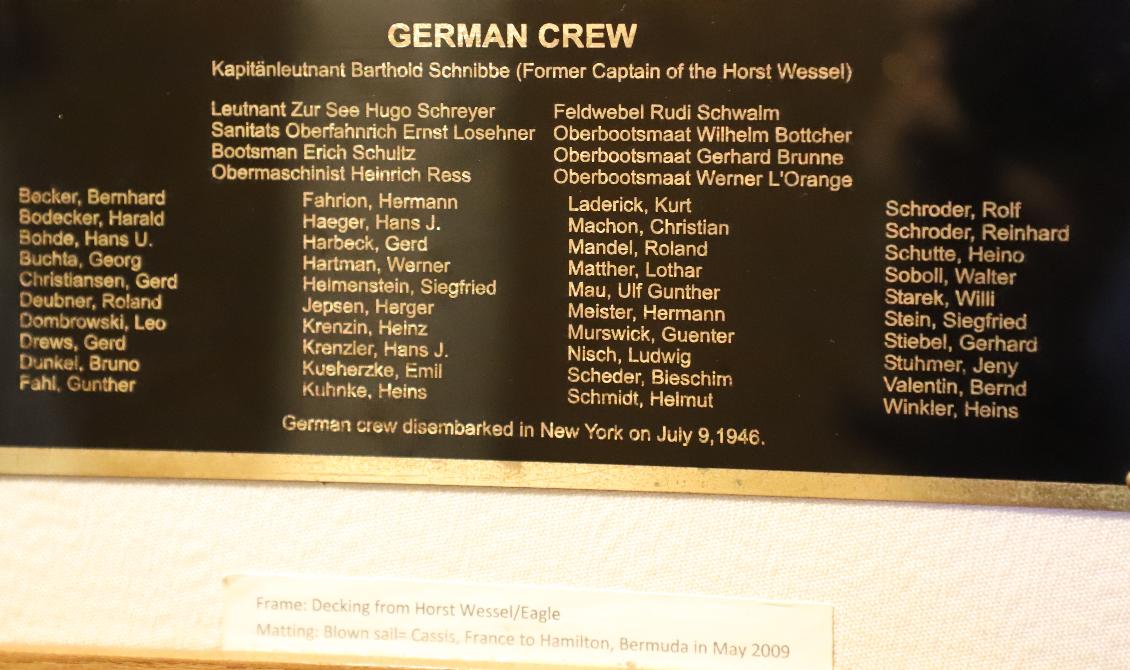
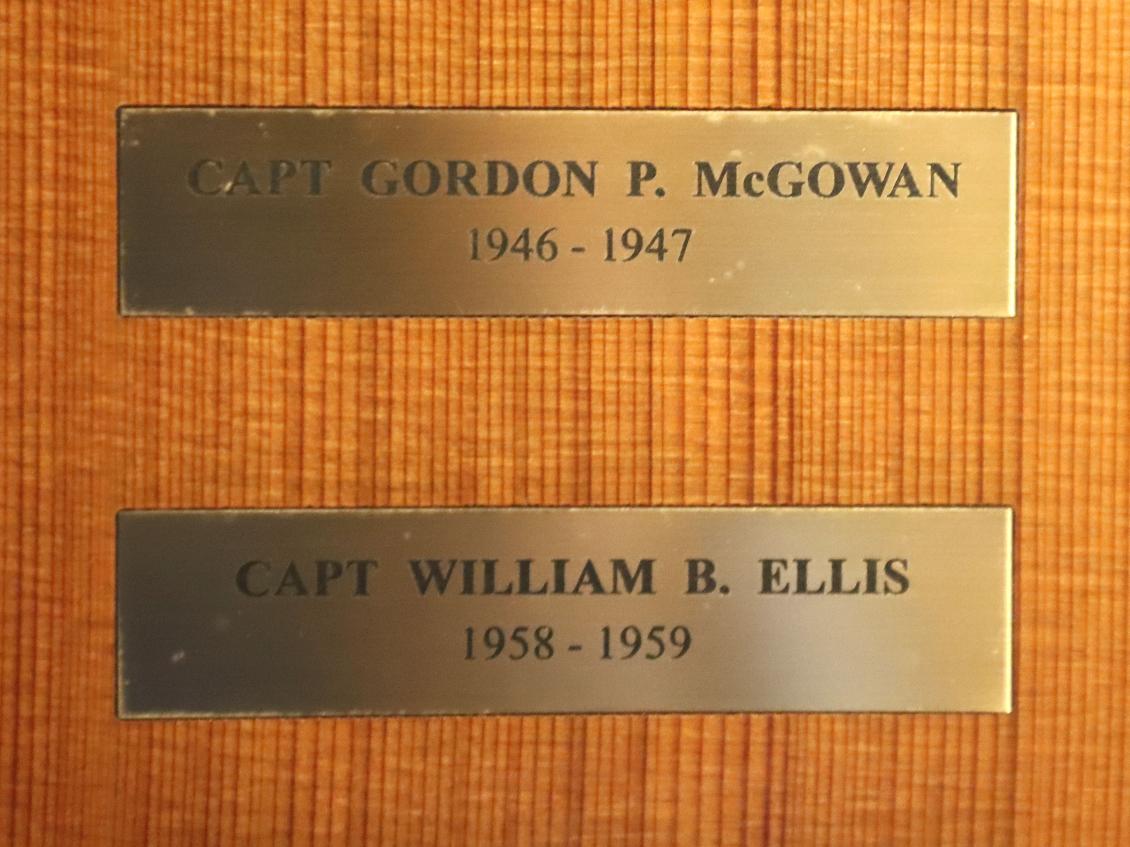
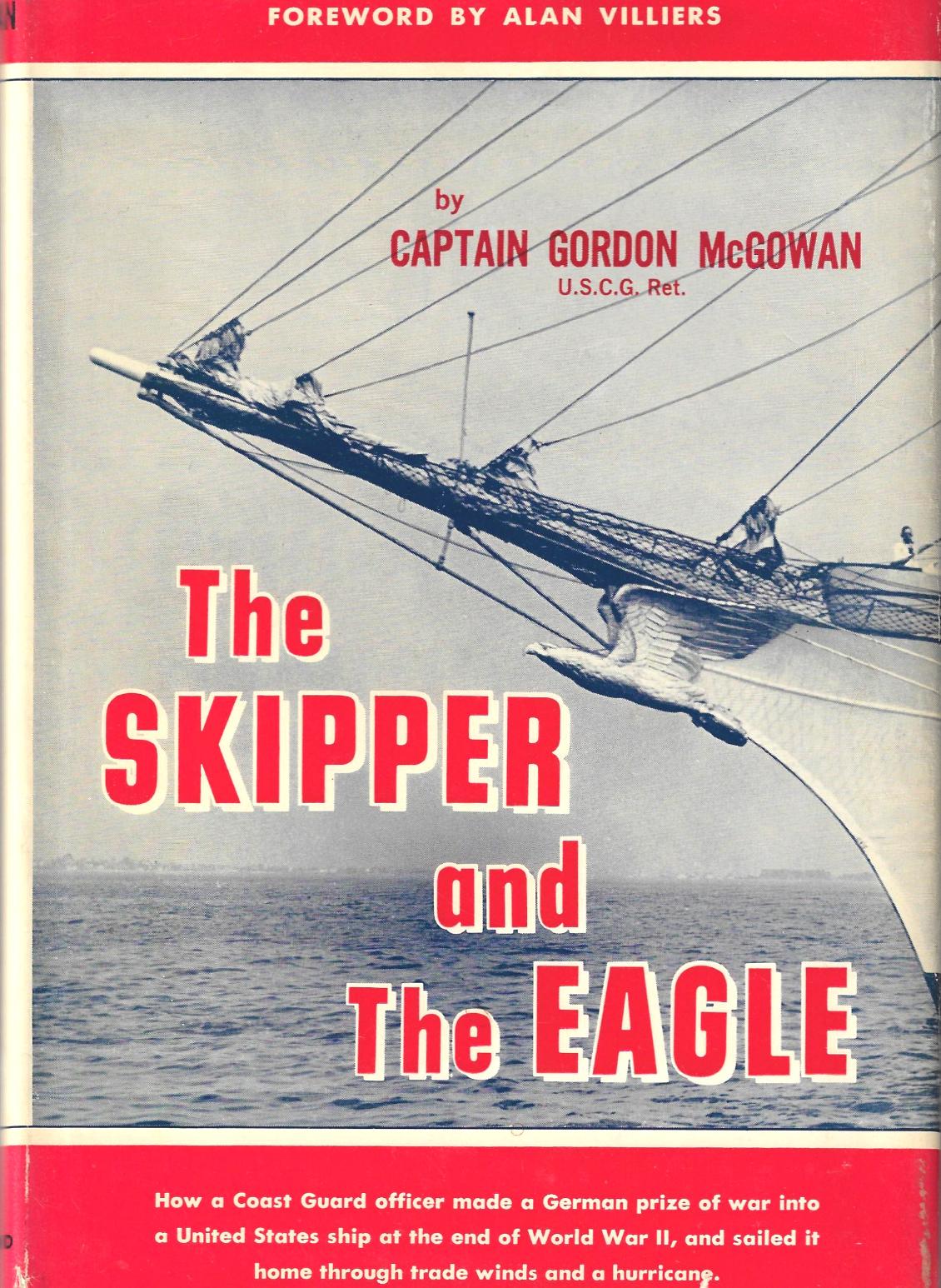
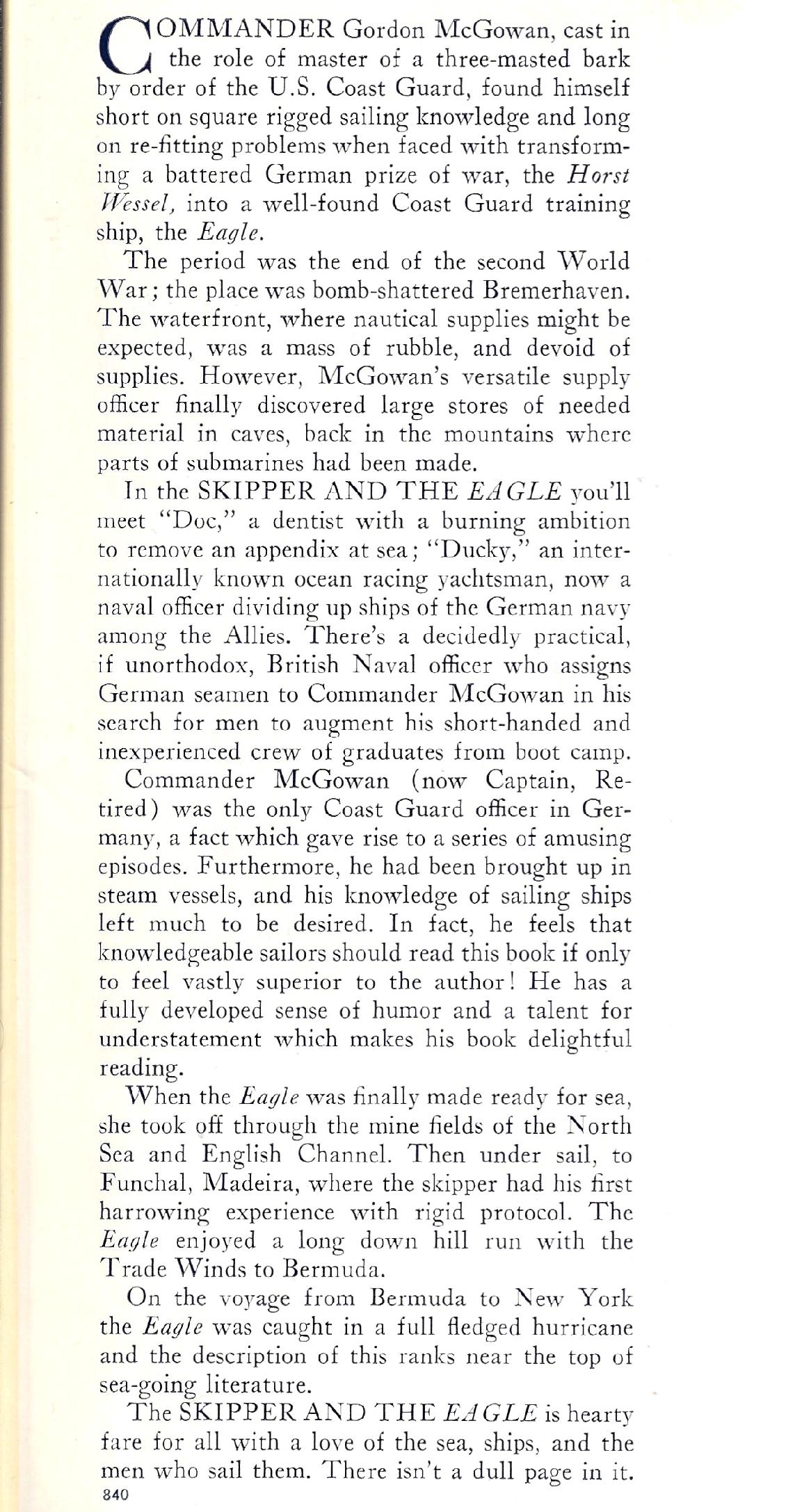


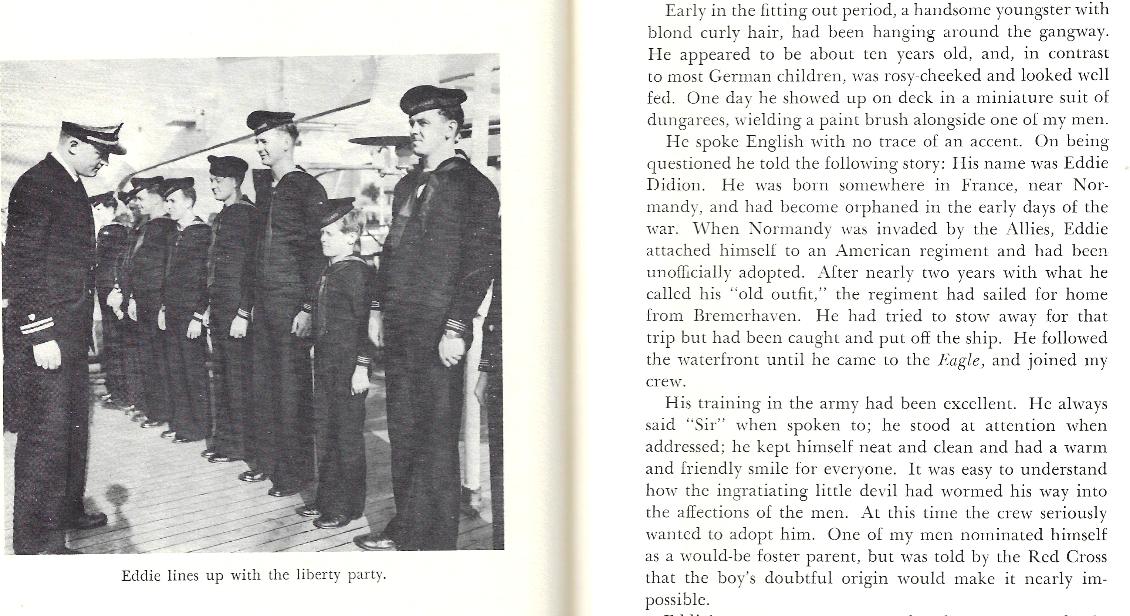
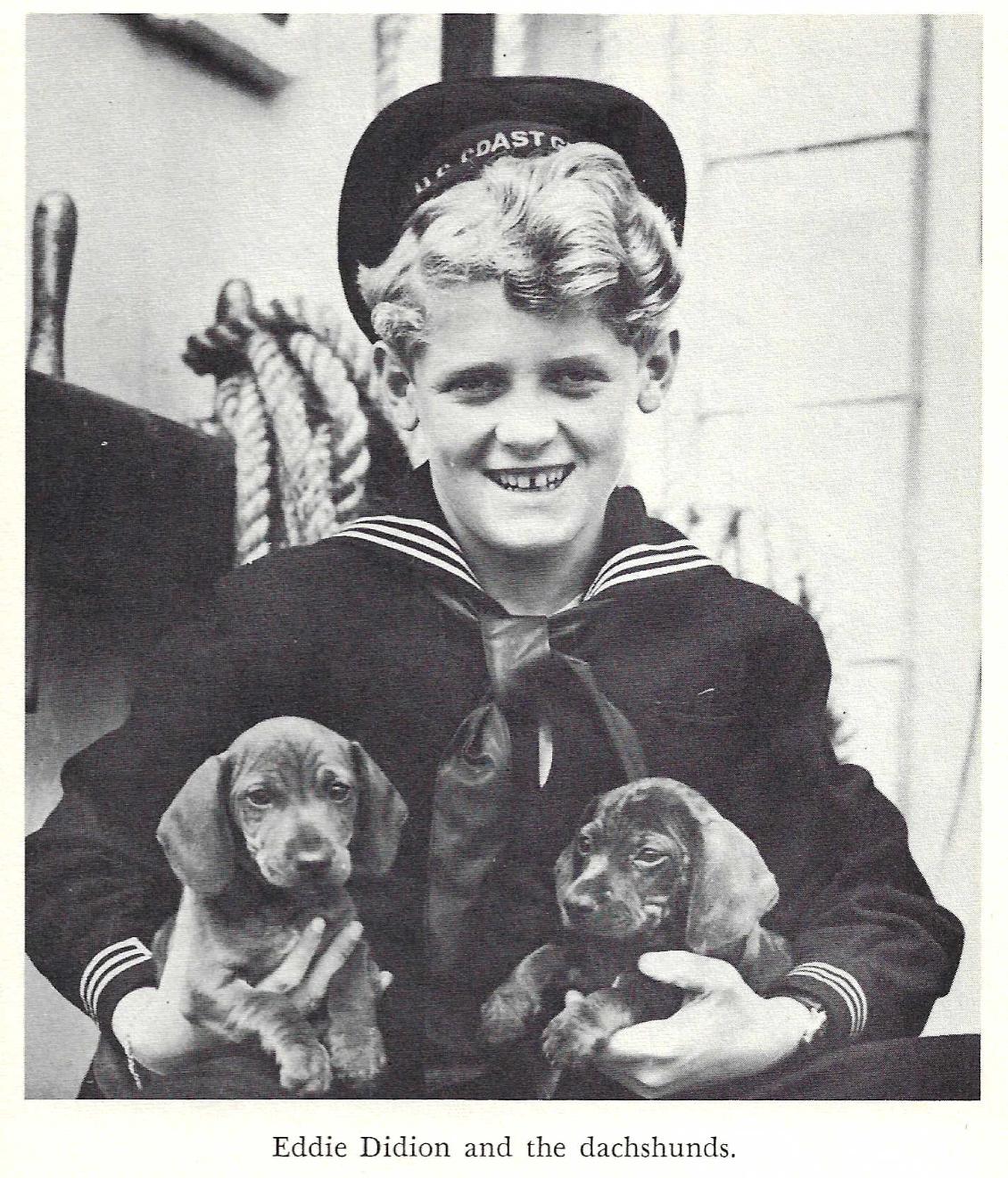
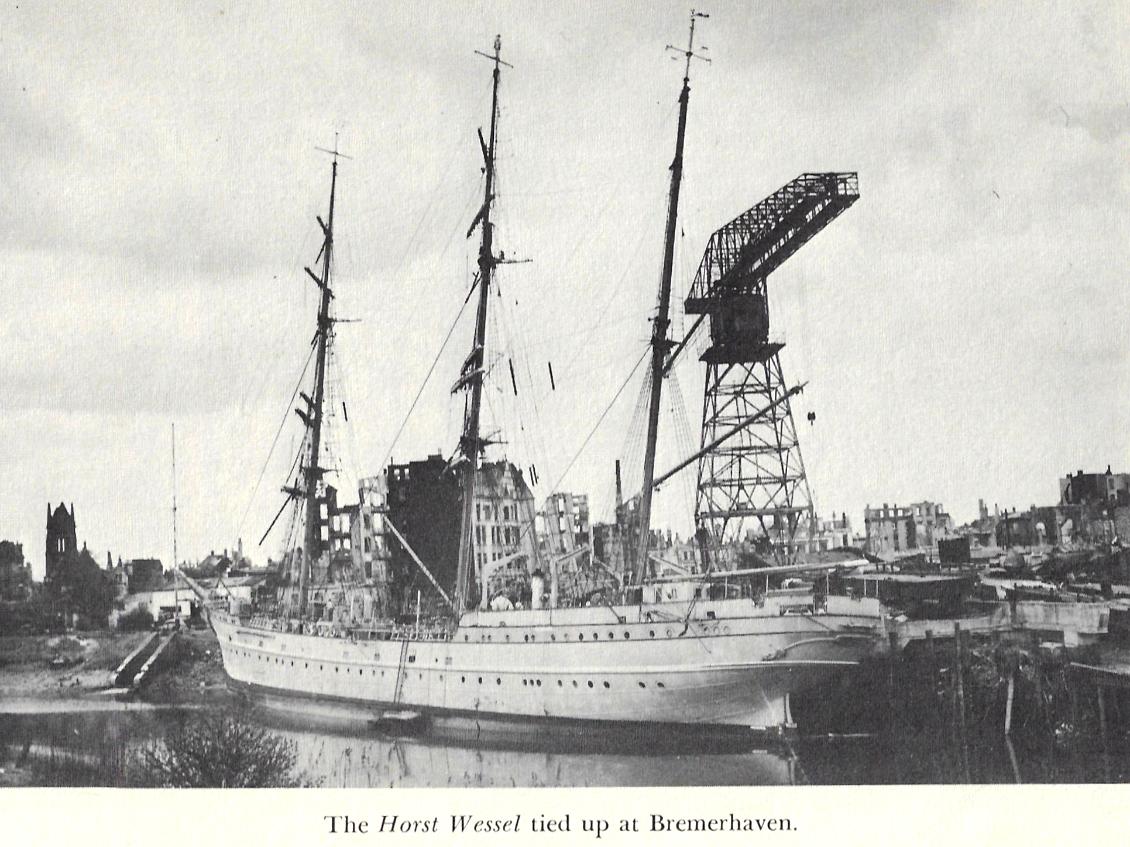
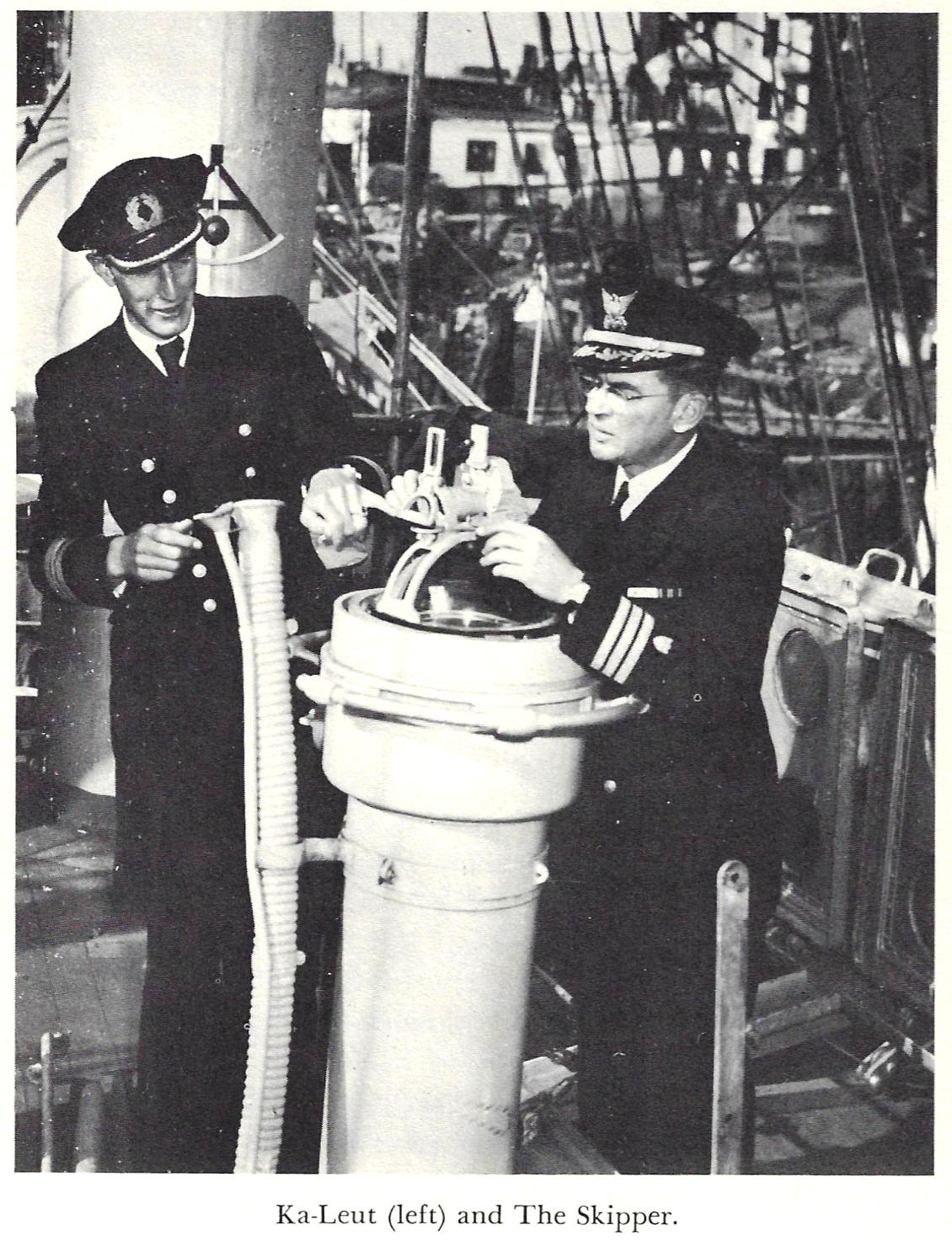
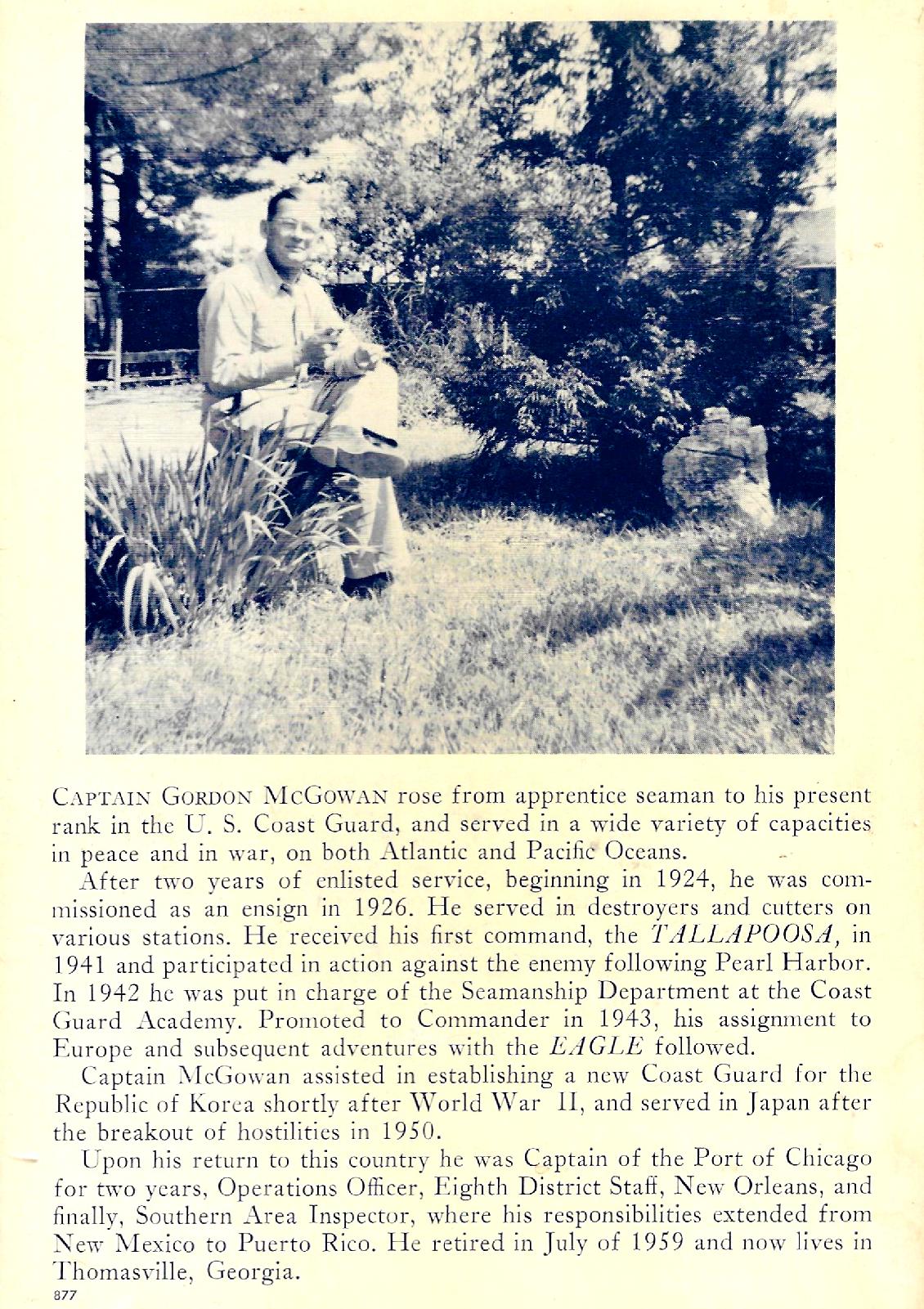
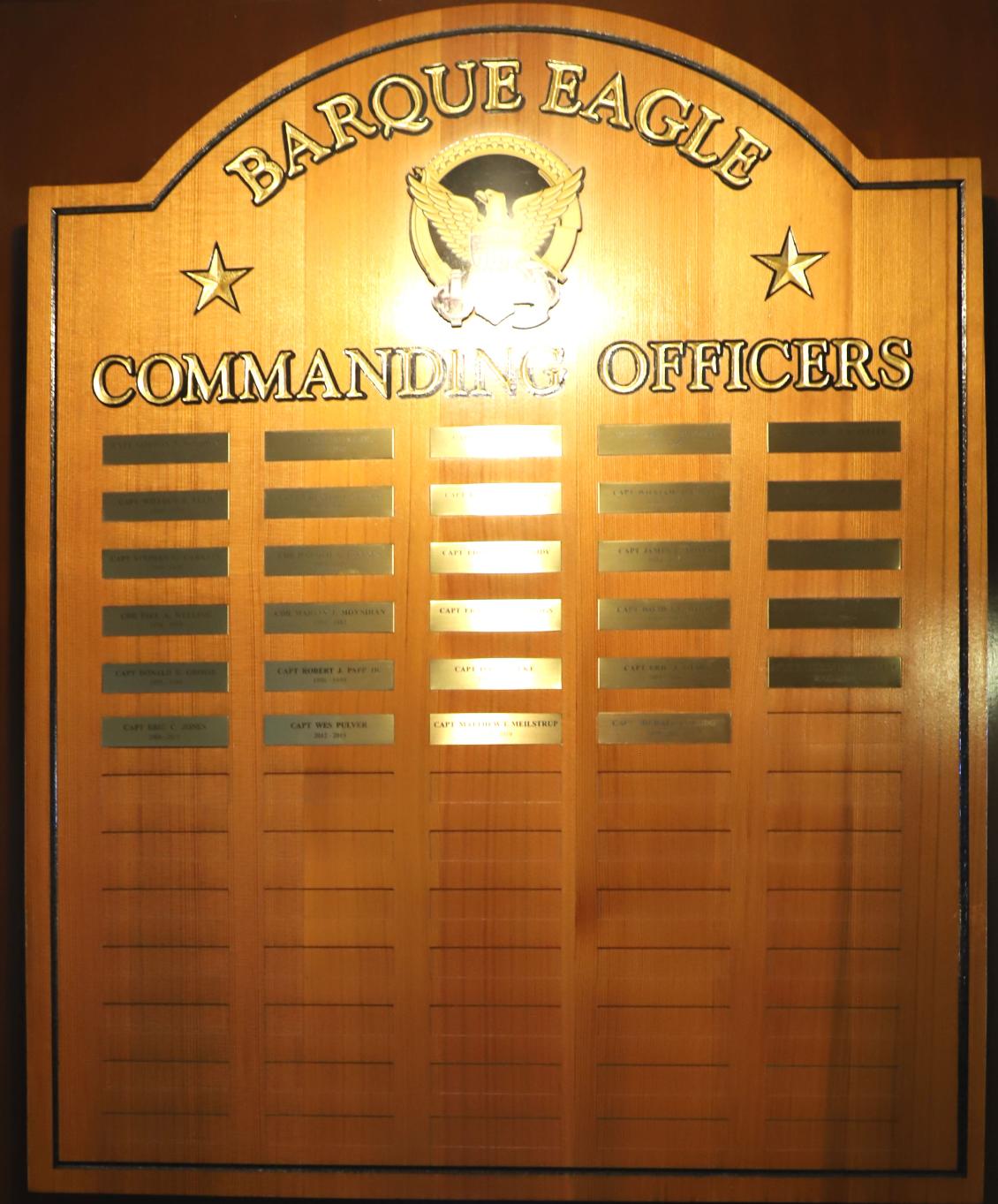
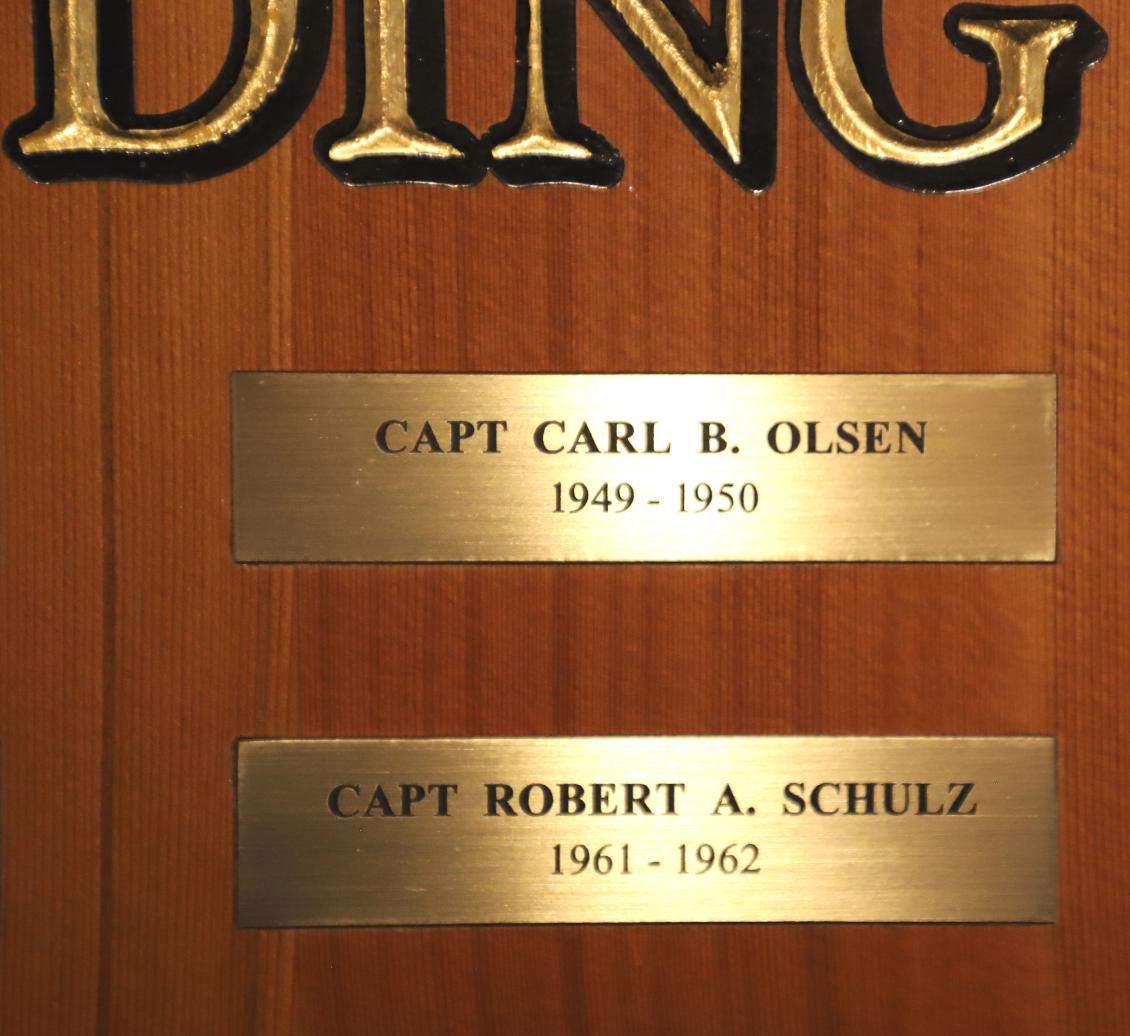
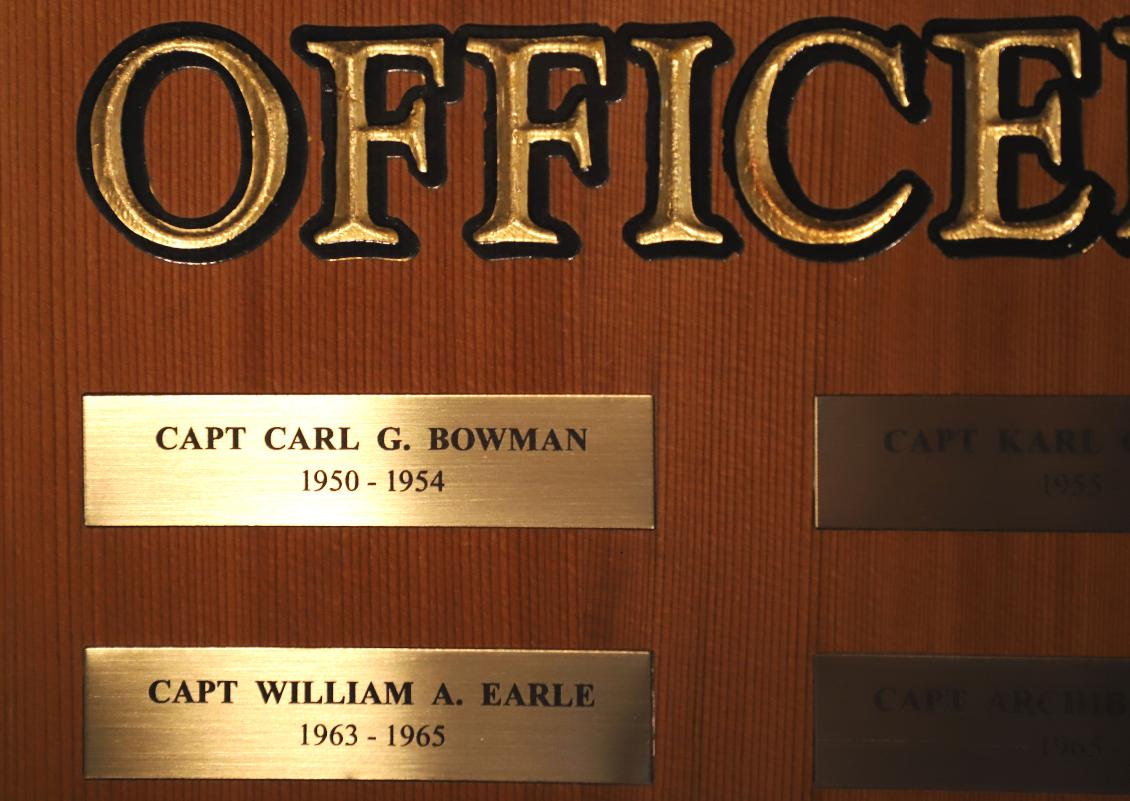
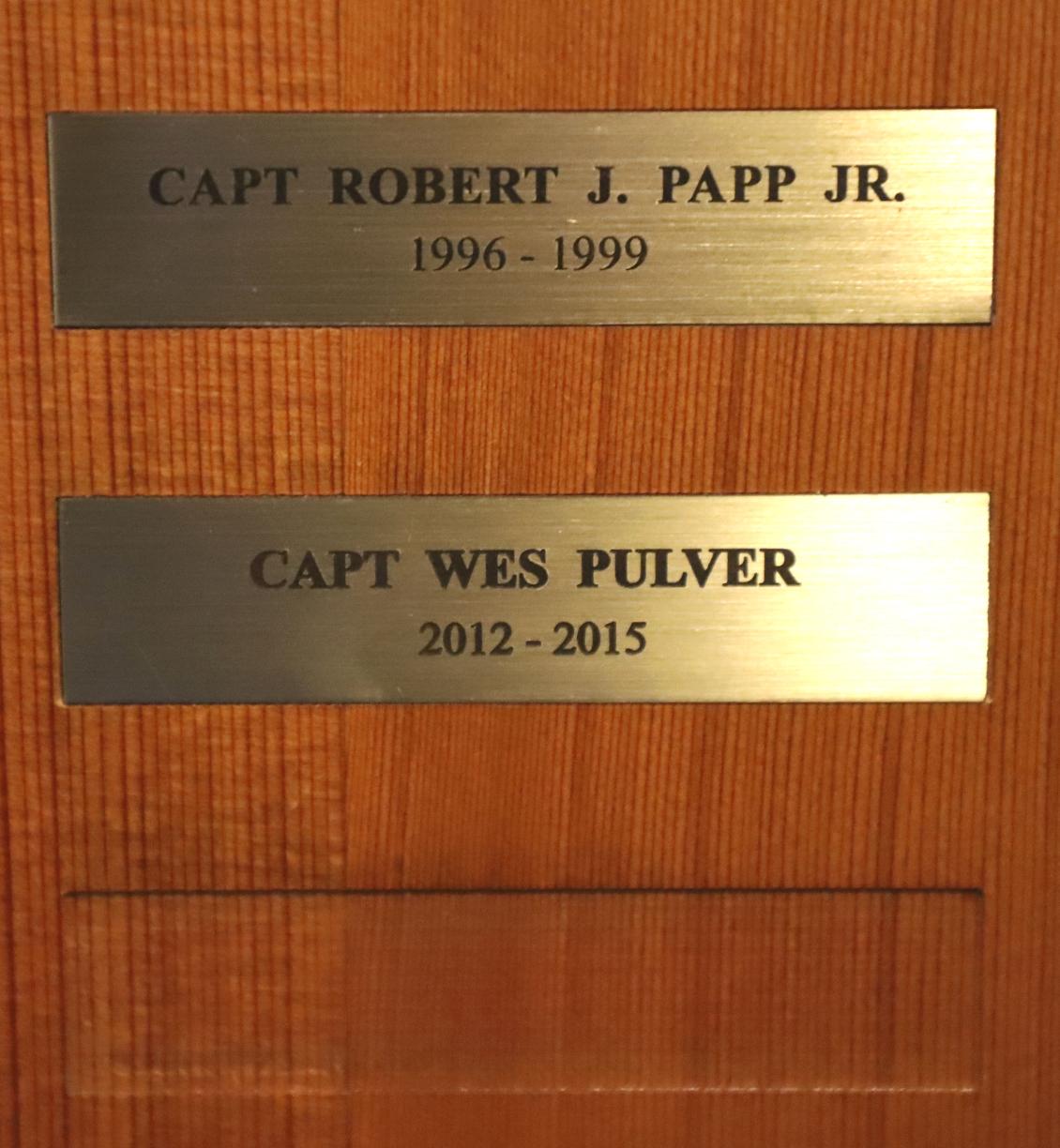
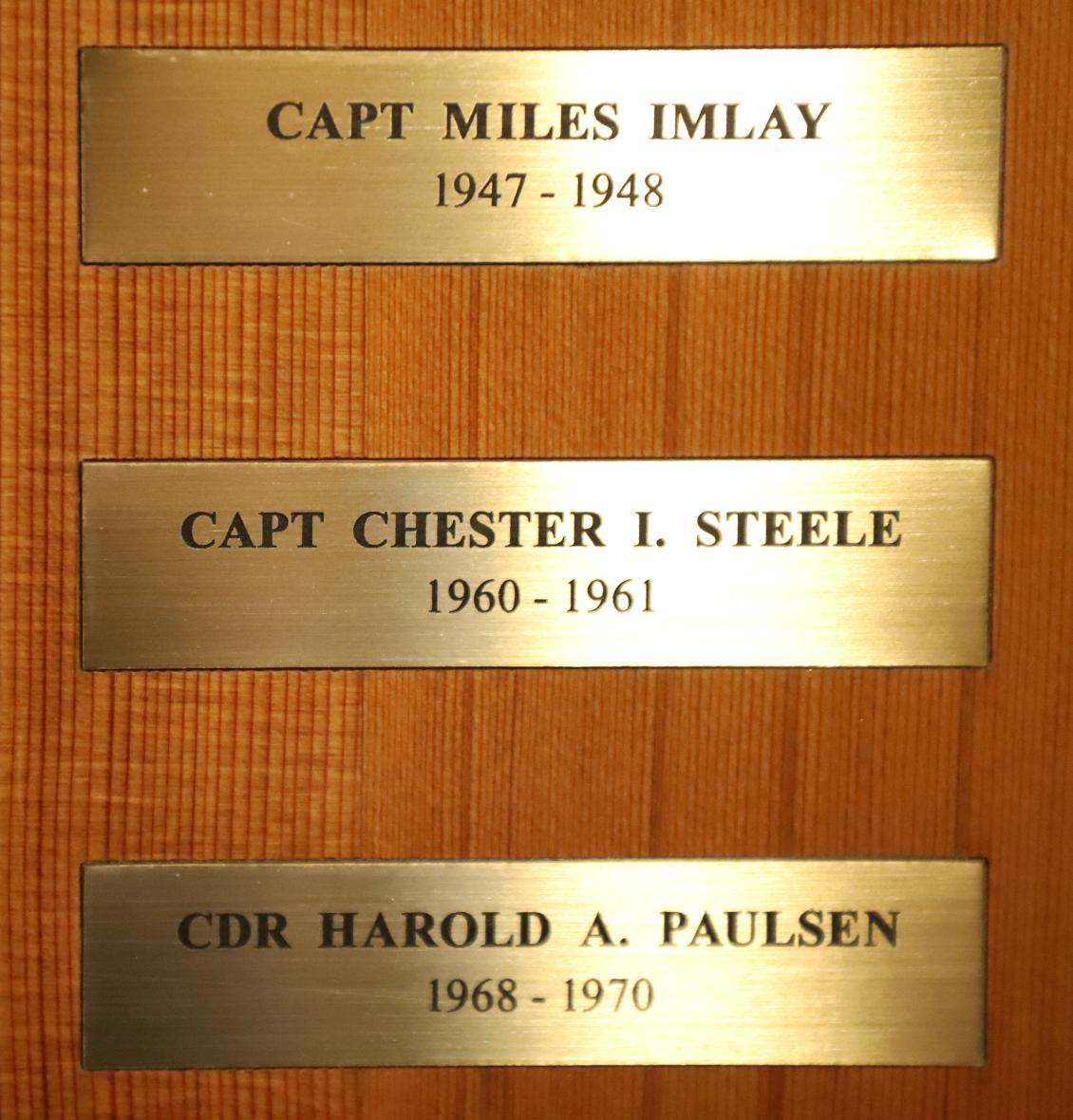
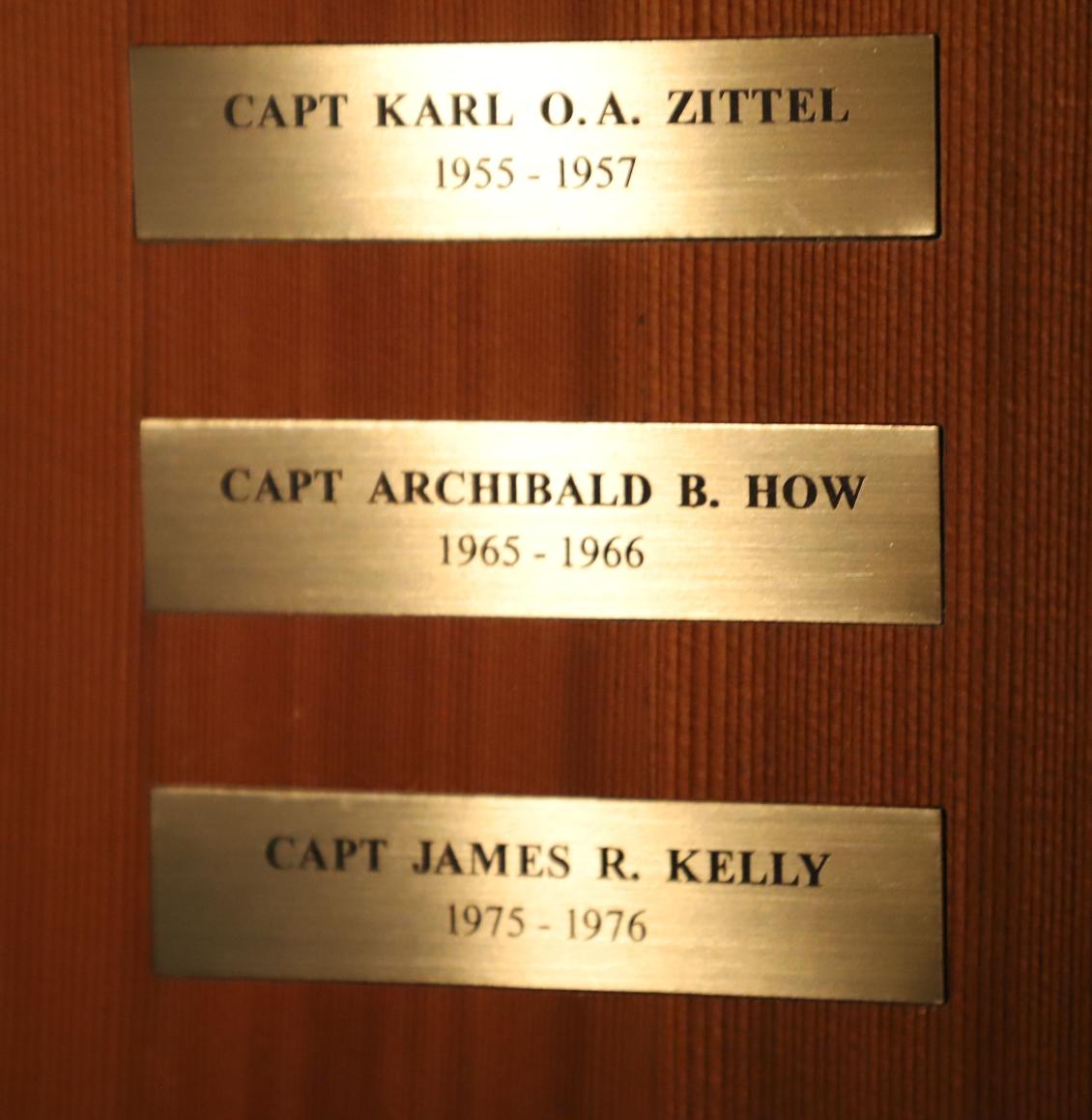
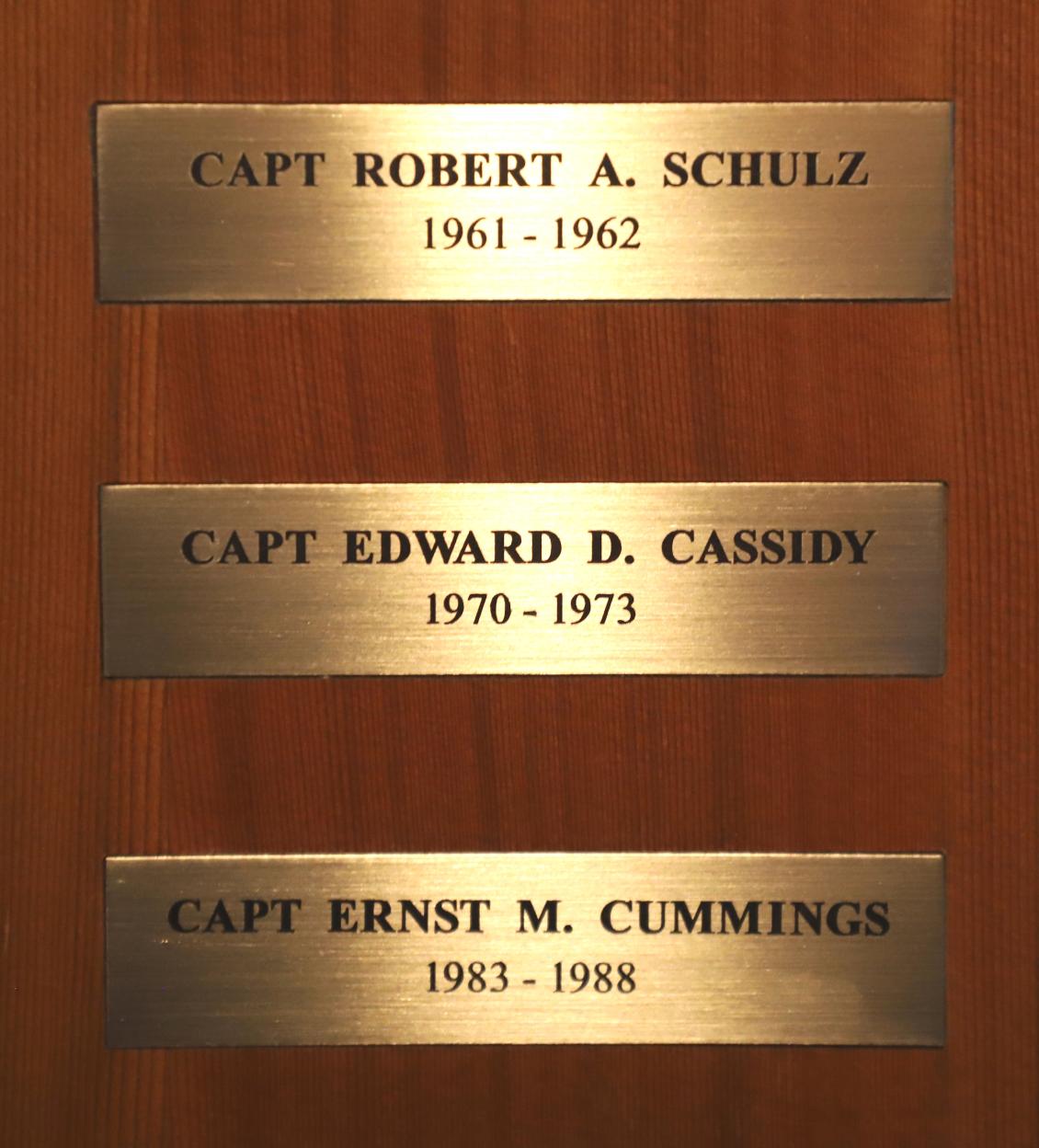
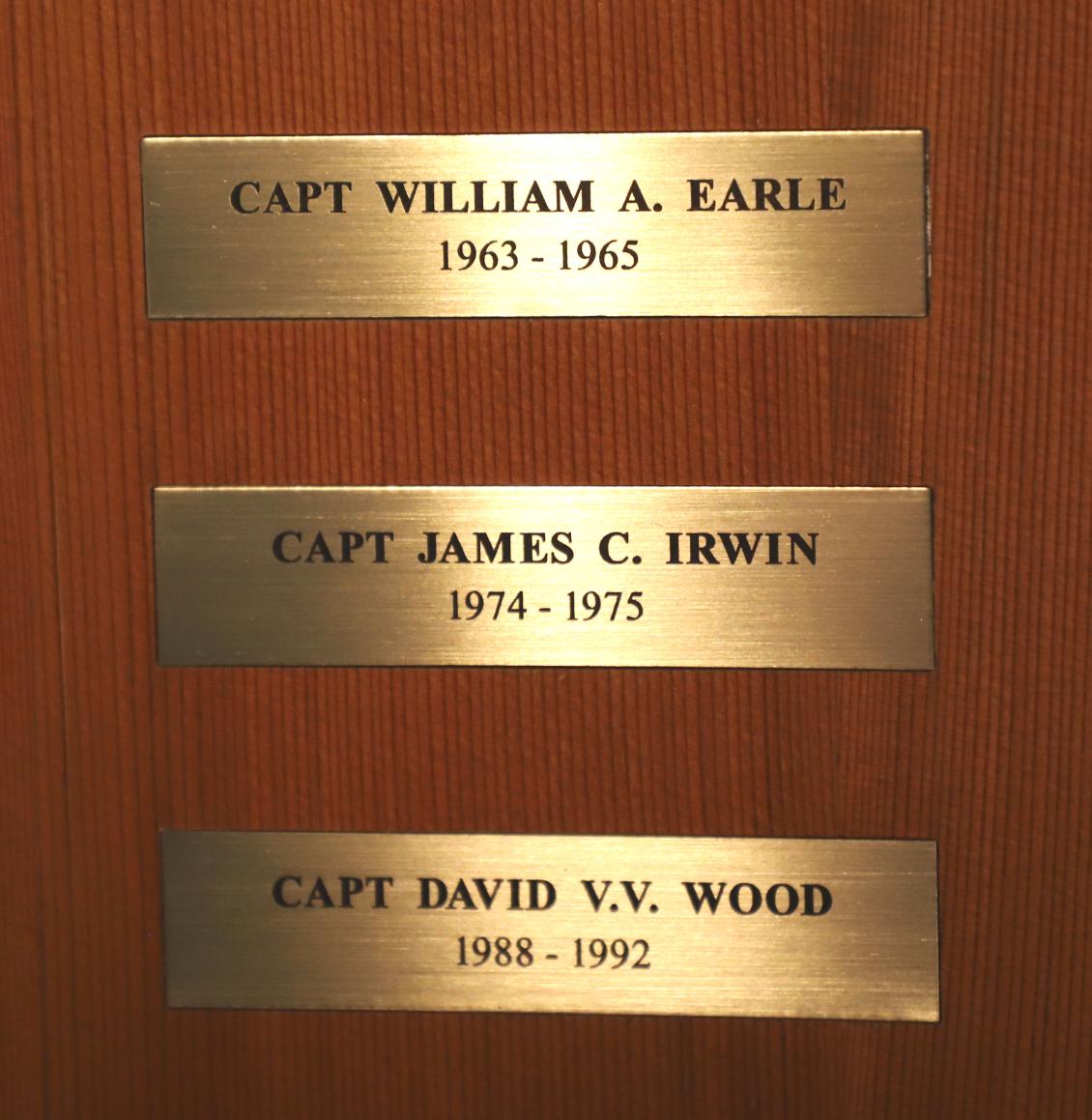
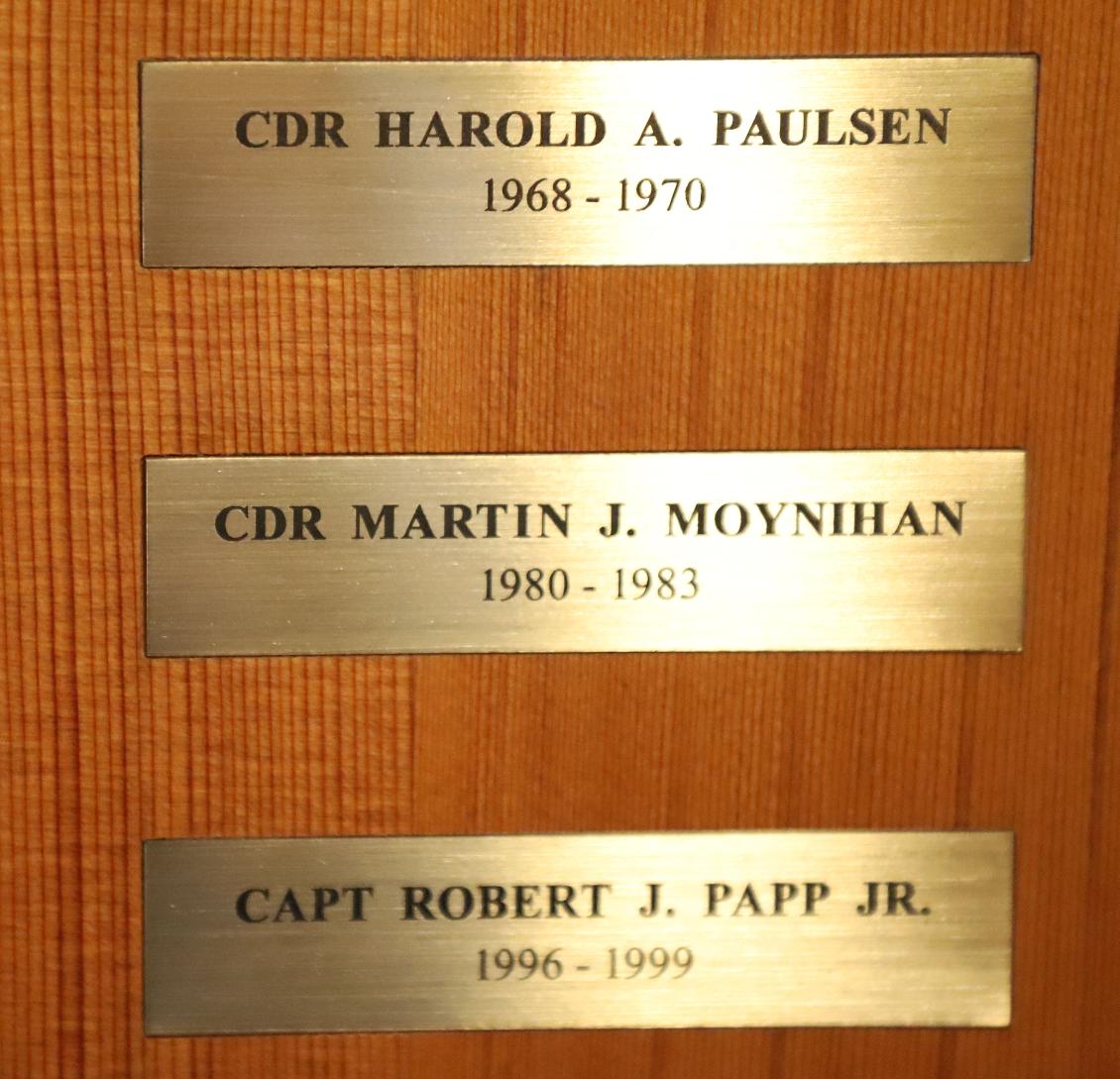
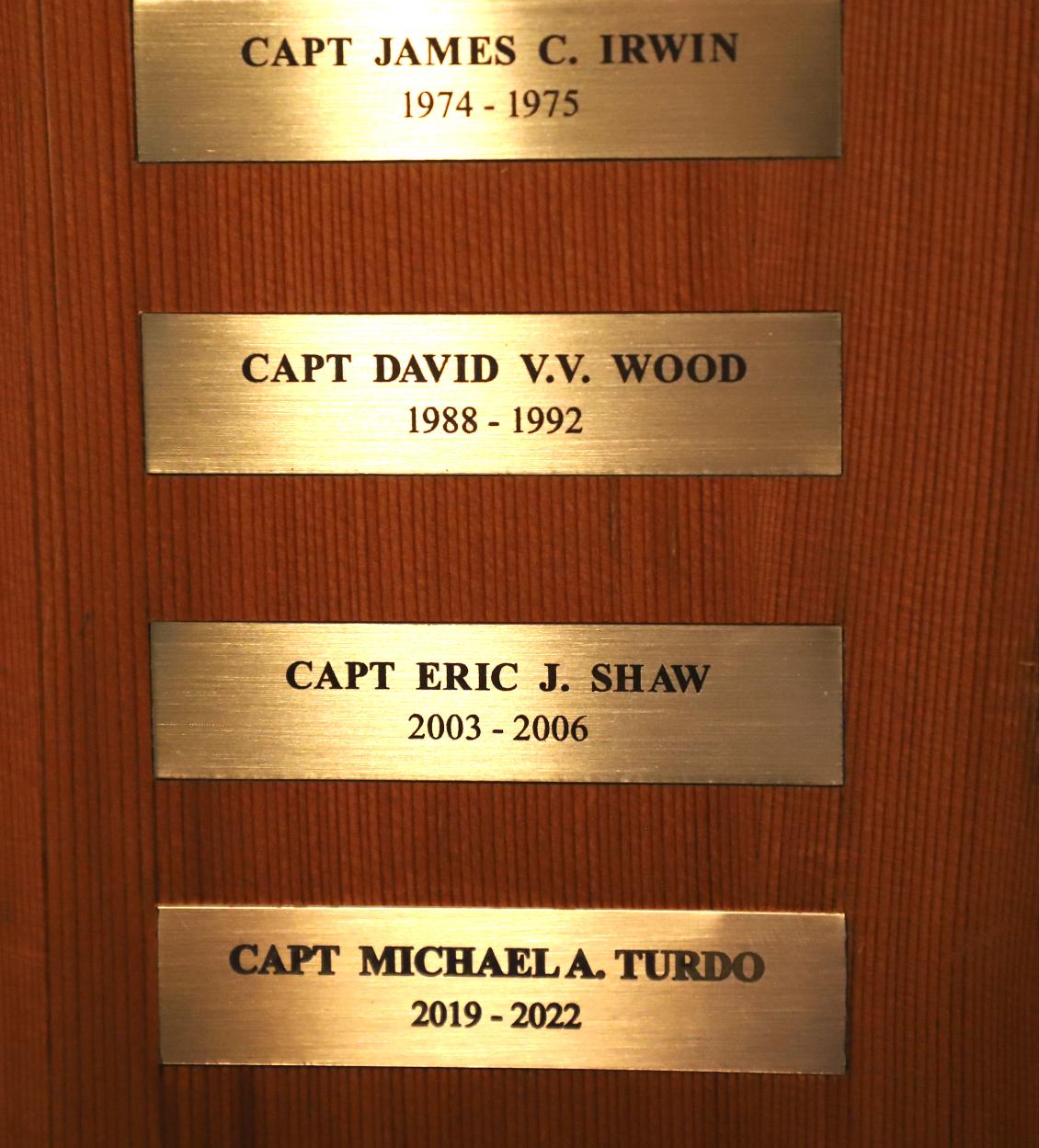
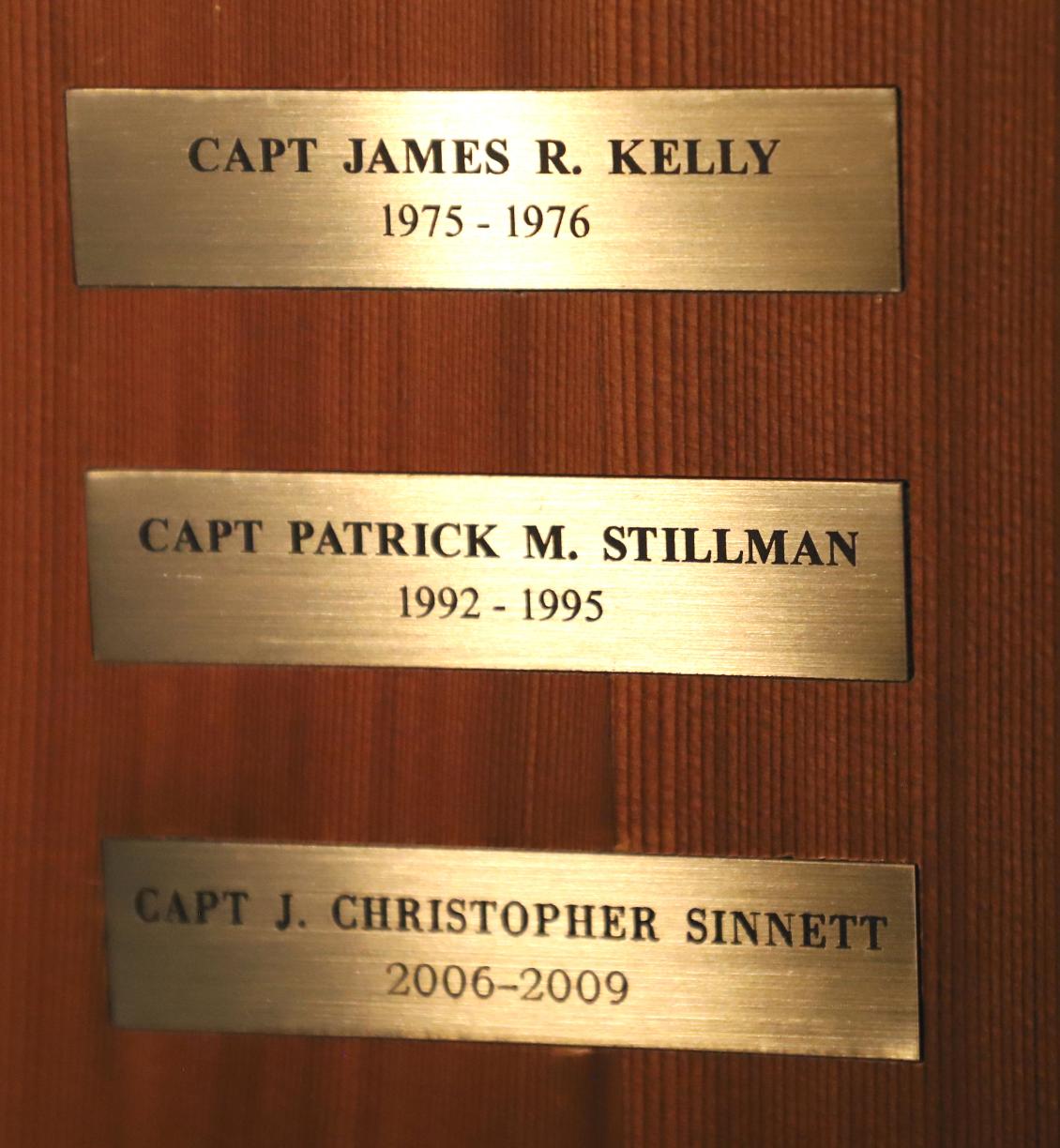
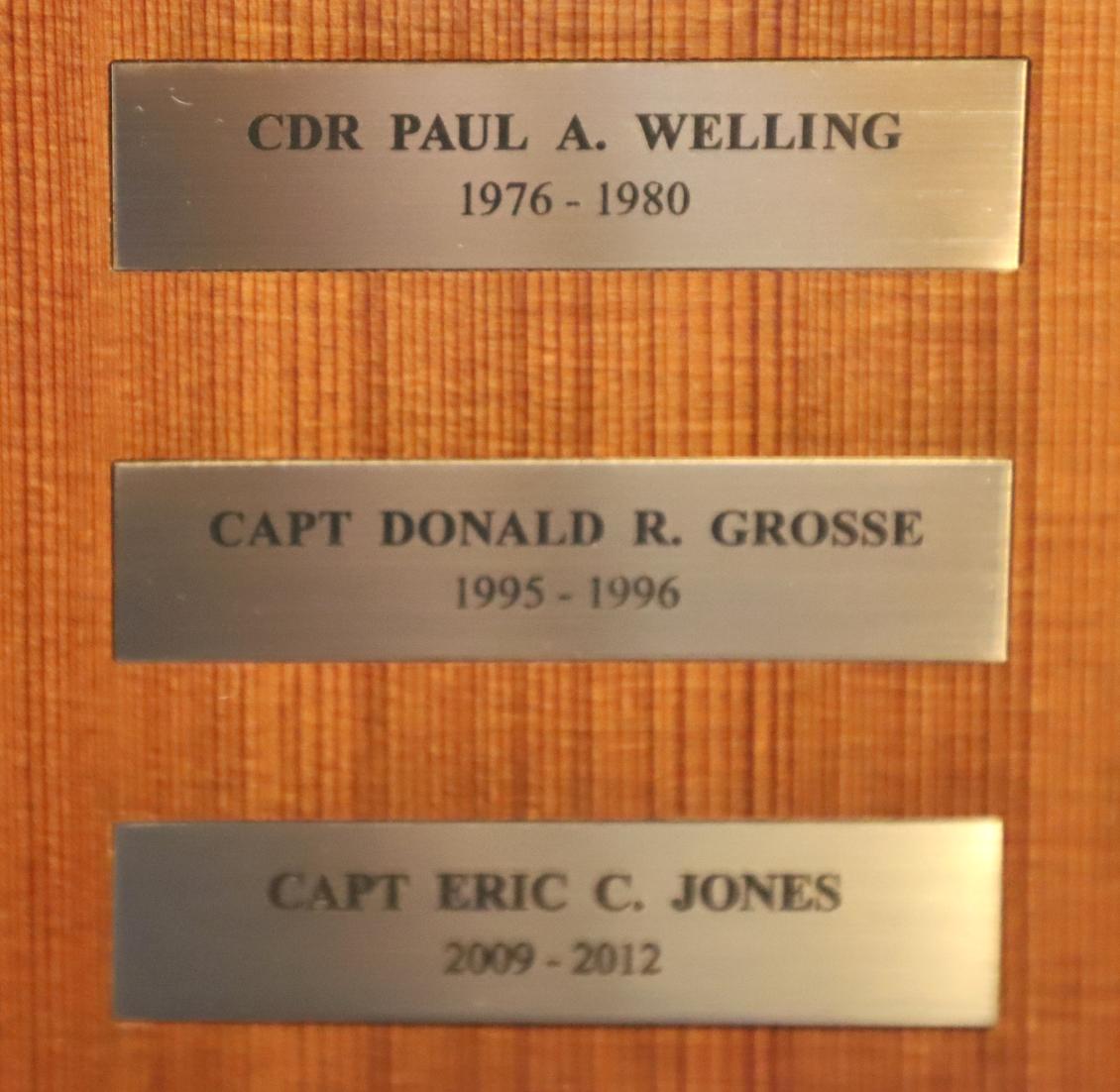
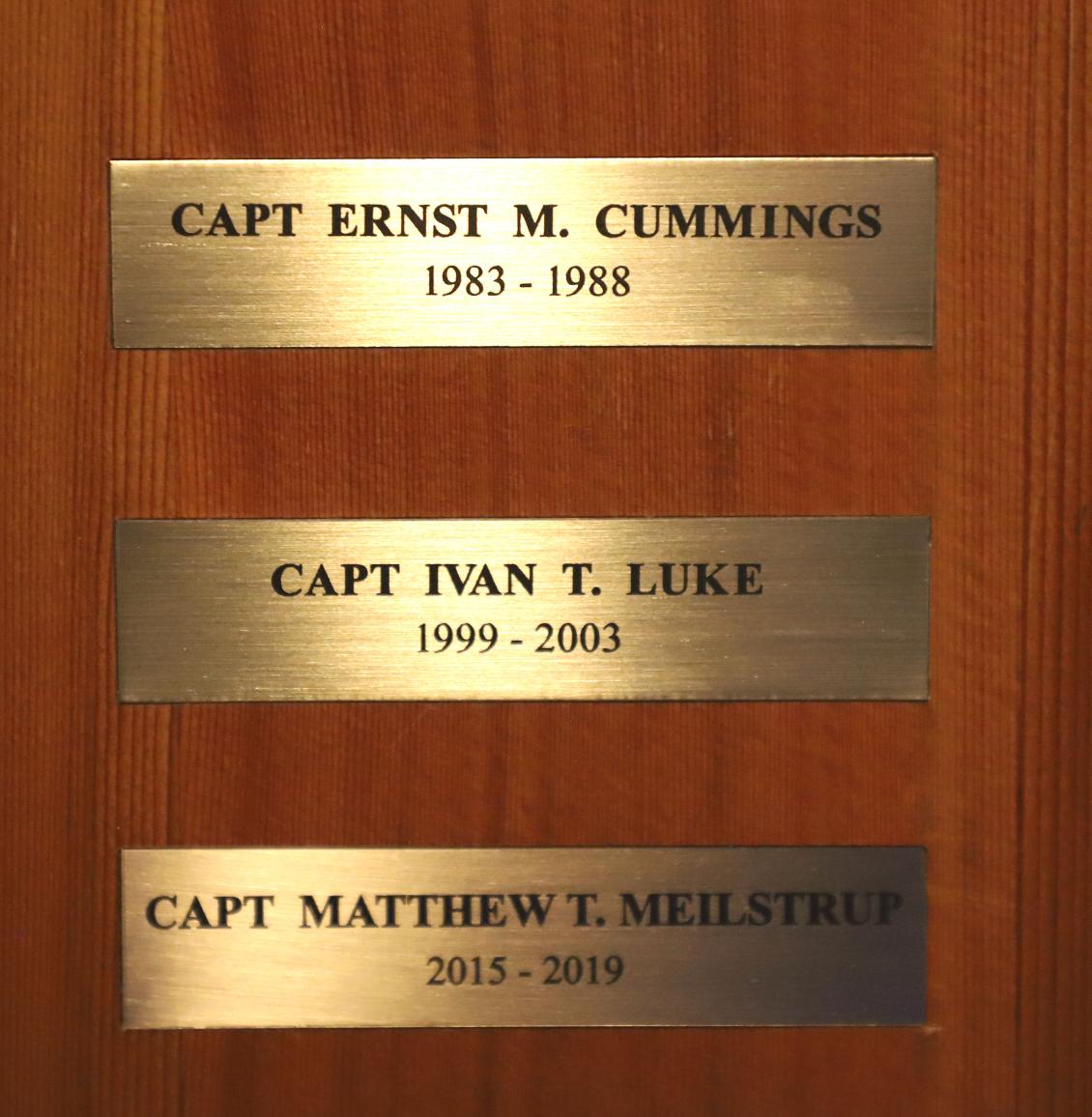
U.S. Coast Guard Barque Eagle Captain - Miles Imlay
1947 - 1948

RADM Miles Hopkins Imlay, United States Coast Guard, was born on 22 November 1902, at Washington, D.C. He received his early education in the E.V. Brown School, Chevy Chase, Maryland, and was graduated from Central High School in Washington in 1921. After attending Brown University for one and one-half years, he entered the Coast Guard Academy, New London, Connecticut, as a cadet in May, 1923.
He graduated and was commissioned Ensign on 15 May 1926, he was subsequently promoted in rank as follows: Lieutenant (Junior Grade) - 15 May 1928; Lieutenant - 15 May 1930; Lieutenant Commander – 1 March 1938; Commander – 1 December 1942; and Captain, 15 August 1943. After his retirement on 1 May 1956 he received a “tombstone” promotion 11 May 1956 on the retired list to Rear Admiral “by reason of combat commendation.”
His first assignment upon graduation from the Coast Guard Academy was aboard the cutter Seminole, from which he was detached in July, 1926 to serve on the Coast Guard destroyer Henley. While still assigned to the Henley, he performed temporary duty on the CG destroyer Argus, and at Section Base 9, New York City. During the latter assignment he designed and supervised the building of three small bore rifle ranges for the New York Division and later was commended for efficiency shown in performance of duty connected with this work.
From November, 1928 to early 1930, he was attached to the USS Ericsson, and during that time was designated Coast Guard observer at Navy Target Practice at Guantanamo Bay, Cuba, in 1929. In March, 1930, he was assigned to line duty aboard the cutter Mendota, and from September of that year until May, 1933, served at the Coast Guard Academy as an instructor and assistant football coast. While at the Academy, he participated in two cadet practice cruises, on the cutter Mendota during the summer of 1931, and on the cutter Saranac in 1932.
His next assignment was aboard the cutter Tallapossa in Alaskan waters, as navigator, executive officer and then as commanding officer. He was detached in October, 1936 to take command of the cutter Nemesis. Then-LCDR Imlay returned to the Academy in June, 1938, to assume his former post, and was additionally assigned duty as instructor in physics and seamanship. He was placed in temporary command of the cutter Galatea during the 1939 cadet cruise, and served as commander of the 30-day practice squadron during the training cruise of 1940. In October, 1941, he was designated head of the seamanship department at the Academy.

Miles Hopkins Imlay
DATE OF BIRTH: November 22, 1902
PLACE OF BIRTH:
Washington, D. C.
HOME OF RECORD:
Chevy Chase, Maryland
Miles Imlay graduated from the U.S. Coast Guard Academy, Class of 1926. He retired as a U.S. Coast Guard Rear Admiral in 1956.
AWARDS BY DATE OF ACTION:1 of 3

Silver Star
AWARDED FOR ACTIONS
DURING World War II
Service: Coast Guard
Rank: Captain
Division: Assault Group
GENERAL ORDERS:
Bureau of Naval Personnel Information Bulletin No. 335 (February 1945)
CITATION:
The President of the United States of America takes pleasure in presenting the Silver Star to Captain Miles Hopkins Imlay, United States Coast Guard, for conspicuous gallantry as Deputy Commander of an Assault Group participating in the initial invasion on the coast of France, on 6 June 1944. Undaunted by heavy enemy fire, Captain Imlay courageously took station close to the shore on the early morning of D-Day and, throughout the most bitter period of the fighting, coolly and promptly made spot decisions on the reorganization, grouping and dispatching of craft to the beach, subsequently relieving the Task Group Commander of his duties when he withdrew his transport from the assault area. Immediately thereafter, he was placed in charge of operations afloat as assistant to the Naval Officer in Charge of one of the beaches and, discharging the duties of this responsibility with distinctive professional ability, contributed essentially to the rapid clearing of the backlog of ships.
U.S. Coast Guard Barque Eagle Captain - Carl B Olsen
1949 - 1950
Carl Baker Olsen was born on May 24, 1904, at Fort Collins, Colorado, the son of Peter and Lena Olsen of Penn Yan, N.Y. He was graduated from Penn Yan Academy and entered the U.S. Coast Guard Academy, New London, Conn., as a Cadet on April 25, 1925.
Graduated and commissioned Ensign on May 15, 1928, he subsequently advanced in rank to Lieutenant (jg), May 15, 1930; Lieutenant, May 15, 1932; Lieut. Commander, May 25, 1941; Commander, September 15, 1942; Captain, March 24, 1945; Rear Admiral, September 1, 1958. Retired July 1, 1963.
He served his earliest assignments as communications officer and gunnery officer aboard the Cutters Gresham and Mendota of the New York Division, and the Cutter Seminole of the Great Lakes Division. From March to May 1930 he was assigned to the Fifth Coast Guard District Office at Norfolk, Va., then served for six months as gunnery officer aboard the Destroyer Ericsson stationed at New London. From December 1930 until June 1931, he was commanding officer of the patrol boat CG-214 of the New York Division.
He was next assigned to aviation flight training at the Pensacola Naval Air Station, Florida, and was designated a Coast Guard aviator in December 1932. His first assignment as an aviator was to the Coast Guard Air Station at Miami which he later commanded from June 1934 to January 1936. During this period he performed an errand of mercy for which he was awarded the Distinguished Flying Cross in May 1938. His citation describes the circumstances in part as follows:
In recognition of your outstanding action (on 24 June 1935) in flying an airplane of the Coast Guard approximately 300 miles to sea under the difficulties of darkness, storm and rough seas, for the purpose of contacting the U.S. Army Transport Republic and removing and transporting to a hospital on shore an officer of the Army who was critically ill.
From January 1936 to July 1939, he served as Operations Officer in the Aviation Division at Coast Guard Headquarters, Washington, D.C. He spent the next three years in study, first at the Post Graduate School, U.S. Naval Academy, Annapolis, Md., then at the California Institute of Technology where he earned a Master's Degree in Aeronautical Engineering.
In July 1942 of World War II he assumed command of the Coast Guard Air Station at St. Petersburg, Fla. He remained here until February 1944 when he was assigned as Search and Rescue Liaison Officer on the staff of the Commander, South Pacific. In December 1944 he returned to the United States and was stationed at Coast Guard Headquarters as Assistant Chief, Search and Rescue Division until December 1945, then as Chief, Aviation Division until July 1946.
Transferred to the Coast Guard Academy he served as commandant of the Cadets until August 1950. As such he also commanded the Academy training bark Eagle on the Cadet Practice Squadron summer cruises of 1949 and 1950. After the latter cruise he returned to Coast Guard Headquarters to become Chief, Aviation Division.
In August 1954, he was transferred to New York City where he served as Operations and Air Officer of the Eastern Coast Guard Area, and in October 1957 became Deputy Eastern Area Commander.
In July 1958 he assumed the duties of Deputy Western Area Commander with offices in San Francisco.
On August 4, 1958, the President nominated him (Captain Olsen then) to the grade of permanent Rear Admiral. The Senate confirmed the appointment, with rank made effective September 1, 1958.
On September 8, 1958, Rear Admiral Olsen became Commander, 8th Coast Guard District, New Orleans, (relieving Rear Admiral Joseph A. Kerrins, USCG). He remained at that post until his retirement on July 1, 1963, after thirty years of commissioned service in the Coast Guard.
Rear Admiral Olsen's World War II campaign and service medals include the Asiatic-Pacific Area, American Defense Service, American Area, and World War II Victory. He also received the National Defense Service Medal (for serving on active duty during the period between June 27, 1950 and July 27, 1954 - Korean War).
He is a member of the Institute of Aeronautical Sciences, Sigma XI Society, and the Coast Guard Alumni Association.
U.S. Coast Guard Barque Eagle Captain - Carl G Bowman
1950 - 1954
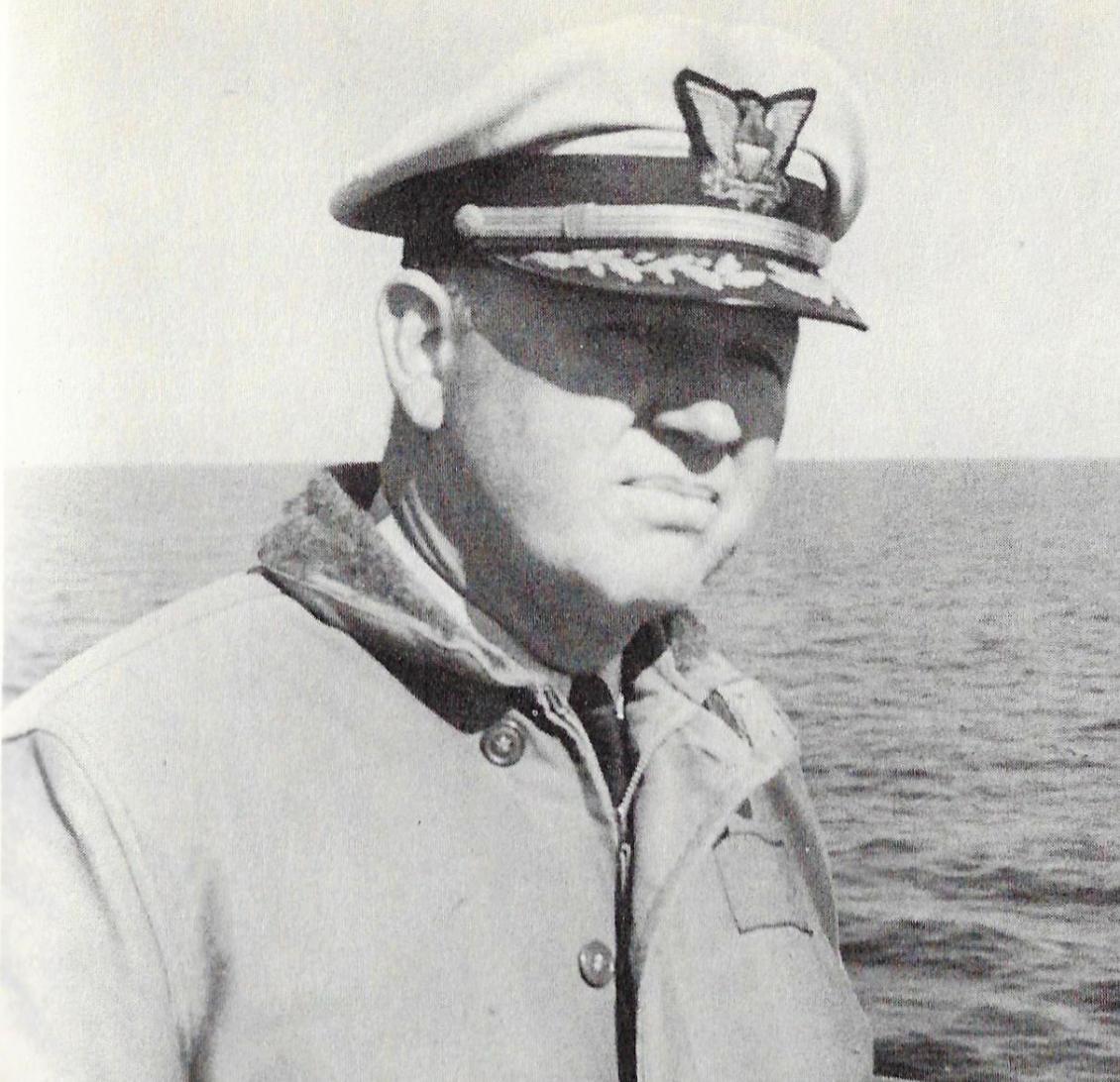
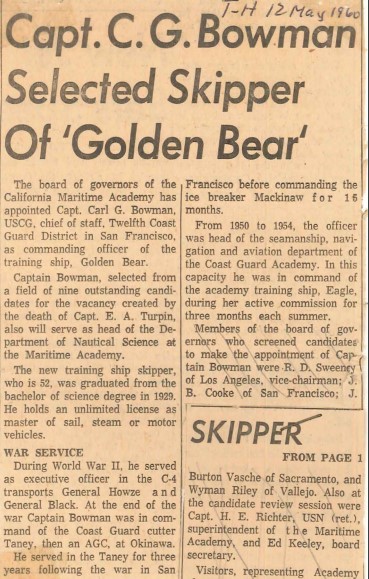
U.S. Coast Guard Barque Eagle Captain - Karl O.A. Zittel
1954 - 1958

CAPT KarlZittel's Legacy
In 1993, Captain Karl Zittel, USCG (ret), '32, established the Captain Karl Zittel Athletic Hall of Fame endowment to provide a perpetual source of income for the support of the U. S. Coast Guard Academy Athletic Hall of Fame Program. He was recognized as the Distinguished Philanthropist for this gesture in 1994 by the Alumni Association. Captain Zittel passed away on April 8, 1998. In his will, he designated that an additional, unrestricted endowment be established to benefit the general education purposes of the Academy. These two endowments have grown and have a combined value today in excess of $346,900 ensuring the continuity of the Alumni Awards and Hall of Fame program, as well as, educational support to the Dean of Academics.
At the July 2008 meeting of the Alumni Association’s Board of Directors, the board voted unanimously to change the name of the endowment supporting this event to the Captain Karl Zittel Athletic Hall of Fame and Alumni Awards Endowment. This endowment provides a perpetual source of income to fund the plaques and medallions being presented to our award recipients and associated dinner expenses for all honorees including the Wall of Gallantry.
Captain Karl Zittel, Class of 1932, had been inducted into the Athletic Hall of Fame in 1988. The 1932 Tide Rips described Captain Zittel, “as an athlete, the most versatile the Corps has seen in many years.... a mighty bellow on the football field ... a tower of strength on the basketball court, a martinet on the drill field.” He was the Captain of the Football Team that finished 3-2 and 1 in 1931 and was the starting center for two years on the basketball team. Many of our more senior alumni will remember him as a former Head of the Academy’s Department of Professional Studies, Commanding Officer of EAGLE, and sea storyteller extraordinaire.
Captain Zittel was extremely proud of our Academy and the tradition of excellence that has always been a part of a Coast Guard Academy education. We believe he would be most pleased to know that his original gift has grown in such a way that it now recognizes not just past athletic achievements, but heroic service to our country, as well as, commitment and service to our Academy in a number of different ways. We at the Alumni Association will always be grateful for Captain Zittel’s outstanding generosity.
U.S. Coast Guard Barque Eagle Captain - William B Ellis
1959
William Bromfield Ellis was born in Albany, Georgie, on January 26, 1914. After graduating from Stamford High School in Connecticut, he entered the U.S. Coast Guard Academy, New London, Conn., with an appointment as cadet on August 3, 1932, and was graduated with a B.S. Degree and commissioned an Ensign on June 8, 1936. While a cadet, he served as a Company Commander, manager of the football squad, and as editor of the cadet year book, "Tide Rips".
After leaving the Academy, he served in an engineering capacity on board the Coast Guard Cutters Champlain and Pontchartrain, and as gunnery officer on board the Cutter Mohawk in the North Atlantic.
At the outbreak of World War II, he was serving as navigator on board the Cutter Haida with the defense forces in the Aleutian Islands, Alaska. That was followed by a stint as Assistant Captain-of-the-Port at Ketchikan from February 1942 to February 1943.
After completing training with LST Flotilla 8 at Curtis Bay, Md., and at the Submarine Chaser Training Center at Miami in August 1943, he commanded the destroyer USS Pettit of Escort Division 20 which was engaged at the time in escorting convoys of ships to the British Isles. In 1945 he commended Escort Division 20 - with the destroyer USS Marchand (DE-249) as his flagship - in both European and Pacific areas. He was awarded the Bronze Star Medal for his service in the European Theatre of operations.
Following the war he was stationed as Planning and Control Officer at the Seventh Coast Guard District office in Miami from January 1946 to January 1947. At that time he was ordered to the Coast Guard Academy where he served first as Navigation instructor and then as Head of the Department of Gunnery, Law and Military Science. Between July 1951 and September 1952, he commanded the destroyer Lowe (WDE-425) in the Pacific.
During the next four years he was Assistant Chief, Enlisted Personnel Division at Coast Guard Headquarters, Washington, D.C. He then commanded the cutter Coos Bay (WAVP-376) on ocean station patrol in the North Atlantic out of Portland, Me., from August 1956 to May 1958.
Returning to the Coast Guard Academy, he served first as Head of the Aviation, Seamanship and Navigation Department for two years, and then as Commandant of the Cadets from July 1960 to June 1962. A second tour of duty at Coast Guard Headquarters saw him first as Chief, Officer Personnel Division for one year, followed by two years of duty as Deputy Chief, Office of Personnel. From there he assumed the post as Chief of Staff, Third Coast Guard District, New York, in June 1965.
By nomination of the President on January 29, 1966, and confirmation of the Senate, he was appointed Rear Admiral to rank from July 1, 1966. In this capacity he assumed the flag ranking post of Chief, Officer of Personnel at Coast Guard Headquarters, Washington, D.C.
In June 1968, he assumed the post of Commander, First Coast Guard District, Boston, Mass., boundaries of which include the New England States and Coast Guard activities in the North Atlantic. On Sept. 18, 1970, he was presented the Legion of Merit for exceptionally meritorious conduct in the performance of duty in that post. Among other accomplishments he was cited for his remarkable talents as Chairman of the Field Coordinating Group which were vital to the Transportation Department and the Coast Guard in generating a spirit of cooperation. He also was cited for showing great versatility and breadth of perspective while fulfilling an extremely sensitive assignment as Interim Regional Secretarial Representative. RADM Ellis was praised for his personal dedication, exemplary tact and diplomacy.
In addition to the Bronze Star Medal, RADM Ellis has the following World War II campaign service medals and ribbons: American Defense with combat star; American Area, European-African-Middle Eastern Area; Asiatic-Pacific; World War II Victory. He also has the Expert Rifle Shot and Expert Pistol Shot Medals, as well as the Legion of Merit.
Following is a resume of his appointments in rank: Ensign, June 8, 1936; Lieutenant (jg), June 8, 1939; Lieutenant, August 1, 1941; Lieut. Commander, December 8, 1942; Commander, August 14, 1945; (temporary appointments revoked after WWII) reappointed Lieut. Commander, July 1, 1946; Commander, November 1, 1948; Captain, July 1, 1957; Rear Admiral, July 1, 1966.
RADM Ellis is married to the former Dorcas A. of Stamford, conn. They have one son, Richard A., and a daughter Lynne, the wife of J.D. Partin, a Coast Guard commissioned officer.
RADM Ellis is the son of the late Mr. Arthur H. Ellis and Mrs. Florence B. Ellis.
RADM Ellis has held memberships on the Executive Board of the Pequot Council for Boy Scouts; and on the Governing Board of the U.S. Power Squadron. He is also a member of the National Geographic Society, and of the Coast Guard Alumni Association.
U.S. Coast Guard Barque Eagle Captain - Chester I Steele
1960 - 1961
Chester I. Steele was born December 12, 1913, in Rehobeth, Delaware. He completed his primary schooling in Lewes, Del., and in June of 1932, was graduated from Neptune High School in Ashbury Park, N.J. He attended the Peddie School in Hightstown, N.J., for one year before being appointed a cadet at the Coast Guard Academy on August 4, 1933.
During his four years of cadetship, he served as a company commander, and manager of the Academy’s boxing team in his First Class year, as editor of “Running Light”, the cadet handbook, in his Second Class year, and as a cheer leader in his Third and Fourth Class years. He was graduated and commissioned an Ensign from the Academy on September 20, 1937.
His first assignment as a Coast Guard officer was as a watch officer aboard the Coast Guard Cutter Campbell, operating out of Staten Island, N.Y. In September of 1938, he ended his duty aboard the Campbell, and was transferred to the Cutter Pontchartrain, then operating out of Station Island, where he was assigned as the ship’s navigator. In November of 1939, Ensign Steele won a letter of appreciation from the Commandant of the Coast Guard citing his effective rescue by surfboat of three survivors of a sunken barge at sea. A short time later, he left the Pontchartrain for duty as Commissary Officer at the Maritime Service Training Station at Hoffman Island, N.Y.
A little over a year later, the now Lieutenant Steele was assigned as a Commanding Officer of the three-masted schooner Vema, a training vessel employed by the Maritime Service Training Station. After nearly 10 months in command of the Vema, he was reassigned to the Coast Guard Academy as an instructor in seamanship.
From September 1, 1943 to September 1, 1944, Lieutenant Commander Steele performed duties at various stations along the Atlantic coast in connection with the outfitting and commissioning of patrol frigate class cutters. In June of 1944, he assumed command of the frigate Abilene, engaged in duty in the North Atlantic.
In October of 1945, he was transferred to the staff of the District Coast Guard Officer under the Commander, 4th Naval District in Philadelphia, Pa., where he served for two years as the Personnel Officer. In October of 1947, he began a one-year tour of duty as Commanding Officer of the Coast Guard Cutter Jonquil, operating out of Portsmouth, Va.
He received transfer orders in September of 1948 for duty on the staff of the Commander, Fifth Coast Guard District, with offices then located in Norfolk, Va. He was first assigned as the Assistant Chief, Aids to Navigation Section there, then on October of 1949, he became Chief of the Section.
In March of 1951, and now promoted to the rank of Commander, he returned to the Coast Guard Academy for duty as a seamanship instructor. During the summers, Commander Steele served as the Executive Officer aboard the Coast Guard Cutter Eagle, the Academy’s training Bark.
His next assignment took him back to New York, and a tour of duty as Commanding Officer of the Coast Guard Cutter Rockaway, a 311-foot ocean station vessel.
On July 1, 1955, he was assigned as a student to the U.S. Naval War College, located at the Navy Base in Newport, R.I. One year later, and after completing his course of studies, Commander Steele was placed on the Staff of the War College, where he served for two years.
On July 1, 1958, he became the Commanding Officer of the Coast Guard Cutter Mendota, a 255-foot ocean station vessel operating out of Wilmington, N.C. Now promoted to the rank of Captain, he received another letter of appreciation, this one for the efficient and coordinated rescue of two downed Air Force pilots in the Atlantic Ocean. The citation specifically pointed out the fact that the Mendota recovered the pilots within three hours after receiving the initial distress call, and the distance between the cutter and the pilots were considerable.
In June of 1960, he returned once more in New London and the Coast Guard Academy, where he was assigned as Head, Seamanship Section. In this assignment, he also served as Commanding Officer of the Cutter Eagle during her summer cadet cruises. In July of 1961, he was assigned as Head, Professional Studies Department and less than a year later, was reassigned at the Academy to the post of Commandant of Cadets.
In June 1964, Captain Steele was ordered to London, England, where he assumed duty as Commander, Coast Guard Activities Europe. This command was established to exercise operational, technical and administrative control over Coast Guard Merchant Marine Details in Europe and three Loran-C chains covering the Mediterranean Sea, the Norwegian Sea and the North Atlantic Ocean. These chains are composed of Loran-C stations located in Newfoundland, Greenland, Iceland, Jan Mayen Island, Norway, Faeroes, Germany, Spain, Italy, Libya, Greece and Turkey.
In June 1966, he assumed duty as Commander, Second Coast Guard District, with headquarters in St. Louis, Mo., a post which carries with it the rank of flag officer. He was appointed Rear Admiral to rank from July 1, 1966.
He is entitled to ear the following medals and decoration: American Defense Service Medal (with star); American Theatre; European Theatre; World War II Victory Medal; National Defense Service Medal; and the Expert Rifleman and Expert Pistol Shot Medals.
He has been promoted in rank as follows: Ensign on September 20, 1937; Lieutenant (junior grad) September 20, 1940; Lieutenant on May 20, 1941; Lieutenant Commander on May 15, 1943; Commander on February 1, 1950; and Captain on July 1, 1959. Nominated to the rank of Rear Admiral on May 2, 1966, Rear Admiral, July 1, 1966.
U.S. Coast Guard Barque Eagle Captain - Robert A Schulz
1961 - 1962
U.S. Coast Guard Barque Eagle Captain - Williaqm K Earle
1963 - 1965
U.S. Coast Guard Barque Eagle Captain - Pater A Morrill
1965
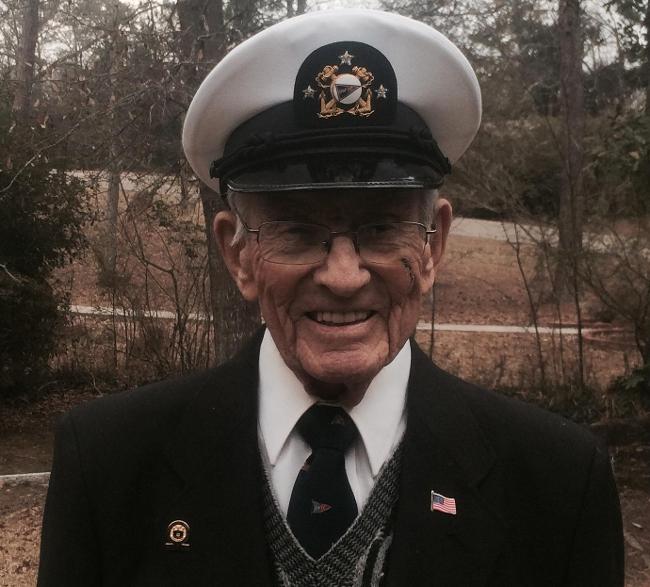
Capt. Peter A. Morrill USCG (ret)
March 18, 1930--April 30, 2015
Passed away peacefully at the age of 85, Thursday, April 30, 2015 at Allegiance Hospital in Jackson, Michigan with his family by his side. He was born in Winchester, MA on March 18, 1930, the son of Arthur G. and Kathleen M. (Shehan) Morrill.
Pete graduated from the U.S. Coast Guard Academy in 1952, a Commissioned Officer and enjoyed an exciting career. More notably, in 1965, he served as Commanding Officer of the US Coast Guard Cutter Eagle, the only active commissioned "Sailing Vessel", a 295-ft bargue, three masted square rigger, used for training future Officers of the United States Coast Guard. He sailed her from New London, Conn. to the west coast of California with a crew of cadets and retold those exciting events for the next 50 years. Pete then served as Executive Officer (1966-1967) on board the USCGC Westwind (WAGB-281), a Wind-class of icebreaker, which crossed the Arctic Circle 22 June 1966 at 52N 03W and crossed the Antarctic Circle 3 March 1967 at 67S 36W. His next assignment took him to Washington, DC where he worked on the NOAA Data Buoy Program and planned to move to the Mississippi Test Facility in 1969 but plans were delayed due to the arrival of Hurricane Camille. In 1970, Pete became the first Director of the NOAA Data Buoy Program at the MTF. He was a pioneer in the development and deployment of "ocean platforms" that provide early warning predictions for hurricanes, storms and other adverse conditions.
Pete fell in love with the people, climate, and activities of the Mississippi Gulf Coast. He was a member and Past-Commodore of the Bay-Waveland Yacht Club and a member of the Gulfport Yacht Club. He first lived in Waveland, and in 1972 purchased the home of Babby and Jane Benvenutti located at 108 Leopold St., Bay St. Louis, MS, while at the Bay-Waveland Yacht Club, sight unseen. That same year, as Captain of the Sailing Team, Pete led BWYC to victory, winning the Lipton Cup Sailing Regatta. Pete loved sailing and judging races and was a Senior US Sailing - GYA National Judge. His Leadership and Guidance will serve as a benchmark for all that follow. He attained the rank of Captain in the US Coast Guard in 1974 and was assigned to the USCGC Westwind (WAGB-281), only this time as her Commanding Officer. Home ported in Milwaukee, WI. , Pete took the Westwind back to the Arctic Circle via St. John's Newfoundland, then to Thule, Greenland for summer ice breakouts. He also performed winter breakouts of the Great Lakes. Capt. Pete retired from the US Coast Guard on May 1, 1976 and returned to Bay St, Louis, MS. and lived in Cedar Point on Leopold St. until 2005, when Hurricane Katrina removed any existence of his sight unseen purchase some 33 yrs. earlier. With only a few personal possession and his 2 cats, Pete relocated to Diamondhead, MS and continued to enjoy his retired life on the Mississippi Gulf Coast.
U.S. Coast Guard Barque Eagle Captain - Archibald B How
1965 - 1967
U.S. Coast Guard Barque Eagle Captain - Harold A Paulsen
1968 - 1971
U.S. Coast Guard Barque Eagle Captain - Edward D Cassidy (April 16, 1925 - November 23, 2011)
1974 - 1975
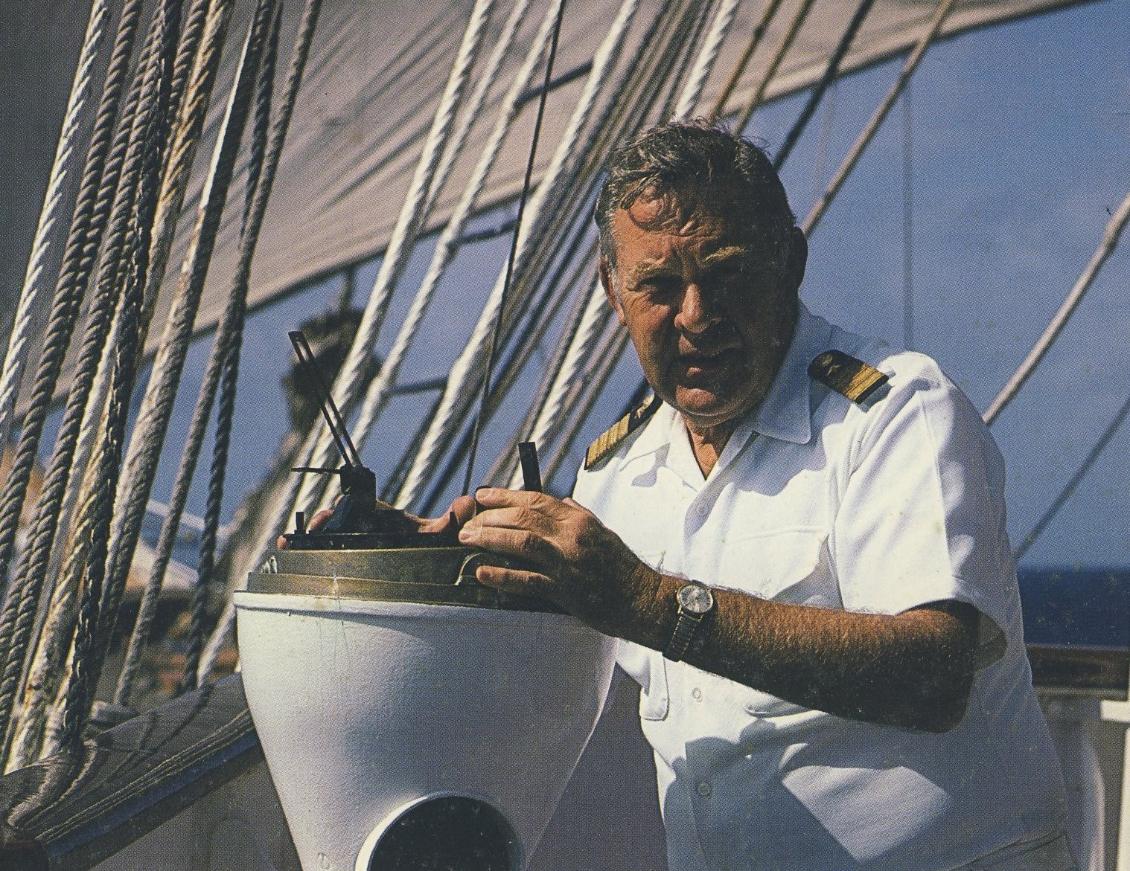
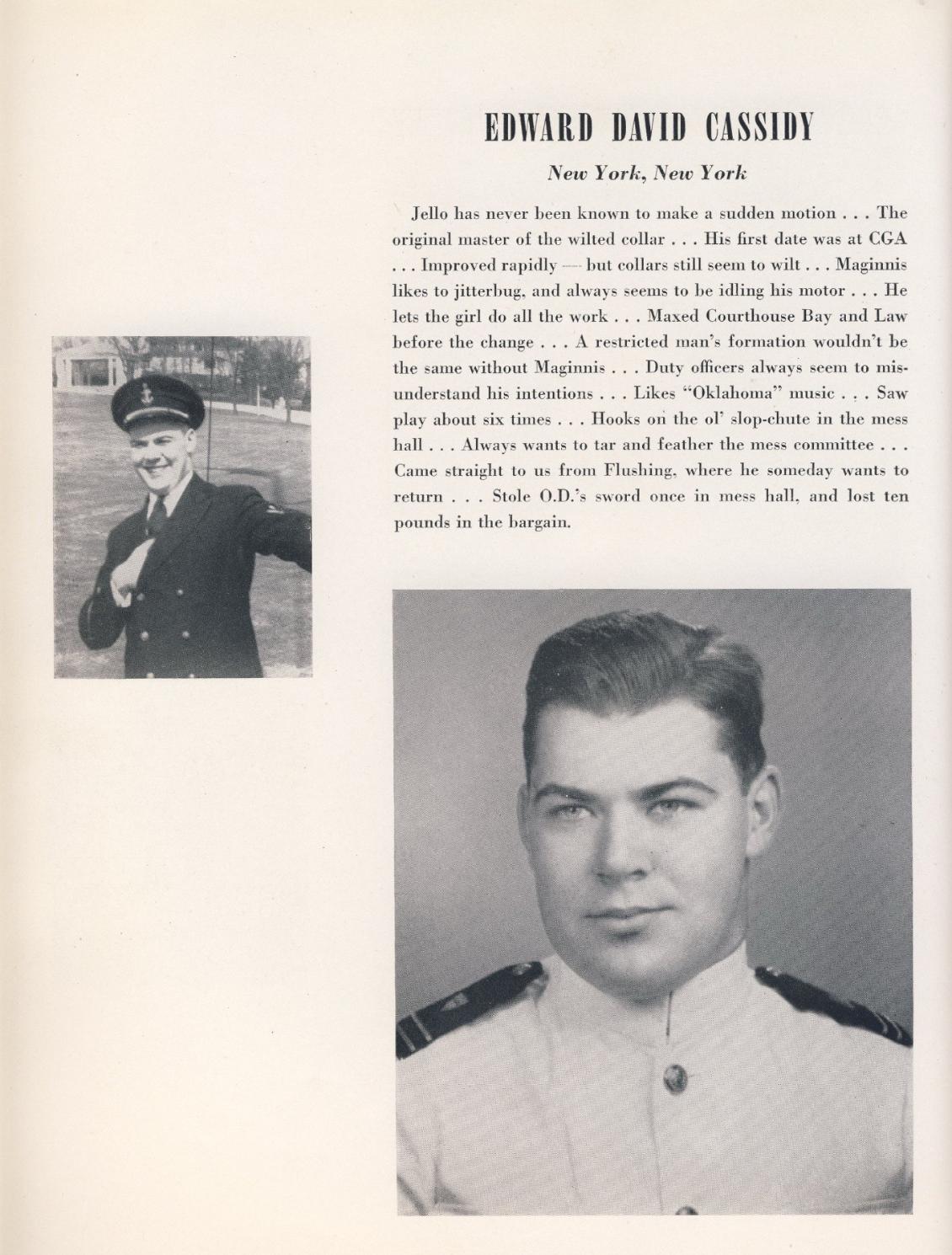
Edward Cassidy was a graduate of the United States Coast Guard Academy.
Captain Cassidy served in the USCG for 30 years and was Commanding Officer of the USCGA training barque Eagle.
After retirement he served as Commandant of Cadets at Massachusetts Maritime Academy. In 1981 he became Master of the Four Masted Barque S.Y. Sea Cloud of Grand Cayman. He was a father figure to many who sailed under his commands.
U.S. Coast Guard Barque Eagle Captain - James C Irwin
1974 - 1975

Vice Admiral James C. Irwin became Vice Commandant of the U.S. Coast Guard May 16, 1986, after serving two years as Fifth Coast Guard District Commander in Portsmouth, Va. He was selected for Rear Admiral in 1982 and was Chief, Office of Reserve at Coast Guard Headquarters in Washington, from 1982 to 1984.
Prior to his Headquarters tour, VADM Irwin was Chief of Staff, Eighth Coast Guard District in New Orleans, in 1980; Commandant of Cadets at the U.S. Coast Guard Academy in New London, Conn., in 1977 and Chief, Operations Division at Second Coast Guard District Office, St. Louis, in 1975. He took command of the U.S. Coast Guard cadet training barque Eagle in May 1974; was Executive Officer of the U.S. Coast Guard Training Center at Governors Island, N.Y., in January 1974, and was Commanding Officer of the Coast Guard Cutter Spencer in 1972.
VADM Irwin served with the Coast Guard Mission to the United Nations in New York as an advisor for Political and Security Affairs from 1969 to 1972. He was stationed at Coast Guard Headquarters as Aide to the Secretary of Transportation in 1966, and in the Administrative Management Division from June to November 1966. From 1958 to 1962, he served as Company Officer and Admiral's Aide at the U.S. Coast Guard Academy.
He commanded the Coast Guard Cutter Yeaton based at New London, Conn., from 1962 to 1965; was Executive Officer onboard the Coast Guard Cutter Alert at Morrow Bay, Calif., from 1957 to 1958 and was assigned to the Coast Guard Cutter Taney at Alameda, Calif., from 1953 to 1955. He was also Commanding Officer of the USCG LORAN Station at Talampulan in the Philippine Islands, from 1956 to 1957.
VADM Irwin was graduated from the U.S. Coast Guard Academy with a Bachelor of Science degree in 1953 after attending Drake University, Des Moines, Iowa. He was graduated from the U.S. Naval War College in Newport, R.I., in 1966 and earned a Master of Science degree in international affairs from George Washington University.
He was awarded two Legion of Merit Medals, four Meritorious Service Medals, two Coast Guard Commendation Medals and several lesser decorations.
U.S. Coast Guard Barque Eagle Captain - James R Kelly
1975 - 1976
U.S. Coast Guard Barque Eagle Captain - Paul A Welling
1976 - 1980
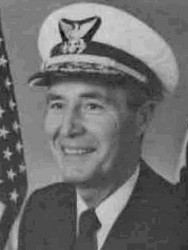
Paul A. Welling
Paul Welling graduated from the U.S. Coast Guard Academy, New London, Connecticut, Class of 1959. He retired as a U.S. Coast Guard Vice Admiral in 1994.
AWARDS BY DATE OF ACTION:1 of 2
Legion of Merit
AWARDED FOR ACTIONS
DURING Peace Time Awards
Service: Coast Guard
Rank: Vice Admiral
GENERAL ORDERS:
CITATION:
(Citation Needed) - SYNOPSIS: Vice Admiral Paul A. Welling, United States Coast Guard, was awarded the Legion of Merit for exceptionally meritorious conduct in the performance of outstanding services to the Government of the United States.
U.S. Coast Guard Barque Eagle Captain - Martin J Moynihan
1980 - 1983
U.S. Coast Guard Barque Eagle Captain - Ernst M Cummings
1983 - 1988
Ernest Cummings, Lt. (jg) - A decorated veteran of the Vietnam War, Executive Director Ernst
Cummings is a retired captain of the United States Coast Guard who commanded six of the eight cutters on which he served. Captain Cummings graduated from the Coast Guard Academy, where he was responsible for sail training, and from 1983 to 1988 he commanded America's tall ship, the Eagle (the vessel's longest reign for a CO), on which he recently chaired a Coast Guard Commission on Safety.
Also a graduate of the Naval War College and the Army War College, he most recently served as the Cove's Chief Operating Officer for six years.
Captain Cummings is a member of the Historic Naval Ships Association and the New York Yacht Club, and serves on the board of the Bristol County Convention and Visitors Bureau. Captain Cummings' awards include the Legion of Merit, the Bronze Star with Combat "V" for valor, the Defense MeritoriousService Medal, and three Coast Guard Achievement Medals.
U.S. Coast Guard Barque Eagle Captain - David V.V. Wood
1988 - 1992

A native of Washington, DC, Captain Wood attended Amherst College where he graduated cum laude in 1960 with a major in English. He was commissioned in the Coast Guard in 1962, and served thirty-seven years on active duty in various assignments, retiring in 1992 with the rank of Captain. He served on six different cutters during his career, for a combined total of more than 15 years’ sea duty, commanding three of them, including the training barque EAGLE from 1988-1992. He taught English at the USCG Academy (1969-73), and obtained a Master of Education degree from Boston University through an off-duty education program; he also successfully sat for a USCG merchant marine license as Master, Auxiliary Sail Vessels, Any Gross Tons, Oceans. Captain Wood is a distinguished graduate of the Naval War College (1982), where he subsequently served as Coast Guard Advisor to the President from 1985-88.
During the more than twenty years since his retirement from active duty, Captain Wood has sailed commercially, taught ship handling to naval officers at Marine Safety International’s simulator facility in Middletown, RI, taught various USCG-approved courses at Northeast Maritime Institute, served as Chairman and Executive Director of the American Sail Training Association (now Tall Ships America), and worked as an independent maritime consultant. He is also the author of articles on sea education and sail training, and served on the board of the UK-based Sail Training International, where he chaired the Class A Tall Ships Forum..
U.S. Coast Guard Barque Eagle Captain - Patrick M Stillman
1992 - 1995
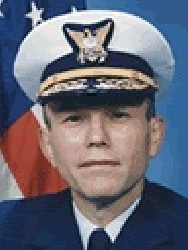
Rear Admiral Patrick Stillman became the first Program Executive Officer of the Integrated Deepwater System Acquisition in April of 2001. He is responsible for the leadership of the largest recapitalization effort in the history of the Coast Guard. This innovative acquisition program will develop, acquired, and sustain an affordable integrated system of surface, air, command and control and logistics assets that serve America’s maritime safety and security needs. Prior to his present assignment and upon promotion to Rear Admiral in November of 1999 he served as the first Assistant Commandant for Governmental and Public Affairs.
RADM Stillman’s career includes numerous afloat assignments. He served as Operations Officer, Executive Officer and later commanded the Coast Guard Barque Eagle. He was the first commanding officer of the 270-foot medium endurance cutter Forward. Early in this career, he commanded the cutter Cape Cross. He served in the cutter Valiant as a deck watch officer and as Executive Officer of the cutter Vigorous.
His ashore assignments include tours as Atlantic Area Chief of Staff, Chief of Operations and Chief of Operational Forces. As Commandant of Cadets at the U.S. Coast Guard Academy he was responsible for the professional and character development of the Corps of Cadets. He also served as an instructor in the Humanities Department at the Academy. His early staff assignments in Washington, D.C. include Aide to the Commandant and a tour as a liaison officer to the House of Representatives.
RADM Stillman graduated from the Coast Guard Academy in 1972 with a Bachelor of Science degree. He holds a Master of Arts degree from Wesleyan University at Middletown, CT., and a Master of Public Administration from George Washington University. He is a 1992 graduate of the Foreign Service Institute’s Senior Seminar. In 1993 he was named a Distinguished Graduate of the George Washington University School of Business and Public Management. His personal awards include two Legions of Merit, three Meritorious Service Medals, two Coast Guard Commendation medals and two Coast Guard Achievement medals.
Coast Guard Distinguished Service Medal
AWARDED FOR ACTIONS
DURING Global War on Terror
Service: Coast Guard
CITATION:
(Citation Needed) - SYNOPSIS: Rear Admiral Patrick M. Stillman, United States Coast Guard, was awarded the Coast Guard Distinguished Service Medal for exceptionally meritorious and distinguished service in a position of great responsibility to the Government of the United States, culminating as the first Program Executive Officer of the Integrated Deepwater System Acquisition from April 2001 to April 2006. By his keen vision, tireless dedication and unwavering focus he led the Deepwater Program. The singularly distinctive accomplishments of Vice Admiral Stillman culminate a long and distinguished career in the service of his country and his dedicated contributions reflect the highest credit upon himself and the United States Coast Guard.
U.S. Coast Guard Barque Eagle Captain - Robert J Papp Jr.
1996 - 1999
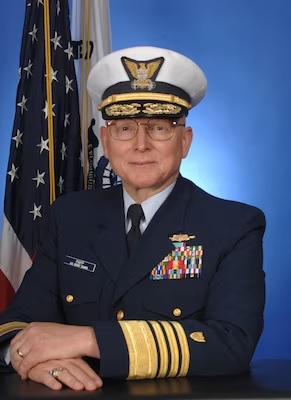
Admiral Robert J. Papp, Jr. assumed the duties of the 24th Commandant of the U.S. Coast Guard on May 25, 2010. He leads the largest component of the Department of Homeland Security (DHS), comprised of 42,000 active duties, 8,200 Reserve, 8,000 civilian and 31,000 volunteer.
The Coast Guard is "Semper Paratus" – Always Ready – to use its distinctive blend of military, humanitarian and law enforcement to save lives and property at sea, protect and maintain our ports and maritime transportation system, secure our borders, respond to natural disasters, protect our marine environment and defend our Nation. The Coast Guard is also America’s oldest continuous seagoing service and one of the Nation’s five armed services. We trace our history back to August 4th, 1790, when the first Congress authorized the construction of ten vessels to enforce tariff and trade laws and to prevent smuggling. Our people are committed to the Coast Guard’s core values of Honor, Respect and Devotion to Duty.
As a flag officer, Admiral Papp served as Commander, Coast Guard Atlantic Area, where he was operational commander for all U.S. Coast Guard missions within the eastern half of the world and provided support to the Department of Defense; as the Chief of Staff of the Coast Guard and Co Officer of Coast Guard Headquarters; as Commander, Ninth Coast Guard District, with responsibilities for Coast Guard missions on the Great Lakes and Northern Border; and as Director of Reserve and Training where he was responsible for managing and supporting 13,000 Coast Guard Ready Reserve and all Coast Guard Training Centers.
Admiral Papp has served in six Coast Guard Cutters, commanding four of them: RED BEECH, PFORWARD, and the training barque EAGLE. He also served as commander of a task unit during Operation ABLE MANNER off the coast of Haiti in 1994, enforcing United Nations Sanctions. Additionally, his task unit augmented U.S. Naval Forces during Operation UPHOLD DEMOCRACY.
Admiral Papp has been a particularly energetic steward of the history of the Coast Guard, including his service as captain of the Coast Guard’s sail training vessel and “America’s Tall Ship,” USCG Barque EAGLE, in the late 1990s. In 1998 then-Captain Papp was recognized for his tenure as commanding officer of EAGLE with the NMHS Distinguished Service Award. Admiral Papp has been an extremely vocal advocate of the value of teaching Coast Guard history, and has pledged his support for a Coast Guard museum in New London, Connecticut, the home of the Coast Guard Academy.
A graduate of the United States Coast Guard Academy, Robert J. Papp, Jr. also holds a Master of Arts degree in National Security and Strategic Studies from the United States Naval War College in Newport, RI, and a Master of Science degree in Management from Salve Regina College, Newport, RI. The National Maritime Historical Society is proud to have counted him as a long-time active member, and recognized him with its Bravo Zulu Award in 2011.
He is a 1975 graduate of the United States Coast Guard Academy. Additionally, he holds a Master of A in National Security and Strategic Studies from the United States Naval War College and a Master of Science in Management from Salve Regina College.
Admiral Papp is the 13th Gold Ancient Mariner of the Coast Guard. The Gold Ancient Mariner is an honorary position held by an officer with over ten years of cumulative sea duty who has held the qualification as a Cutterman longer than any other officer.
U.S. Coast Guard Barque Eagle Captain - Ivan T Luke
1999 - 2003
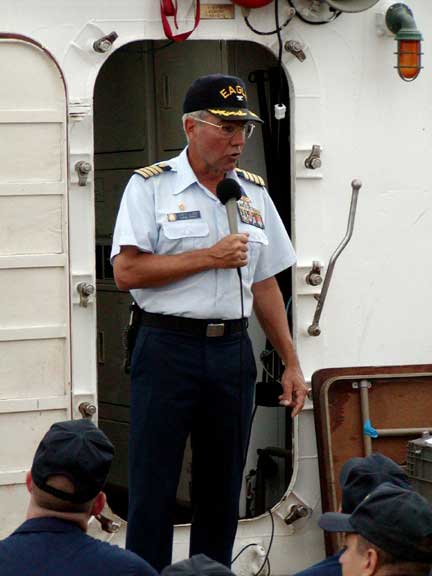
Captain Ivan T Luke
U.S. Coast Guard Jun 1976 - Oct 2005 · 29 yrs 5 mos
Served more than 29 years in the Coast Guard, 14 of those at sea including 7 years in command. Sea time included four years in command of the sail training vessel EAGLE and previous command assignments aboard the Cutters VALIANT and EVERGREEN. Also served as Executive Officer of the Cutter SENECA, Operations Officer aboard the Cutters TANEY and EAGLE and an initial Deck Watch Officer Tour aboard the Cutter DEPENDABLE.
Assignments ashore included: Instructor of Nautical Science at the Coast Guard Academy; School Chief of the Coast Guard’s Prospective Commanding Officer (PCO) School; Assistant Law Enforcement Branch Chief at the Seventh Coast Guard District in Miami, and service as a fellow in the Chief of Naval Operations Strategic Studies Group.
U.S. Coast Guard Barque Eagle Captain - Eric Shaw
2003 - 2006
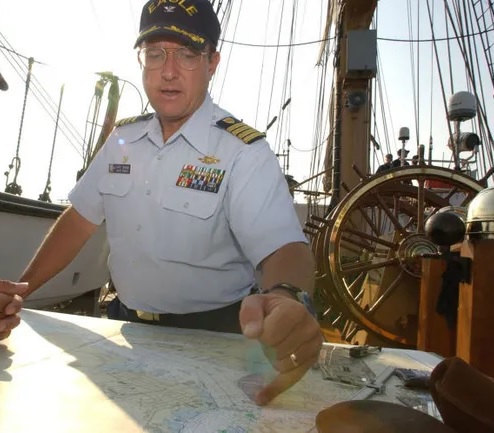
Dr. Eric John Shaw, Captain, USCG (ret.) 58, of Newport, RI, died unexpectedly at home Tuesday, March 29, 2016.
Professor Shaw joined the faculty of the Naval War College in Newport following his retirement from the U.S. Coast Guard as Captain of "America's Tall Ship" Coast Guard Barque EAGLE. His Coast Guard career also included assignments as Commanding Officer of the CGCutter LEGARE and Executive Officer of CGC NORTHLAND in Portsmouth, VA; operations officer of CGC SENECA in Boston, MA; and combat information officer of CGC JARVIS, Honolulu, HI.
Dr. Shaw earned his Bachelor of Science degree from Virginia Tech University, holds a Master of Science degree in Operations Research from the University of New Haven, CT, a Master of Arts degree In National Security and Strategic Studies from the U.S. Naval War College, and a Ph.D. in Humanities from Salve Regina University. His Ph.D. dissertation was titled "Controls on Developing Technology: U.S. Commercial Air Transportation during the Interwar Period, 1919-1939." In December, he completed the coursework for a Master of Arts degree in History from the University of Rhode Island, and was studying for his comprehensive exams this spring semester.
Professor Shaw has also been serving as adjunct professor in the graduate program at Salve Regina University and is a guest lecturer for several community and educational organizations.
Eric's positive spirit, humor, knack for great sea stories, and intellectual curiosity was respected and enjoyed by many in his community. He has been serving on the Board of Directors of Tall Ships America and of the Potter League for Animals, volunteering at Newport Hospital with Squall, his golden retriever, in the pet therapy program; recording local osprey activity for the Audubon Society of RI, and volunteering at the Foster Parrots Rescue and Adoption Sanctuary in Hope Valley, RI. Eric's musical talent was enjoyed by good friends singing Christmas carols around the piano each December, and by neighbors listening to songs played on the concertina from his back yard.
U.S. Coast Guard Barque Eagle Captain - Joseph C Sinnett
2006 - 2009
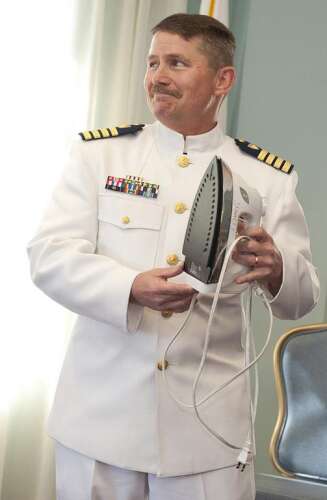
Captain Joseph C Sinnett grew up in Irmo, spending nearly all his free-time sailing on Lake Murray."Every minute I had was devoted to working on the boat, or in the boat, trying to become a better sailor,” he said. Even then, he dreamed of working for the Coast Guard. His father Joe even remembers the day his son declared his goal to run the Eagle. "He told (his friend) he was gonna join the Coast Guard, and he was gonna sail (the Eagle),” said Joe Sinnett. “It's taken awhile, but that's what's happening. "A week from Saturday, it will be official. Chris Sinnett will take command of America's last major military sailboat. He'll spend six months out of each of the next three years at sea. “It's not exciting everyday of your life at sea, but the chance for something very exciting to happen is always right there, a second away." While his official title on board will be Captain of the Eagle, Chris Sinnett's practical reason for being there is as teacher. Many of the crew onboard are cadets from the U.S. Coast Guard, and they're there for one reason: to learn. Said Capt. Sinnett, “We're teaching them how to be followers and to be leaders. We're developing them."After 23 years of earning his stripes, the Eagle is the perfect destination for a man who began his dreams on Lake Murray. The official change of command is a week from Saturday in Newport, Rhode Island. Captain Sinnett will serve on the Eagle for three years.
U.S. Coast Guard Barque Eagle Captain - Eric Jones
2009 - 2012
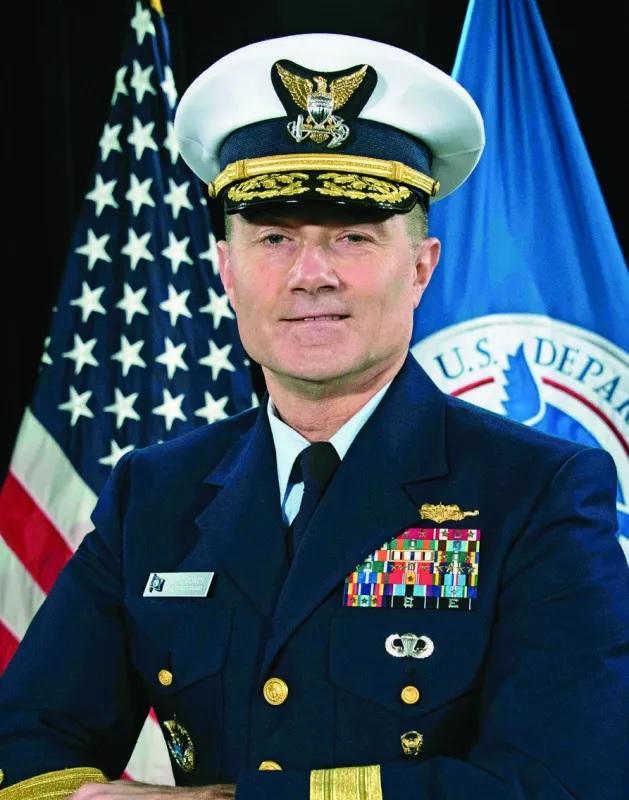
A native of Half Moon Bay, California, Rear Admiral Jones is a 1987 graduate of the United States Coast Guard Academy in New London, Connecticut. He holds a Bachelor of
Science Degree in Marine Engineering from the Coast Guard Academy, a Master of Science in Applied Mathematics and Fluid Dynamics from Brown University, and a Master of Business Administration from the Massachusetts Institute of Technology Sloan Fellows Program in Innovation and Global Leadership.
He is also a graduate of the Naval War College Command and Staff Nonresident Seminar Program and a 2001-2002 Fellow of the Massachusetts Institute of Technology Seminar XXI on Foreign Politics, International Relations, and the National Interest.
Rear Admiral Jones’ assignments ashore include: Mathematics and Leadership Instructor at the U.S. Coast Guard Academy in New London, Connecticut; Workforce and Operations Reviewer, Division of Program Review, Coast Guard Headquarters in Washington, D.C.; Deputy Chief, Office of Budget and Programs, Coast Guard Headquarters; Chief, Division of Program Review, Coast Guard Headquarters; and Deputy Chief, Office of Congressional and Government Affairs, Coast Guard Headquarters. Rear Admiral Jones served as the Assistant Superintendent of the Coast Guard Academy from 2012 to 2014. From 2014 to
2017, he served as the Executive Assistant to the Coast Guard Deputy Commandant for Operations at Coast Guard Headquarters.
His afloat assignments include: First Lieutenant aboard USCGC VENTUROUS (WMEC 625) in Long Beach, California; Commanding Officer and Plankowner of USCGC TYBEE (WPB 1330) in San Diego, California; Navigator and Executive Officer of the Coast Guard’s three-masted sail training Barque USCGC EAGLE (WIX 327) in New London, Connecticut; Executive Officer of USCGC FORWARD (WMEC 911)
in Portsmouth, Virginia; Commanding Officer of USCGC HARRIET LANE (WMEC 903), in Portsmouth, Virginia; and Commanding Officer of USCGC EAGLE (WIX 327) from 2009 until 2012. Rear Admiral Jones holds an unlimited tonnage Master Mariner license for oceangoing vessels, sail and power. Rear Admiral Jones’ personal awards include four Legions of Merit, four Meritorious Service Medals, four Coast Guard Commendation Medals, the Coast Guard Achievement Medal, the Commandant’s Letter of Commendation Ribbon, and various service and unit awards.
U.S. Coast Guard Barque Eagle Captain - Raymond "Wes" Pulver 2012 - 2015
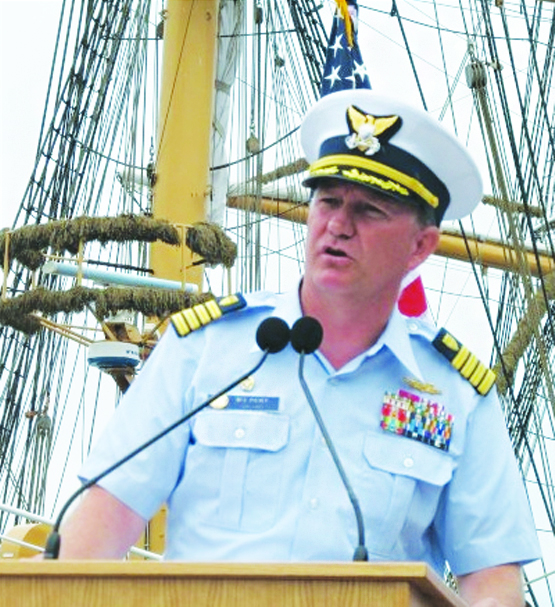
Captain Raymond "Wes" Pulver, a 1987 graduate of the United States Coast Guard Academy, holds a Master of Engineering degree in Operations Research and Industrial Engineering from Cornell University.
For 2010-2015, he was the Coast Guard Chief of Congressional Affairs. From 2012-2015, he
was also the Commanding Officer of the Coast Guard Barque EAGLE. Captain Pulver, who has
had 28 years of distinguished service to the USCG, is honored to now lend his talents to
making the National Coast Guard Museum a reality
U.S. Coast Guard Barque Eagle Captain - Matthew Meilstrup 2015 - 2019
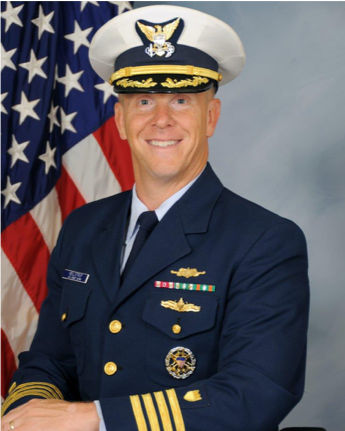
A Mishawaka, Indiana native, Captain Matt Meilstrup graduated from the United States
Coast Guard Academy in 1992 with a Bachelor of Science degree in Marine Science. He holds
masters degrees in International Public Policy from the Paul H. Nitze School of Advanced
International Studies at Johns Hopkins University, Business Administration from Regis
University, and Strategic Studies from the Marine Corps War College.
Upon commissioning, Captain Meilstrup served as a Deck Watch Officer and the Operations
Officer aboard USCGC Gentian, home-ported in Atlantic Beach, North Carolina. Subsequent
afloat assignments include Operations Officer in the U.S. Navy Exchange Program aboard the
USS Sirocco, a Cyclone-class patrol boat in Little Creek, Virginia; Navigator of Eagle from
2001 to 2002; and Executive Officer of USCGC Jarvis (WHEC 725) in Honolulu, Hawaii.
Additionally, he has commanded four cutters: USCGC Point Huron, also based out of Little
Creek; USCGC Sassafras (WLB 401) in Guam; USCGC Sequoia (WLB 215) as a member of
the commissioning crew, also in Guam; and USCGC Confidence (WMEC 619), home-ported
in Port Canaveral, Florida.
Assignments ashore include Company Officer at the U.S. Coast Guard Academy in New
London, Connecticut and Regional Advisor in the Coast Guard Headquarters International
Affairs office. He also served as the Chief of the Homeland Defense Division and Coast Guard
Liaison in the Joint Chiefs of Staff, J3 Directorate for Operations.
Captain Meilstrup’s commendations include a variety of personal, unit, and service awards, as
well as the permanent Cutterman Pin. In 2010, he was selected as the Coast Guard’s Captain
David H. Jarvis Award winner for Inspirational Leadership by the Navy League of the United
States and named an Honorary Chief Petty Officer.
U.S. Coast Guard Barque Eagle Captain - Michael Turdo 2019 - 2022
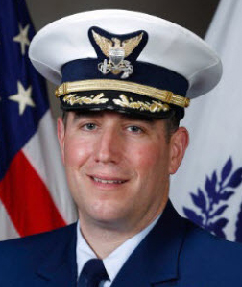
Captain Michael Turdo is a permanent Cutterman with ten years at sea. Prior afloat assignments include Deck Watch Officer USCGC Forward (WMEC 911) in Portsmouth, Virginia; Executive Officer USCGC Monomoy (WPB 1326) in Woods Hole, Massachusetts; Commanding Officer USCGC Baranof (WPB 1318) deployed to the Northern Arabian Gulf in support of Operation Iraqi Freedom; Commanding Officer USCGC Key Biscayne (WPB 1339) in St. Petersburg, Florida; Executive Officer USCGC EAGLE (WIX 327) in New London, Connecticut; Commanding Officer USCGC ESCANABA (WMEC 907) in Boston, Massachusetts.
Previous assignments ashore include: Command Center Duty Officer at Coast Guard Activities New York; Company Officer at the United States Coast Guard Academy; Staff Officer in the Office of Defense Operations, Coast Guard Headquarters; Chief of Professional Maritime Studies at the United States Coast Guard Academy.
CAPT Turdo is a 1997 graduate of the United States Coast Guard Academy where he earned a Bachelor of Science in Government. He also holds a Master of Arts in National Security and Strategic Studies from the Naval War College. He currently resides in East Lyme, Connecticut with his wife, Wendy, and their two daughters.
U.S. Coast Guard Barque EagleCaptain - Jessica Rozzi-Ochs 2022 - Present
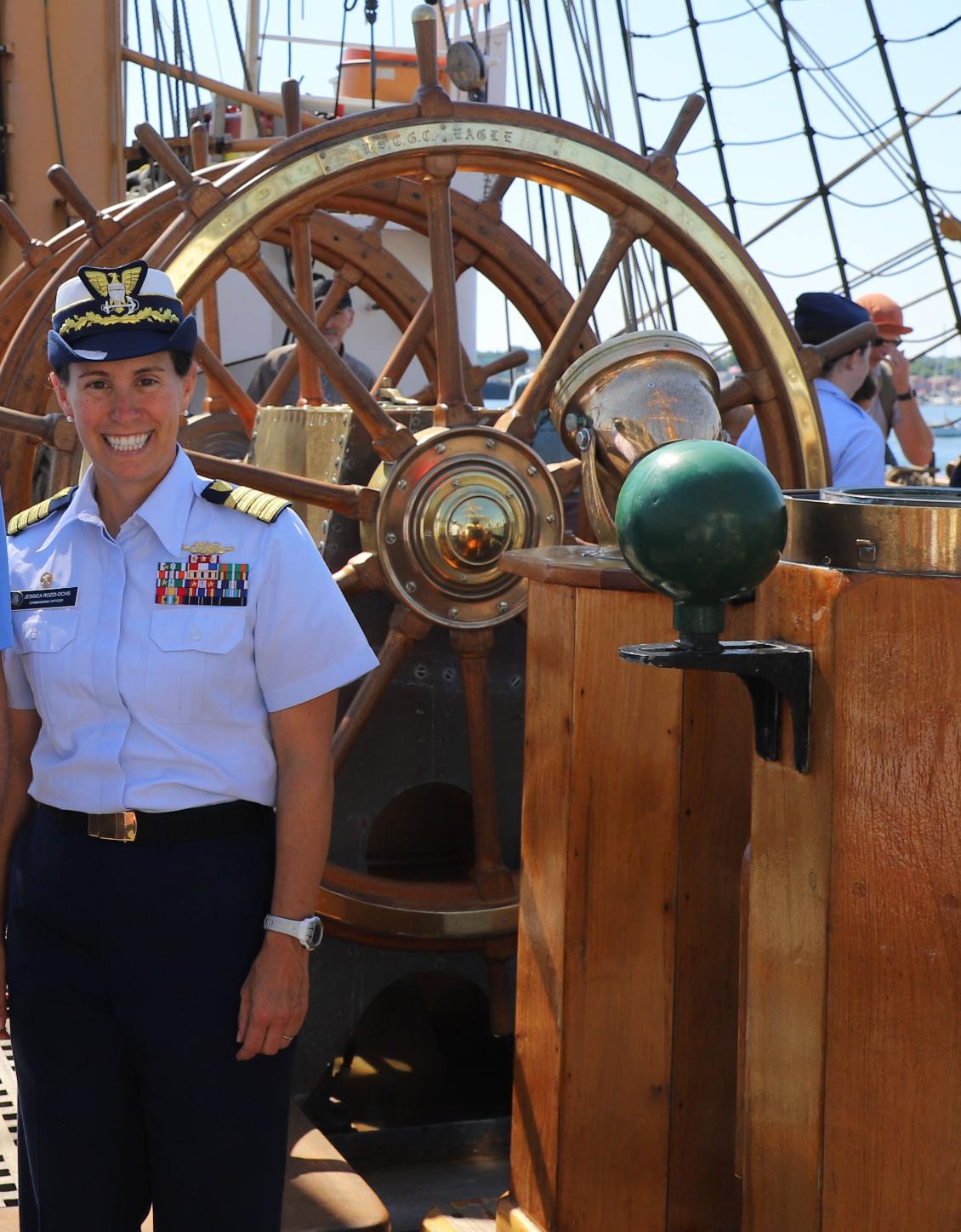
Captain Jessica Rozzi-Ochs graduated from the United States Coast Guard Academy in May of 2000 with a Bachelor of Science Degree in Mechanical Engineering. She earned a Master of Science in Mechanical Engineering from the University of Florida in June 2006. She also holds a Master of Science in National Security and Resource Strategy from the National Defense University, Dwight D. Eisenhower School and is a graduate of the Defense Acquisition University’s Senior Acquisition Course.
Captain Rozzi-Ochs’s other afloat assignments include Executive Officer on USCGC EAGLE, Engineer Officer on USCGC VALIANT, and Student Engineer on USCGC TAHOMA.
Her shore assignments include serving as a Program Reviewer in the Office of Budget of Programs at Coast Guard Headquarters in Washington, D.C., Resource Division Chief in the Office of Naval Engineering at Coast Guard Headquarters in Washington, D.C., Assistant Professor in the Department of Mechanical Engineering at the United States Coast Guard Academy in New London, Connecticut, and Port Engineer at Naval Engineering Support Unit in Miami, Florida.
She most recently served as the Deputy Chief of Congressional Affairs in Washington, D.C., where she advanced Coast Guard strategic budget and legislative priorities by advocating and facilitating interactions with Members of Congress, and advising senior leadership on appropriations, authorizations, and political impacts of policy decisions.
Captain Rozzi-Ochs is a Permanent Cutterman with 7.5 years of sea time. Her personal awards include the Meritorious Service Medal (3), Coast Guard Commendation Medal (2), and Coast Guard Achievement Medal. She is a native of Reading, Pennsylvania and is married to LCDR Andrew Norberg

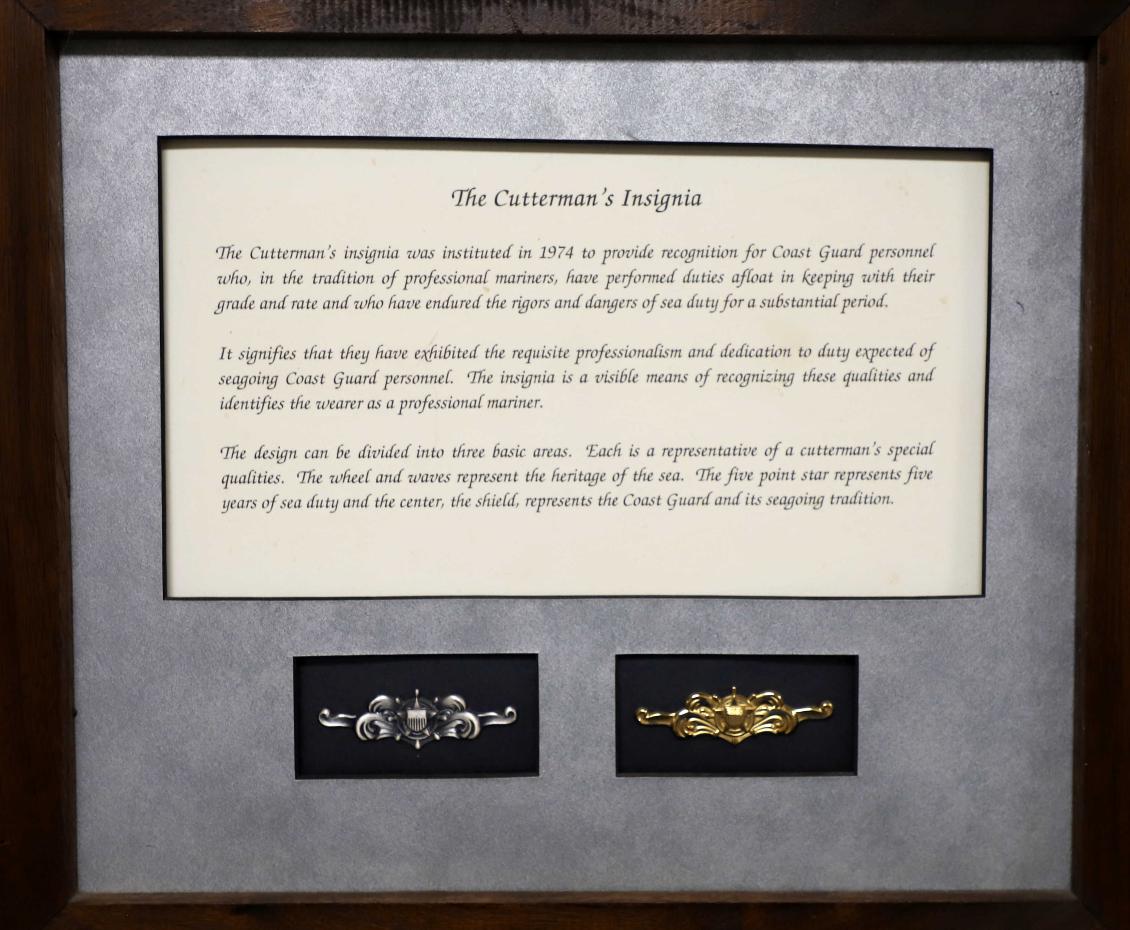

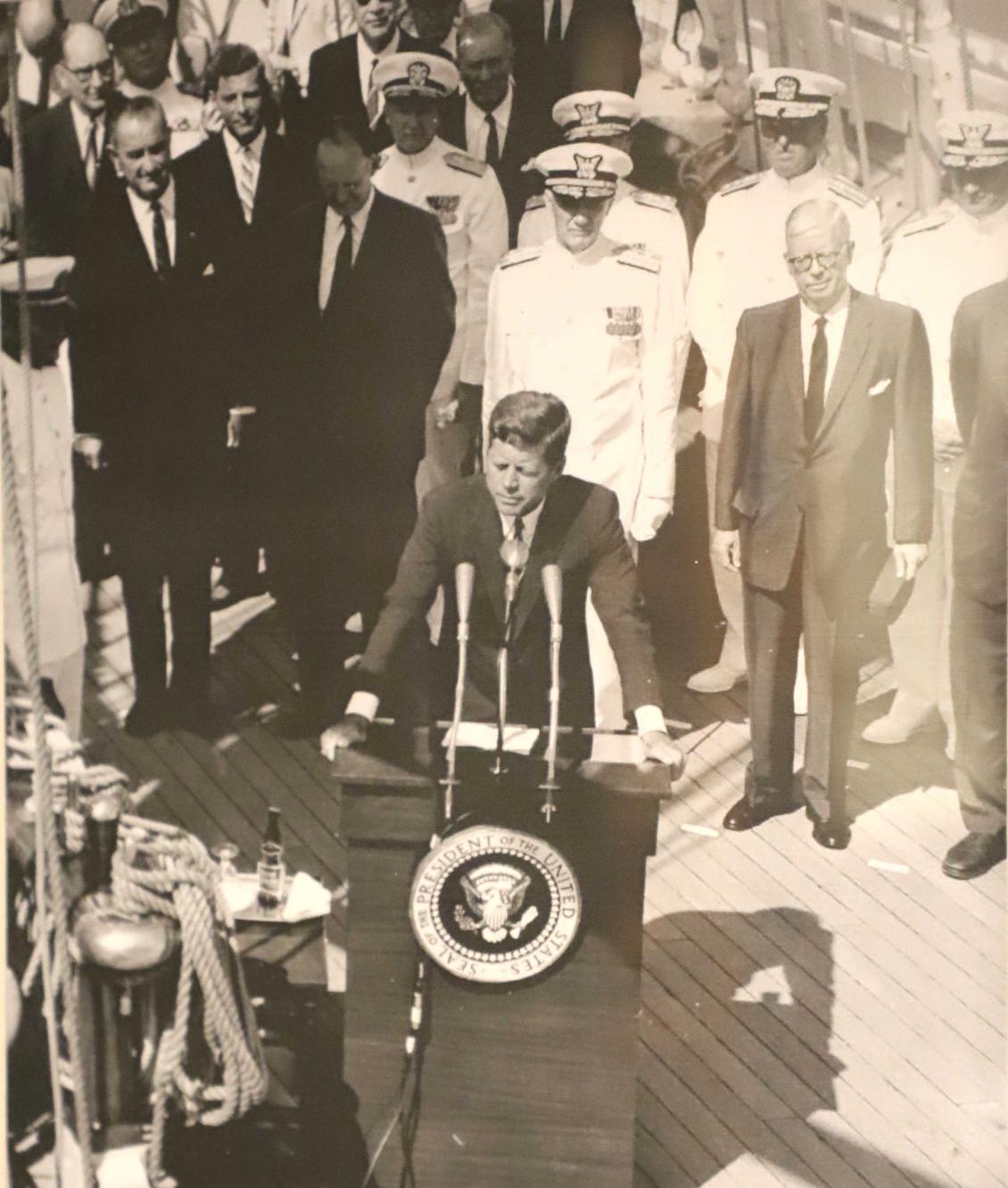

Segelschulschiff Horst Wessel - Germany
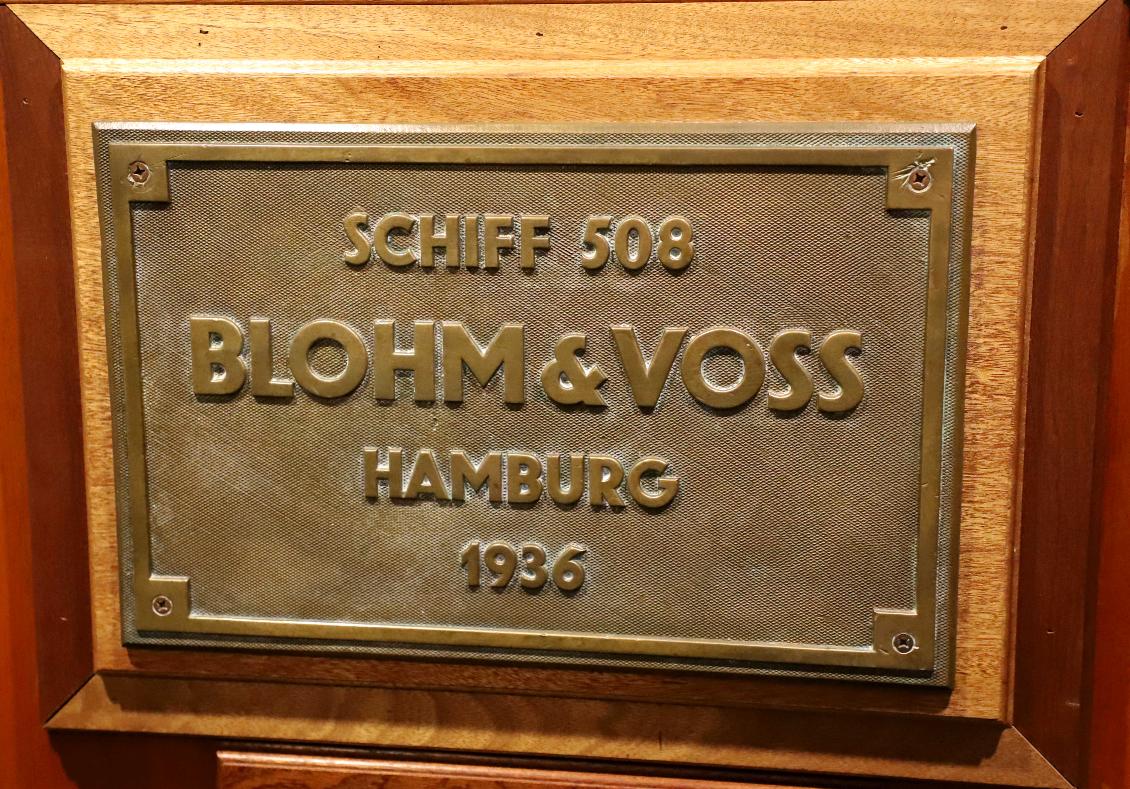
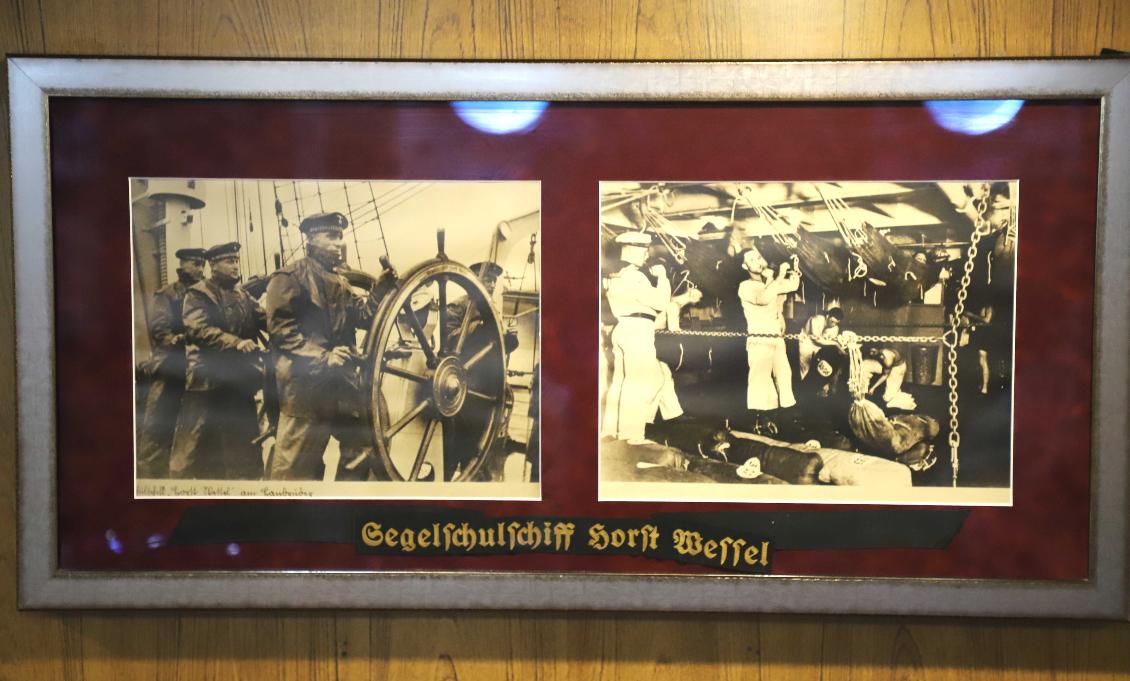
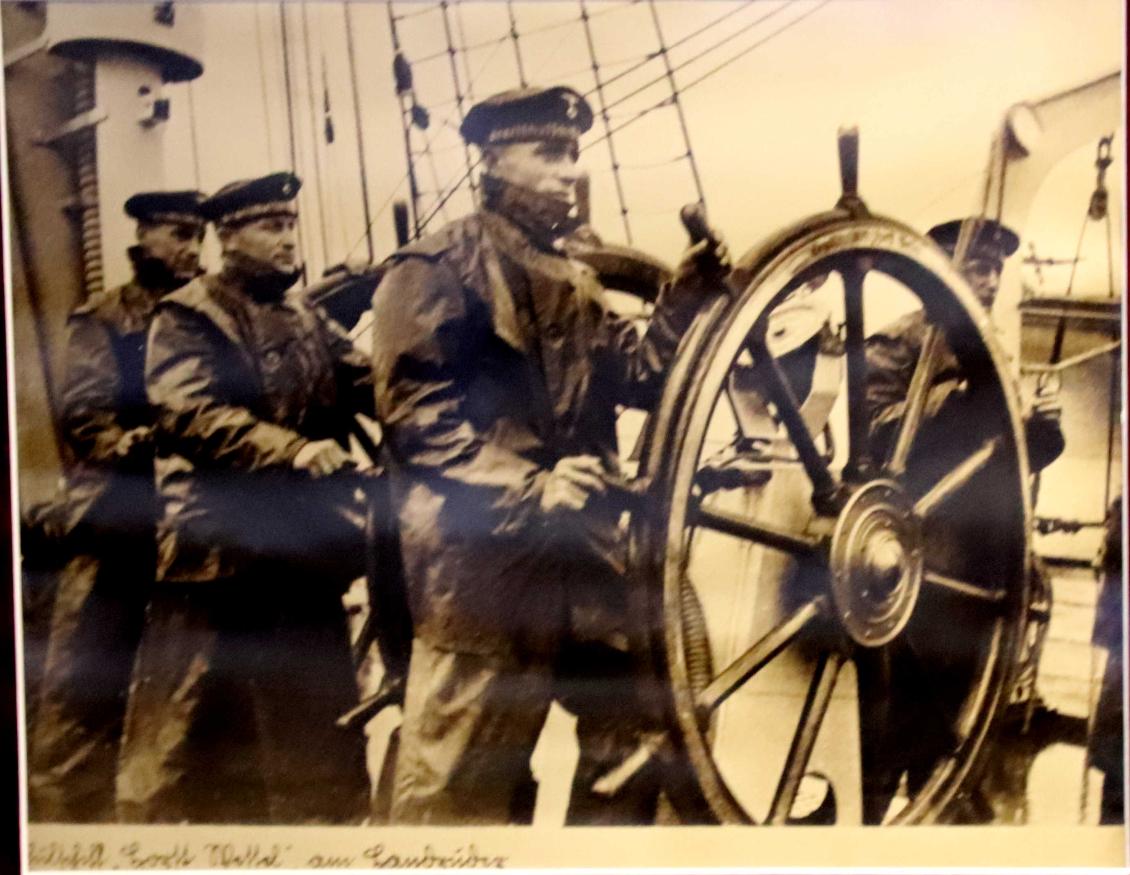
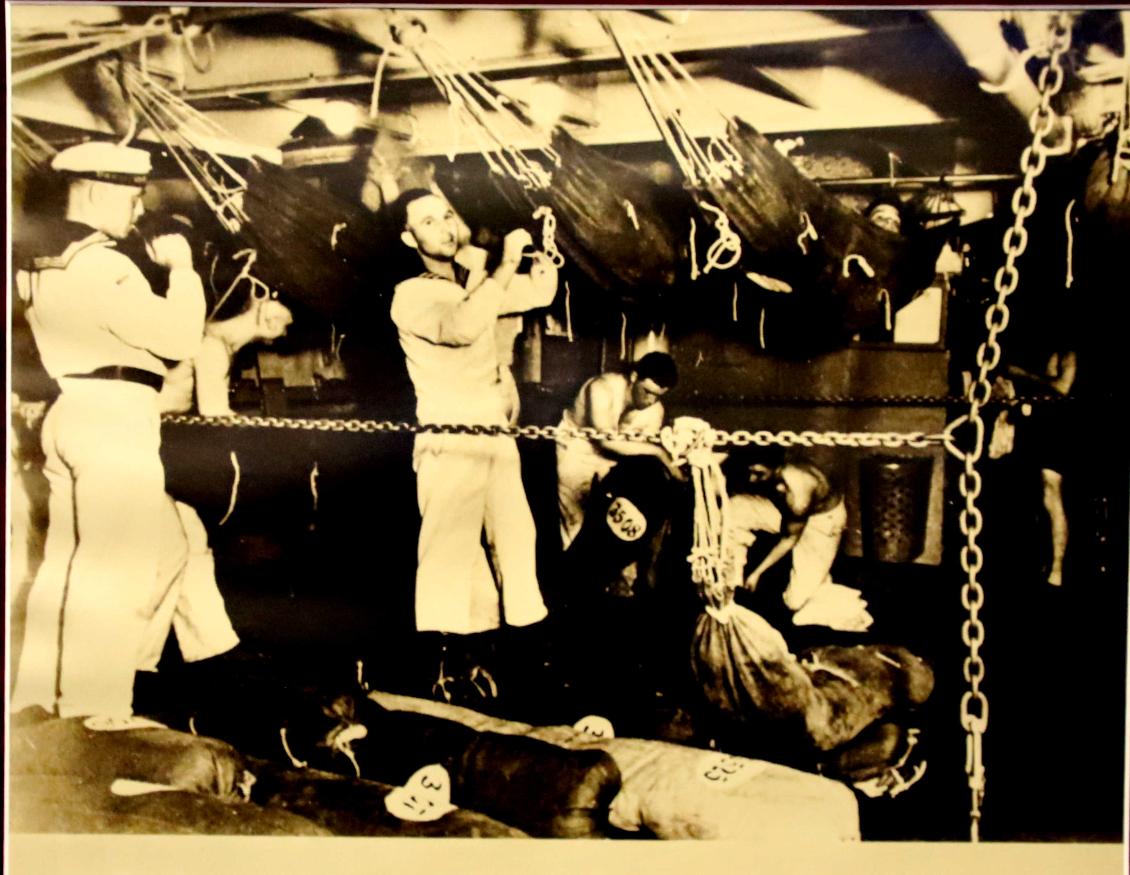
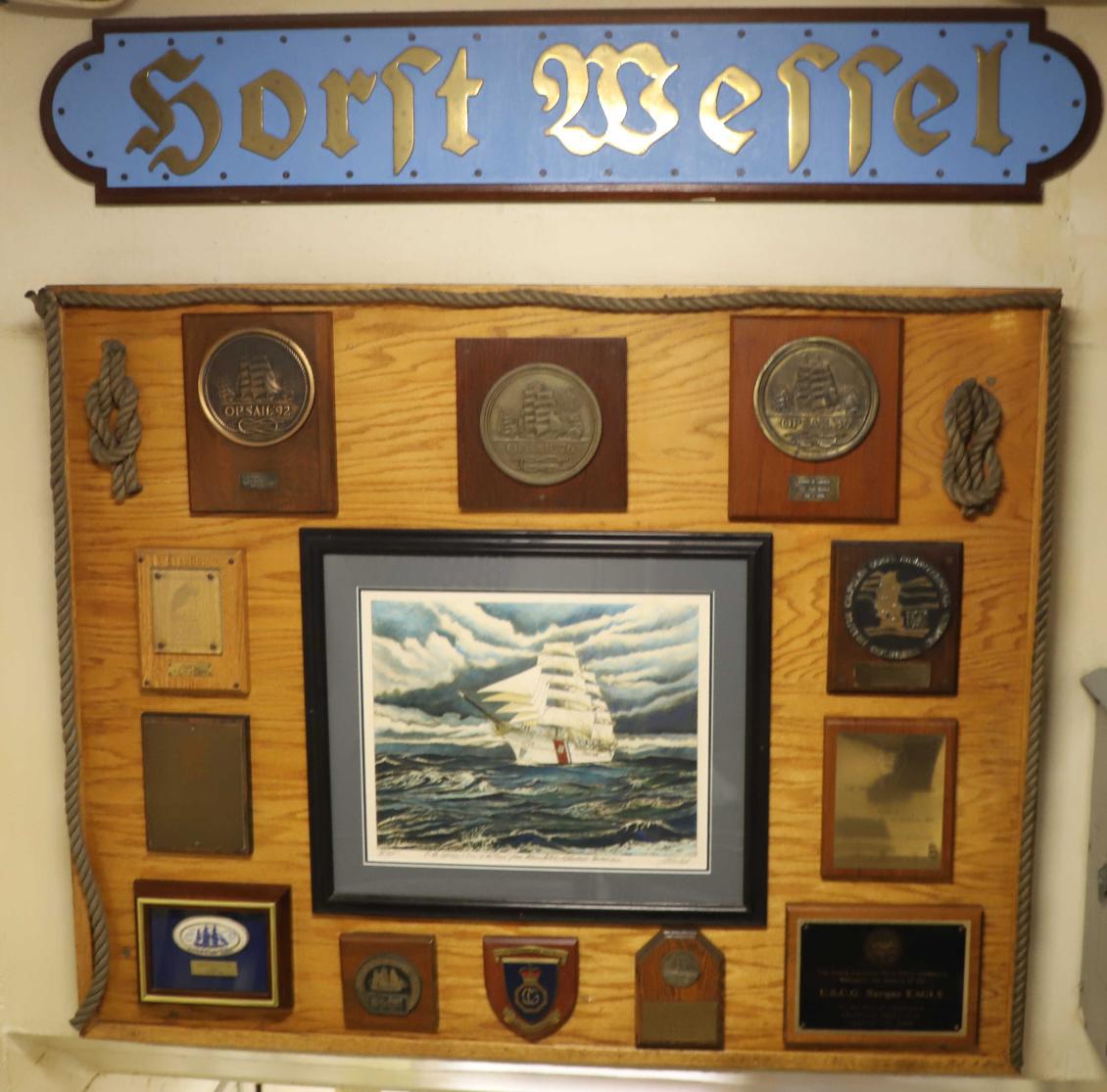
Coast Guard Cutter Eagle - Guest Quarters
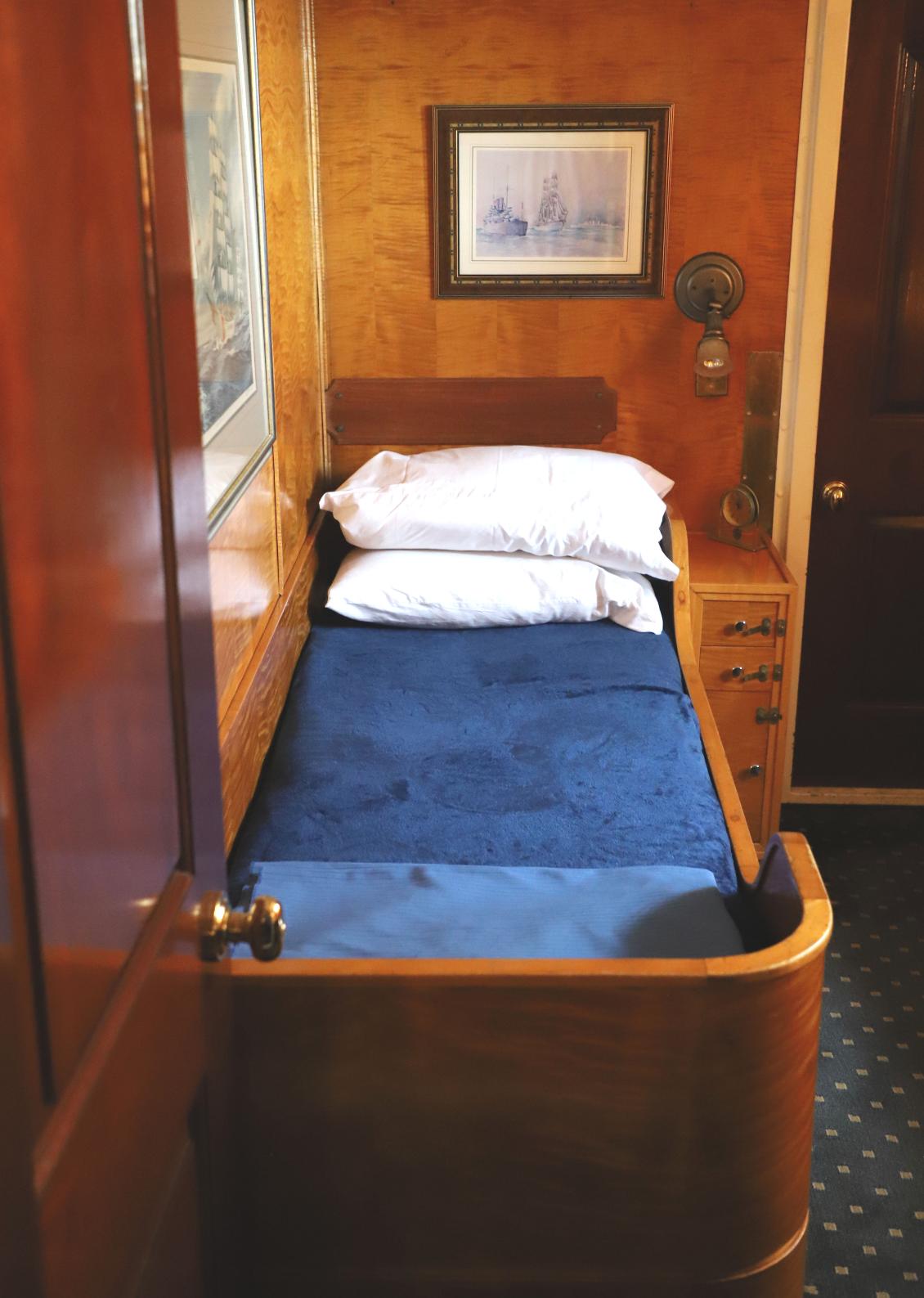
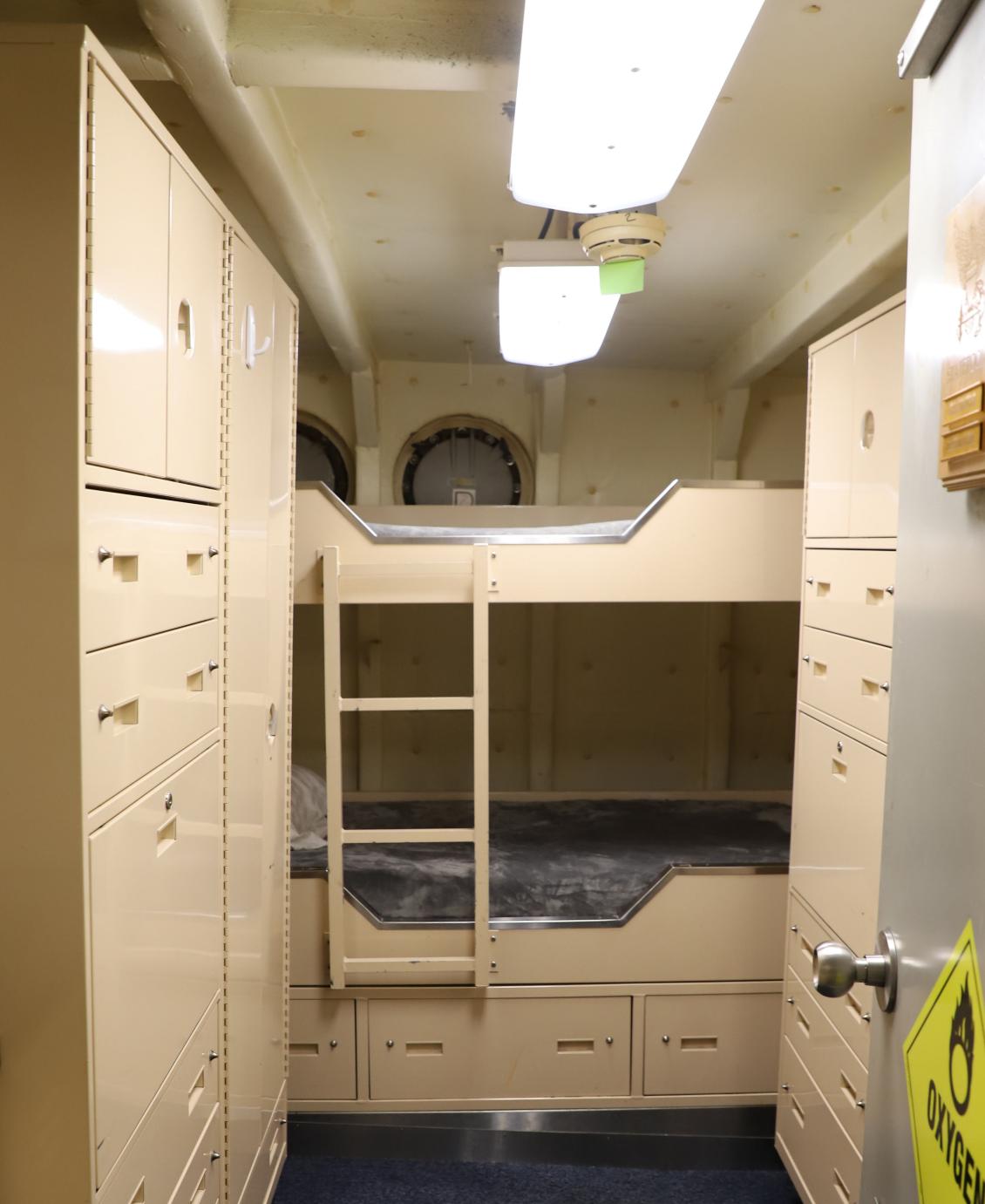
Coast Guard Cutter Eagle - Galley
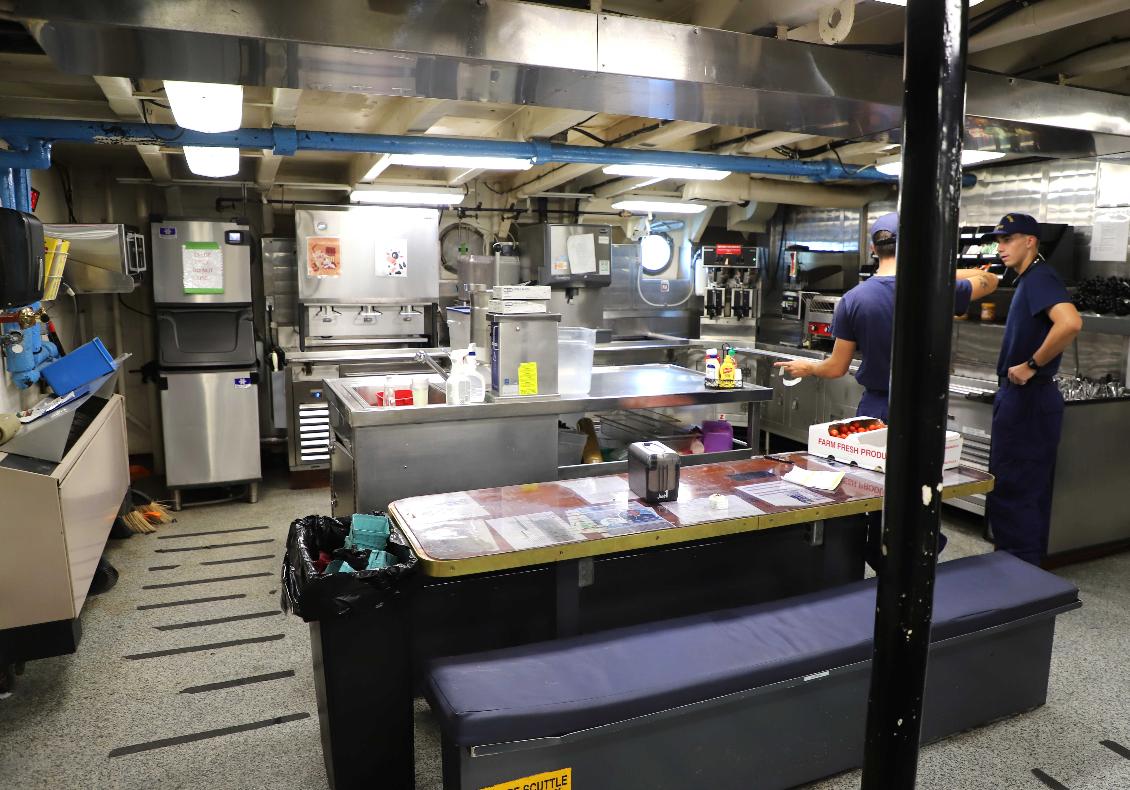

U.S. Coast Guard Eagle - 75th Birthday - June 4, 2011 - Hamburg Germany

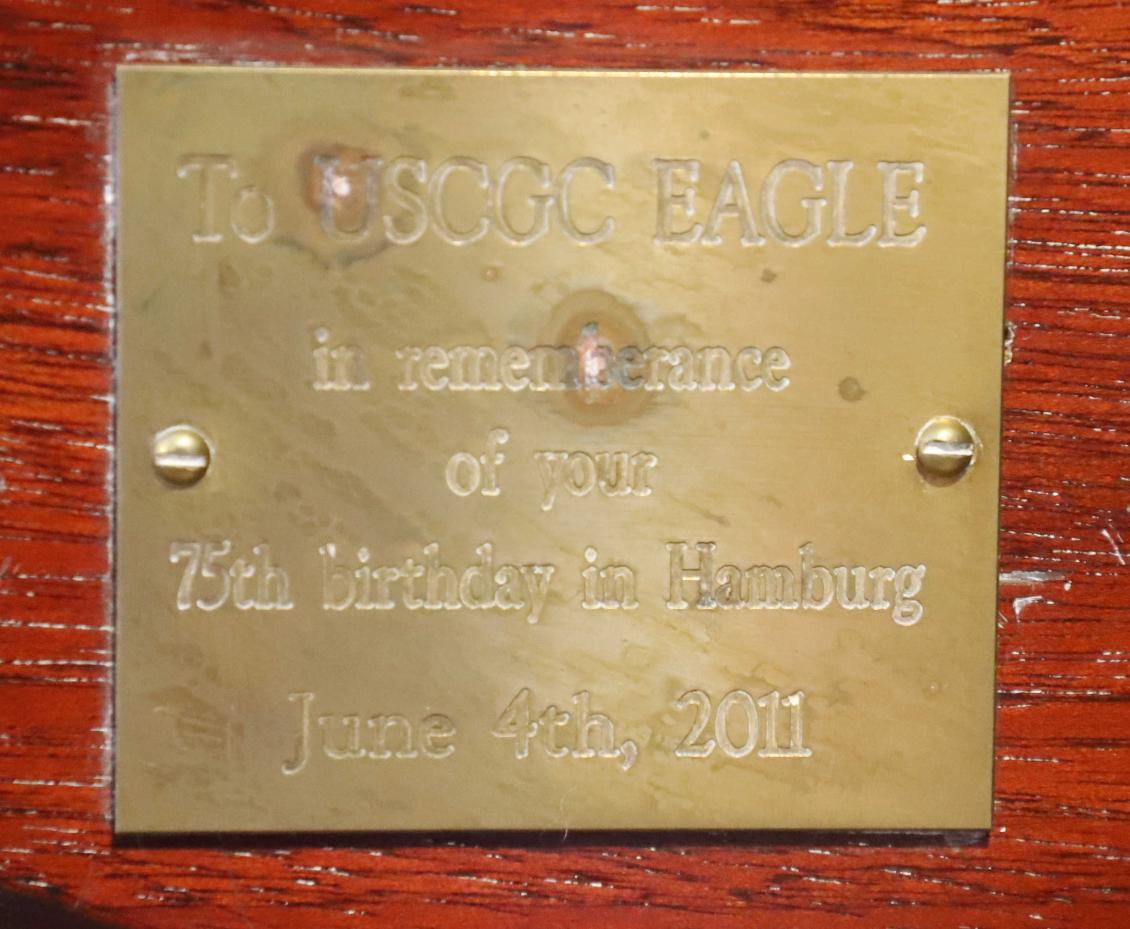

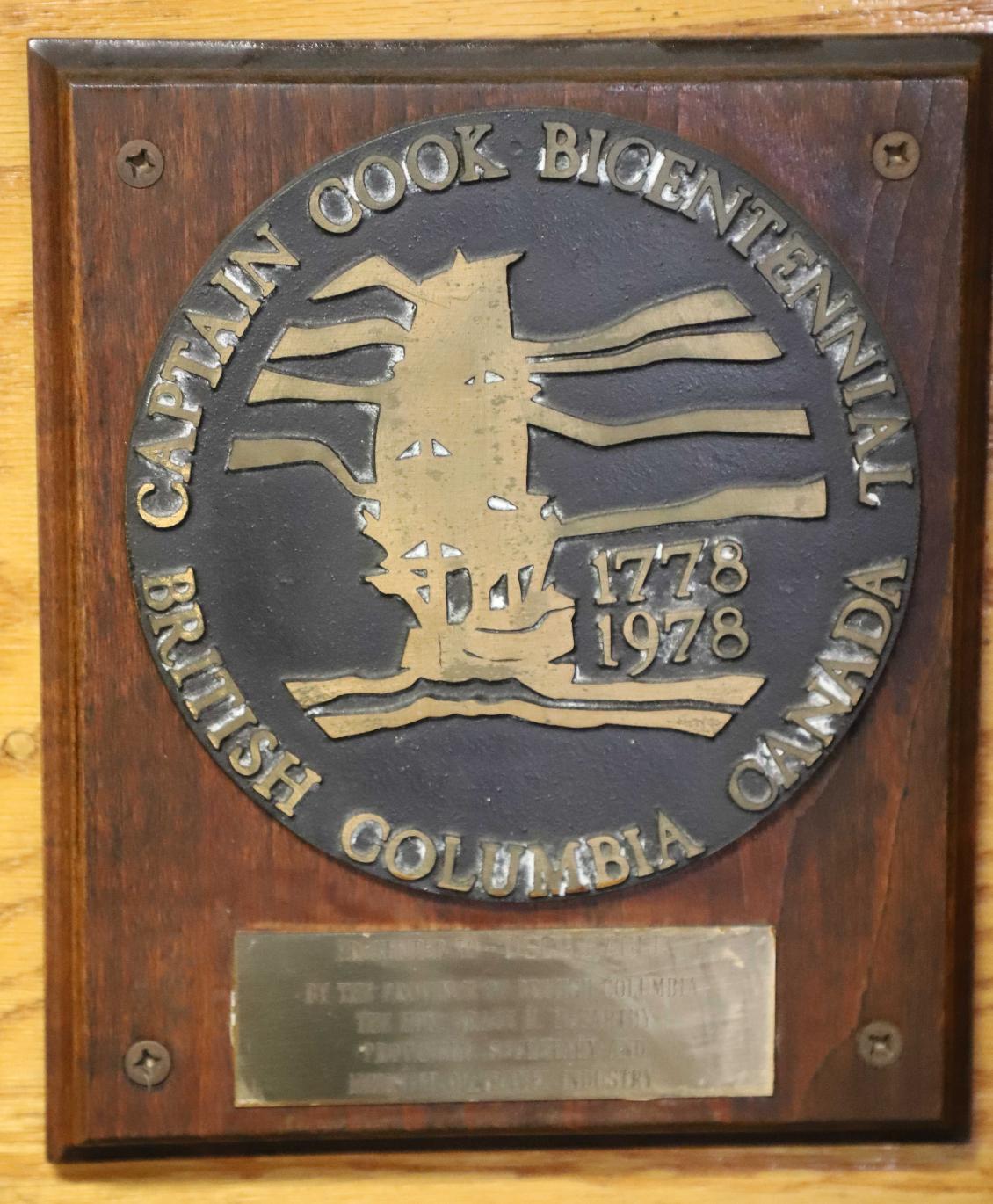
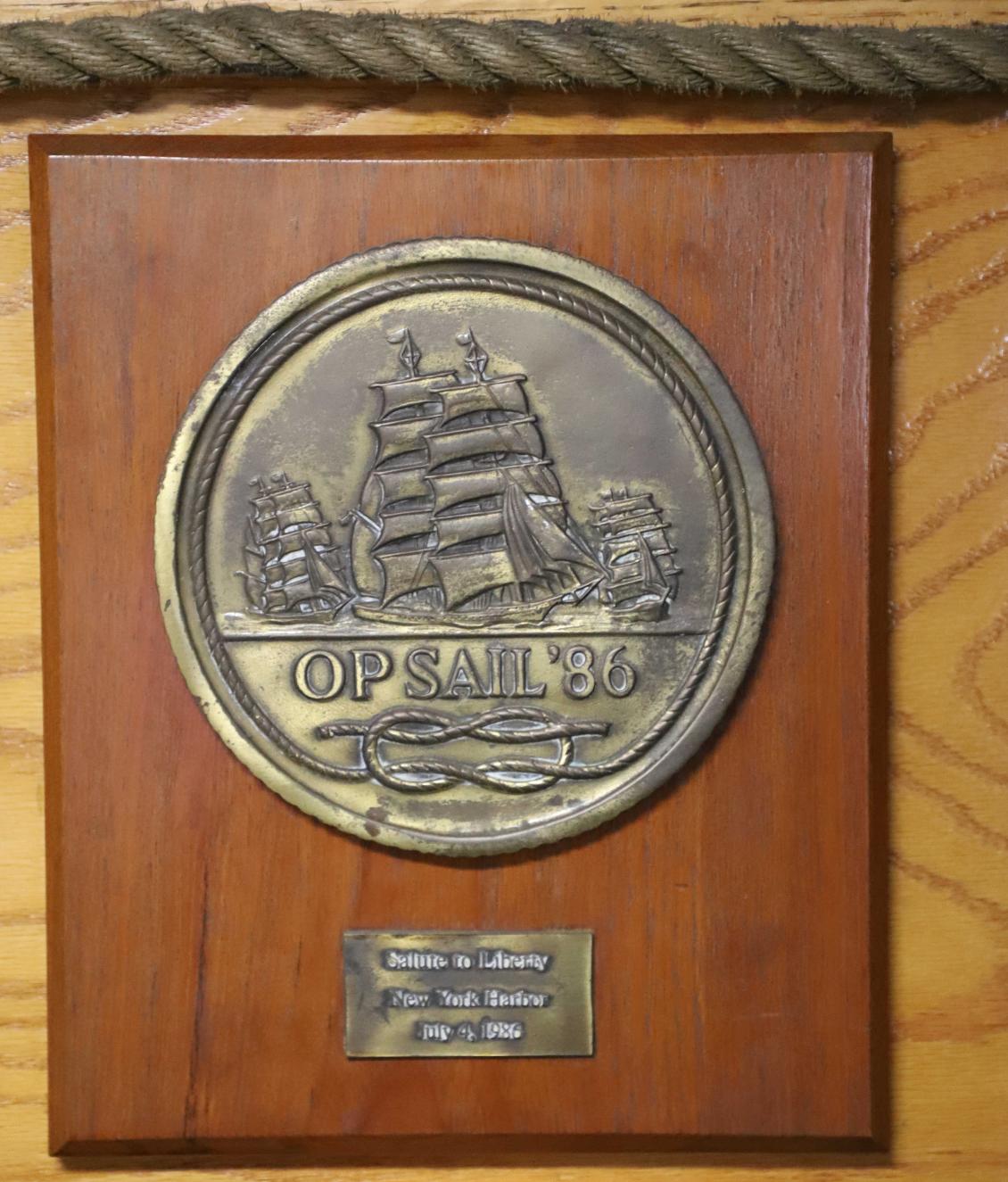

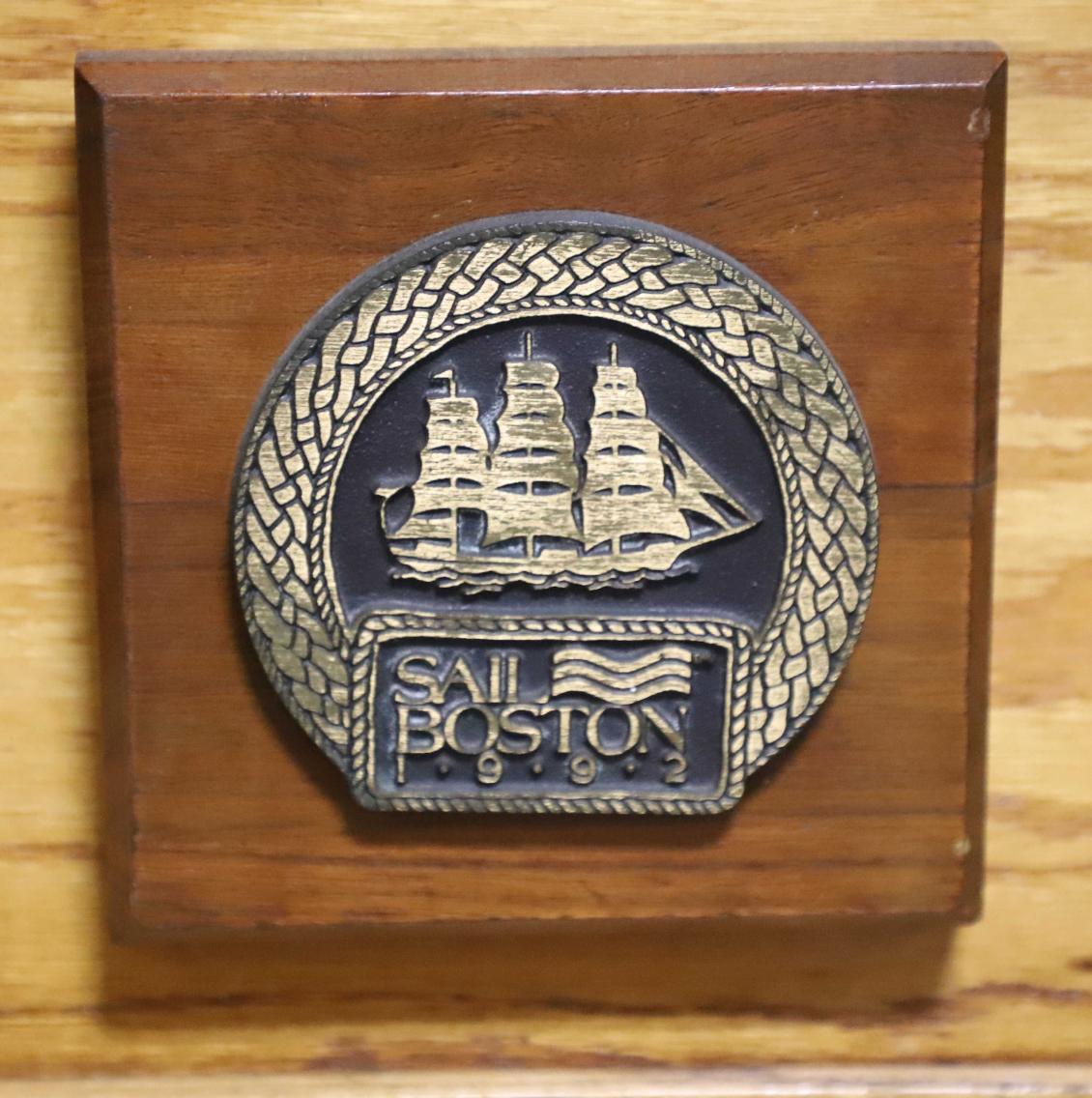
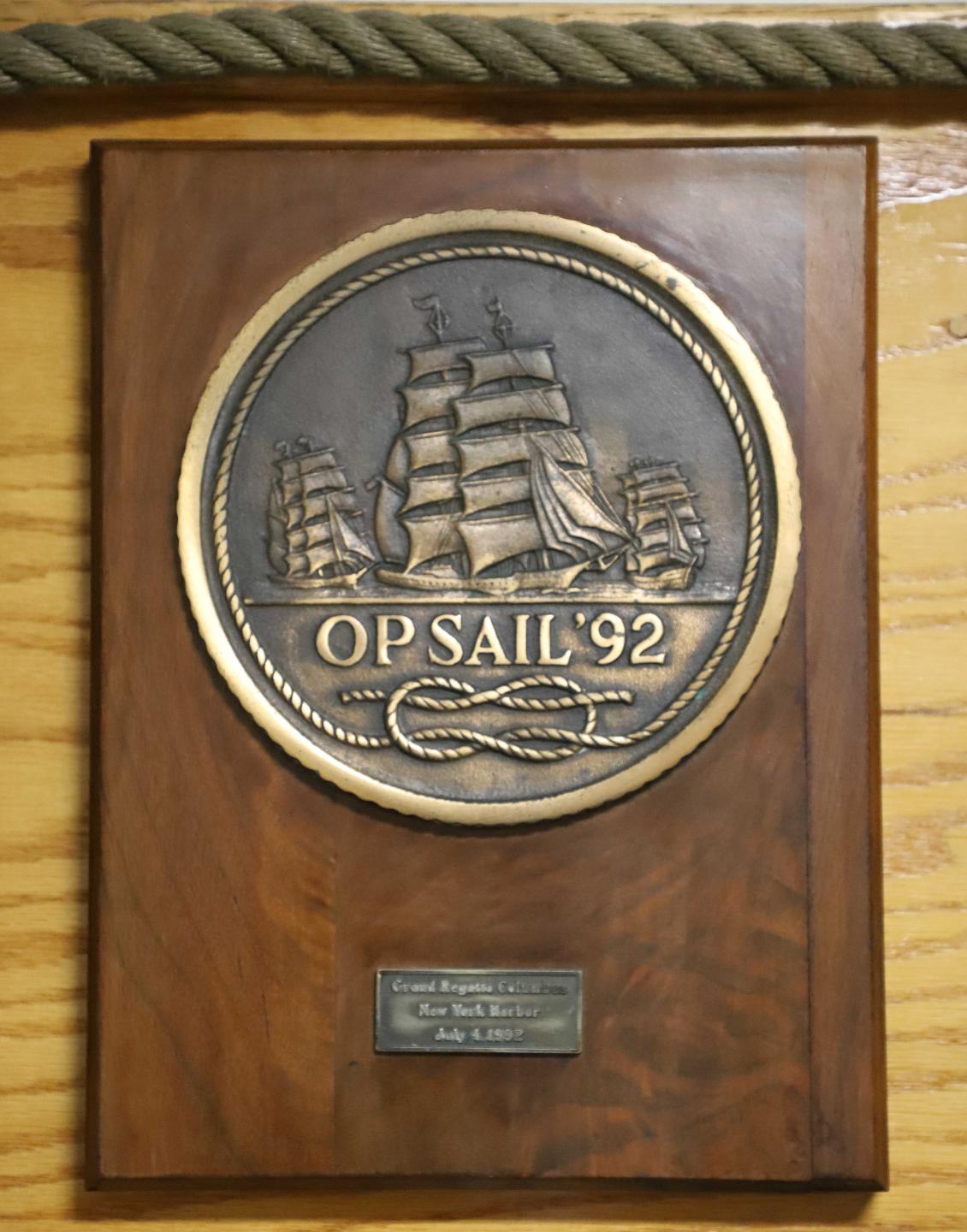

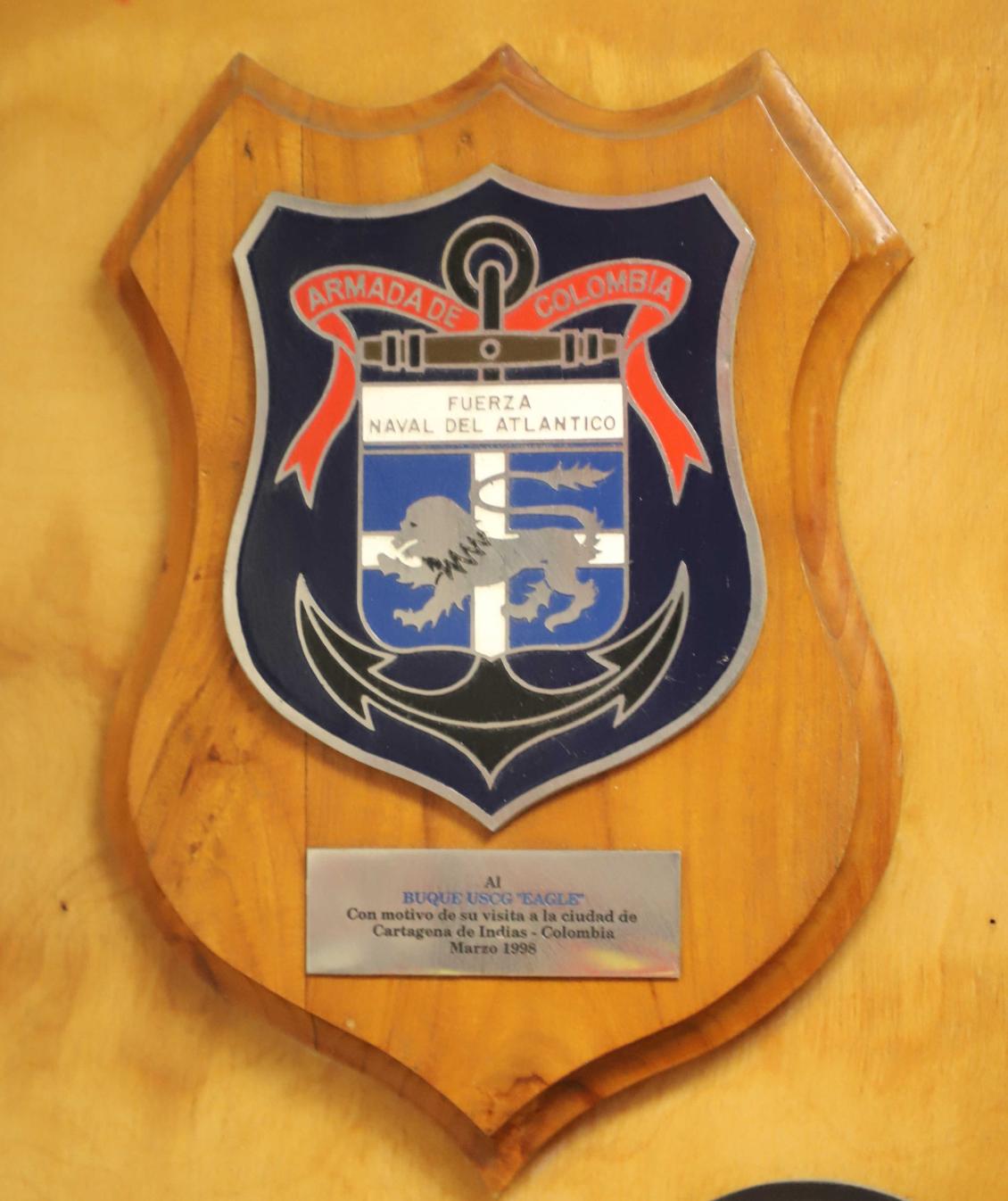

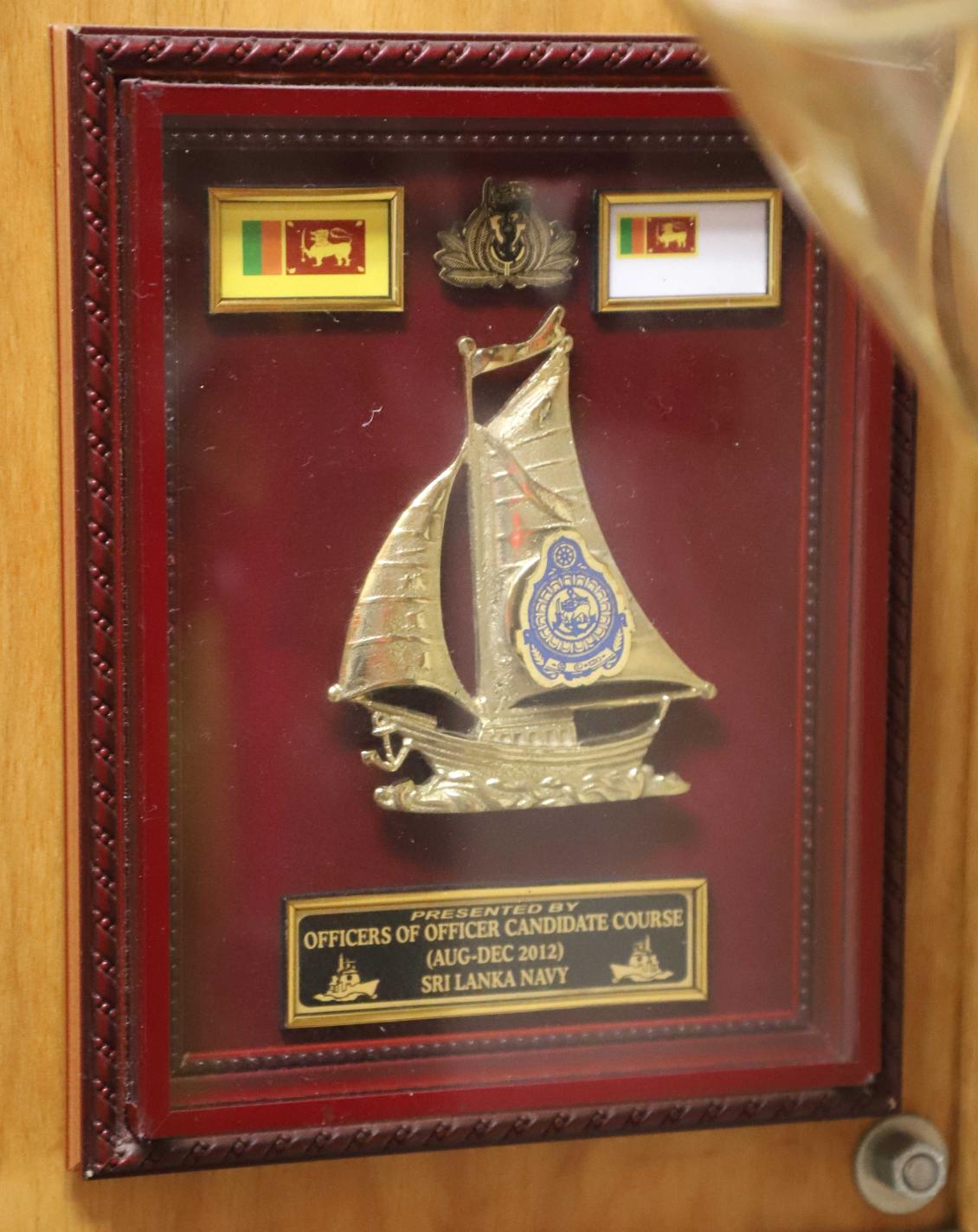
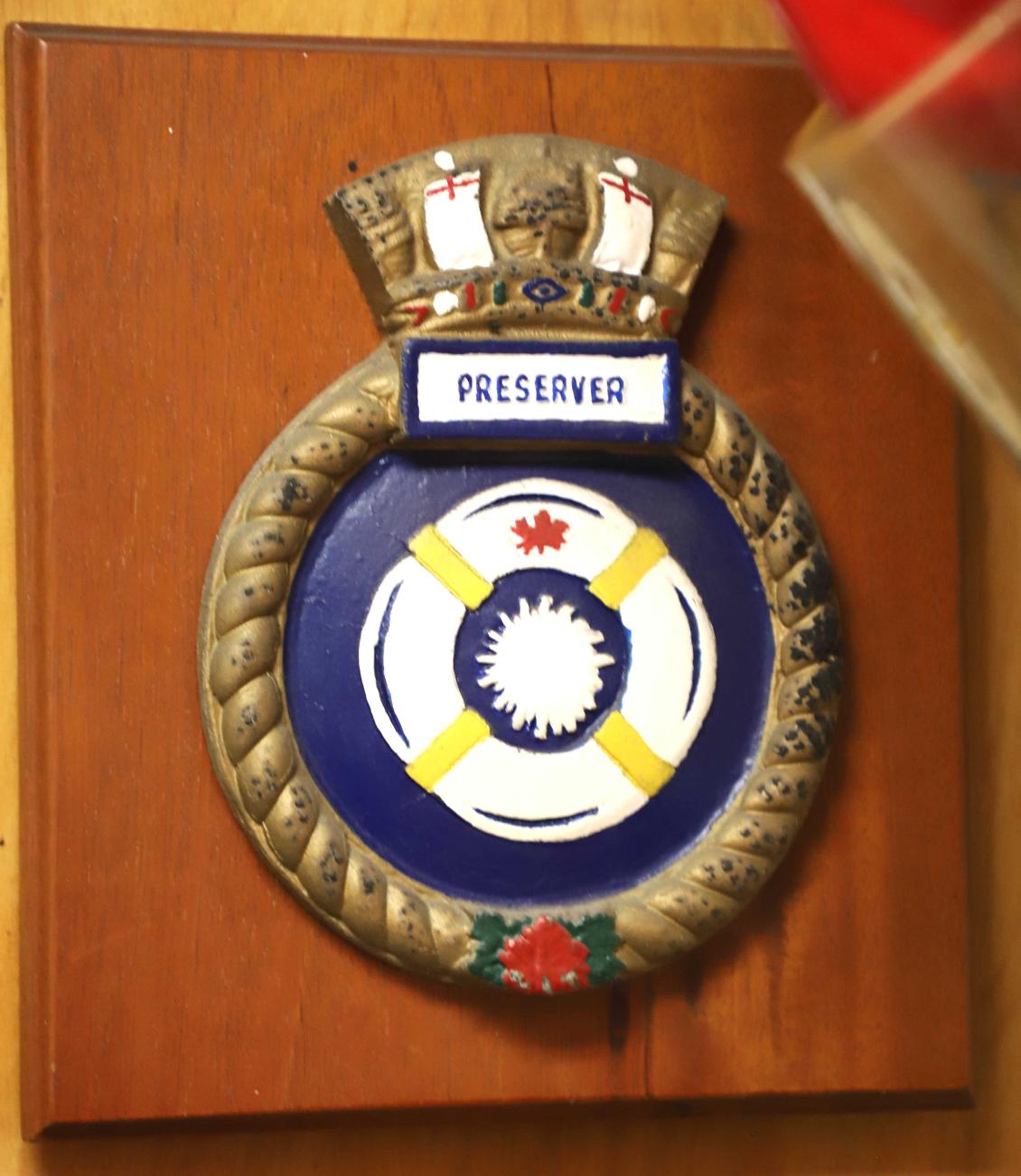
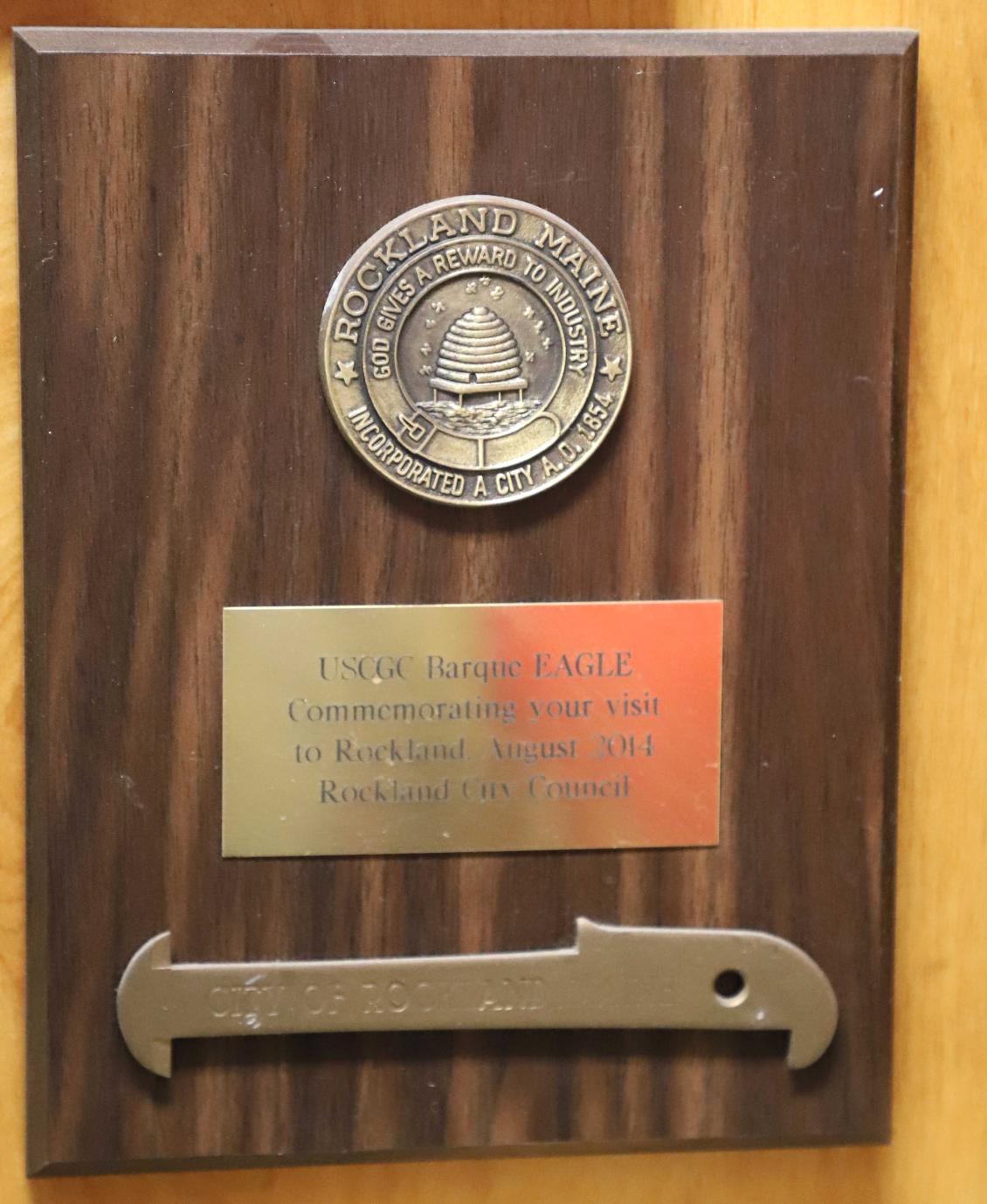
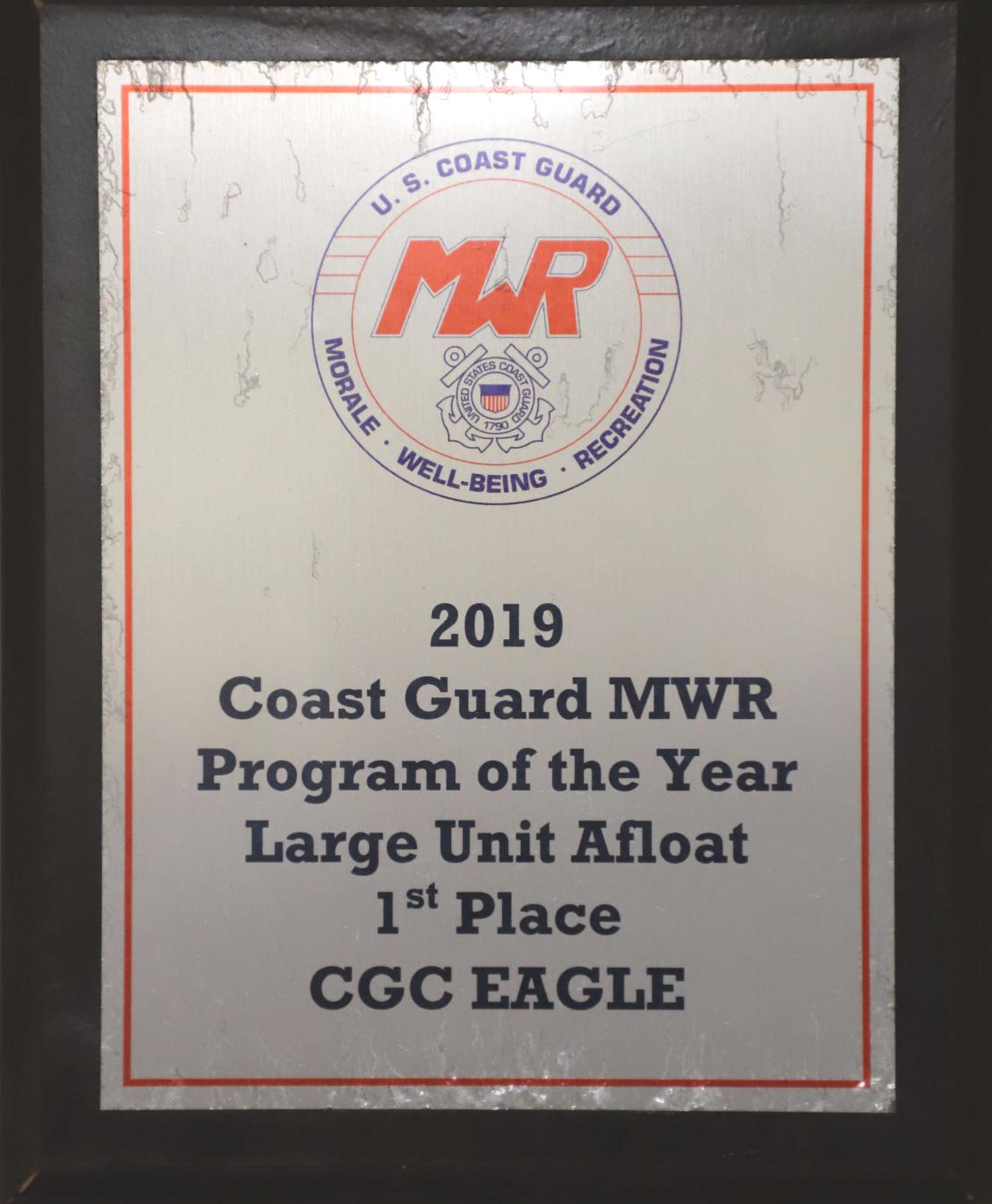
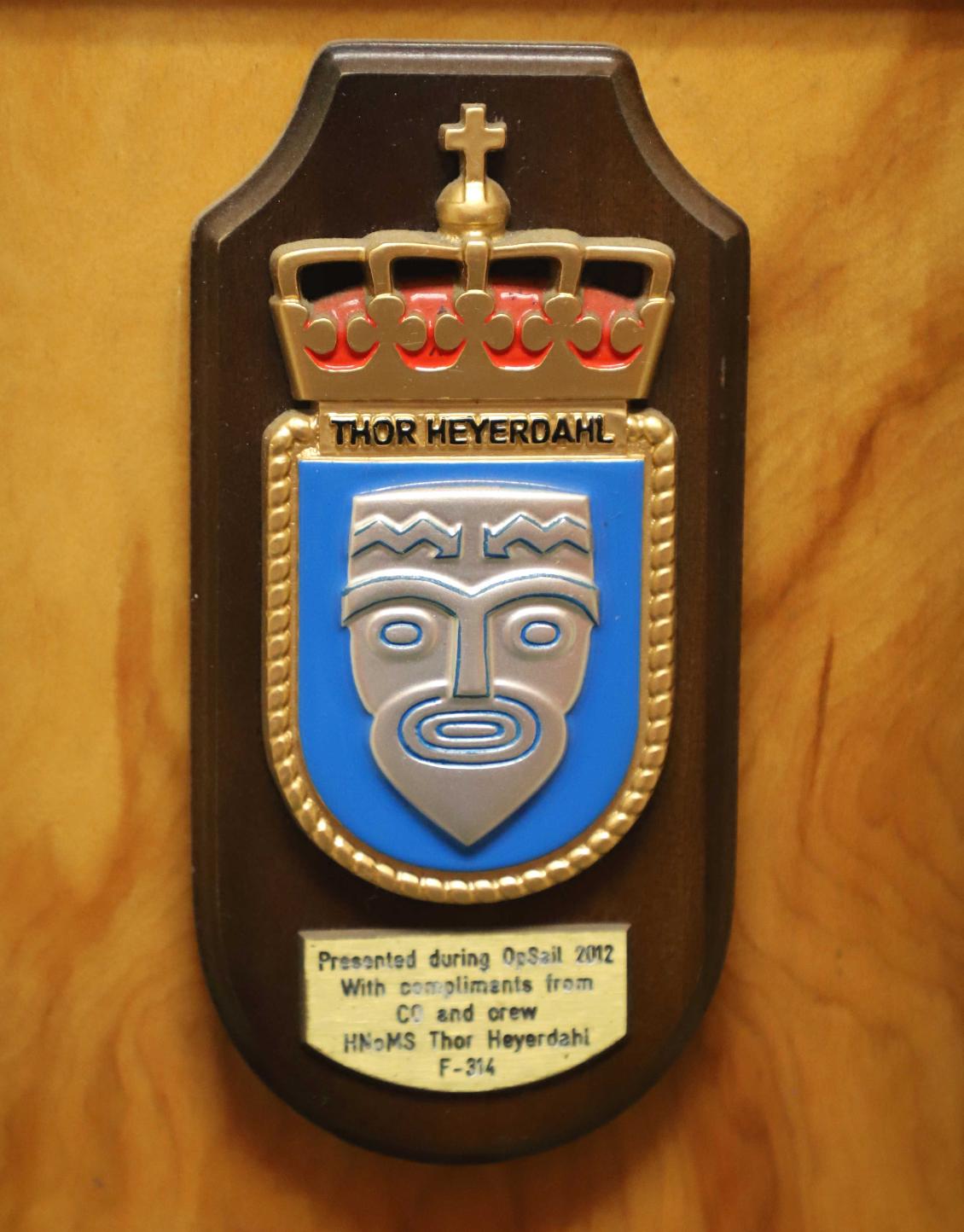


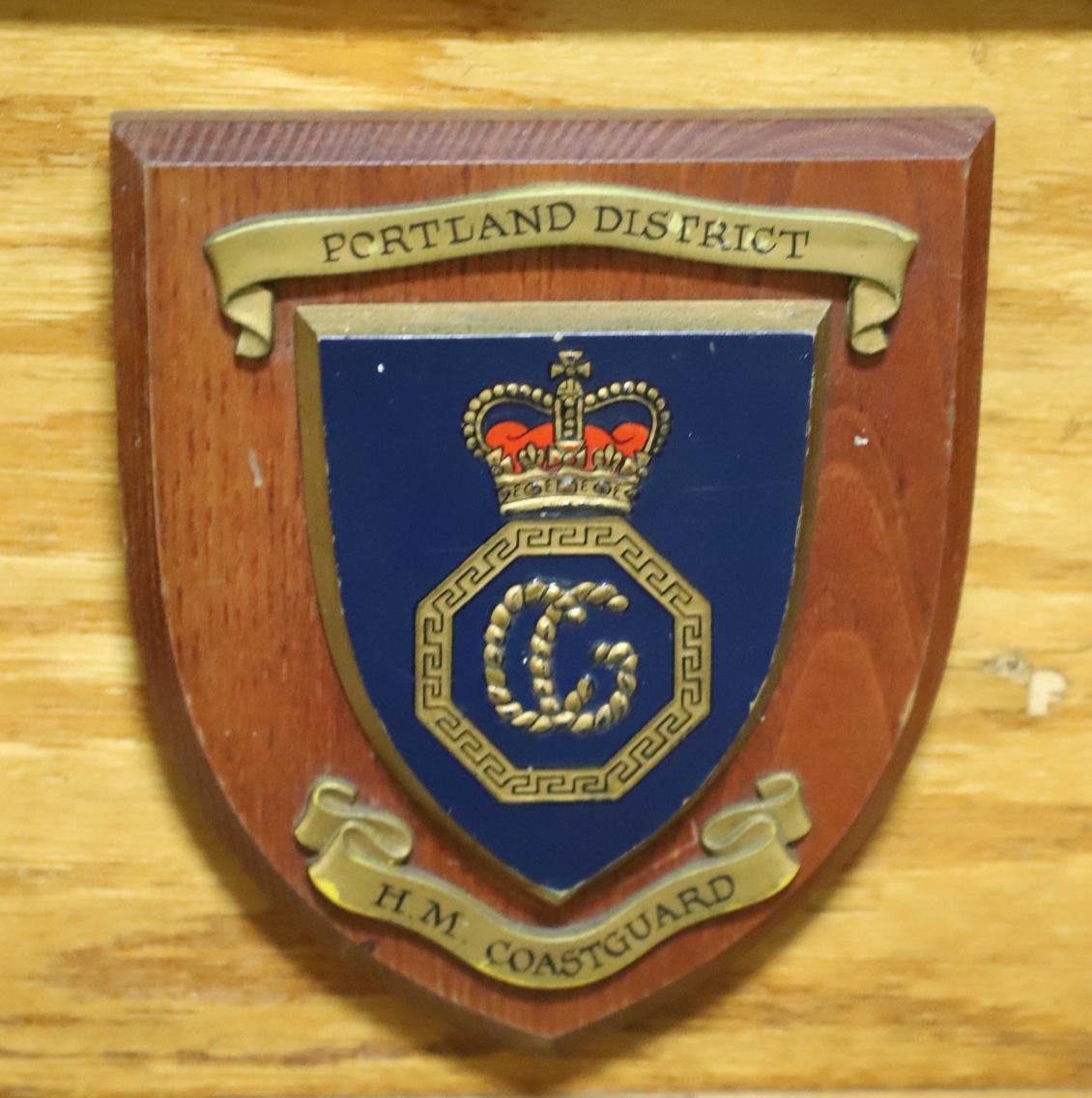
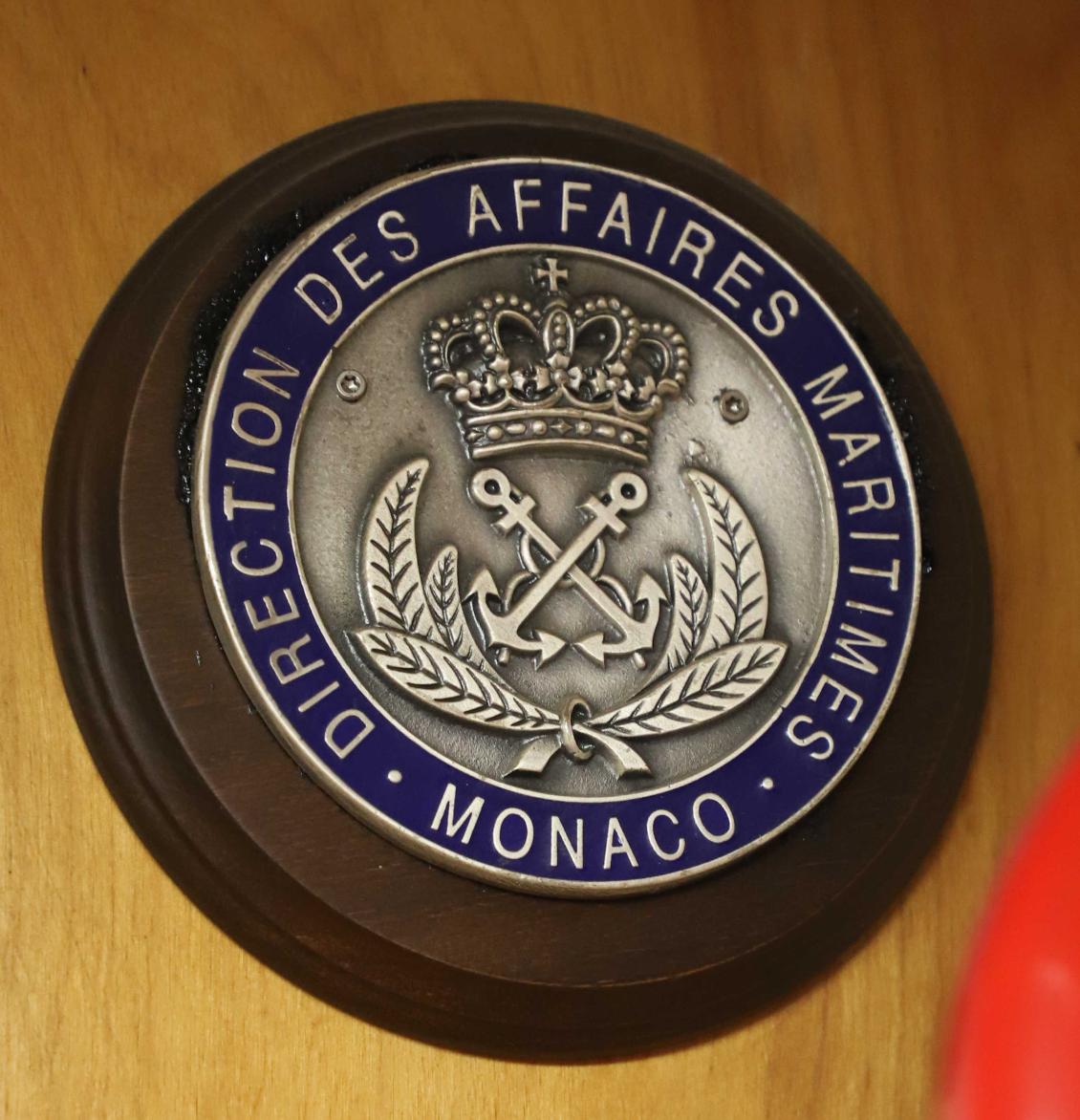
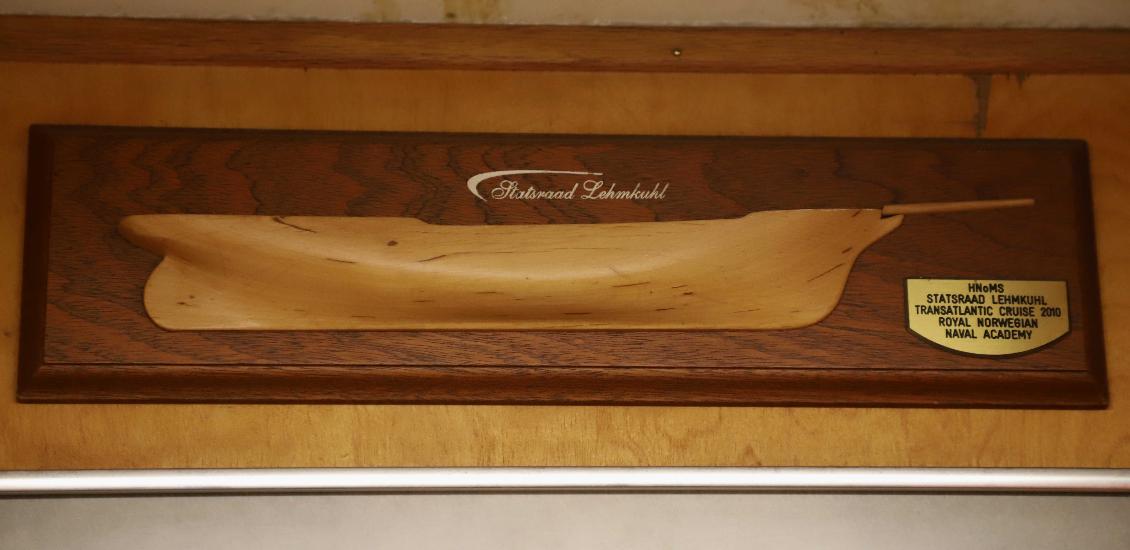
U.S. Coast Guard Cutter Eagle - Wardroom
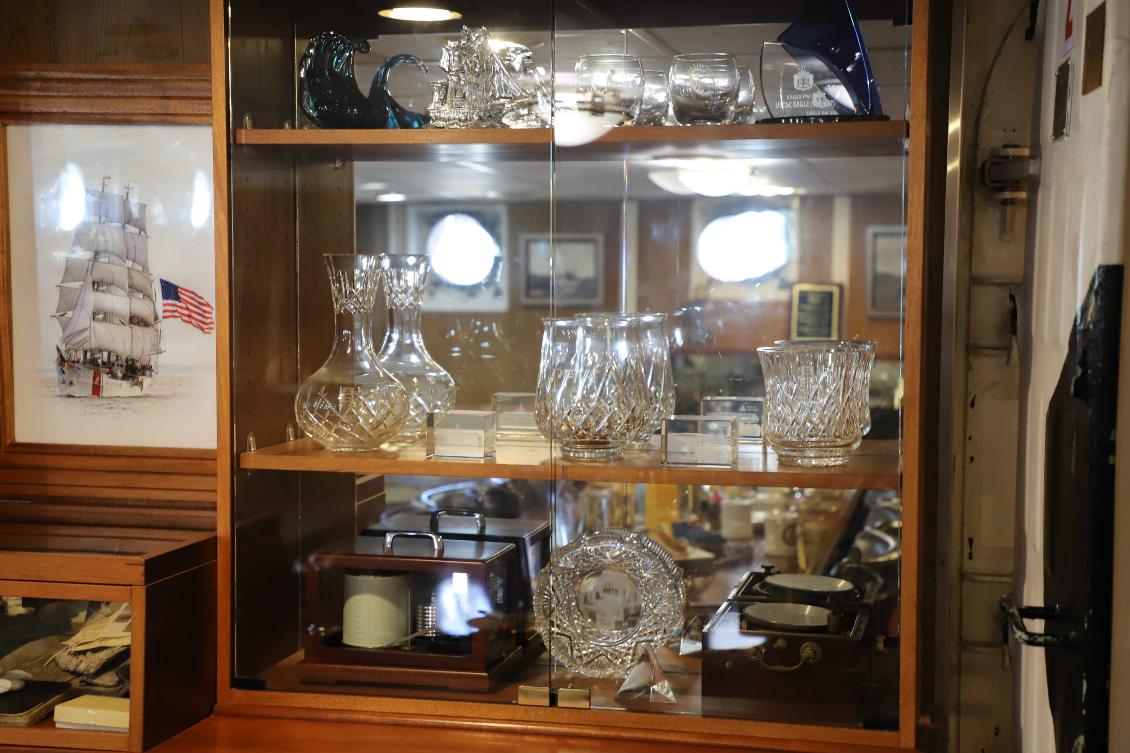
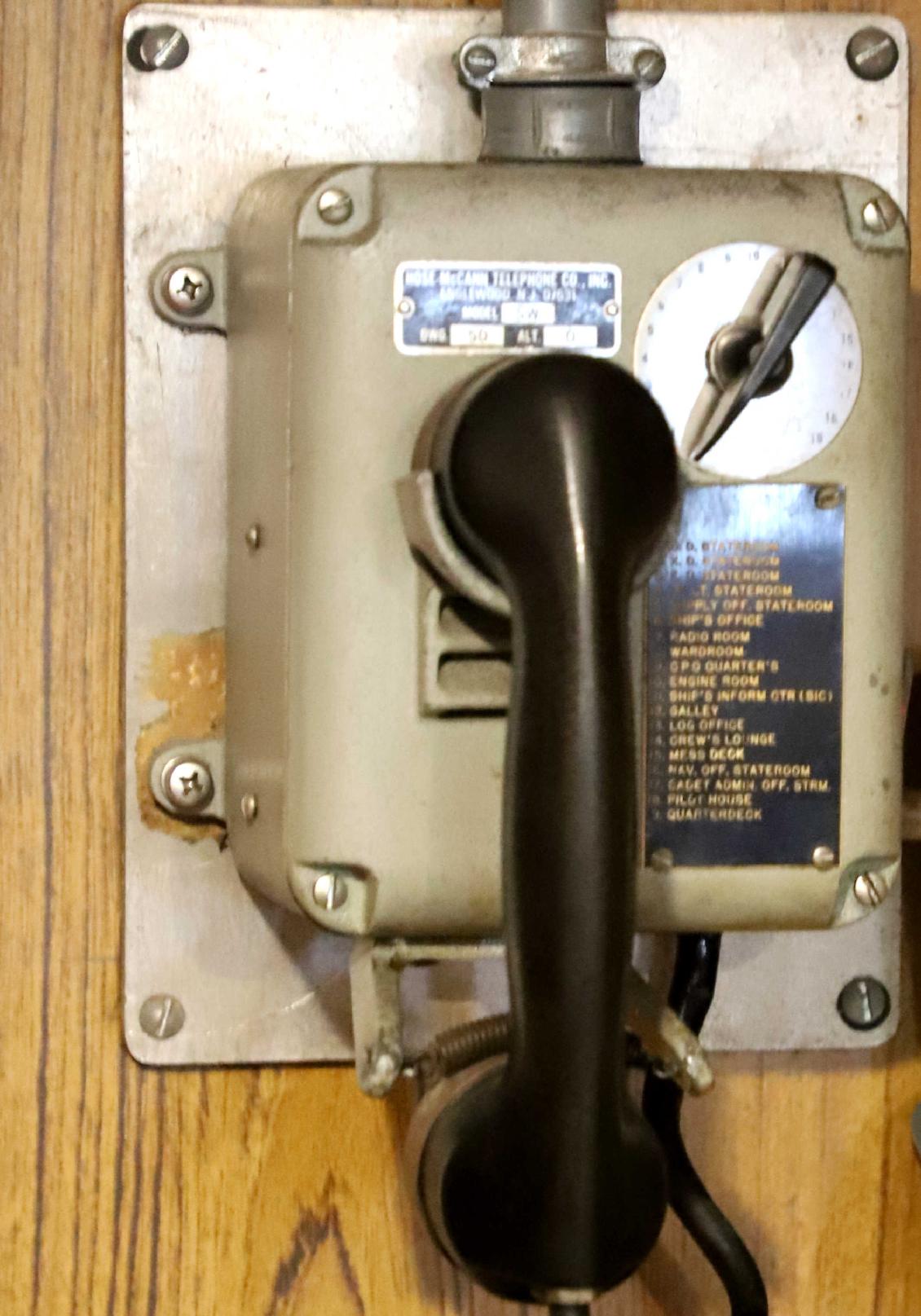
Voyages of the U.S. Coast Guard Barque Eagle
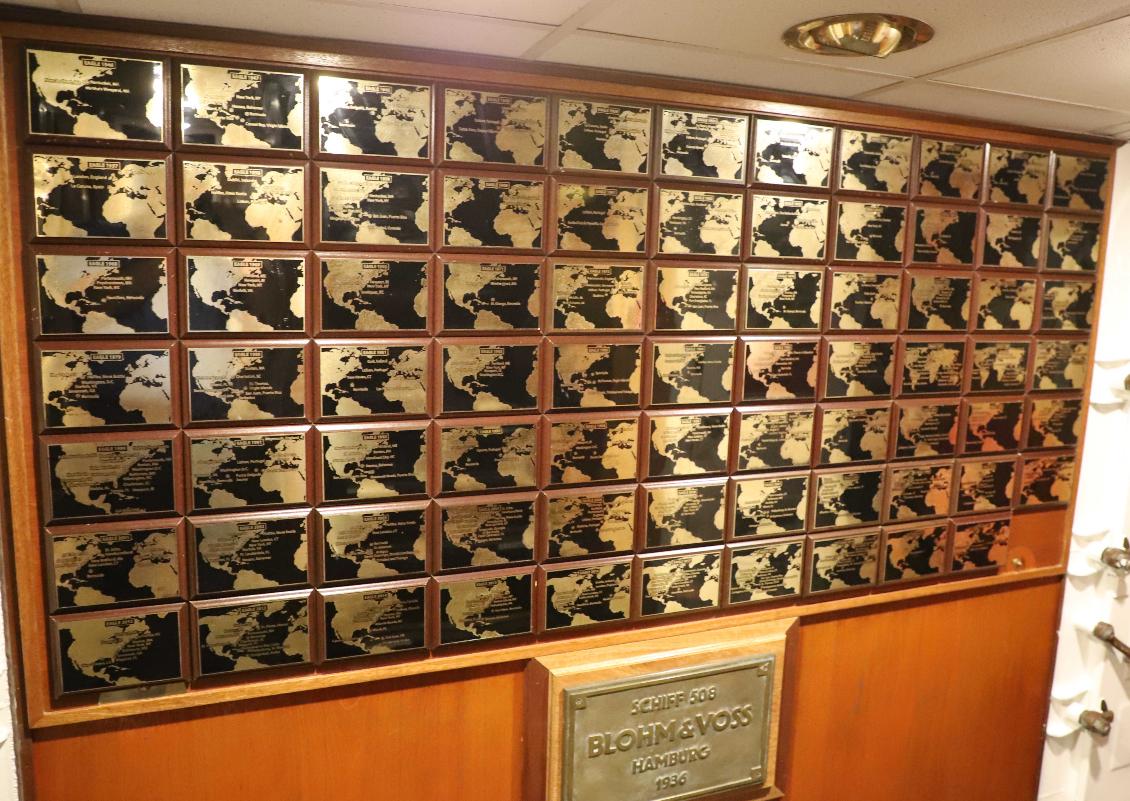
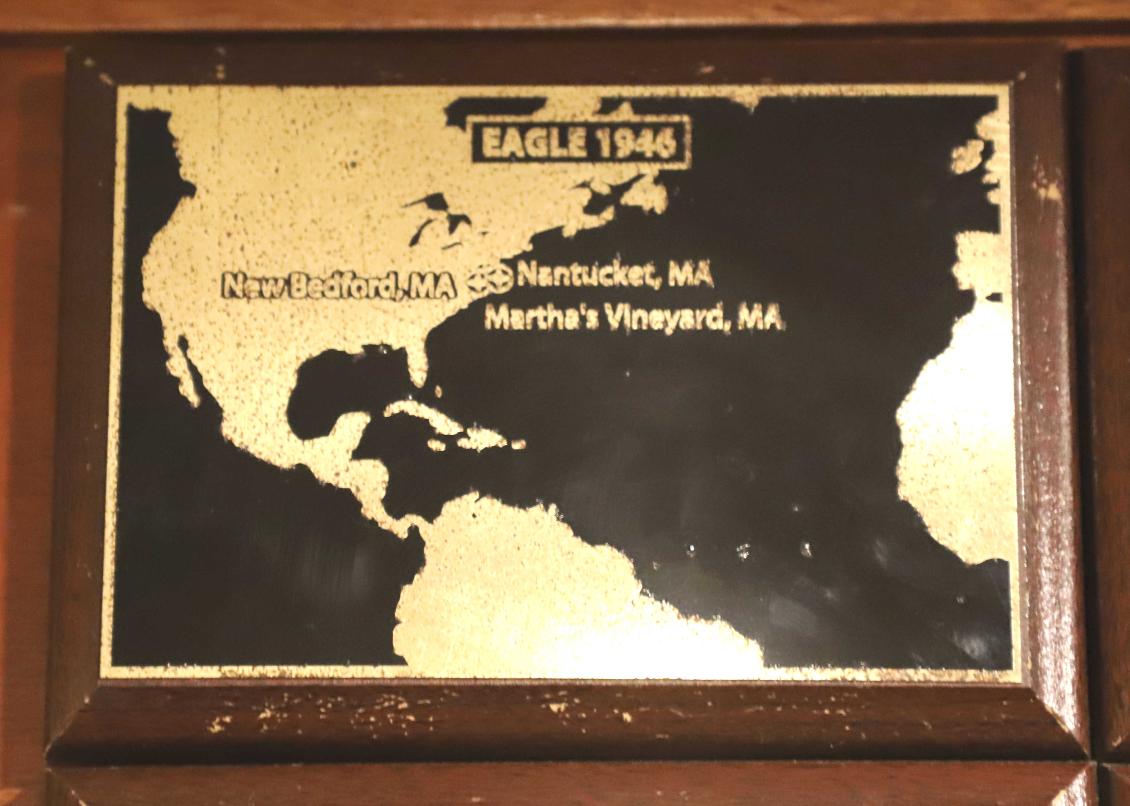
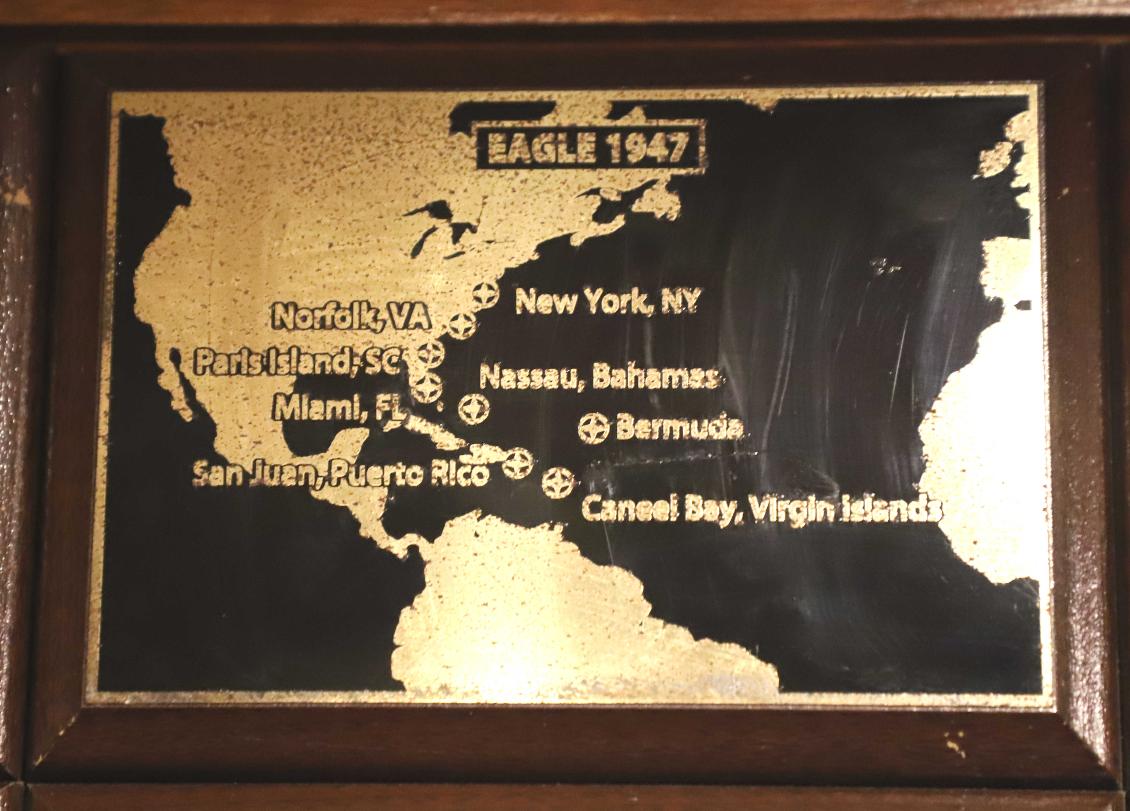
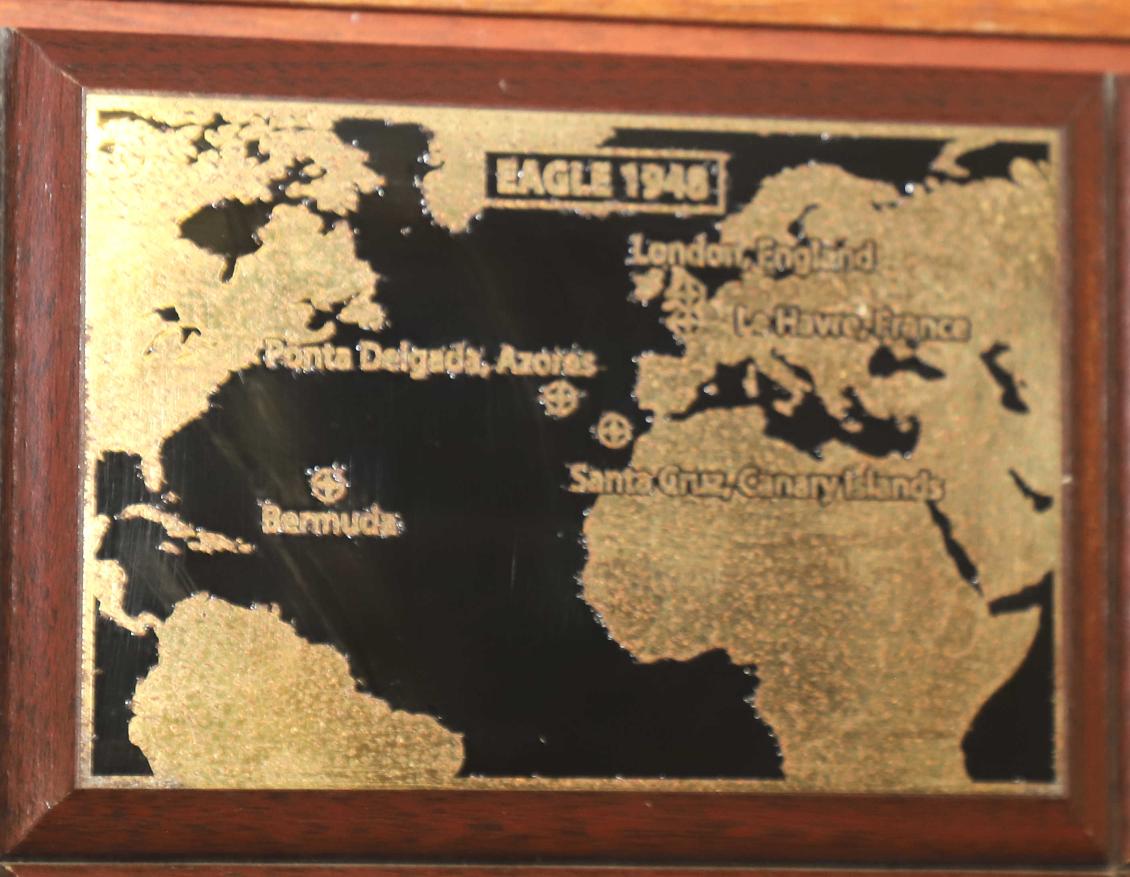

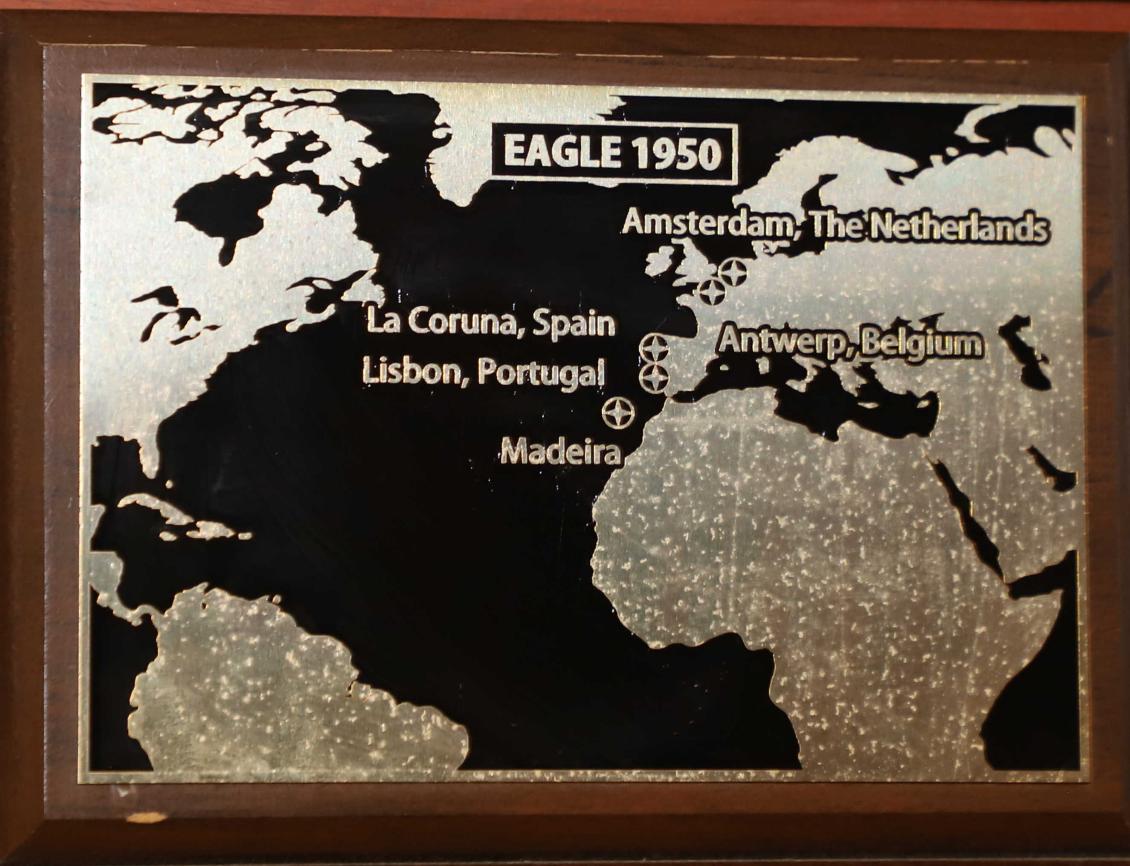
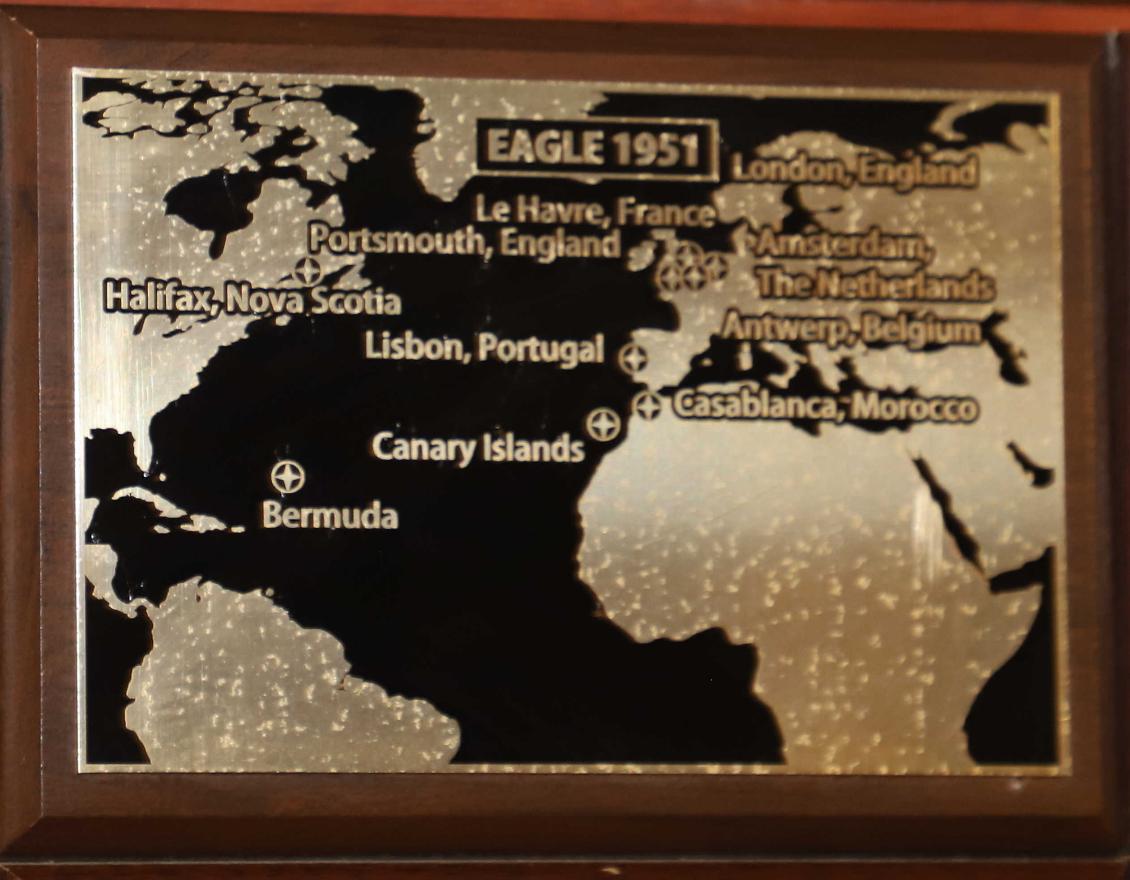
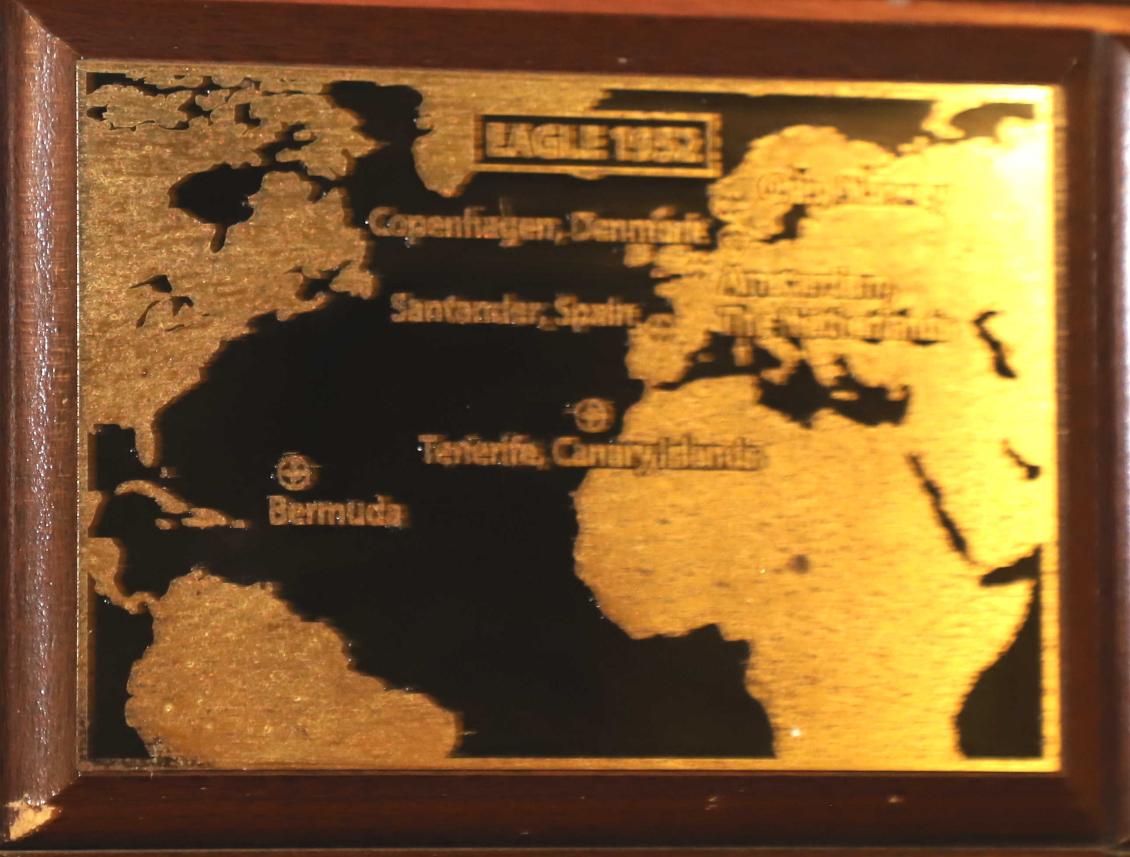
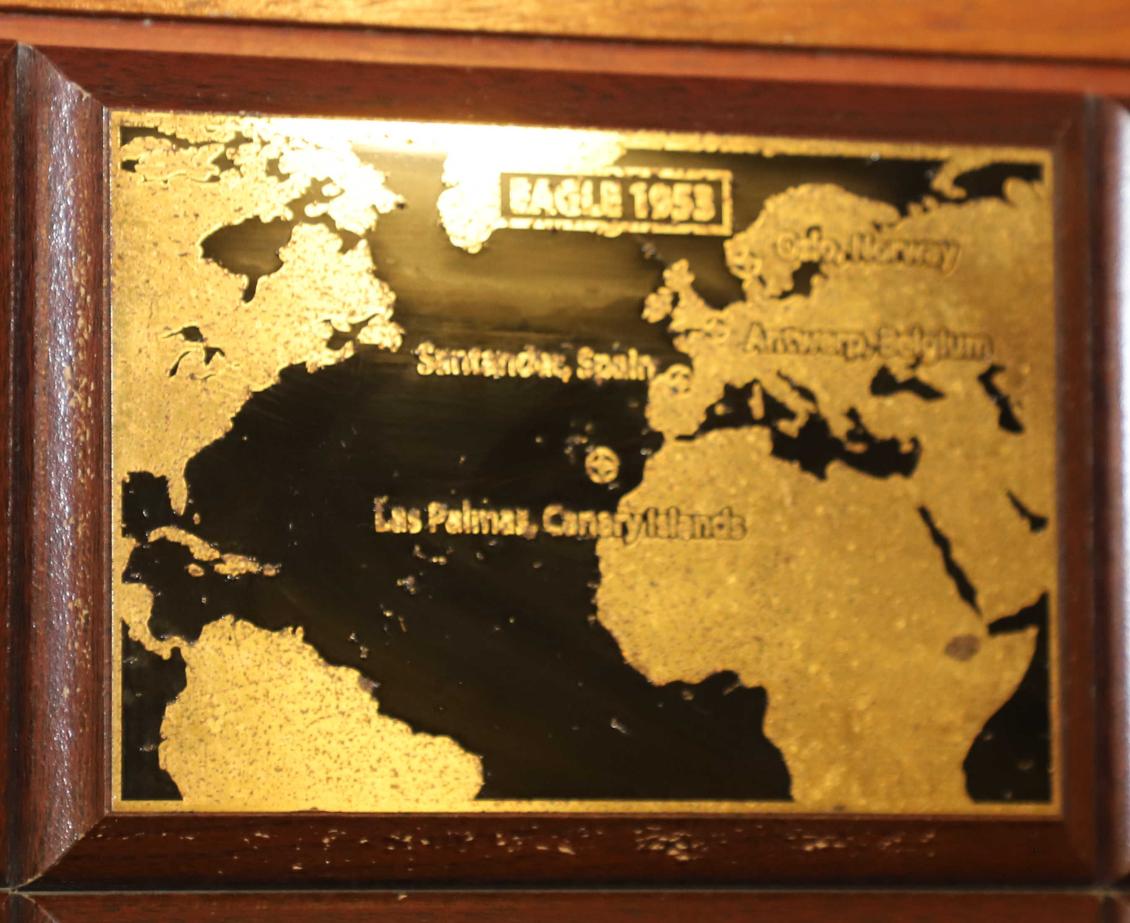
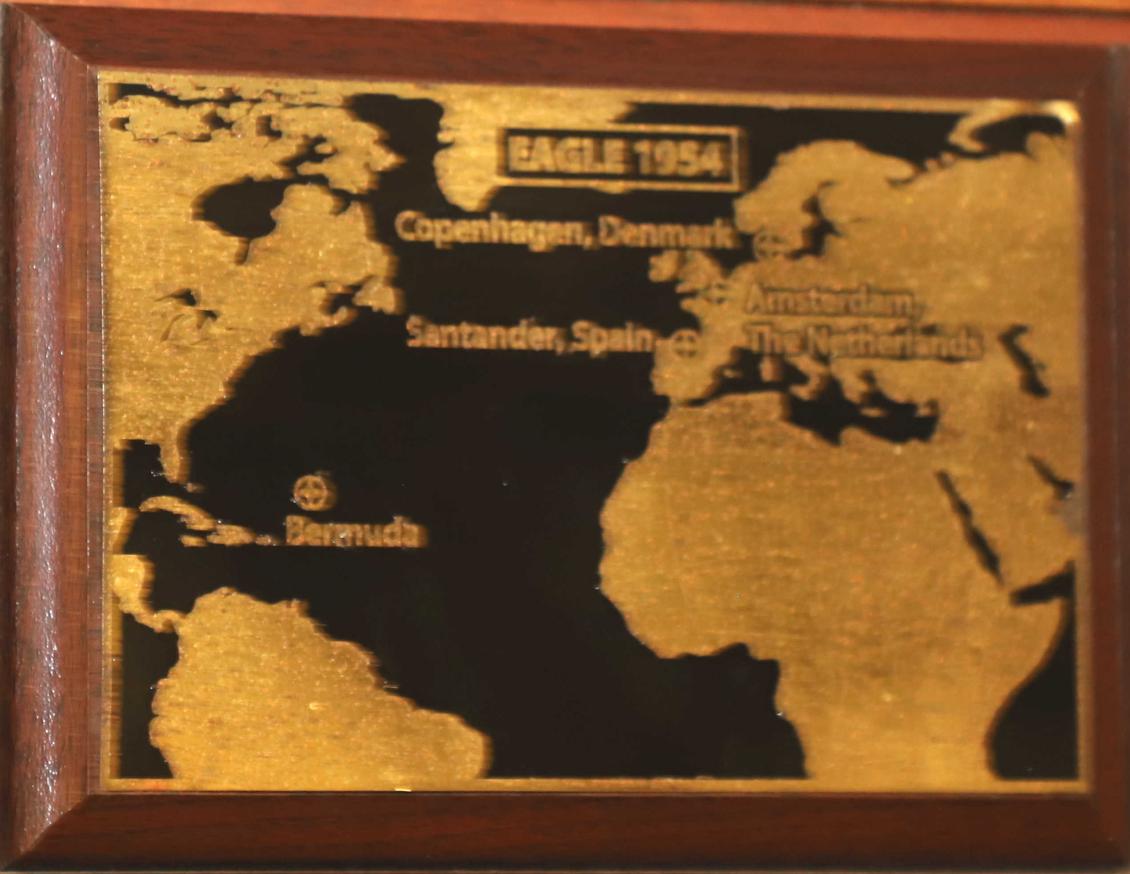
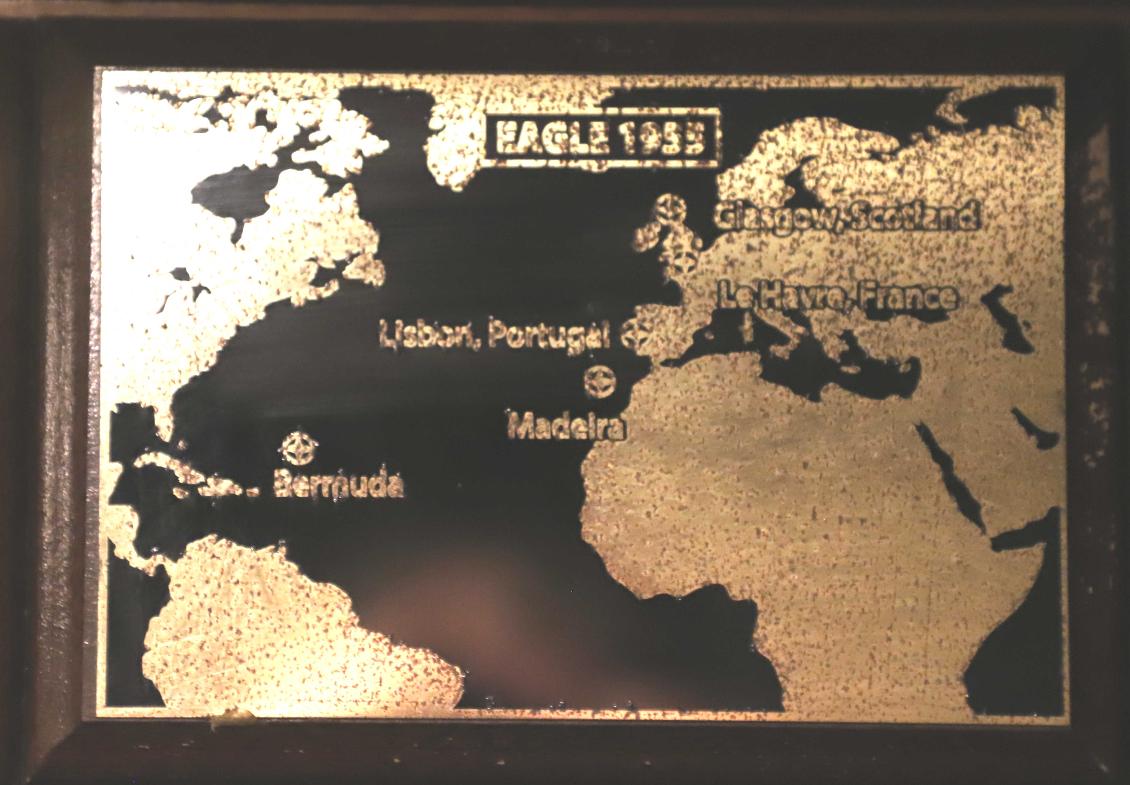
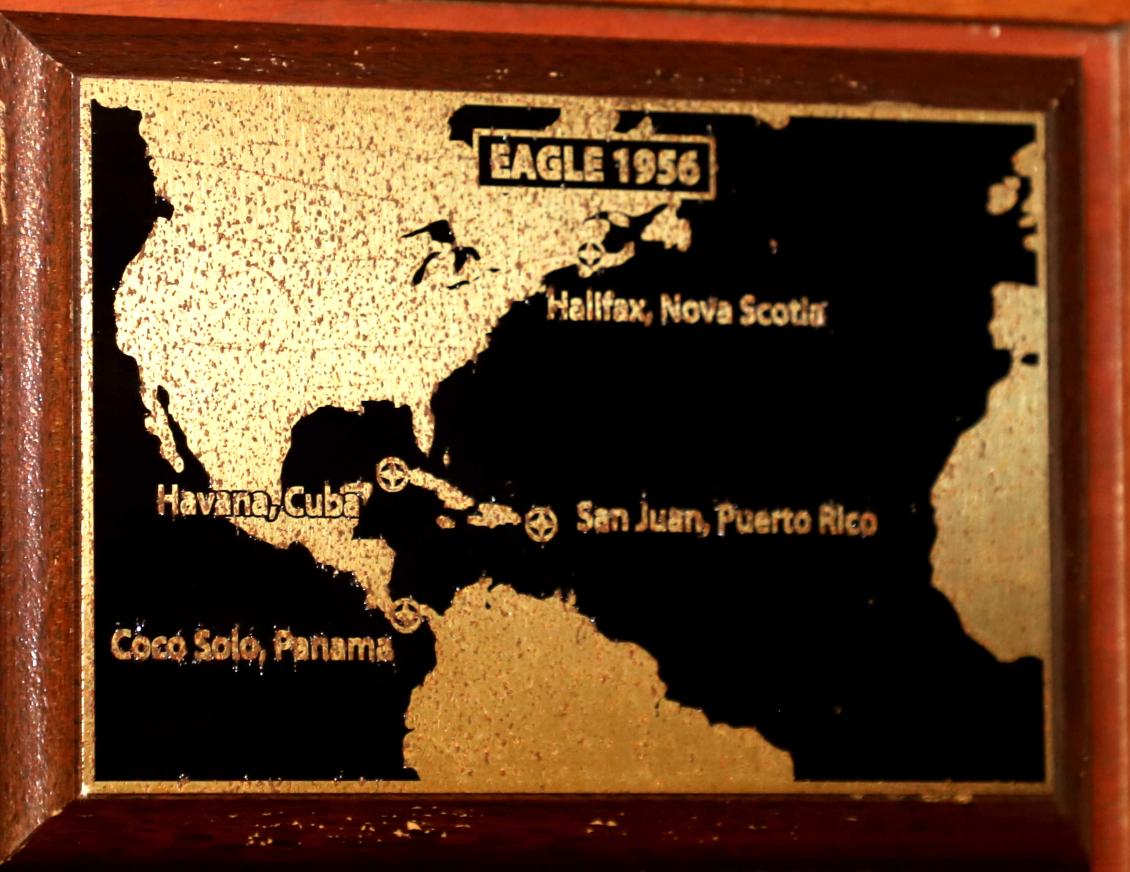
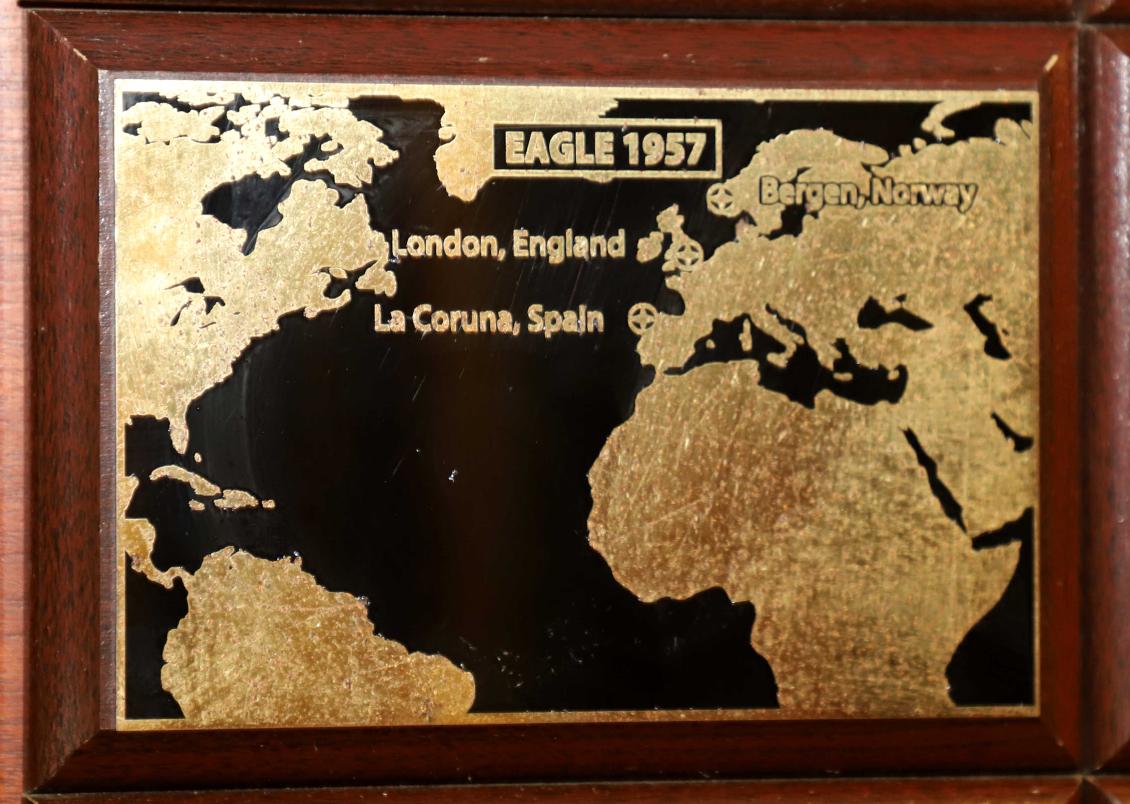
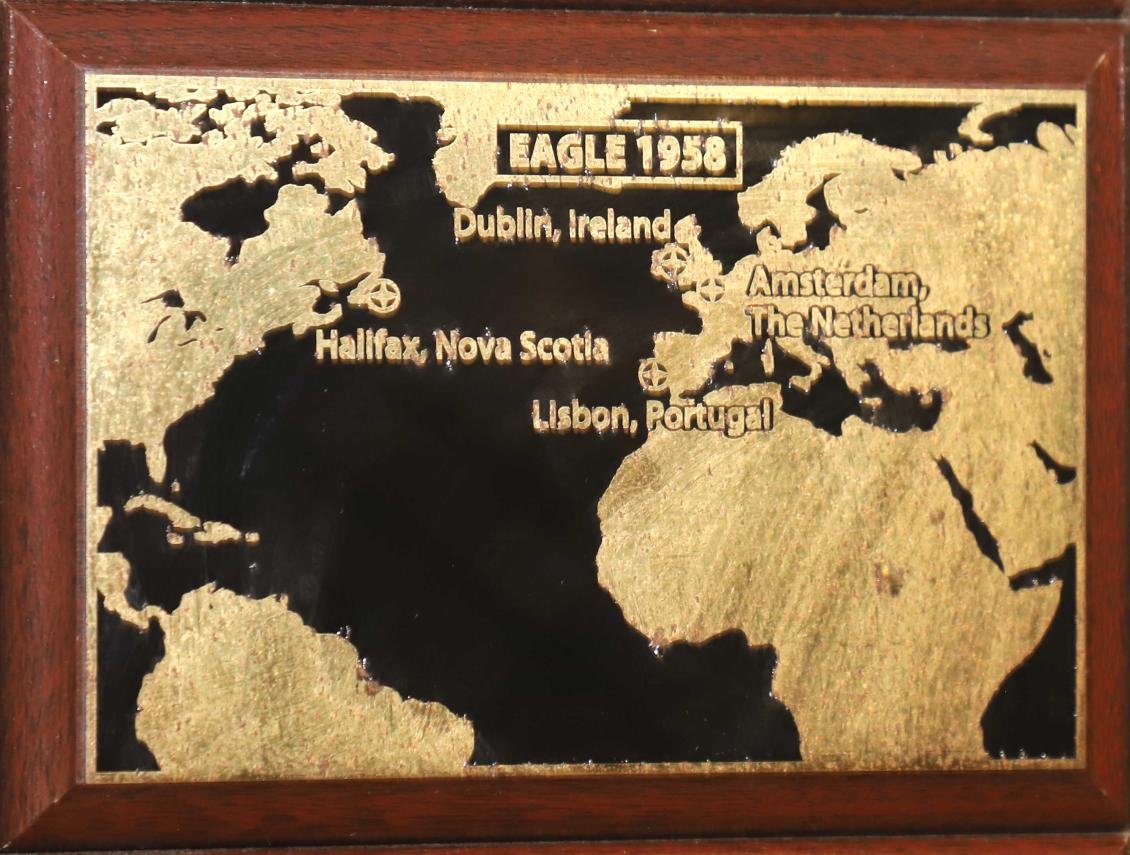
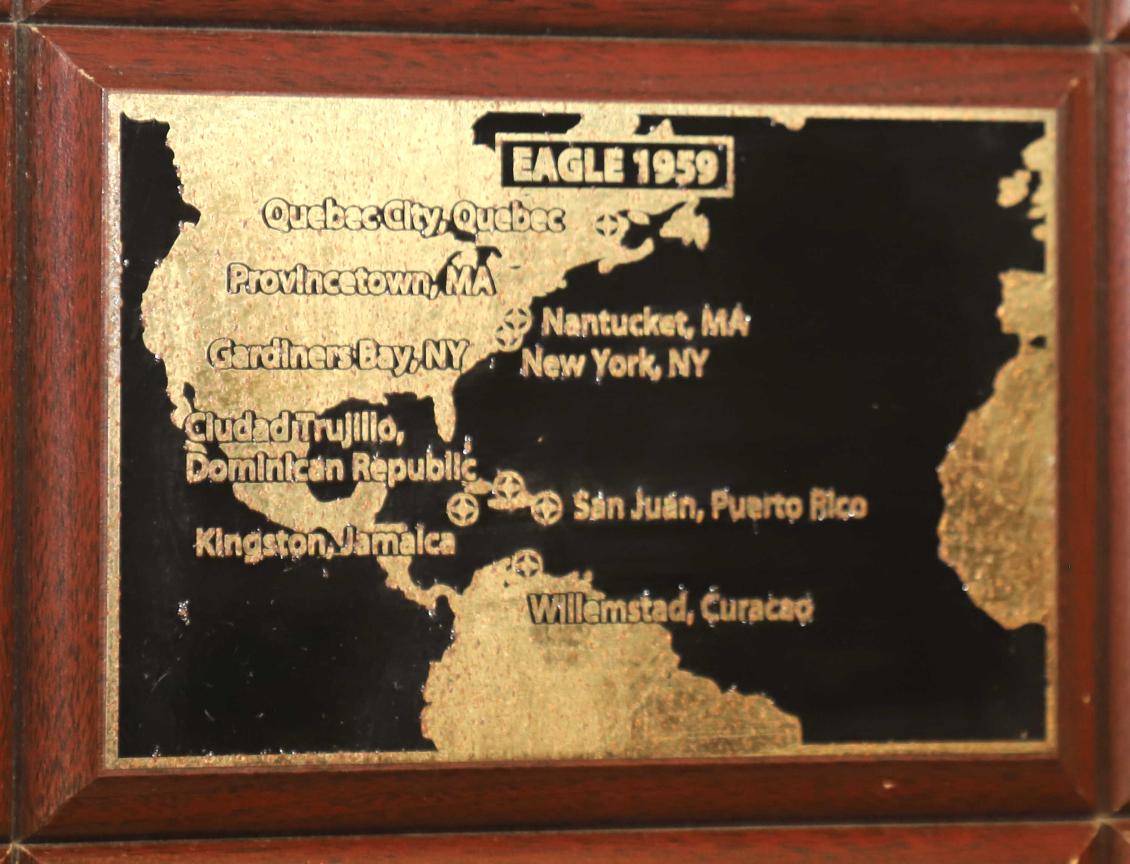
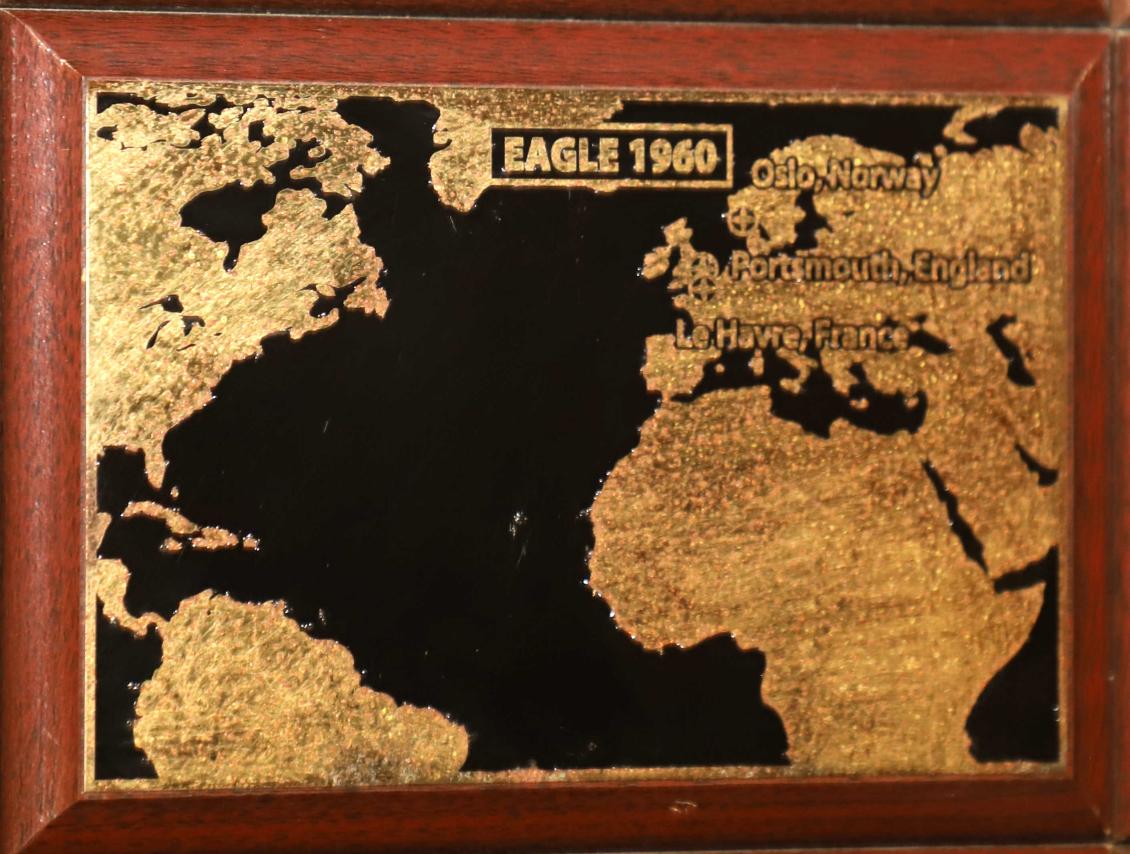

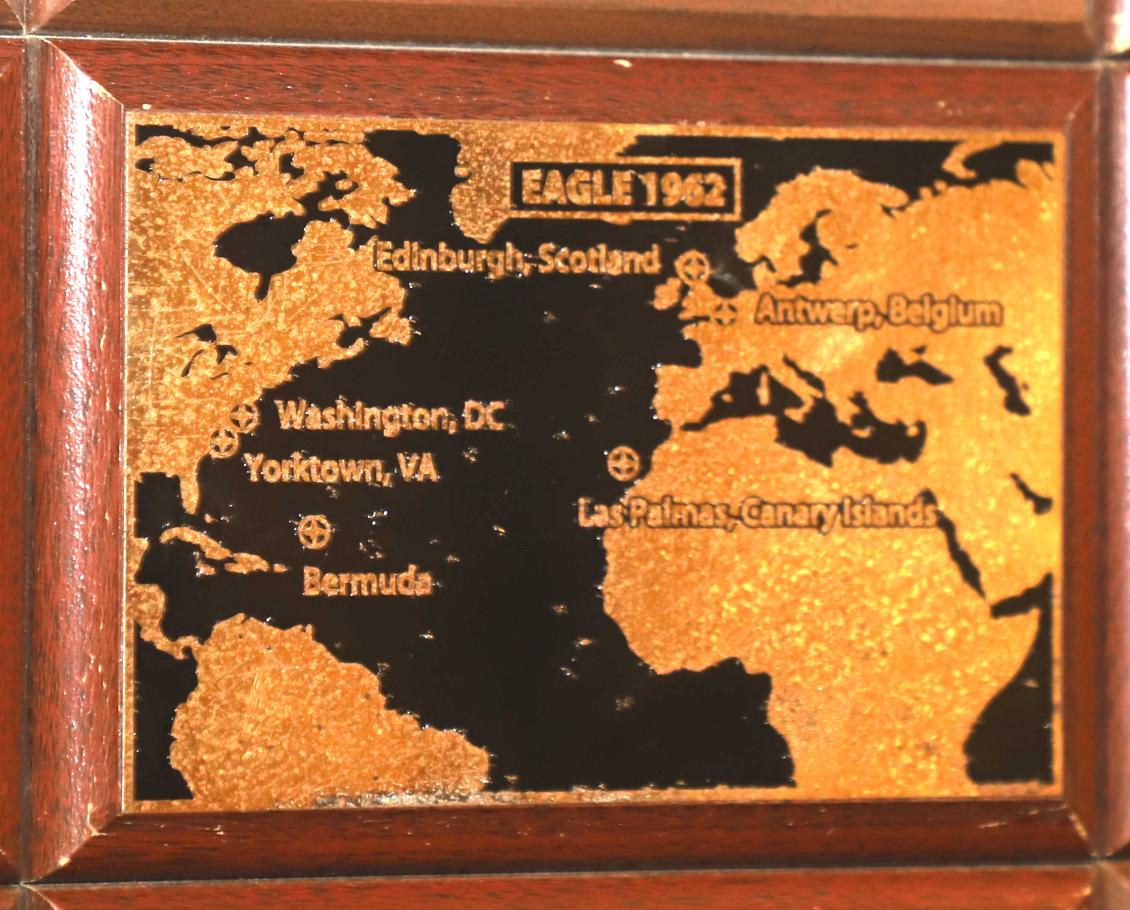
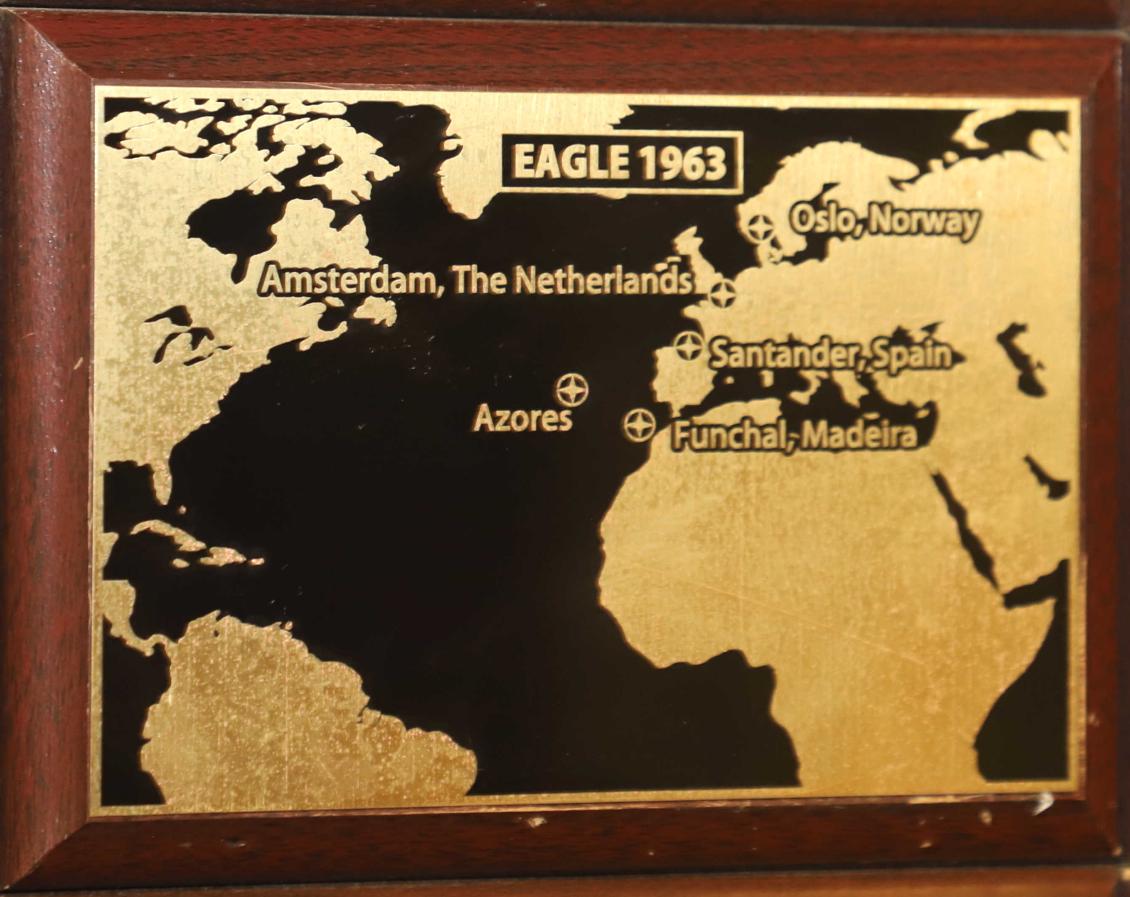
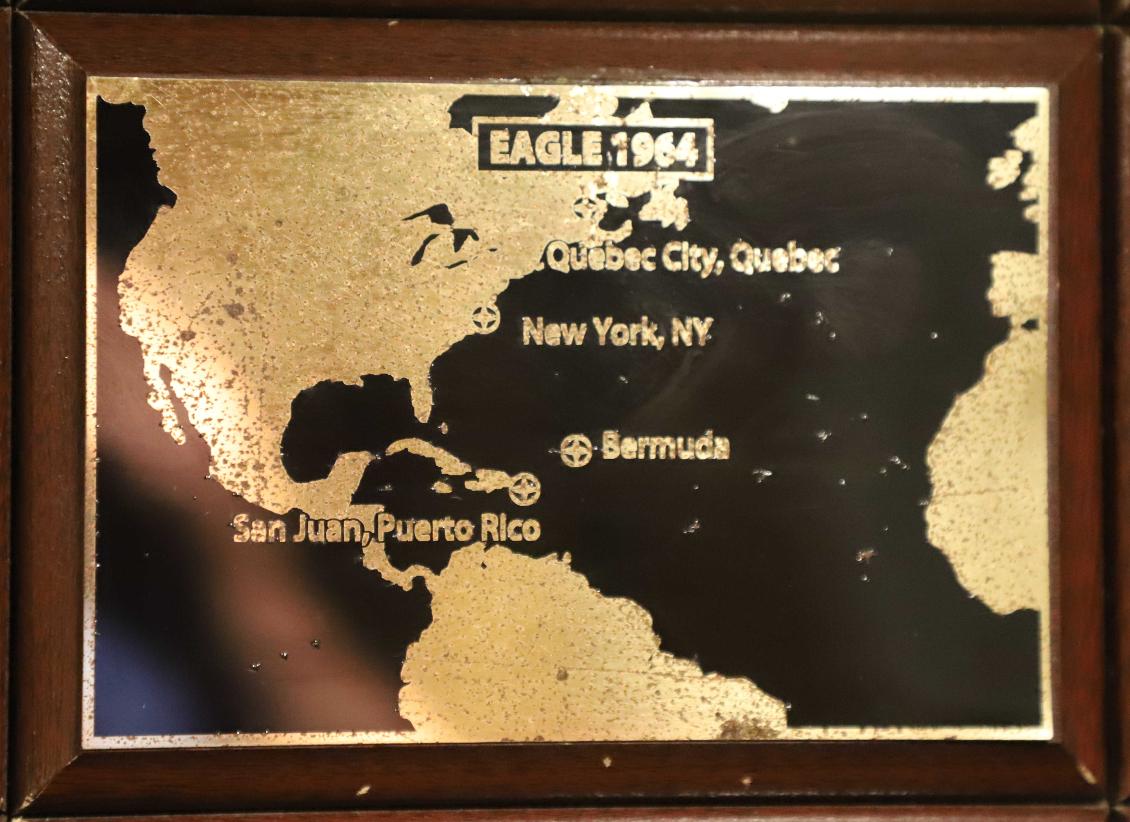

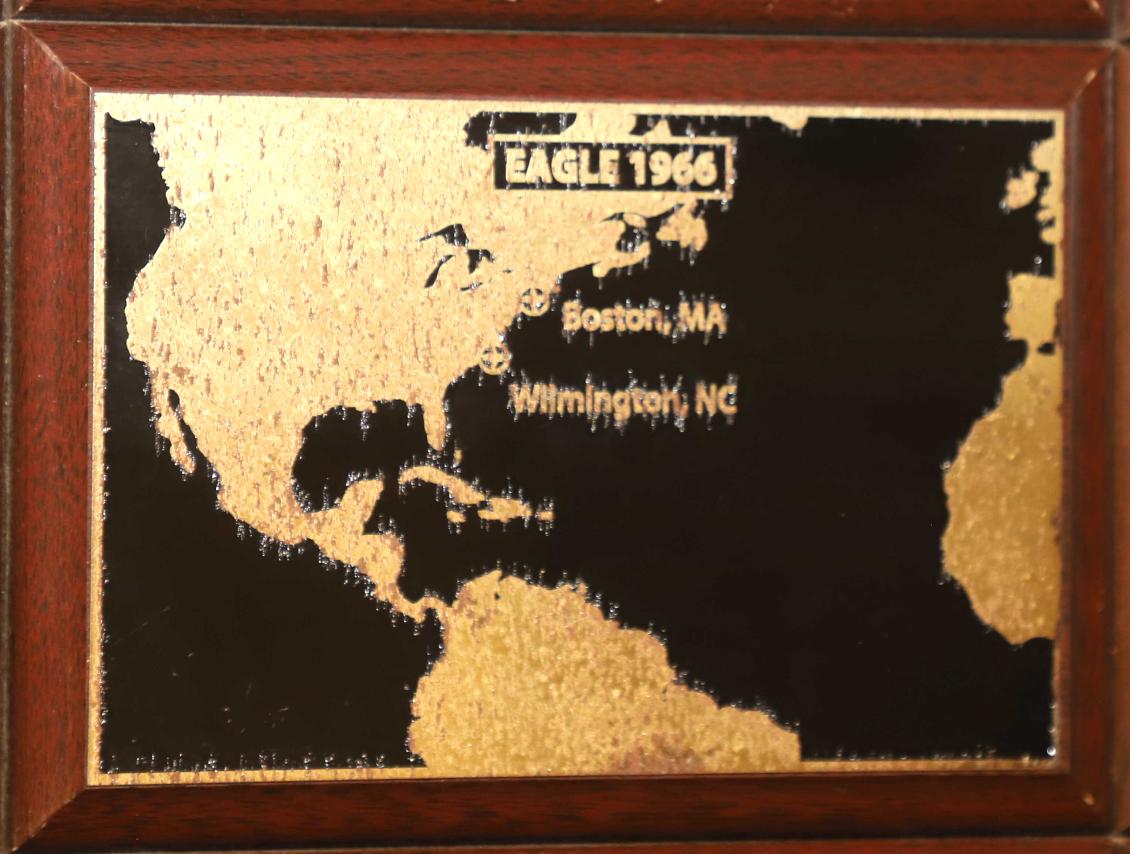

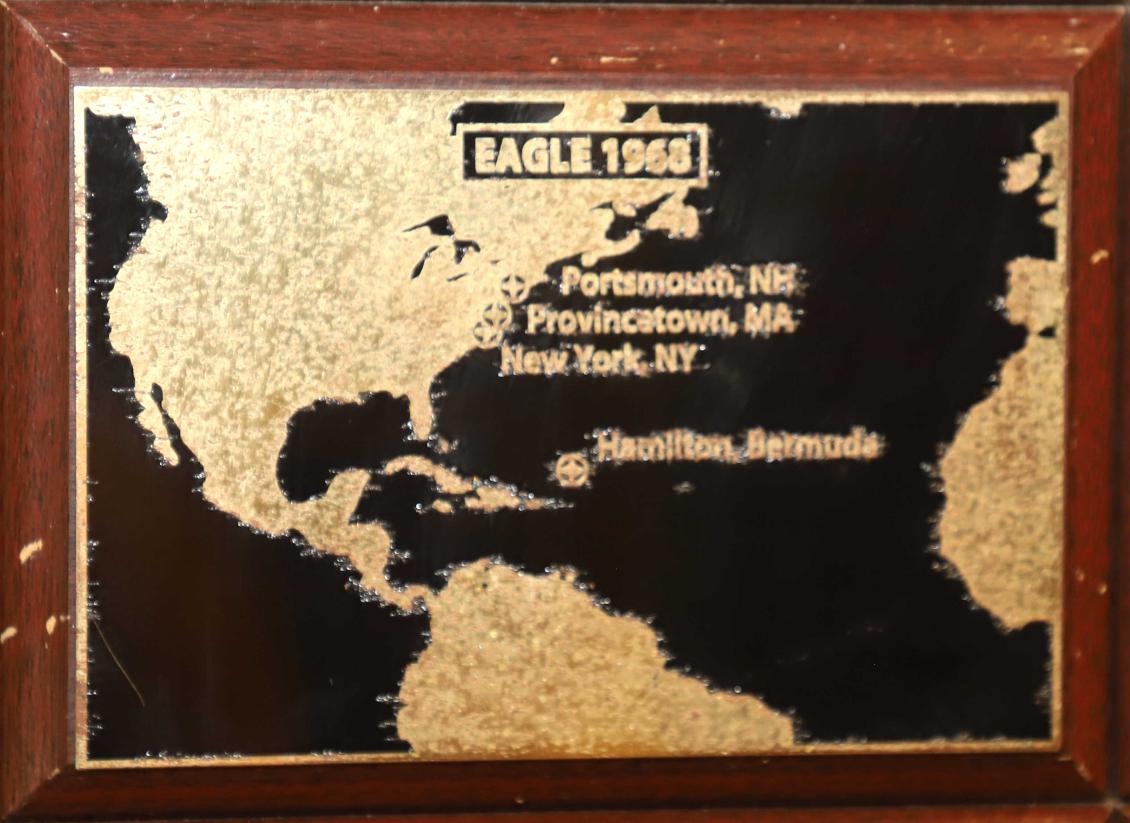

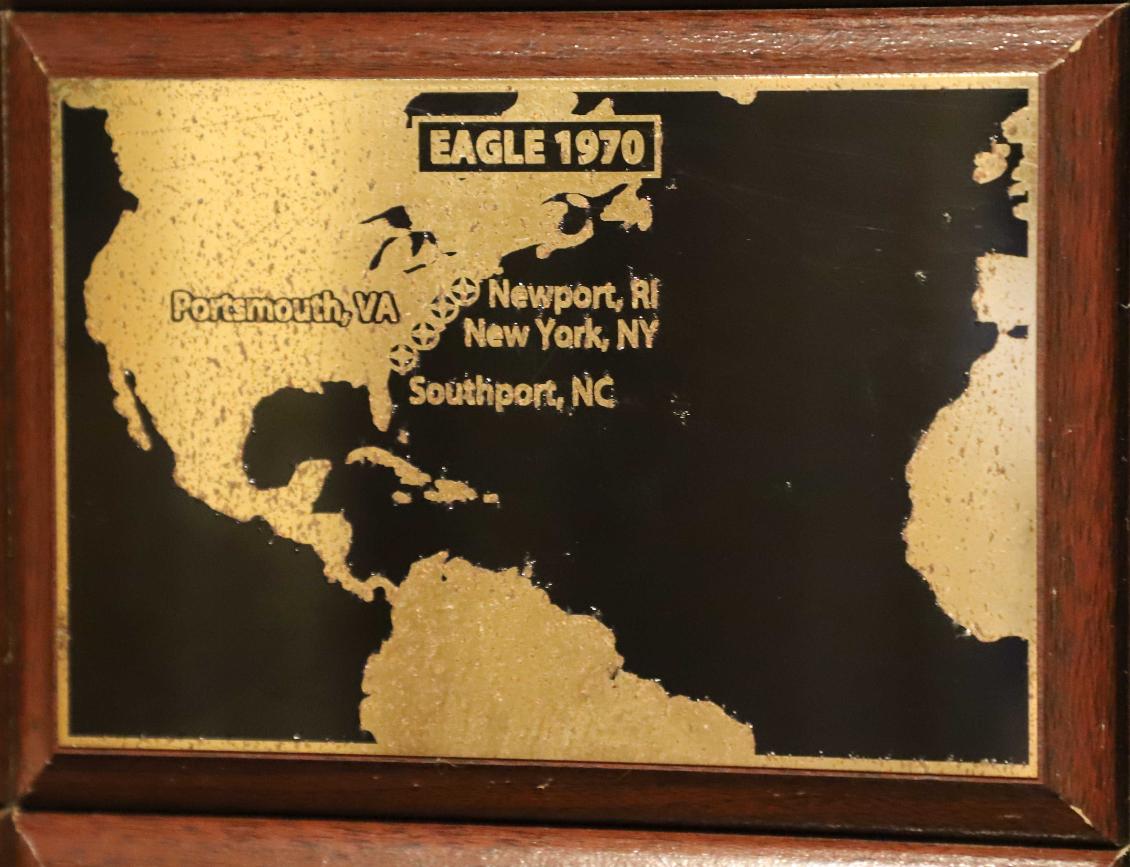
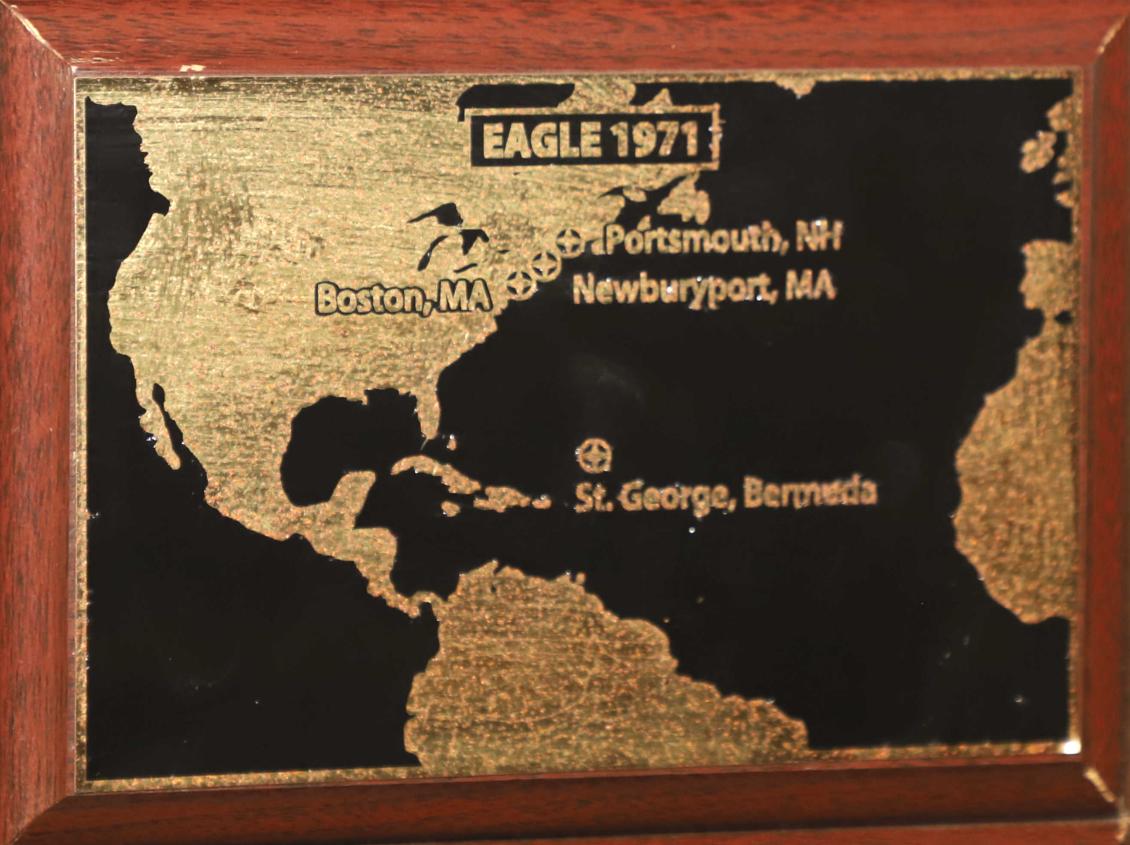
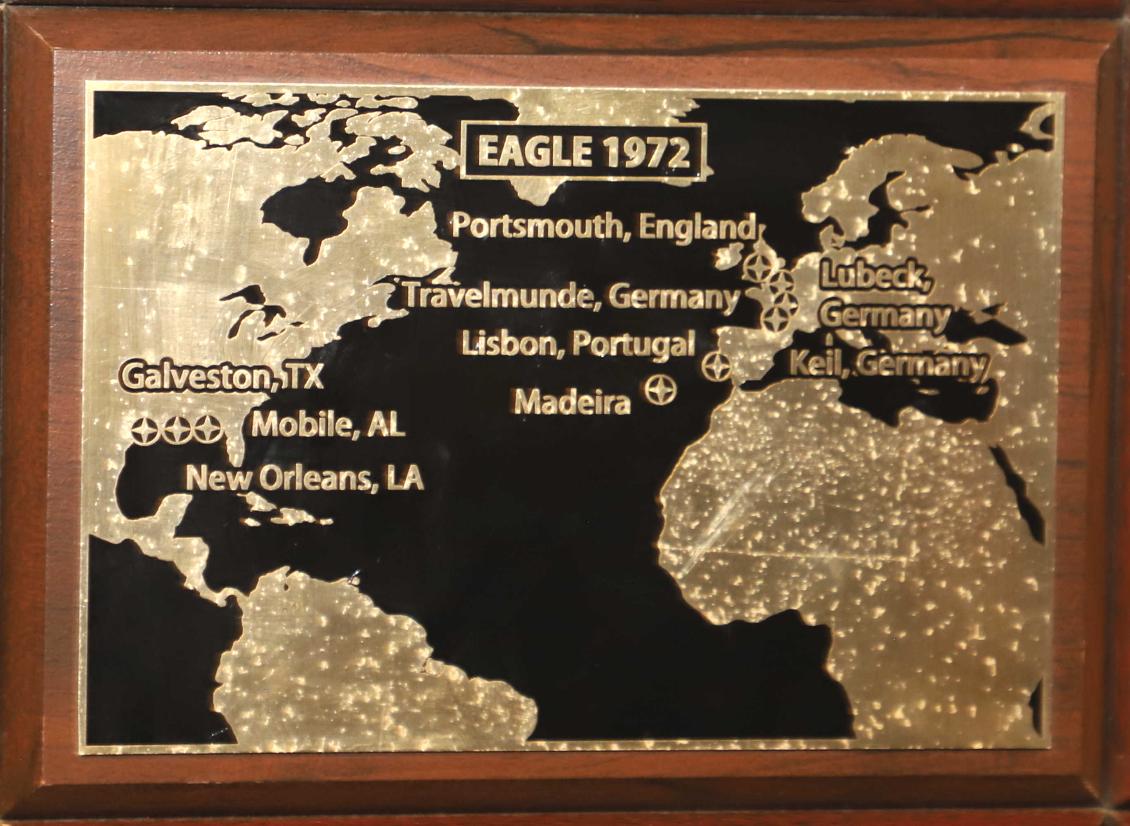
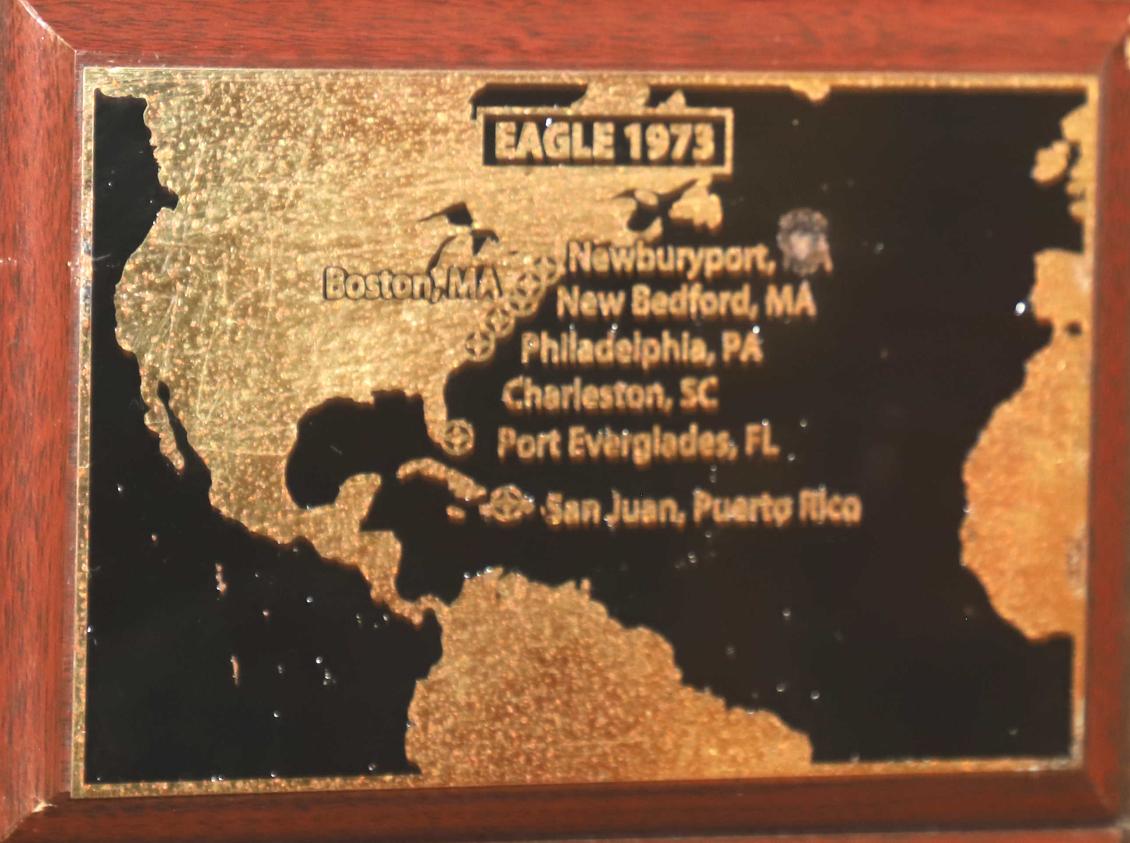

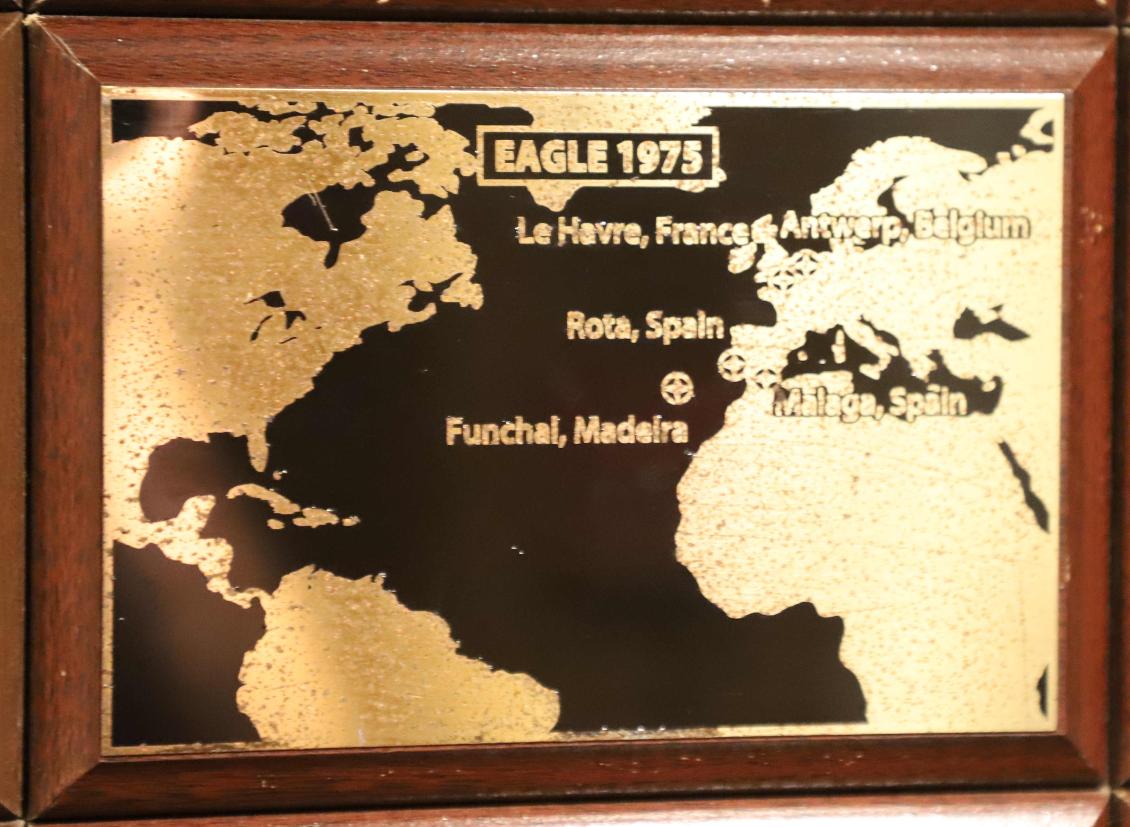
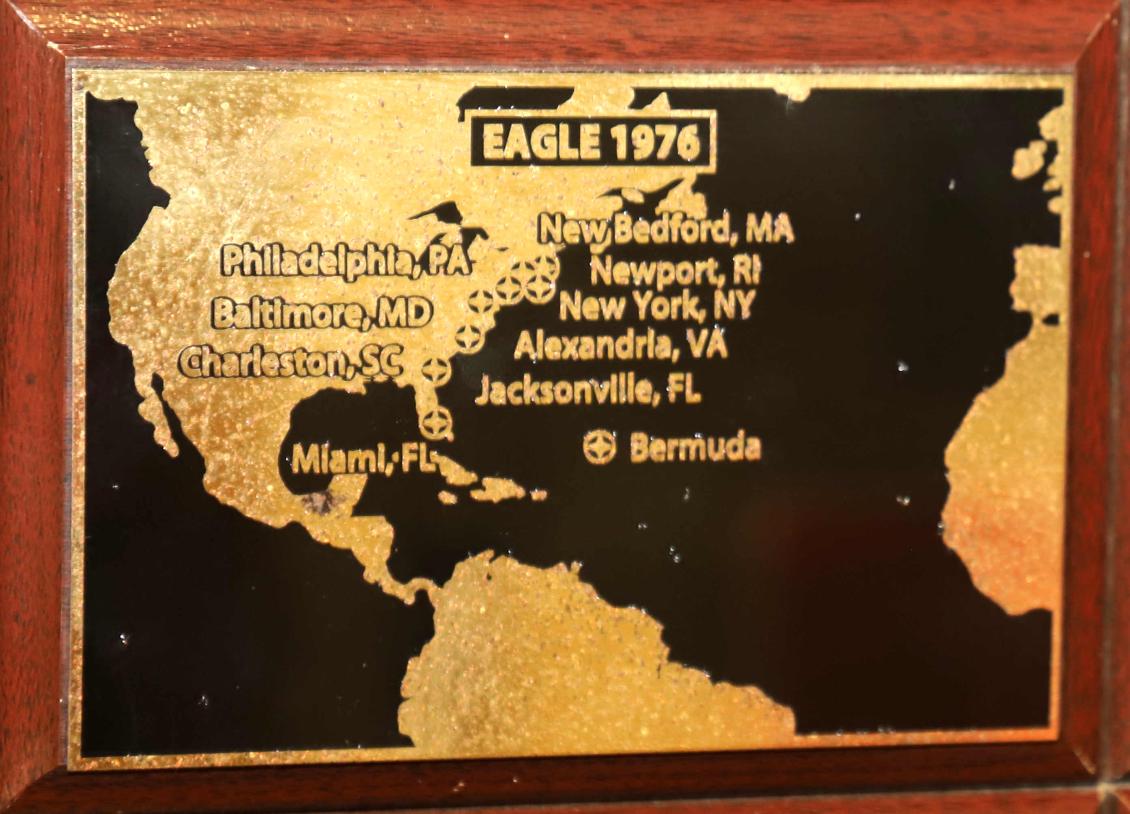
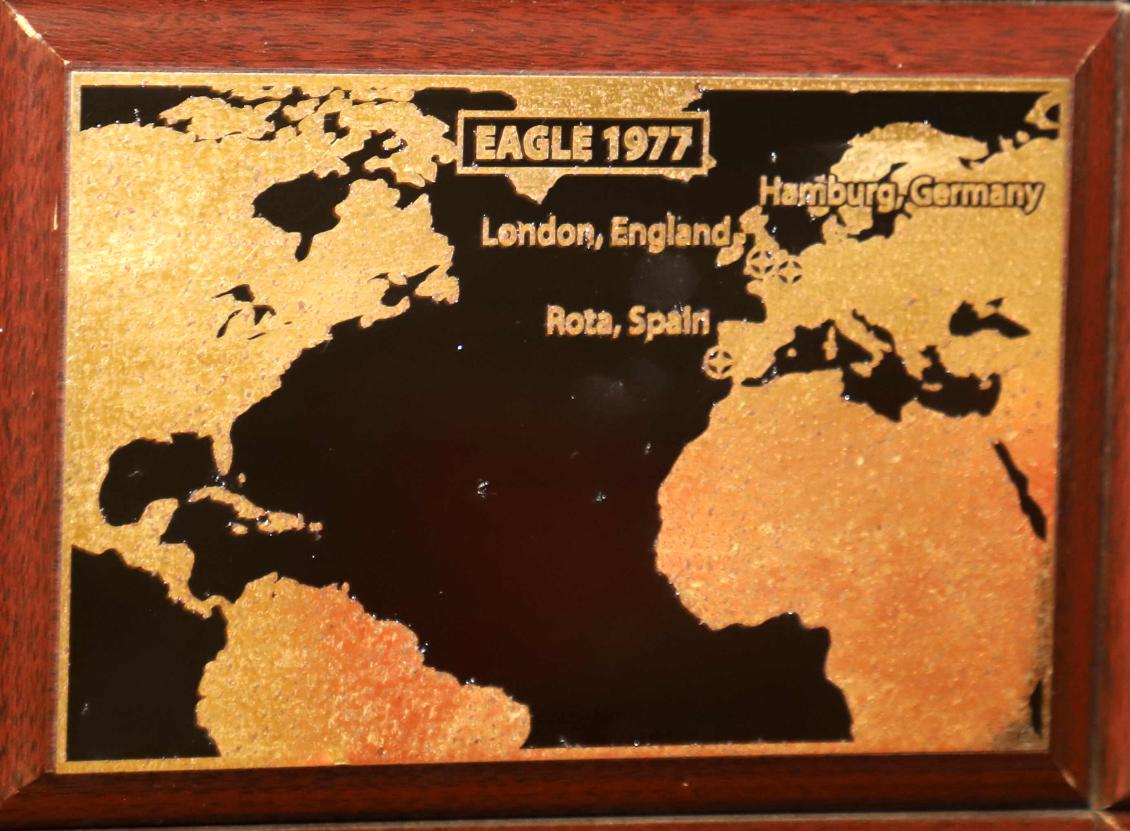
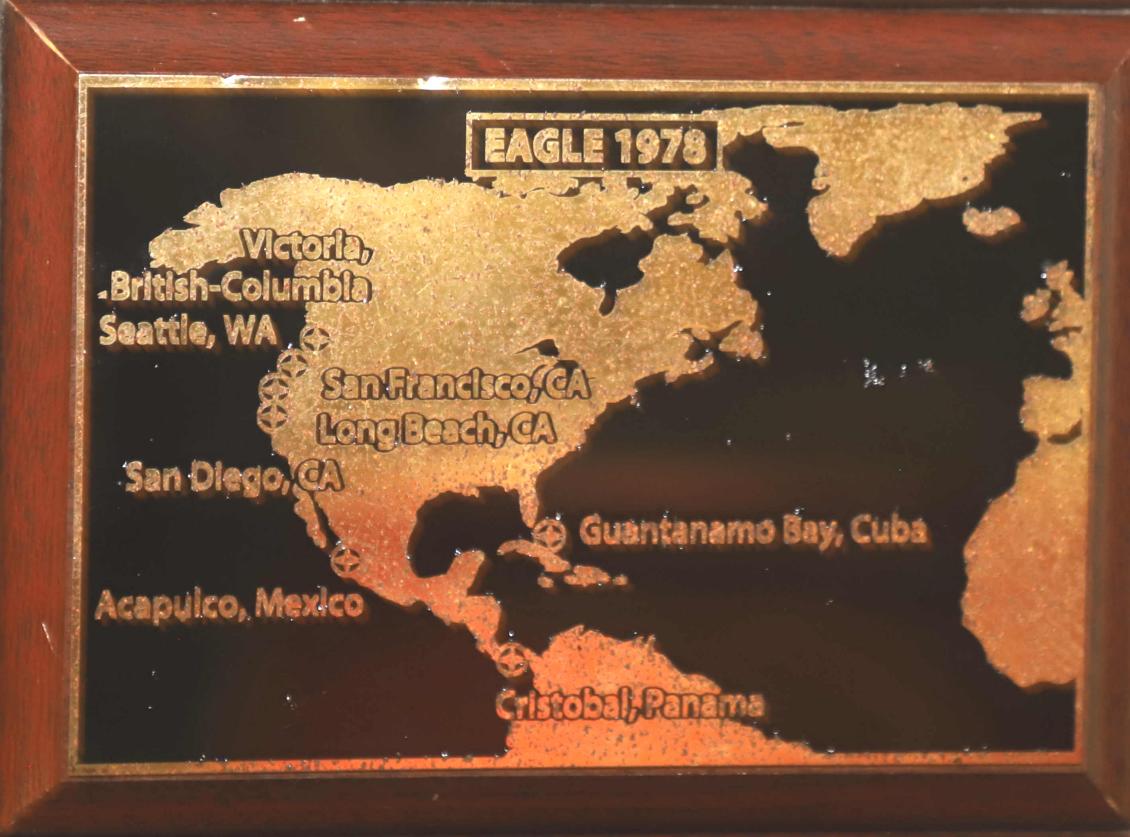
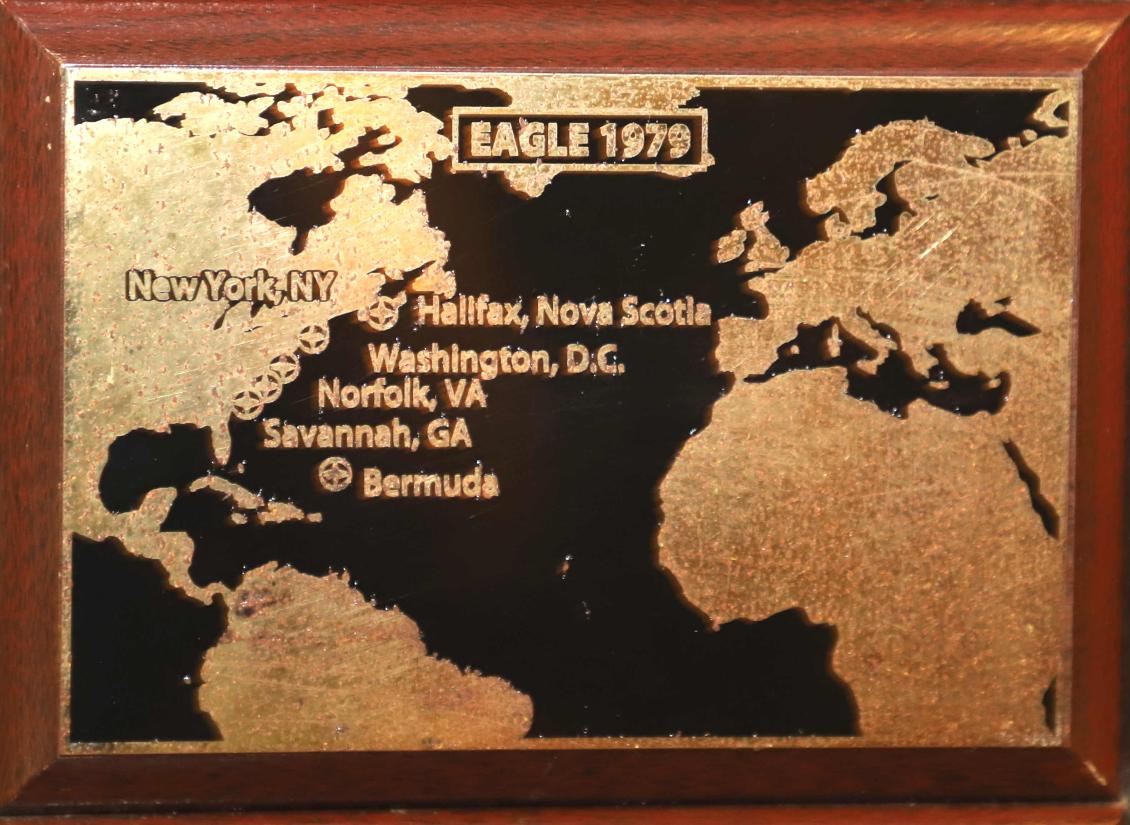
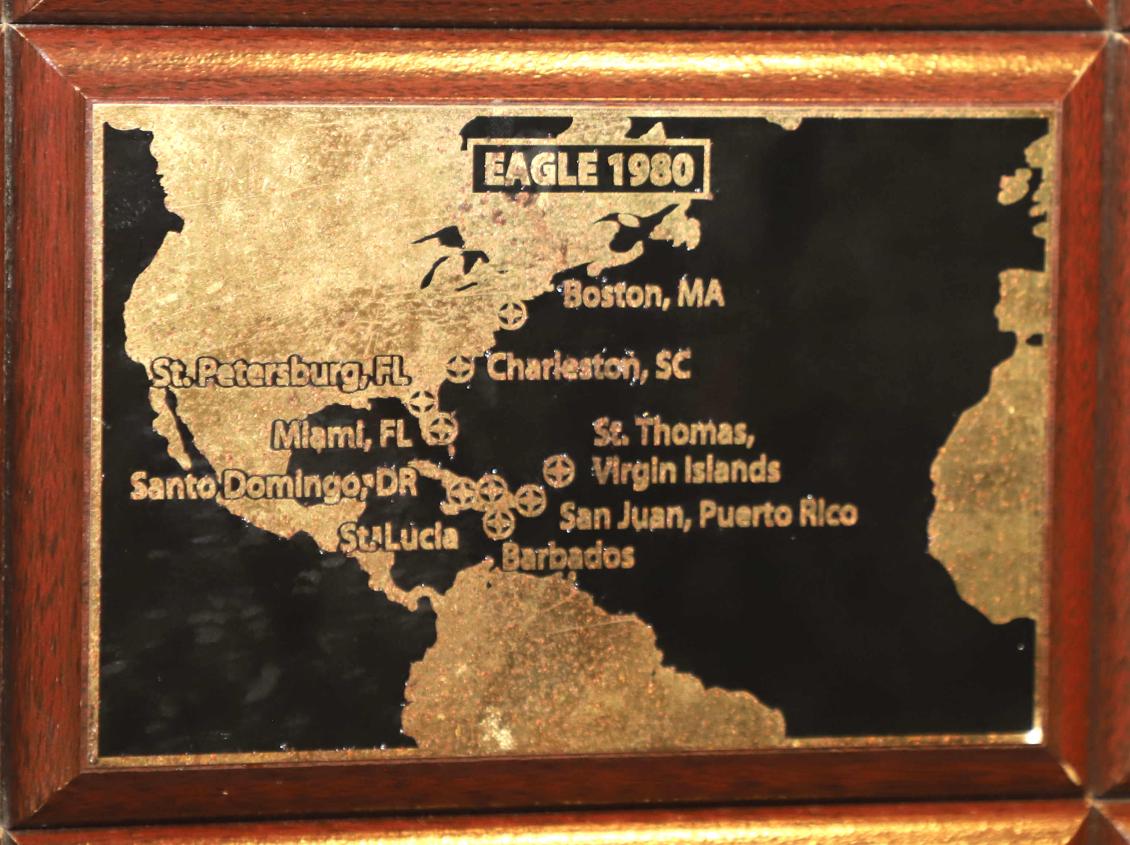
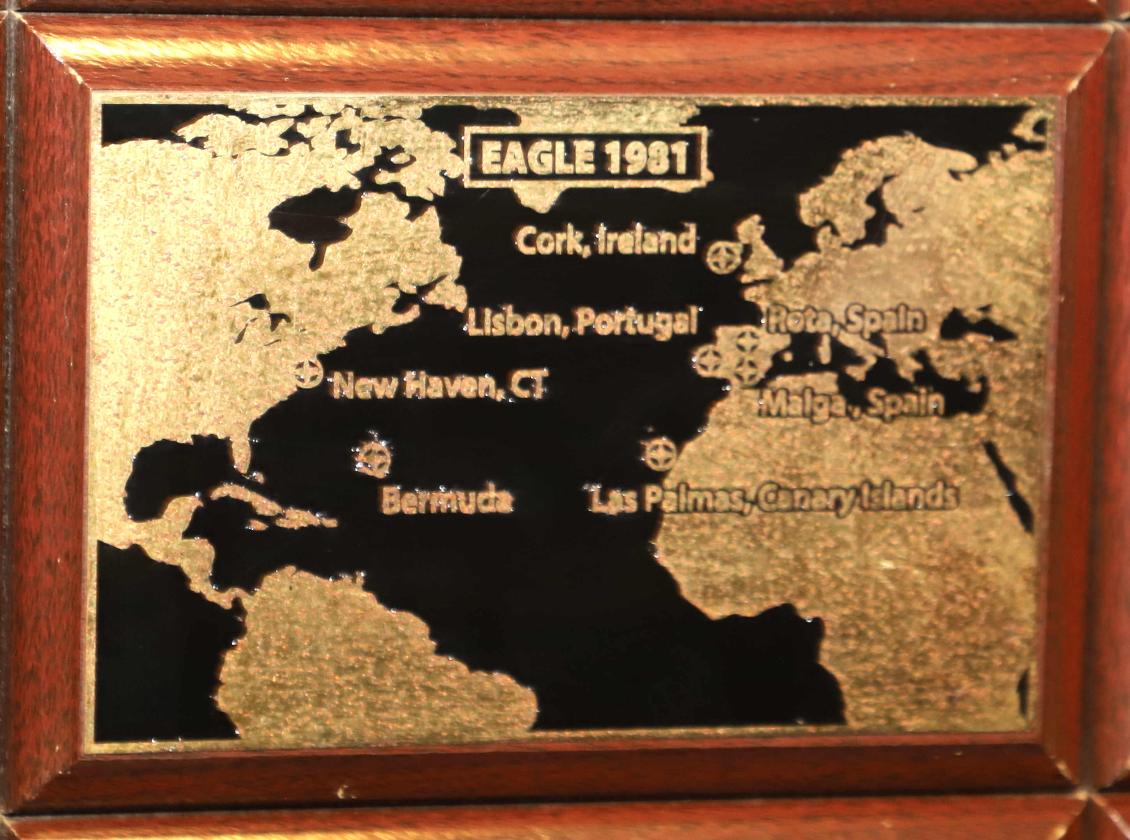
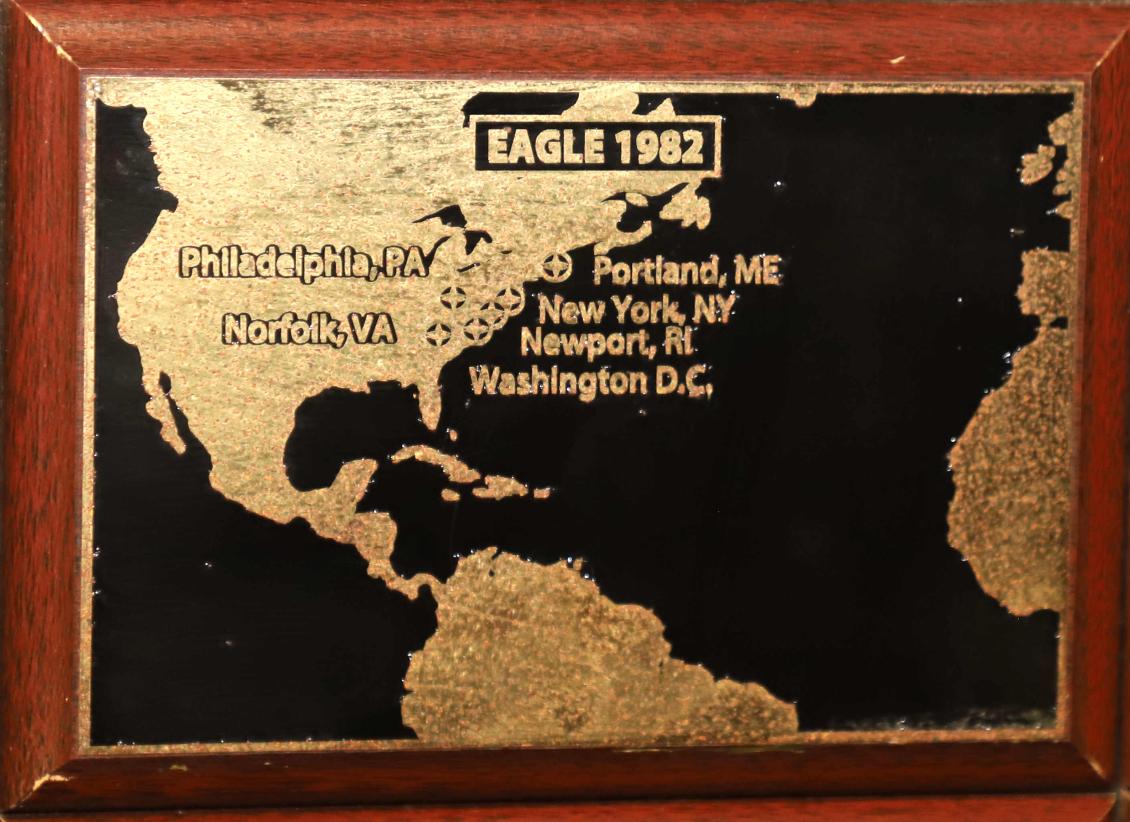
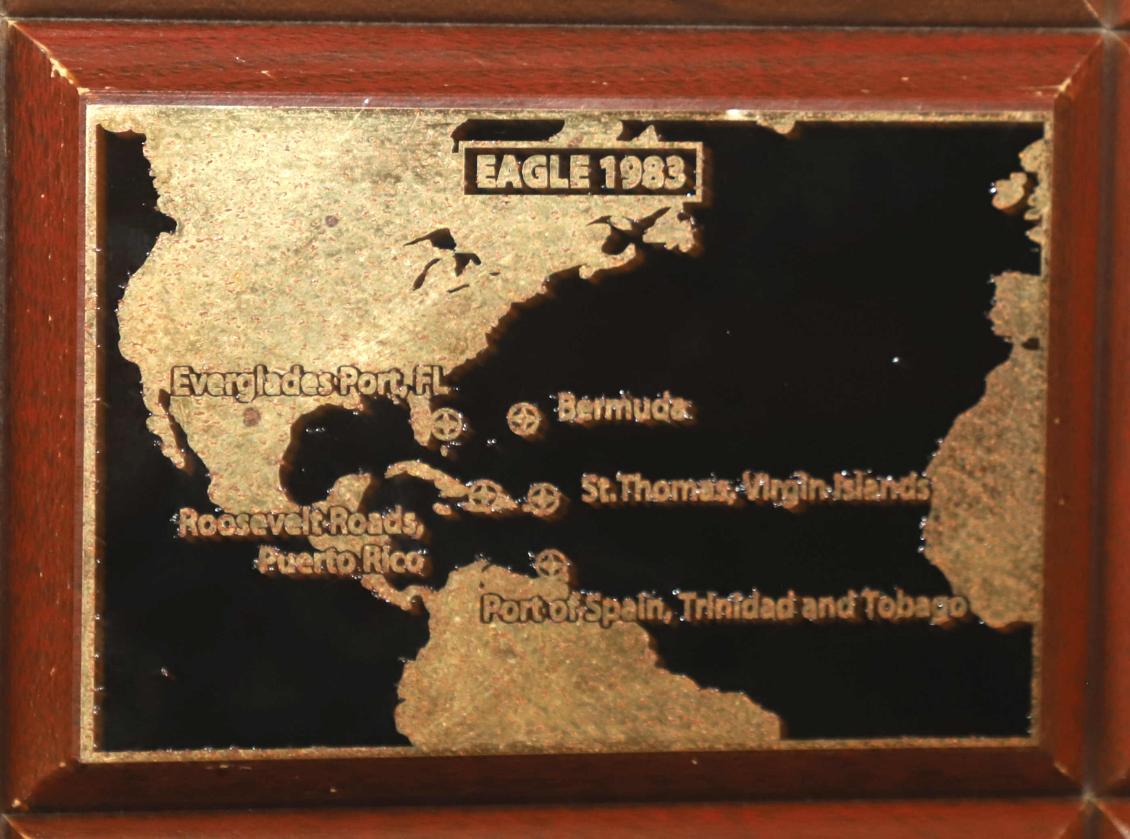
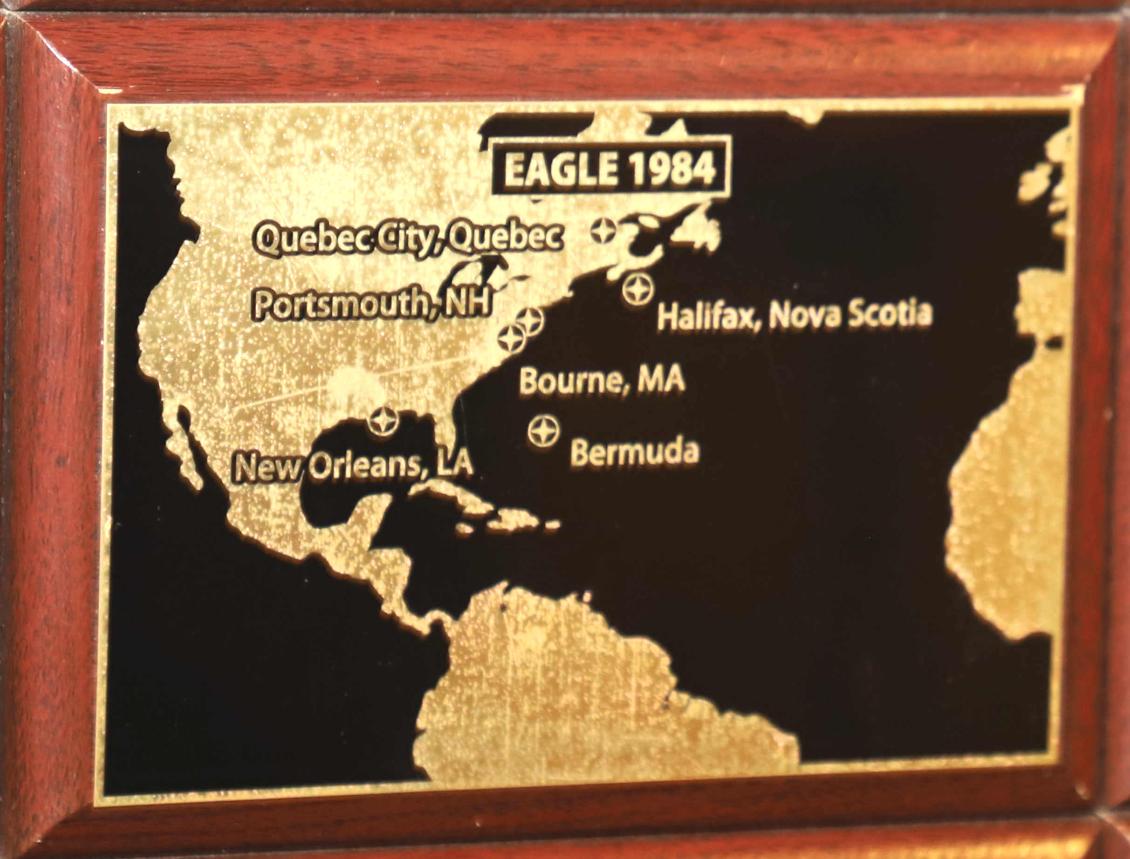
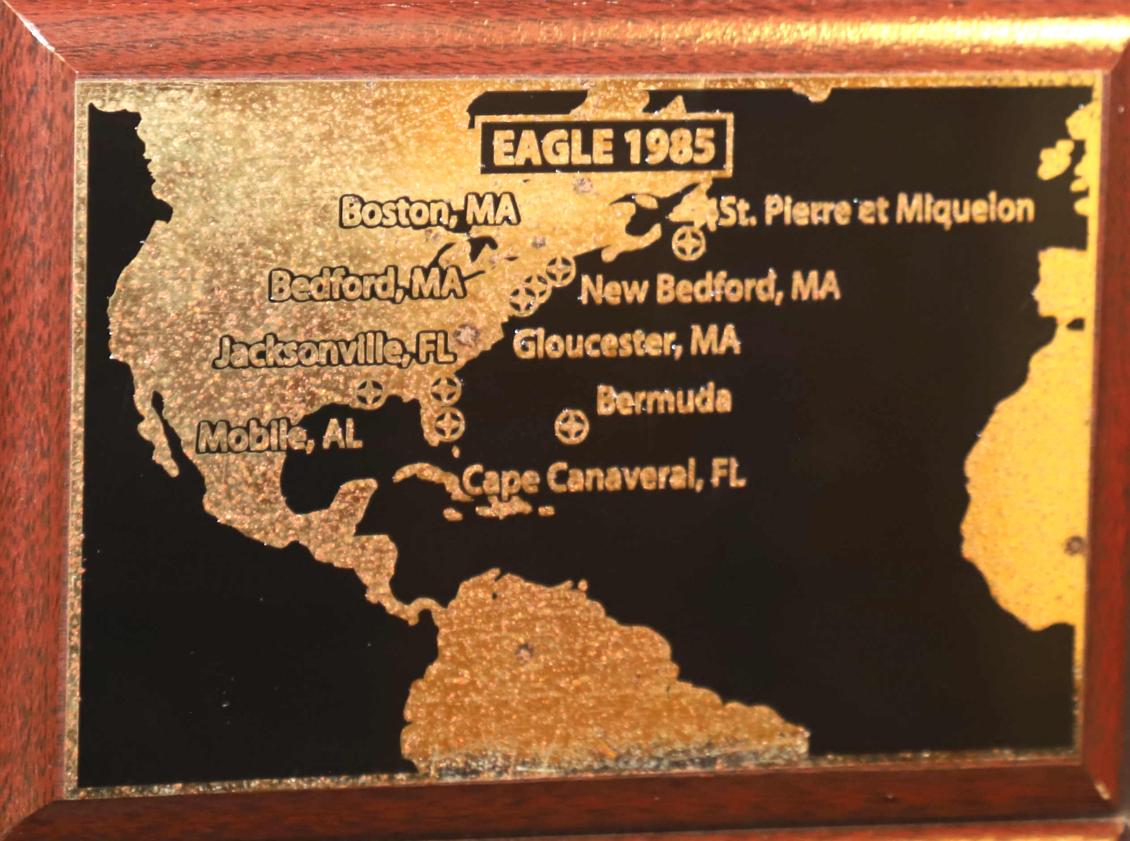

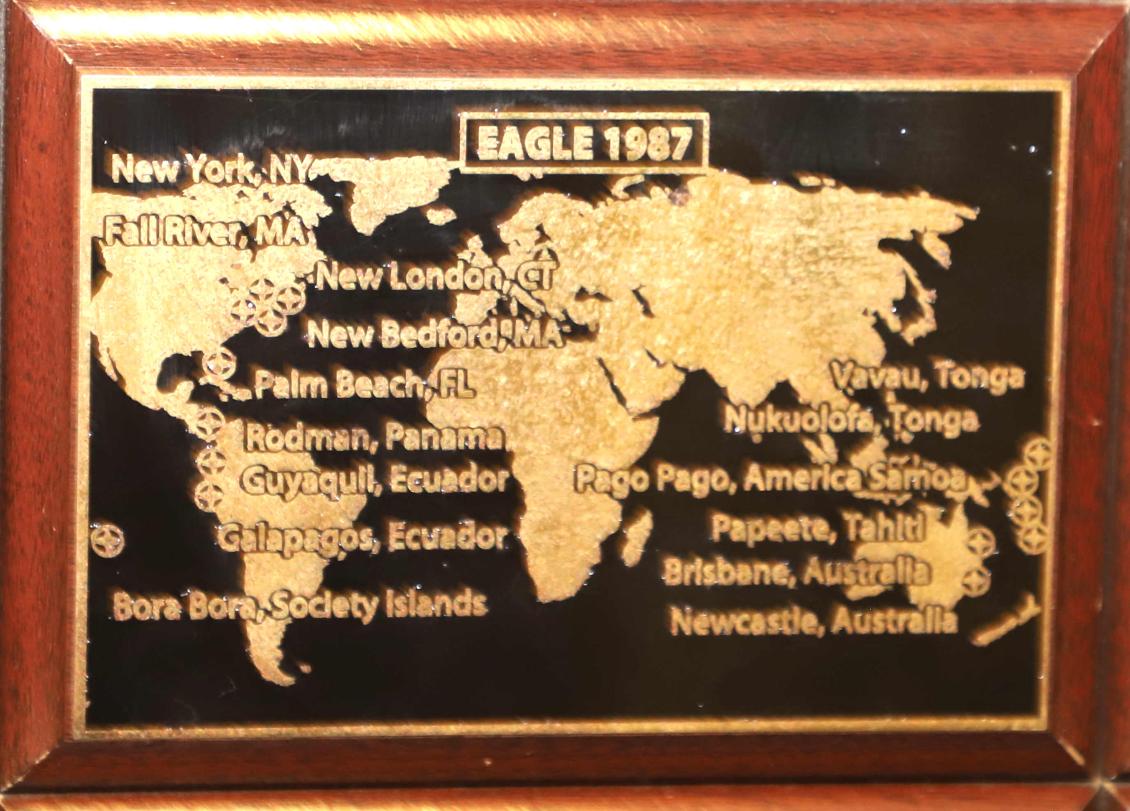
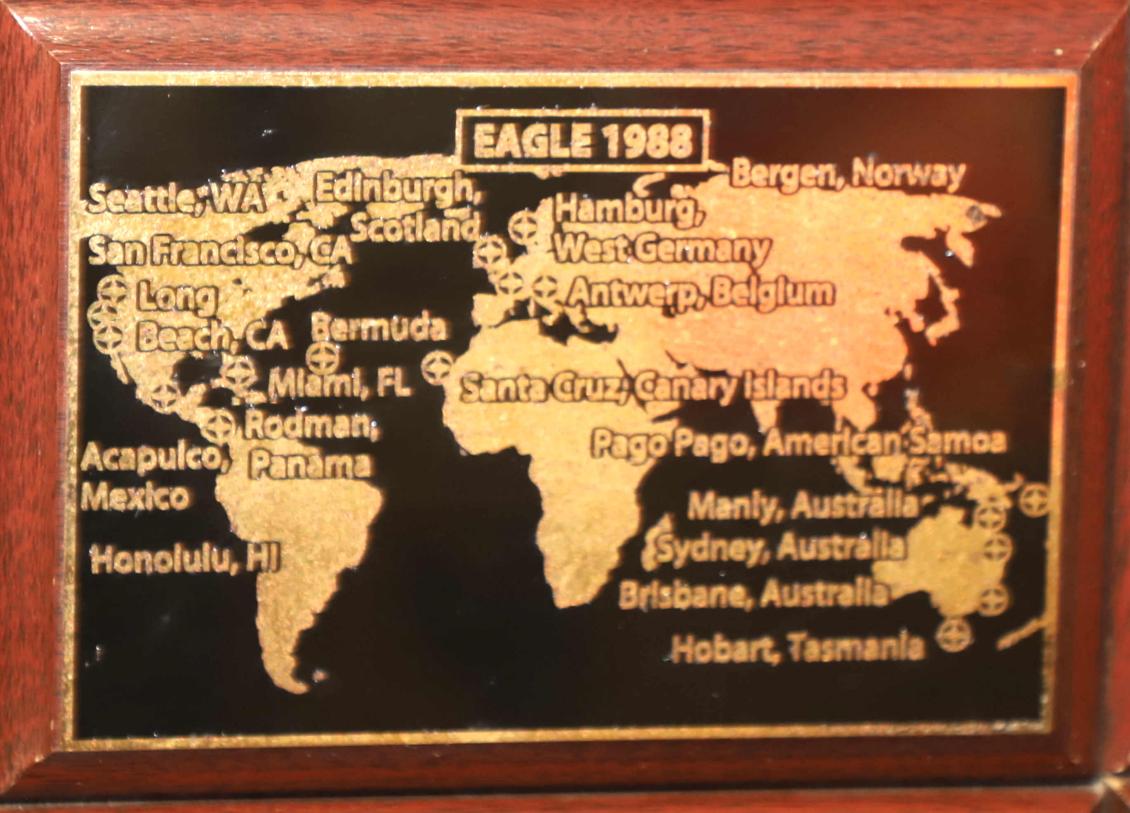
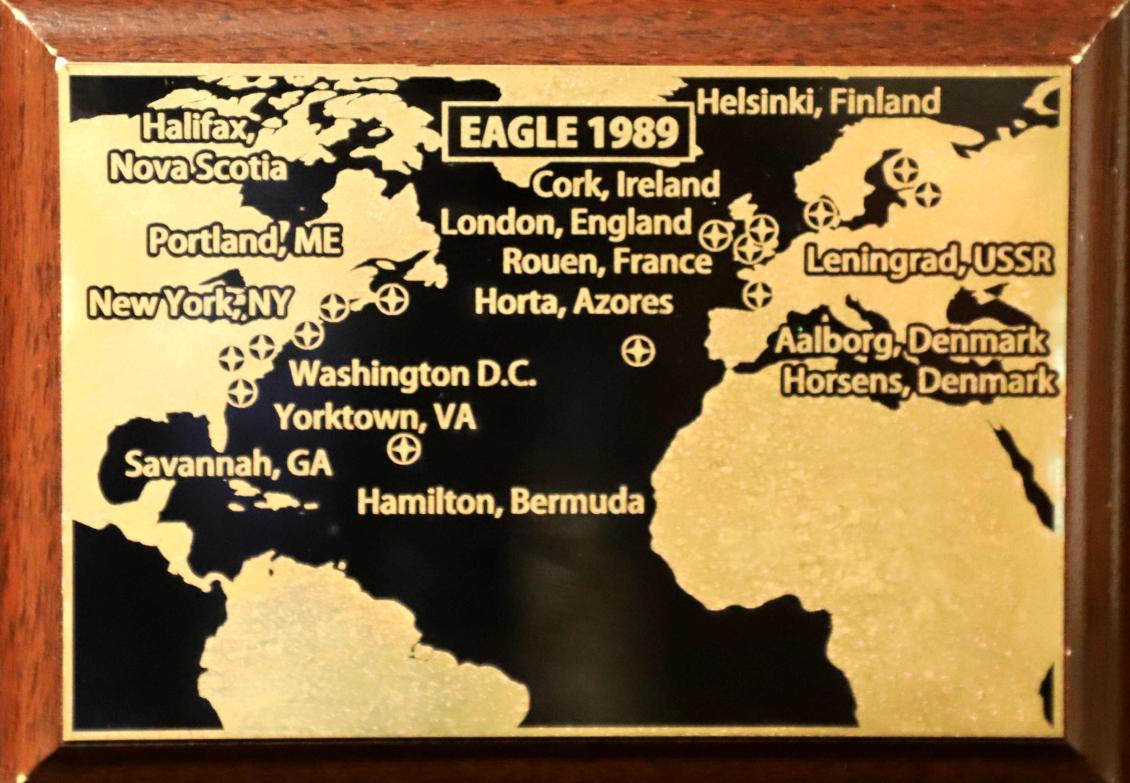
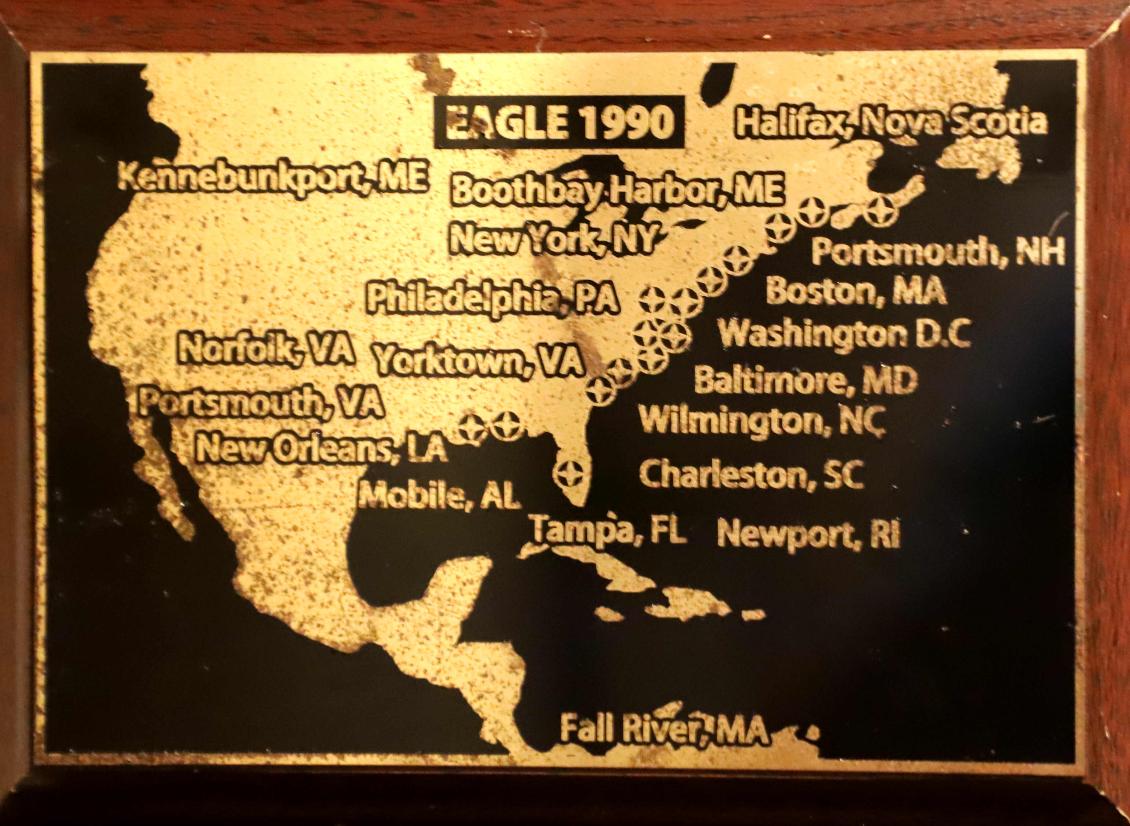
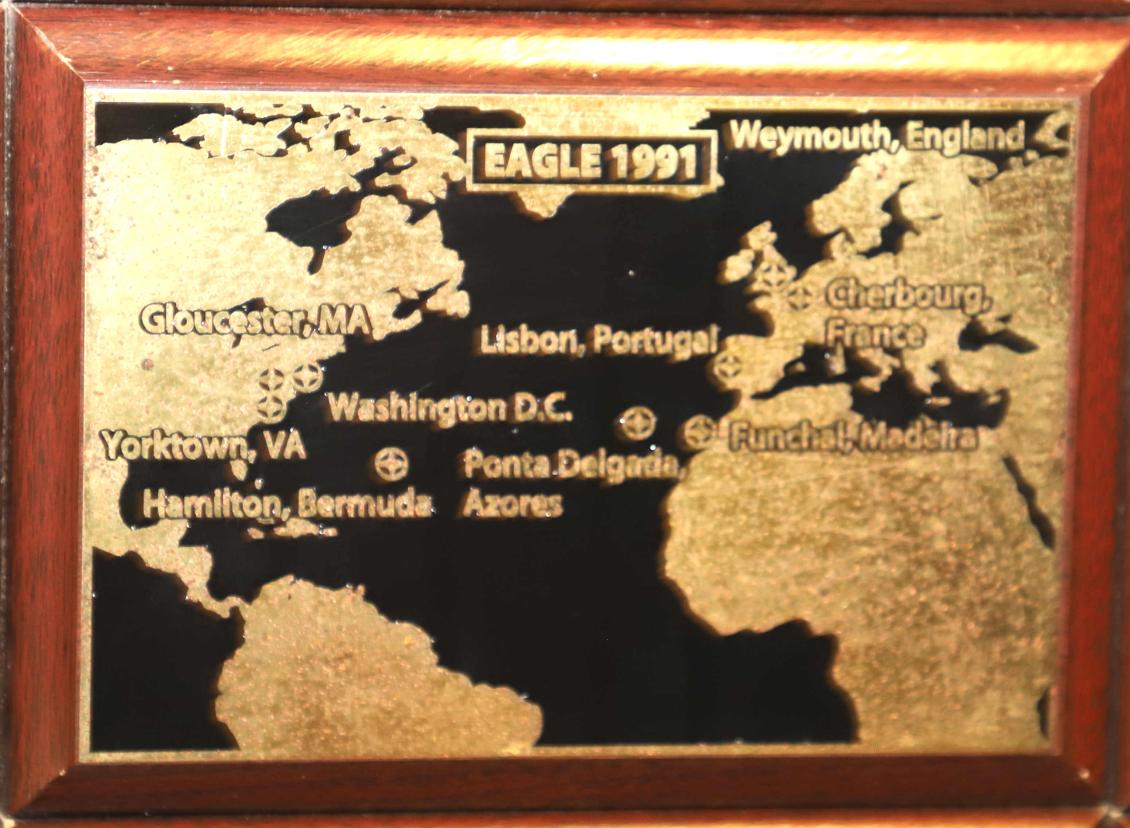
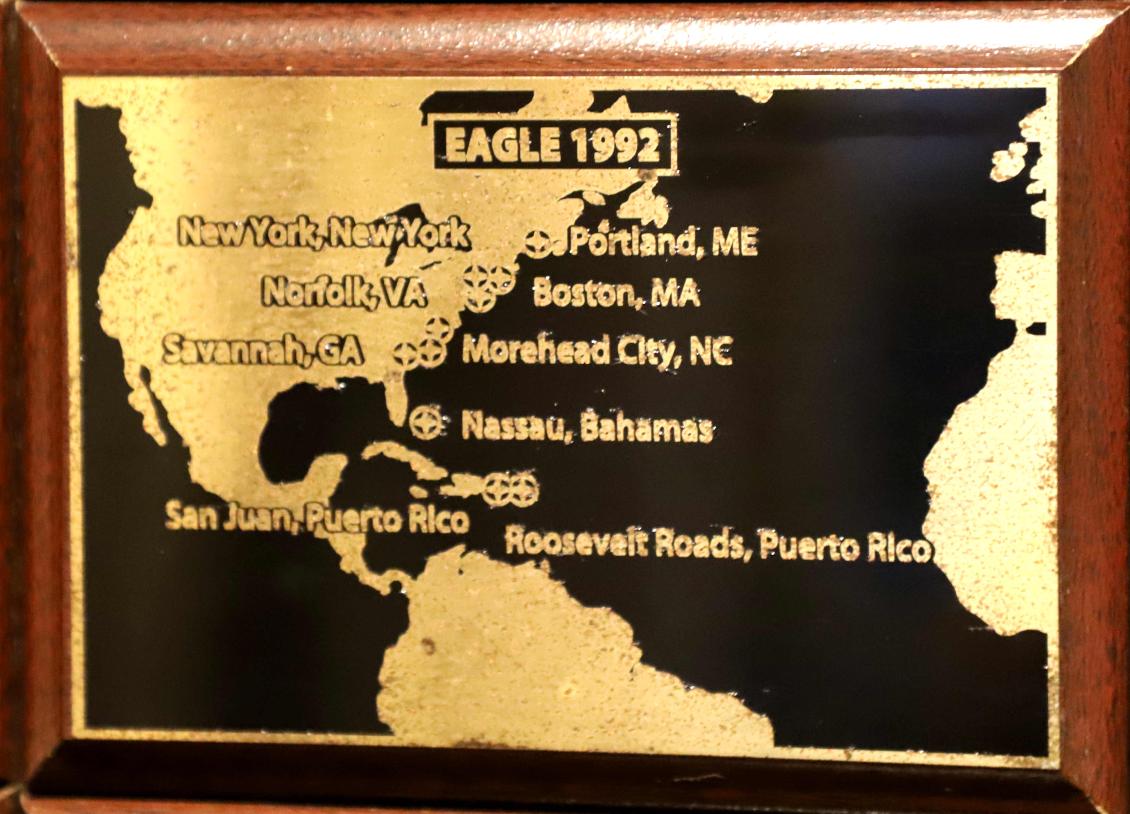


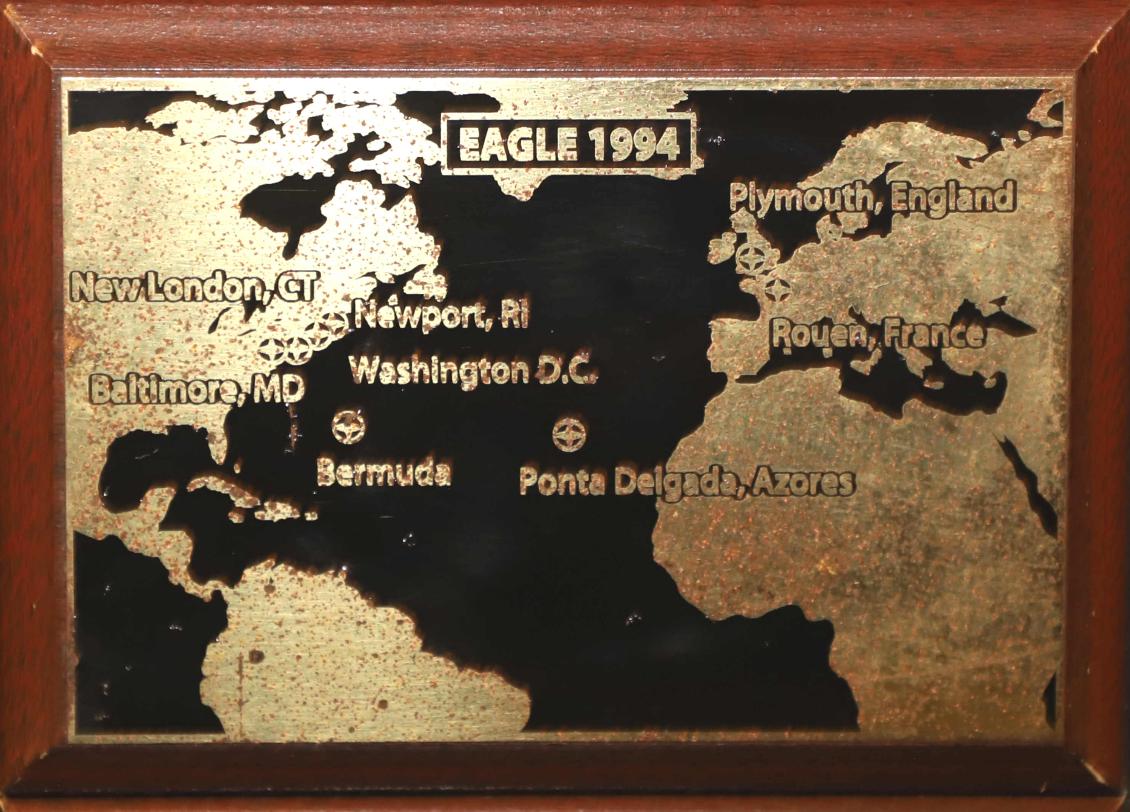

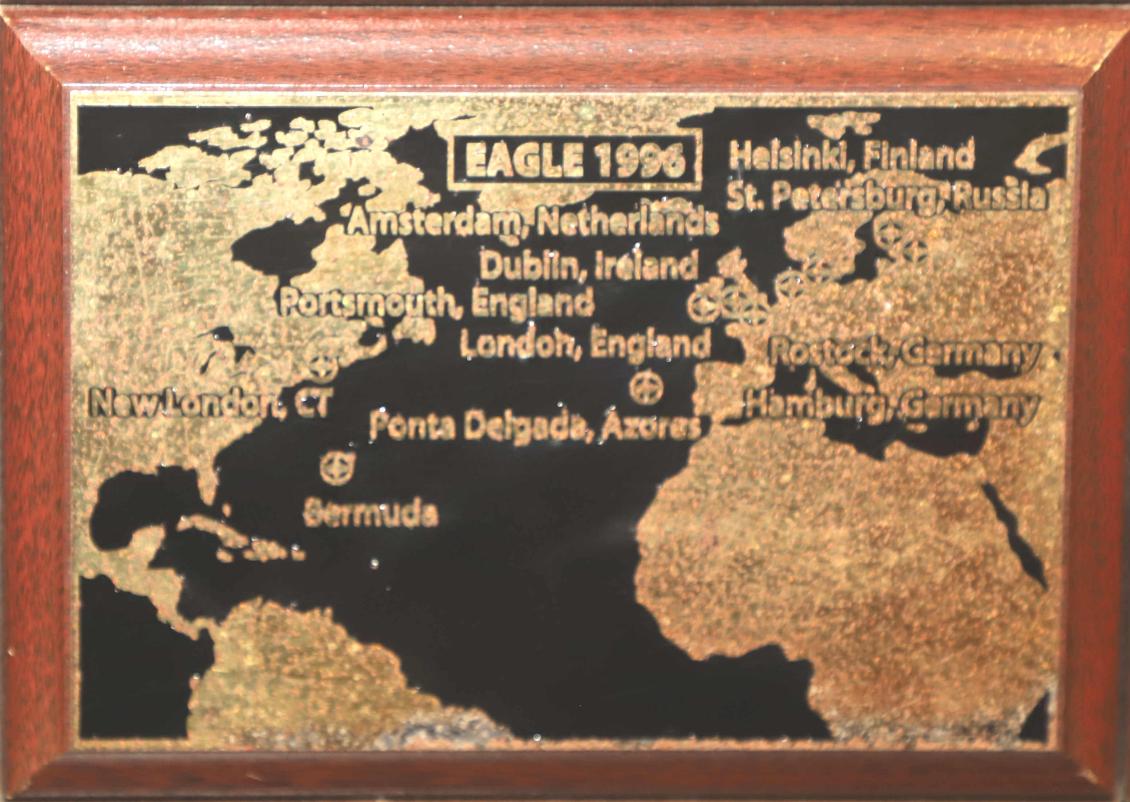
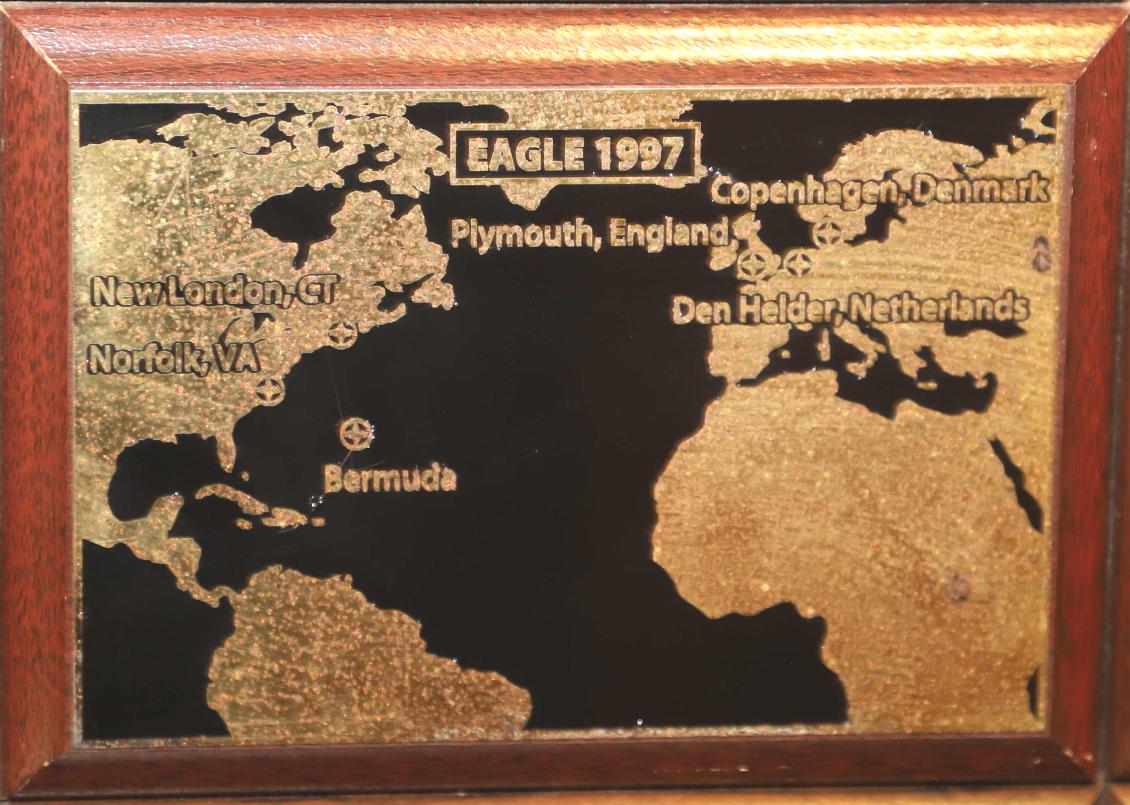
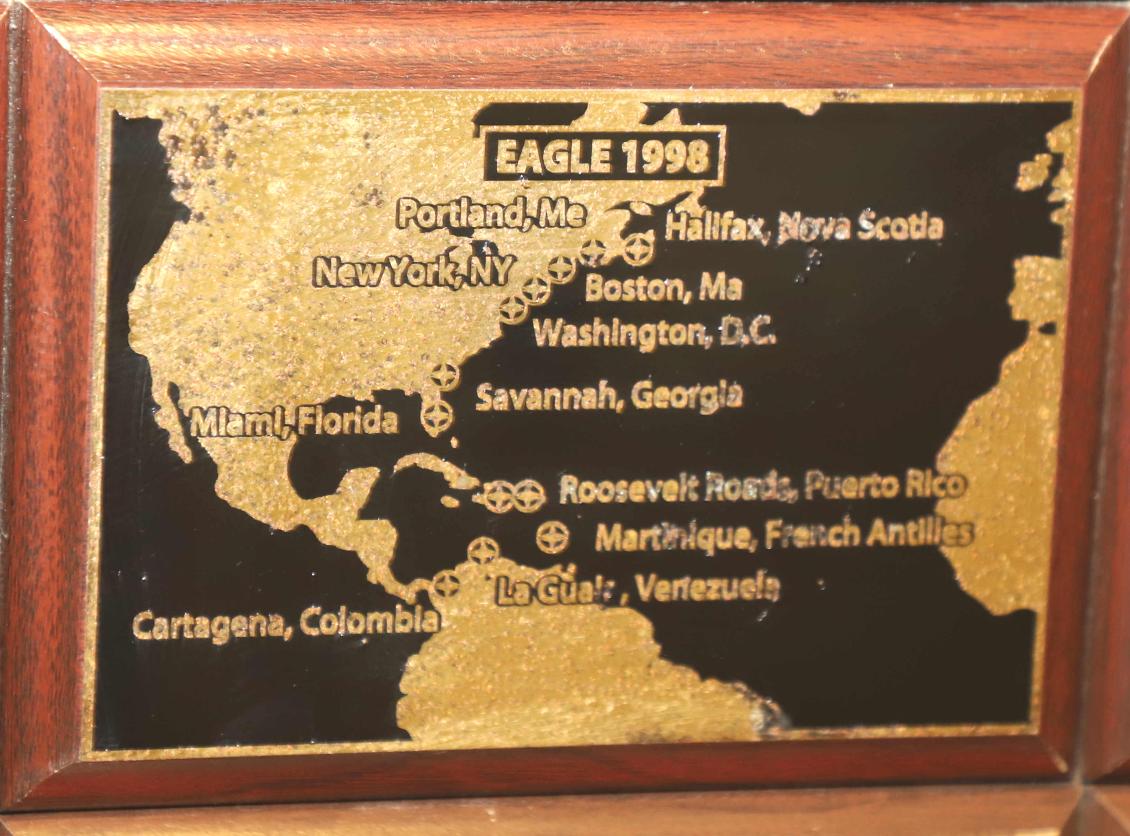
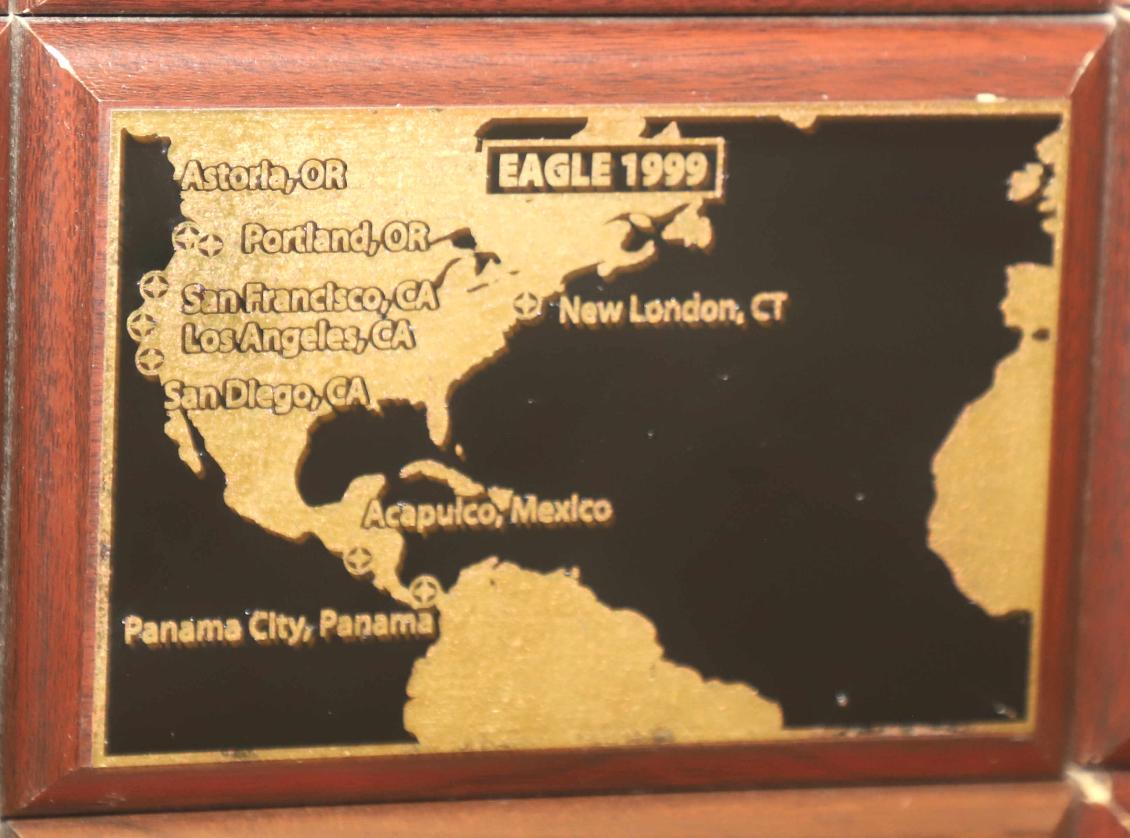

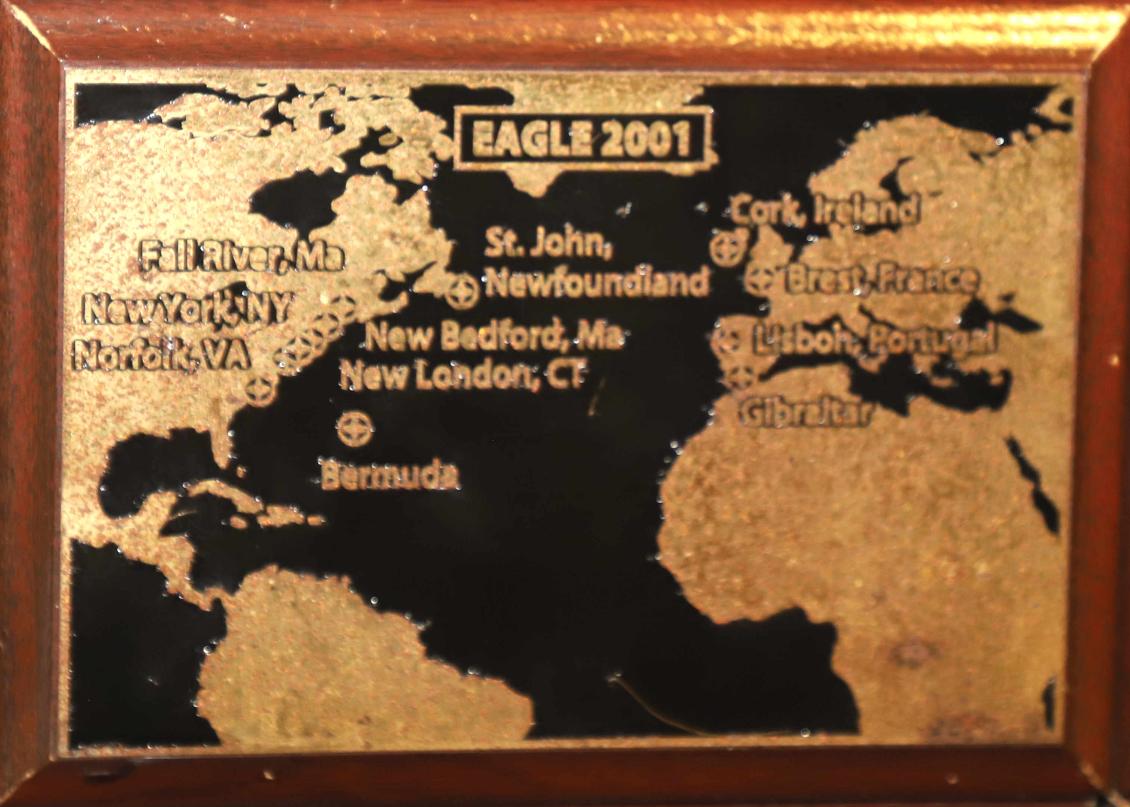
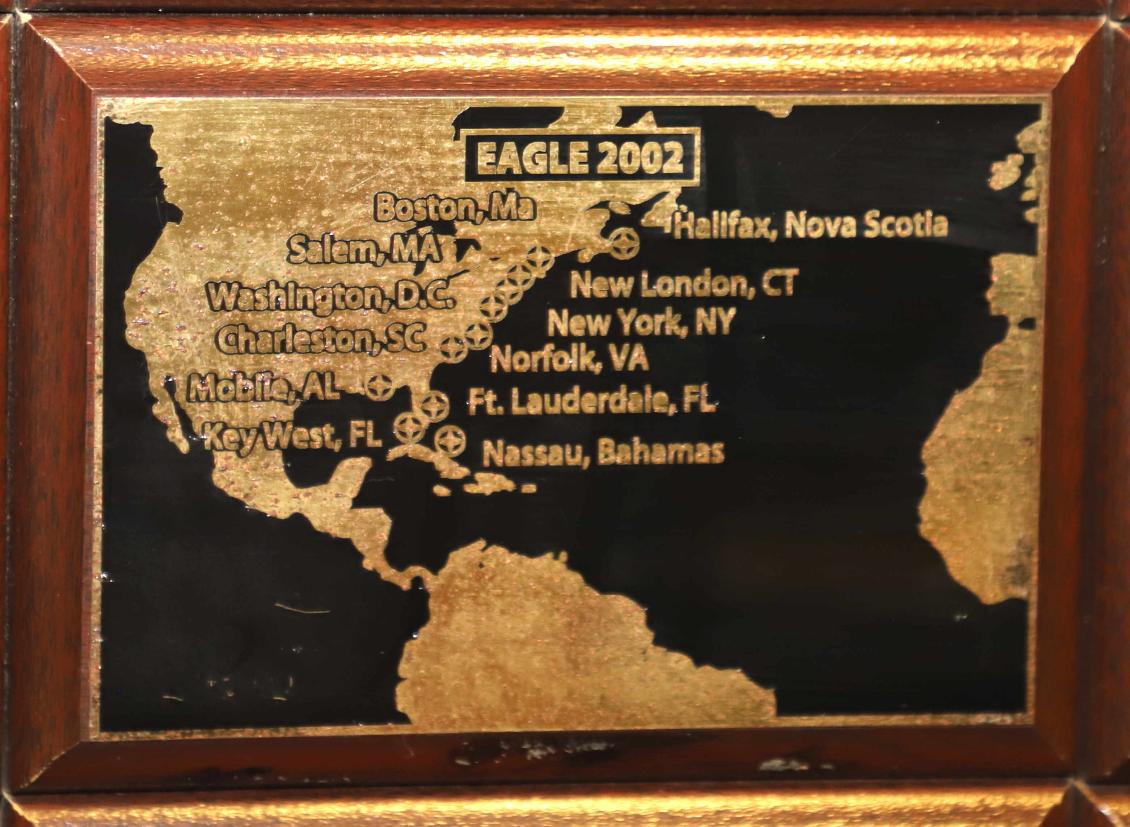
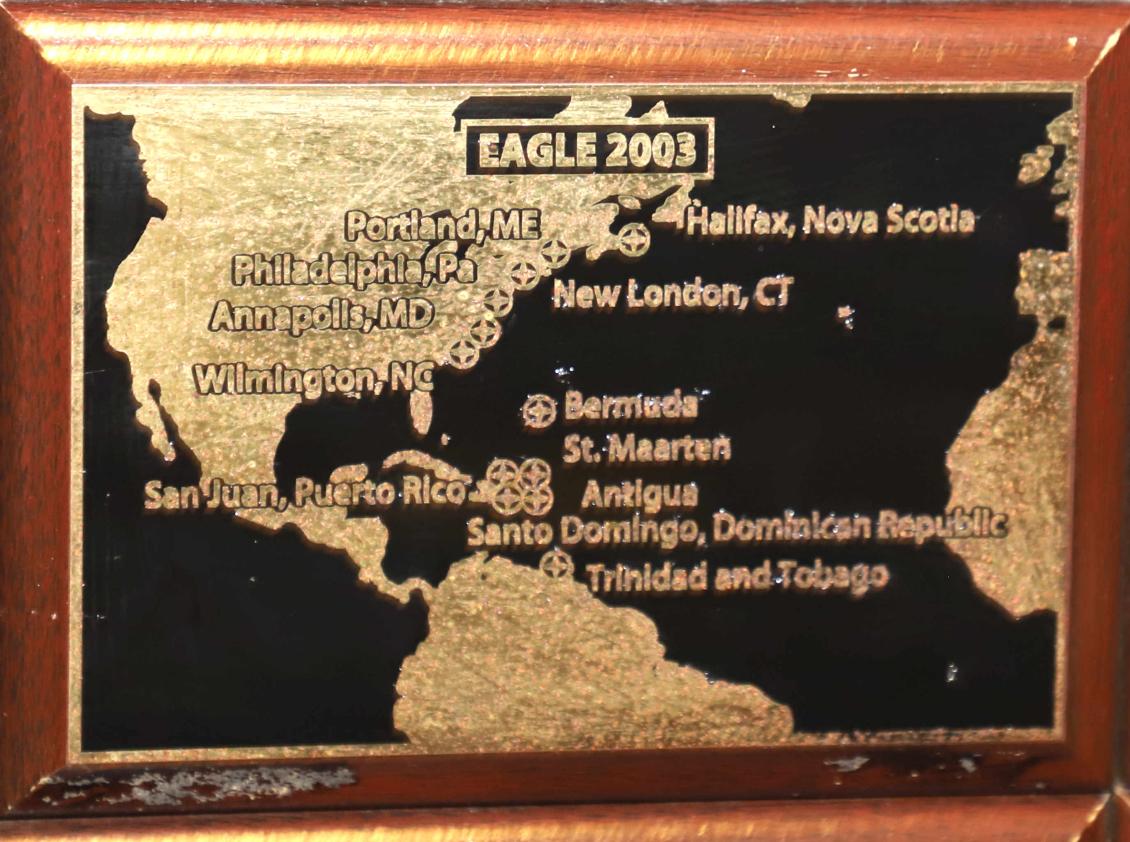
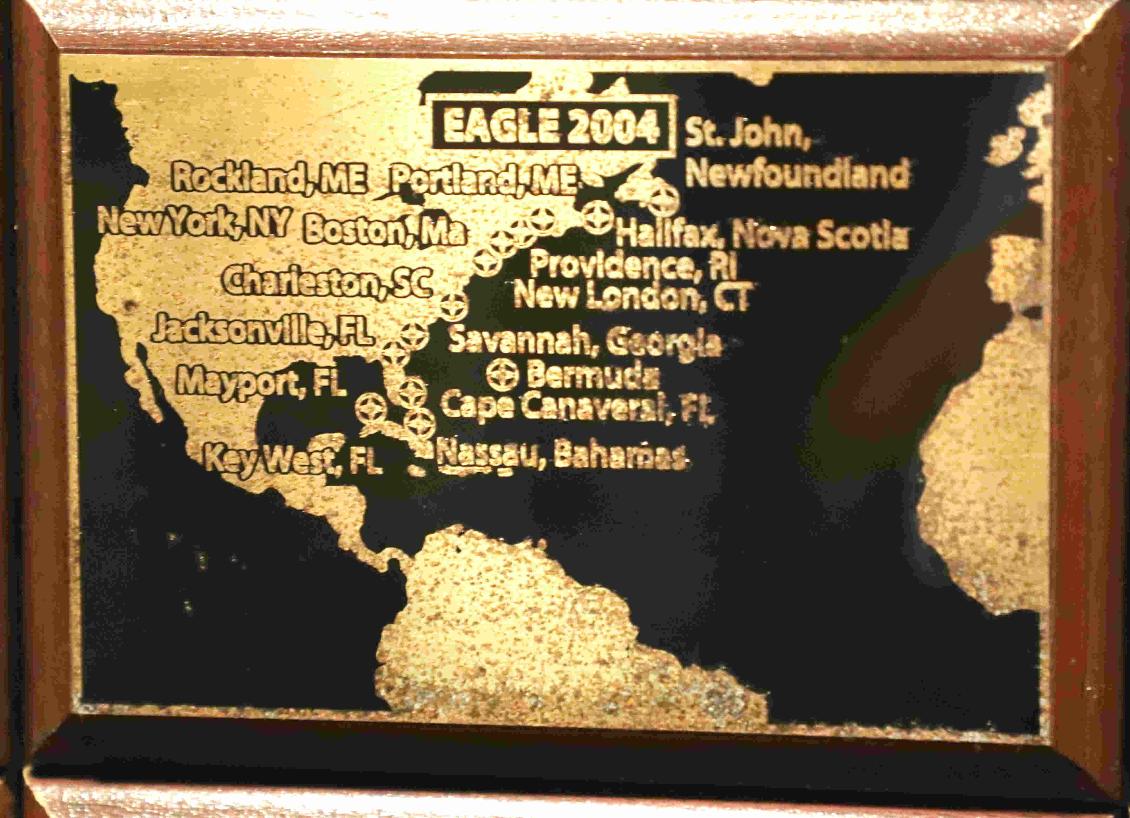
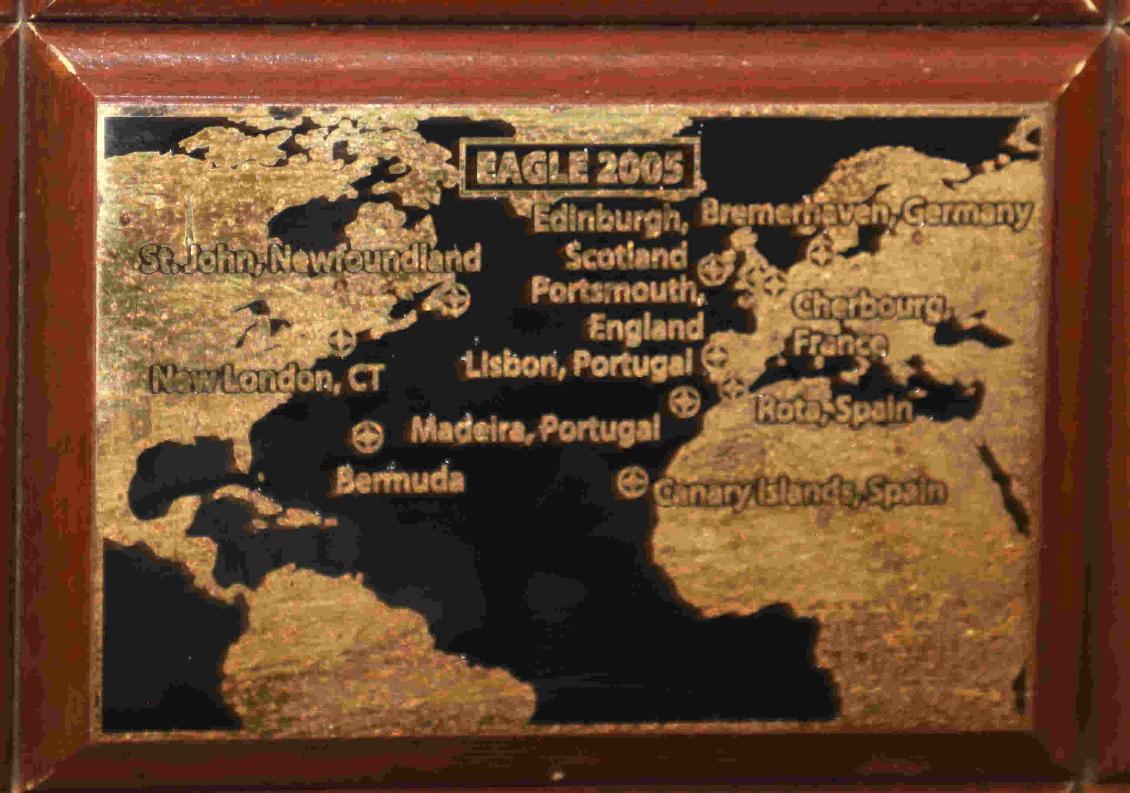
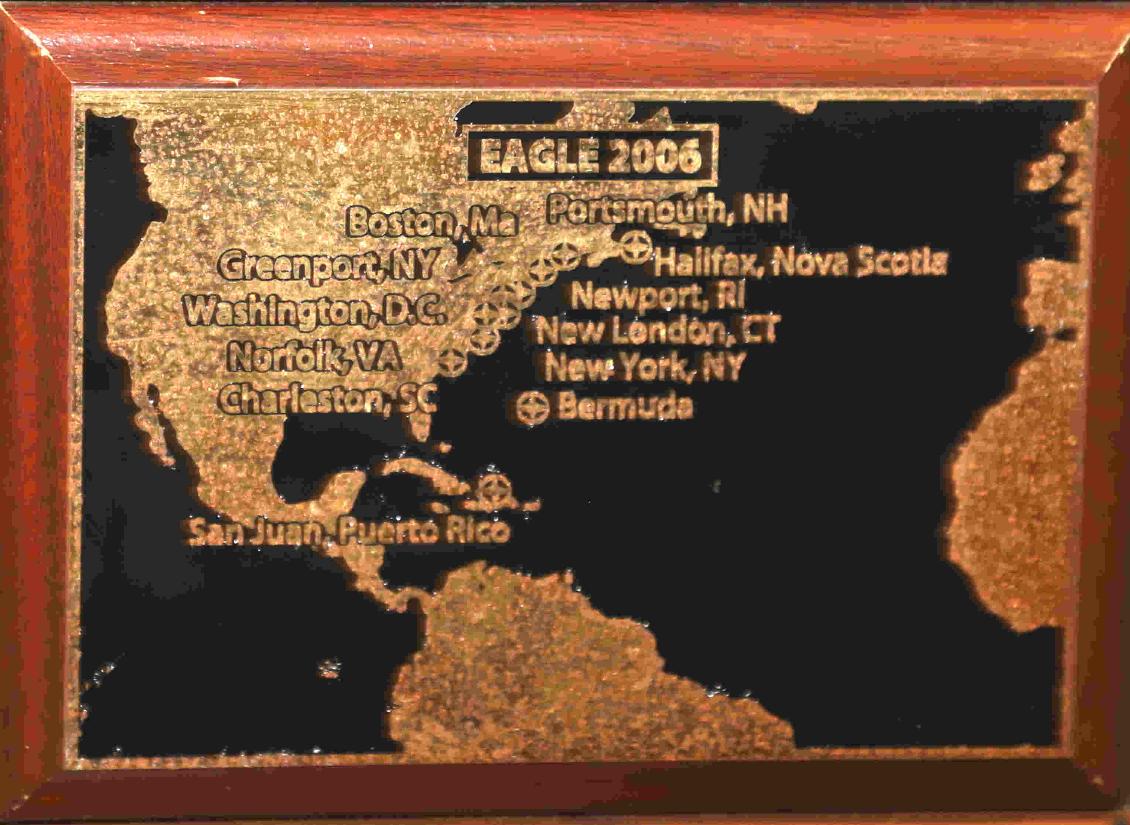

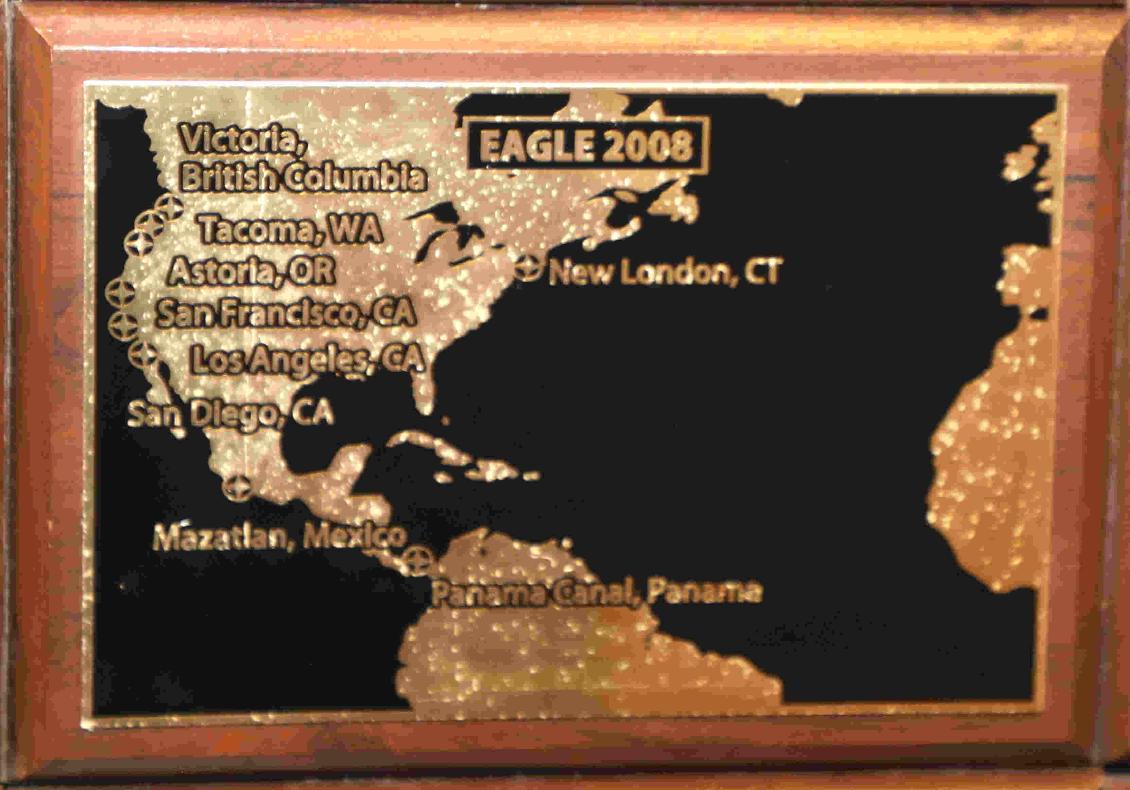
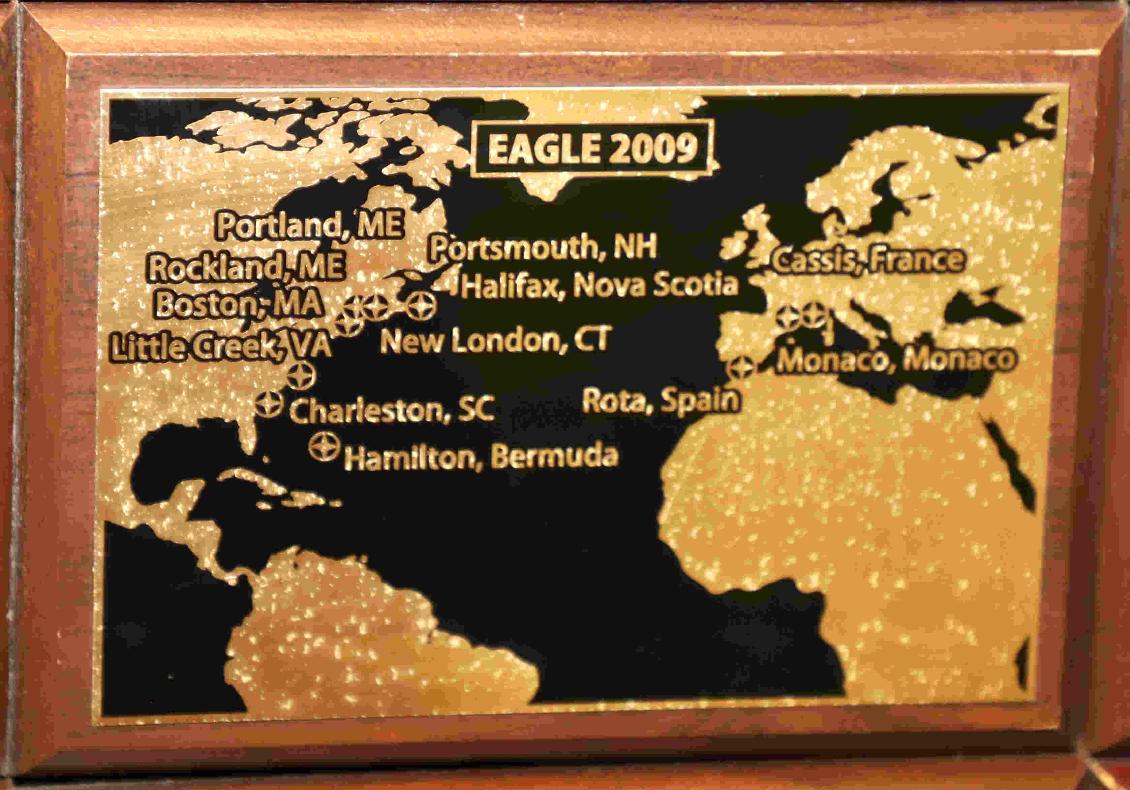

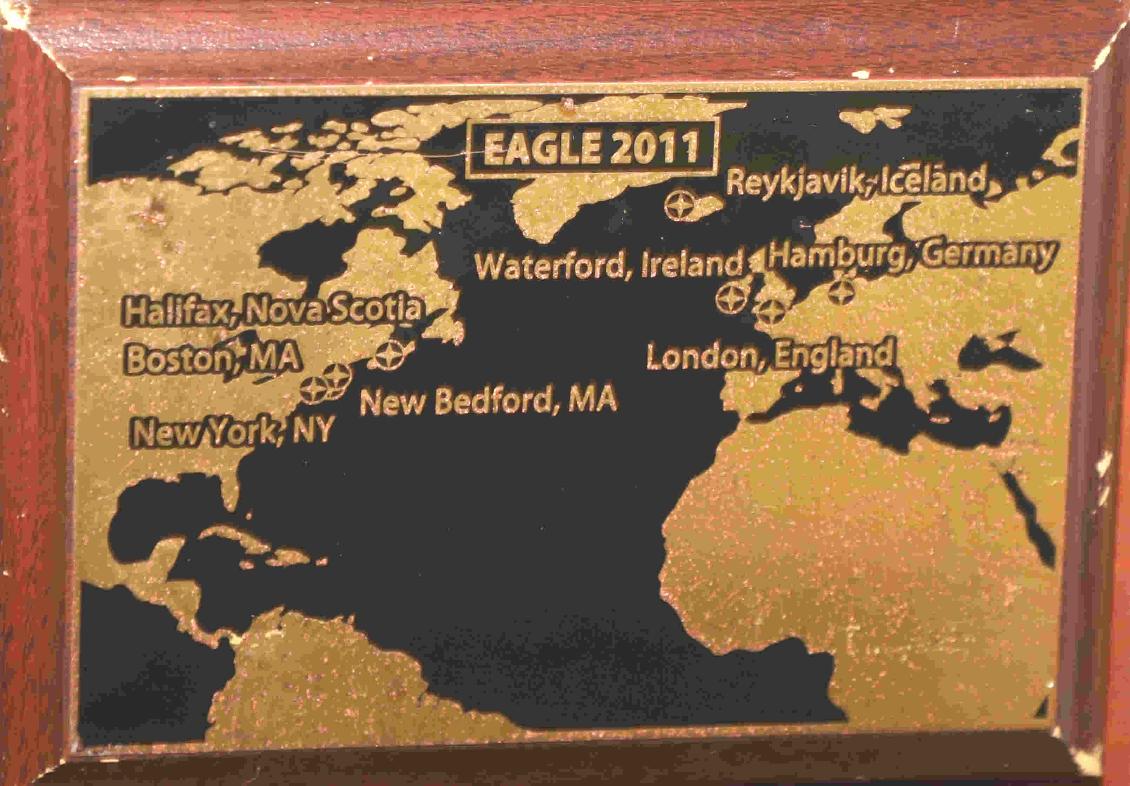
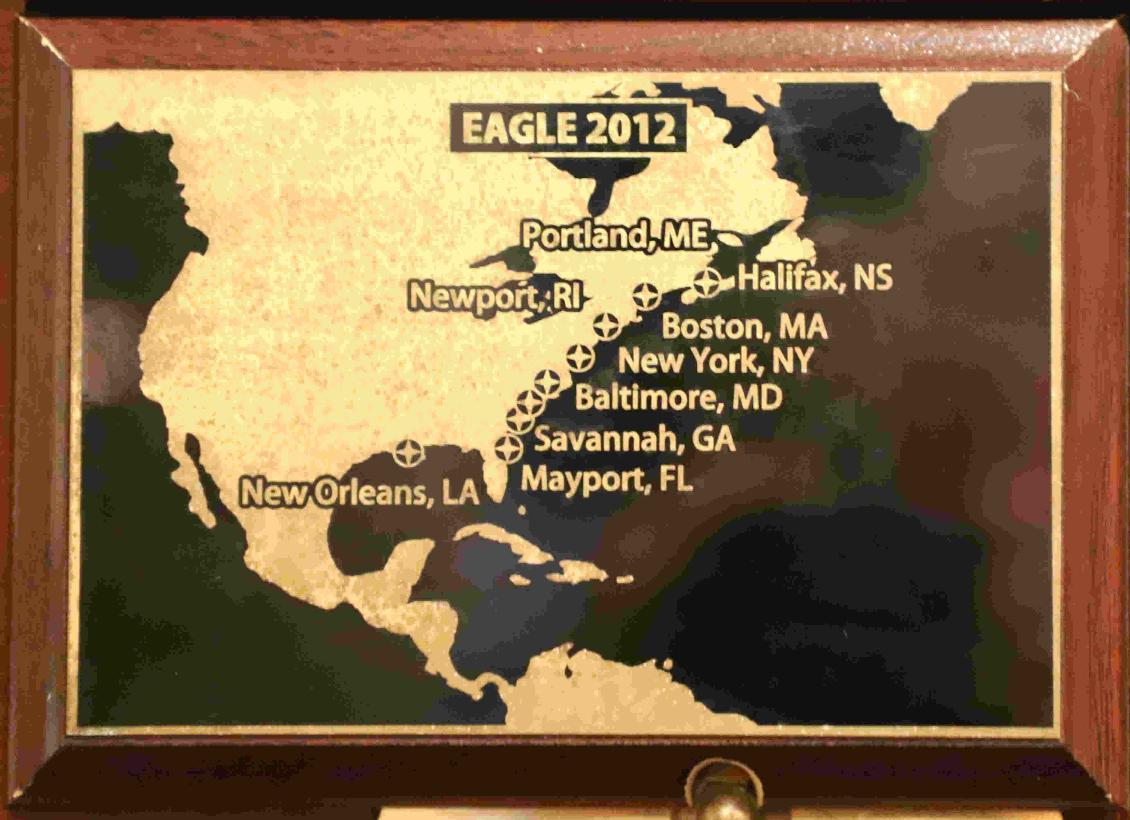

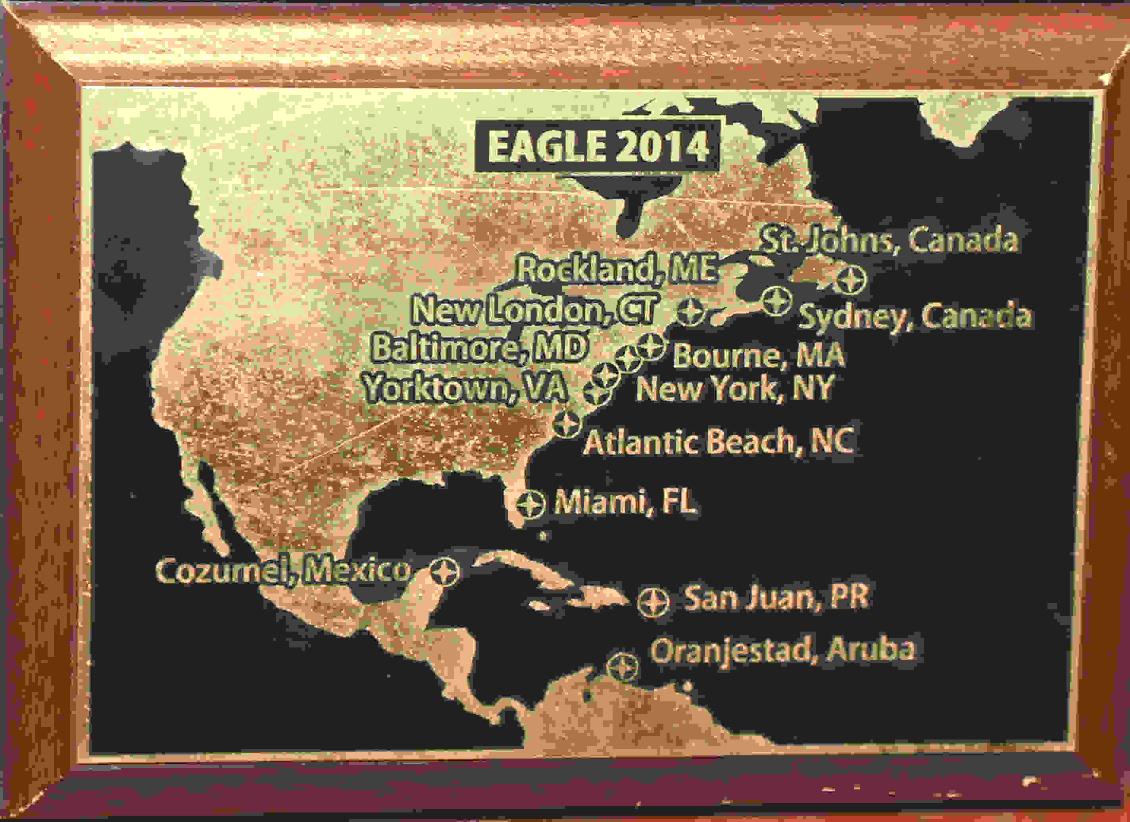
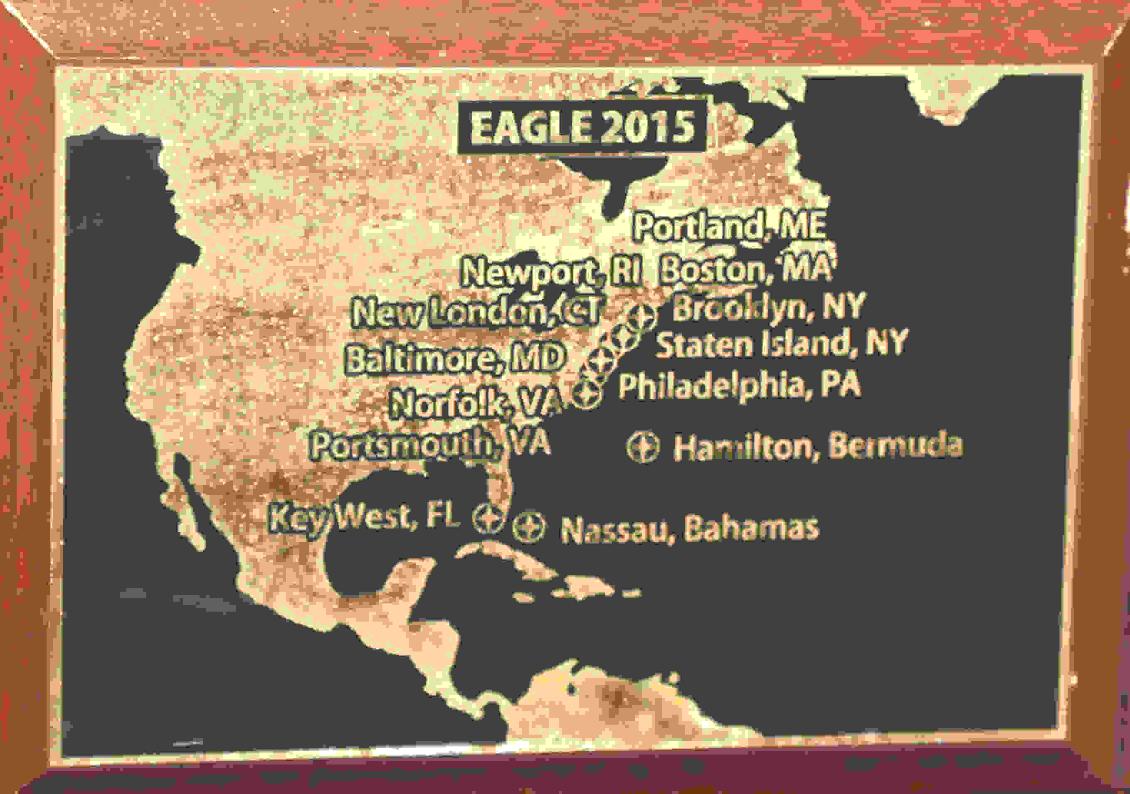

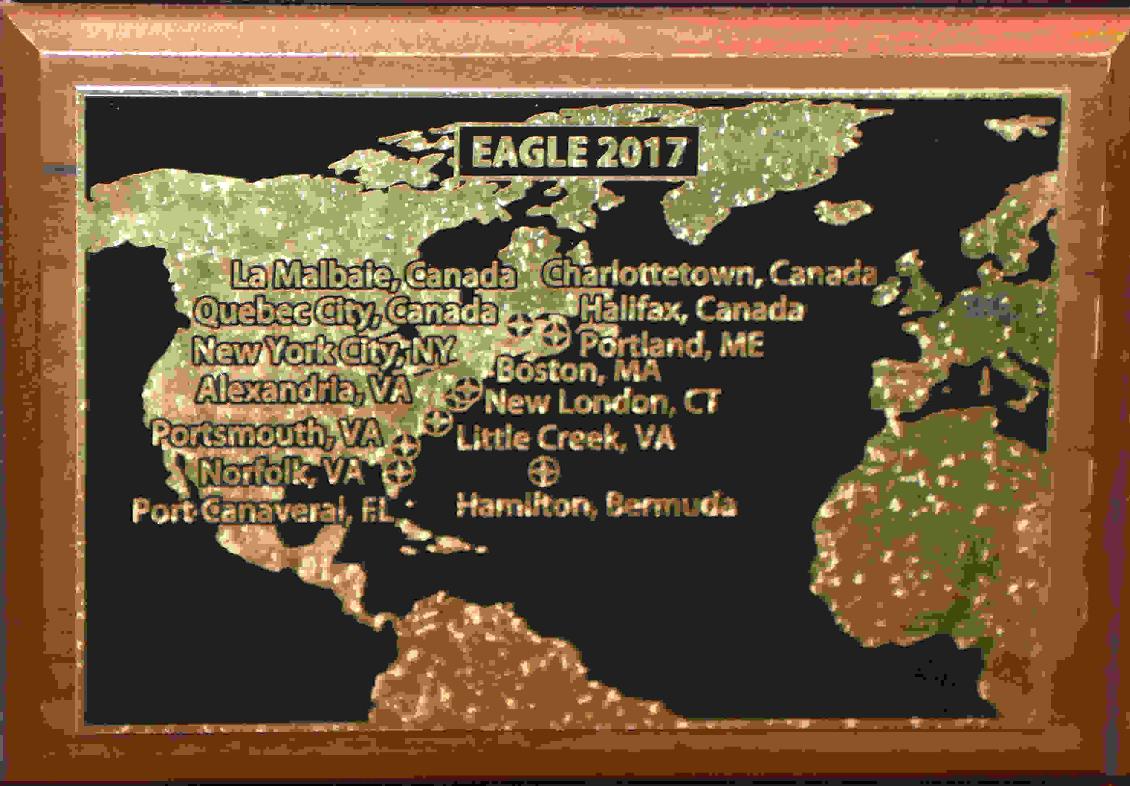
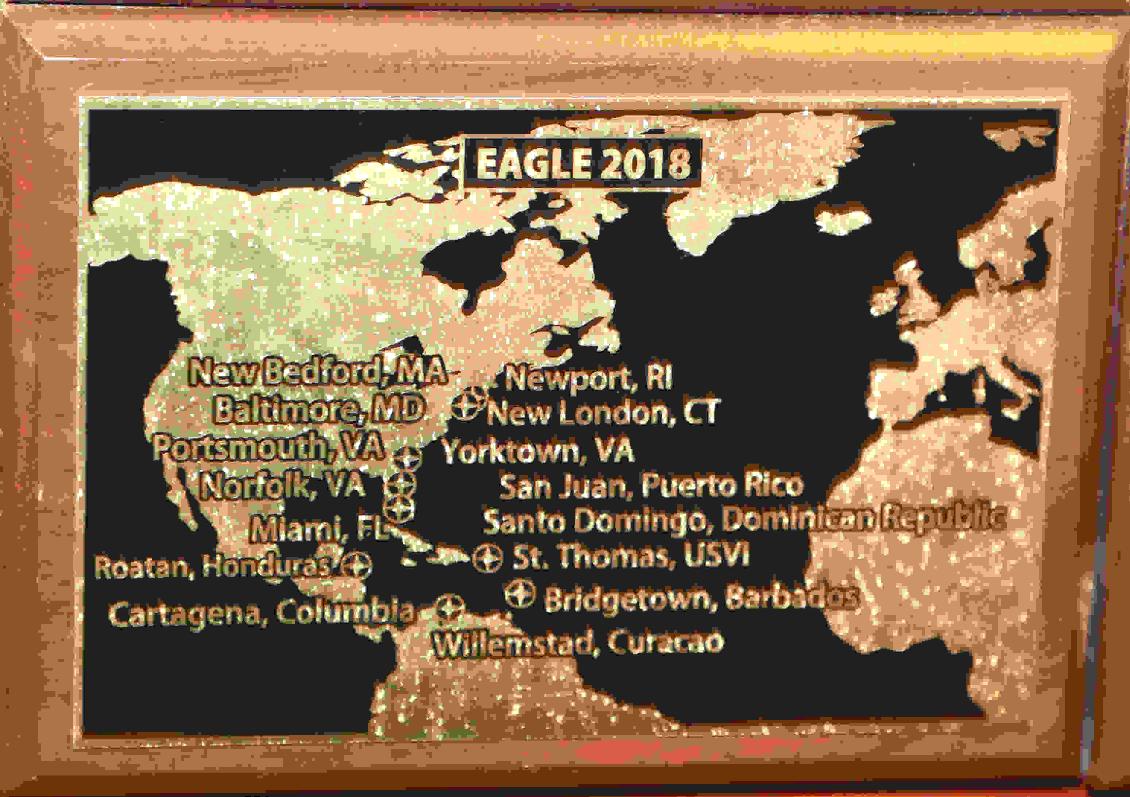
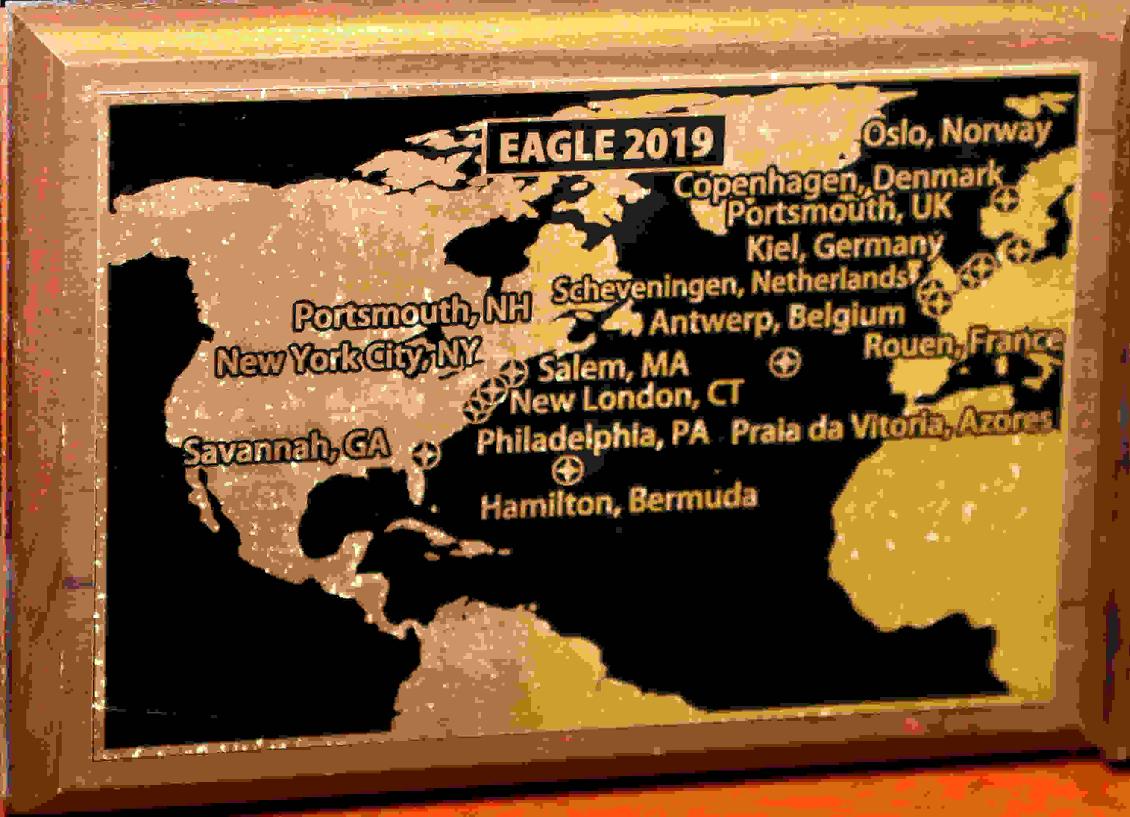
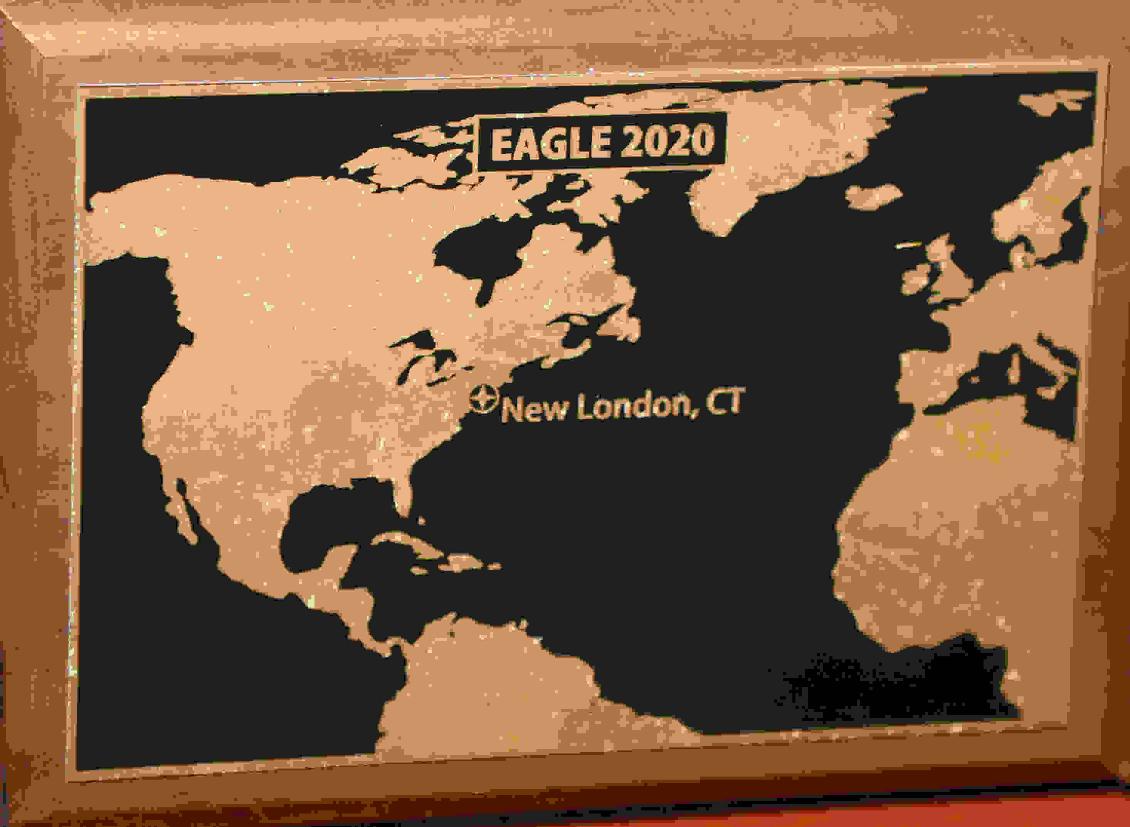
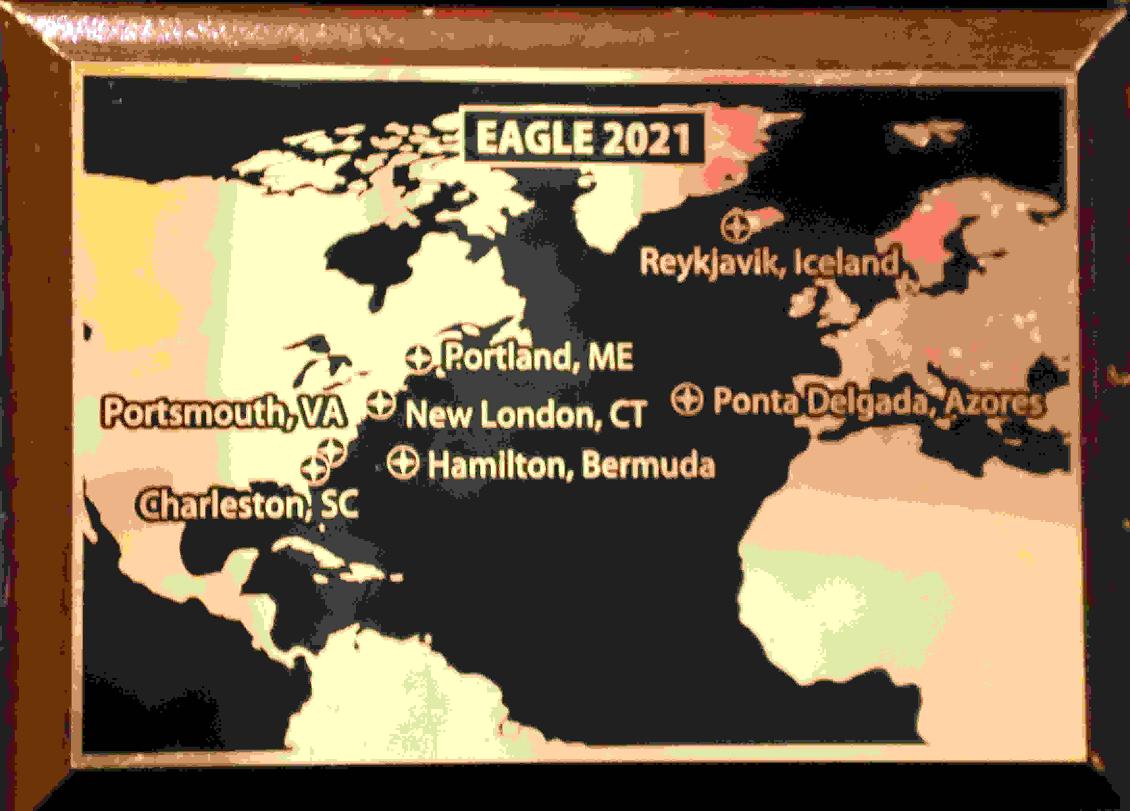
Sailing Eagle - Alan Villiers (1955) - Photos from 1954 Voyage with Captain Carl G. Bowman
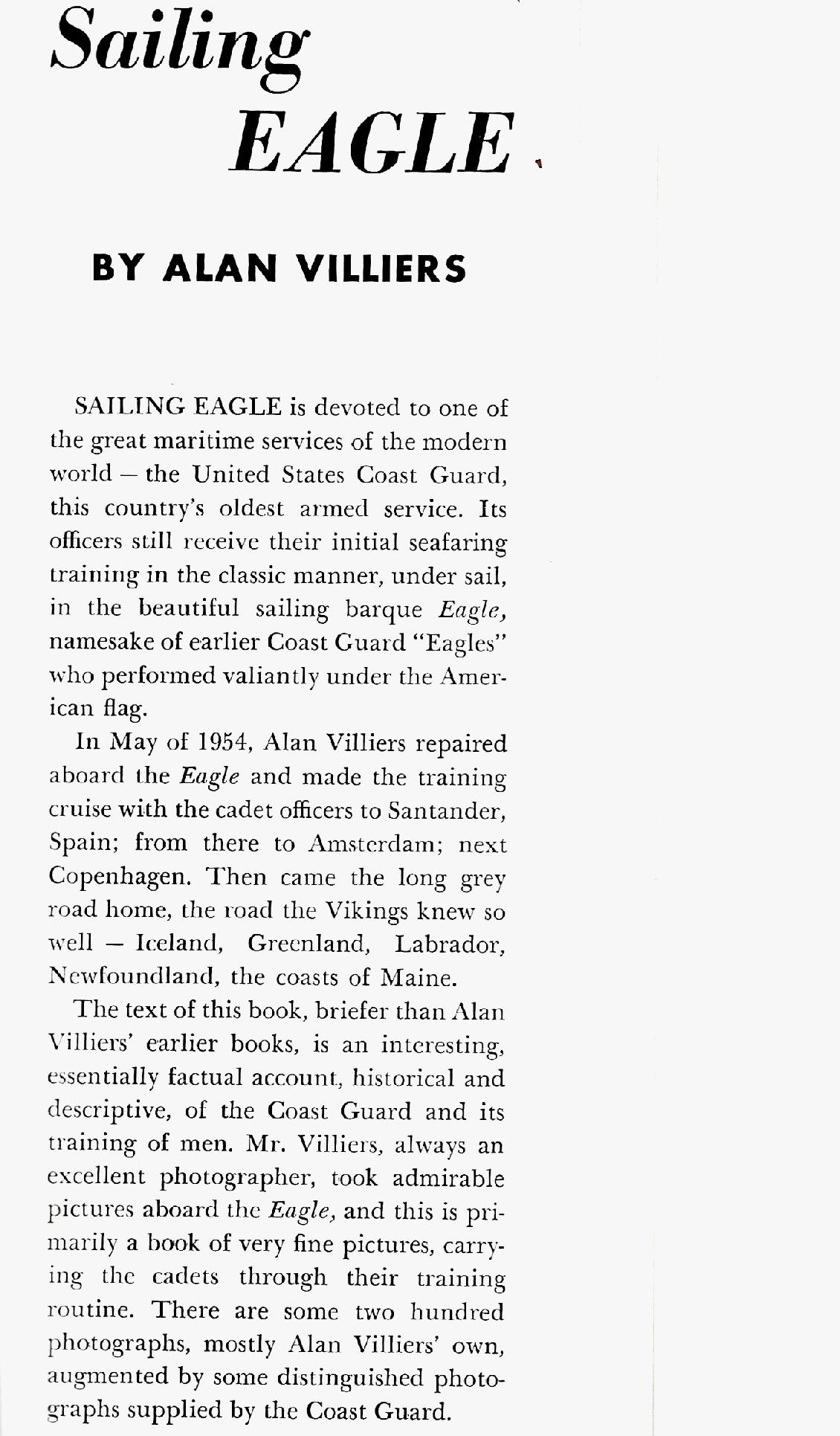
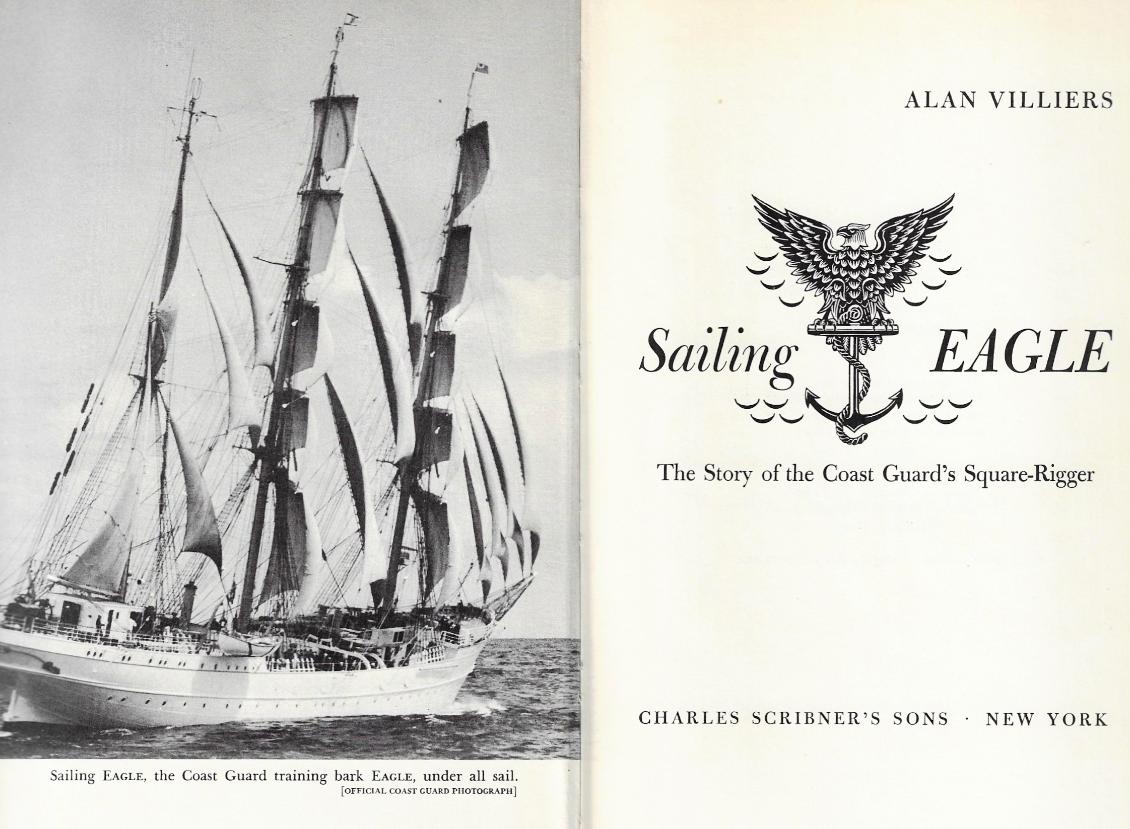
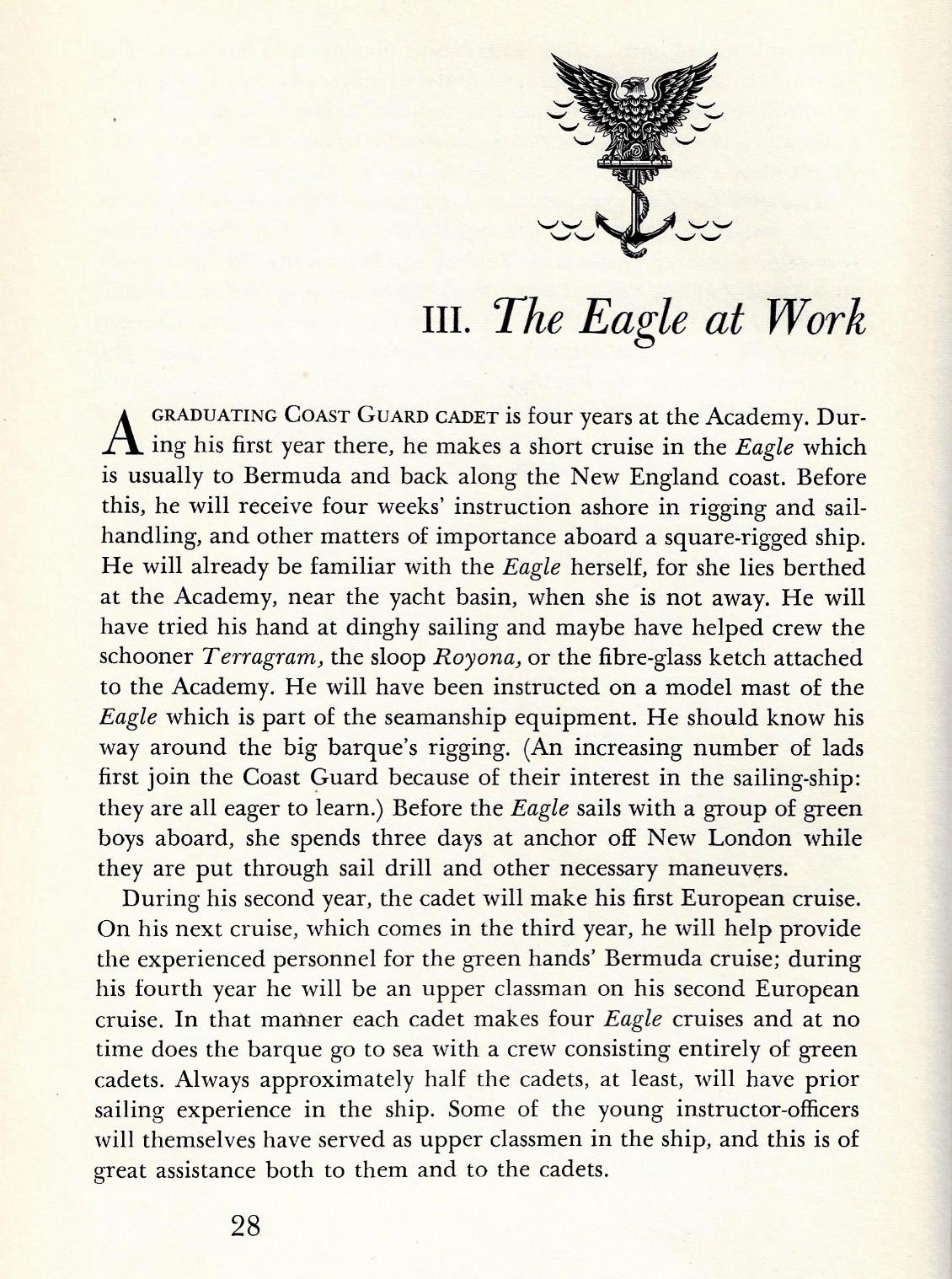
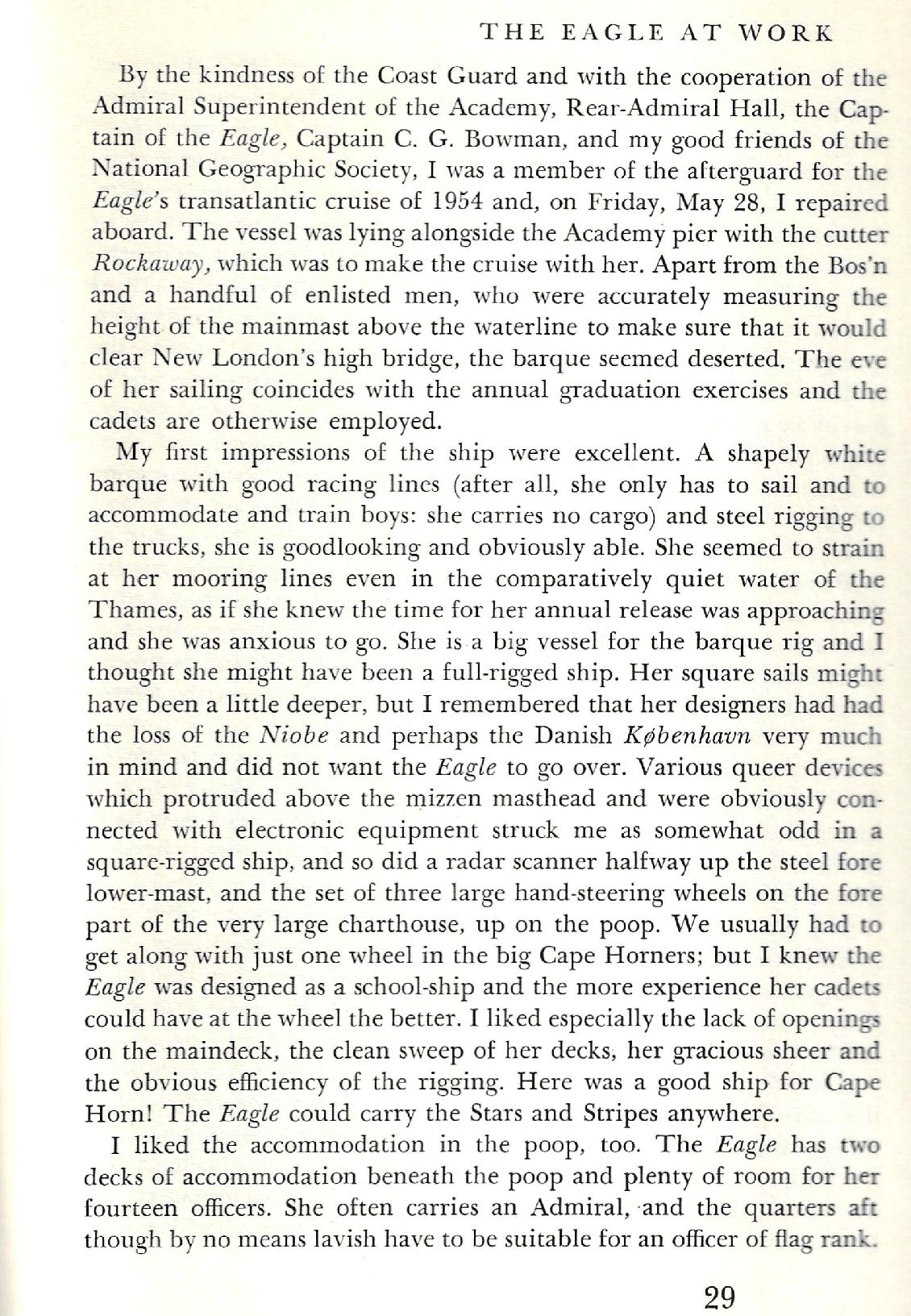
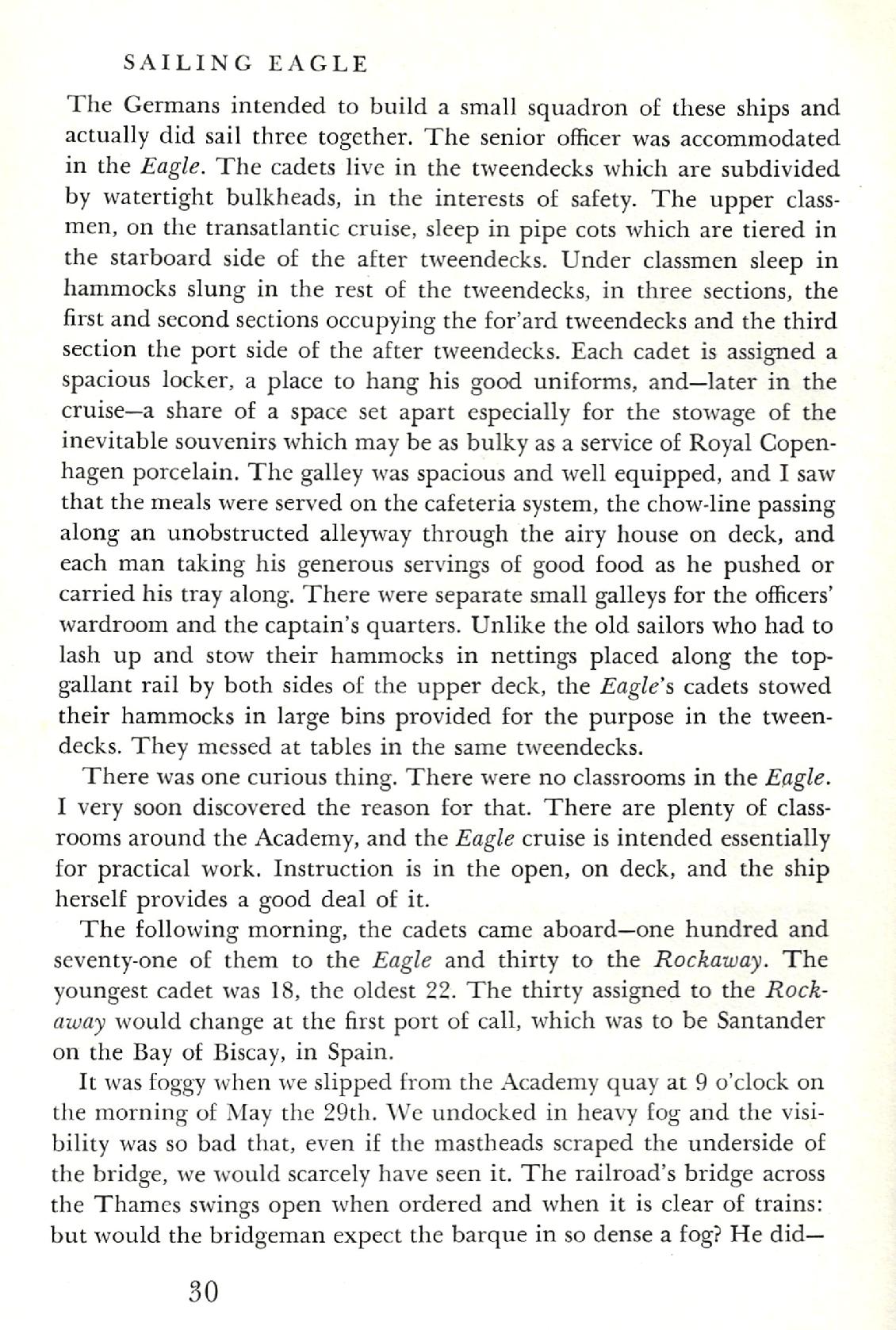


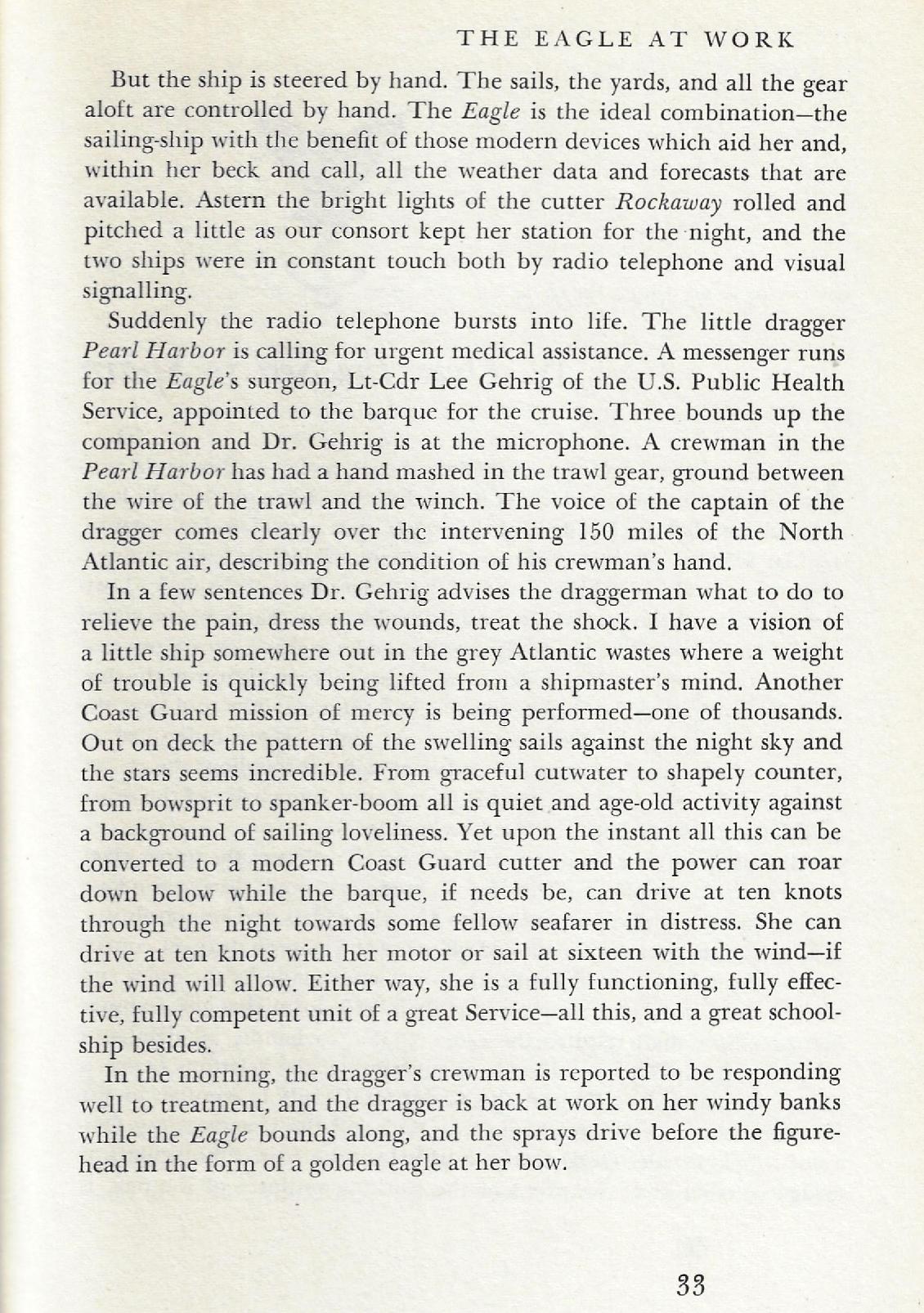

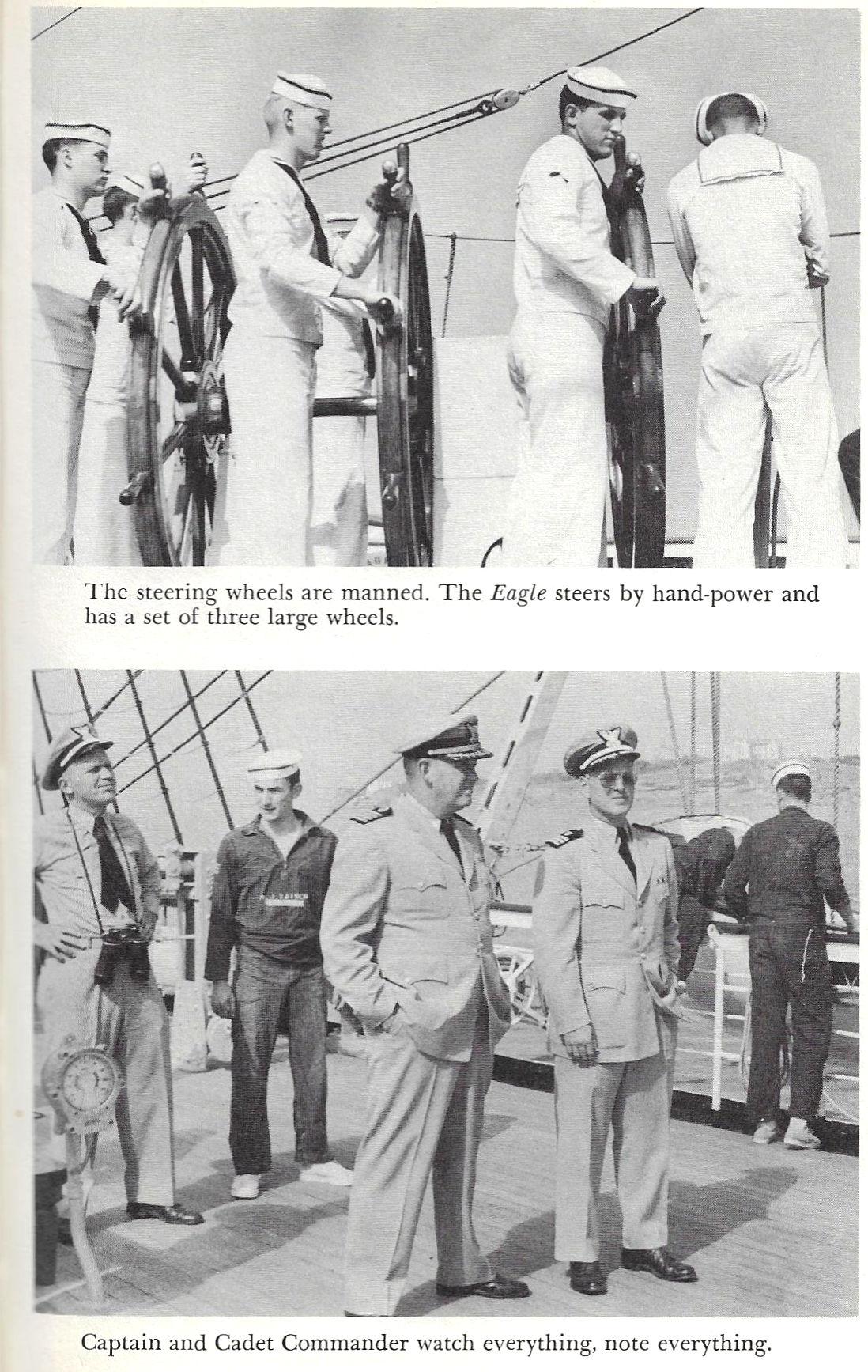
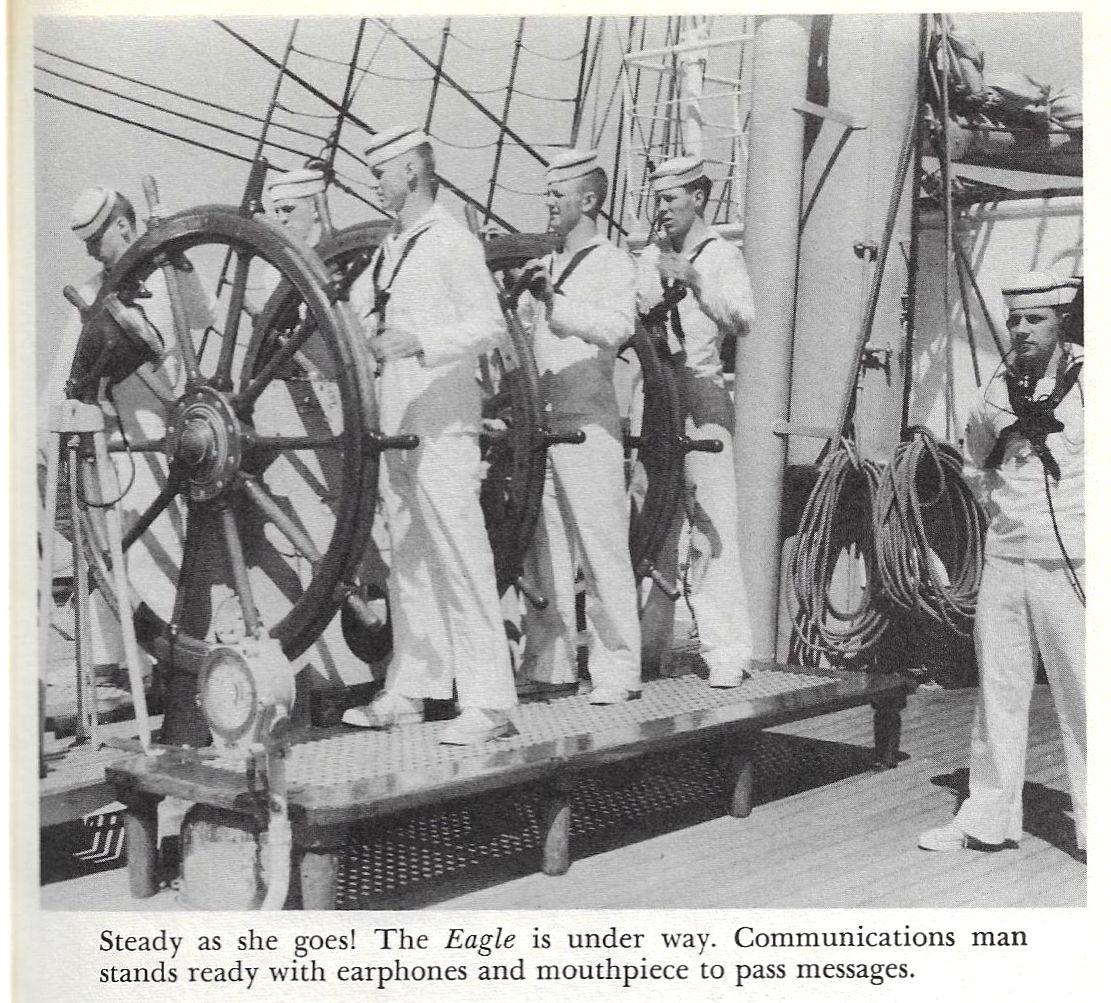


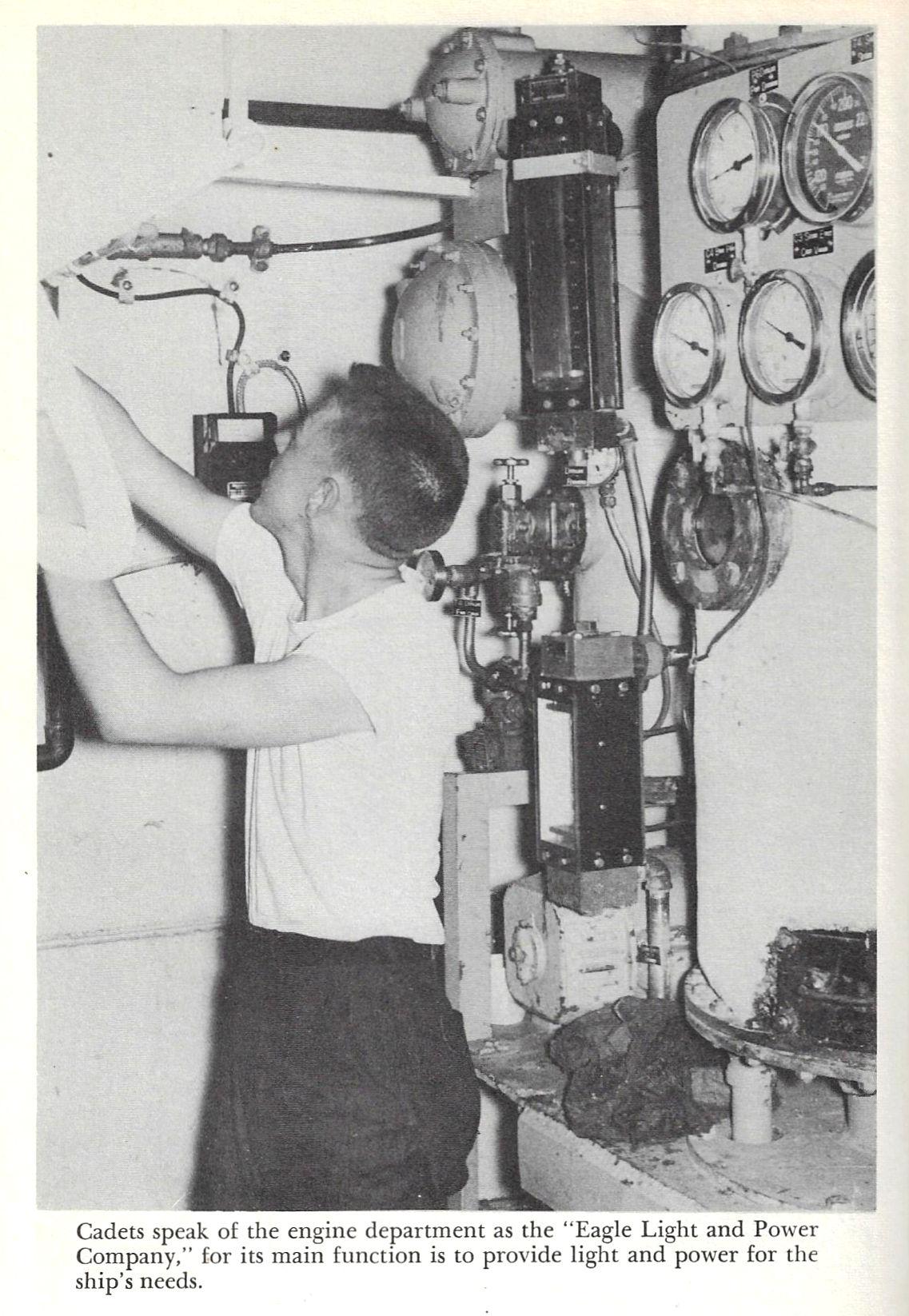
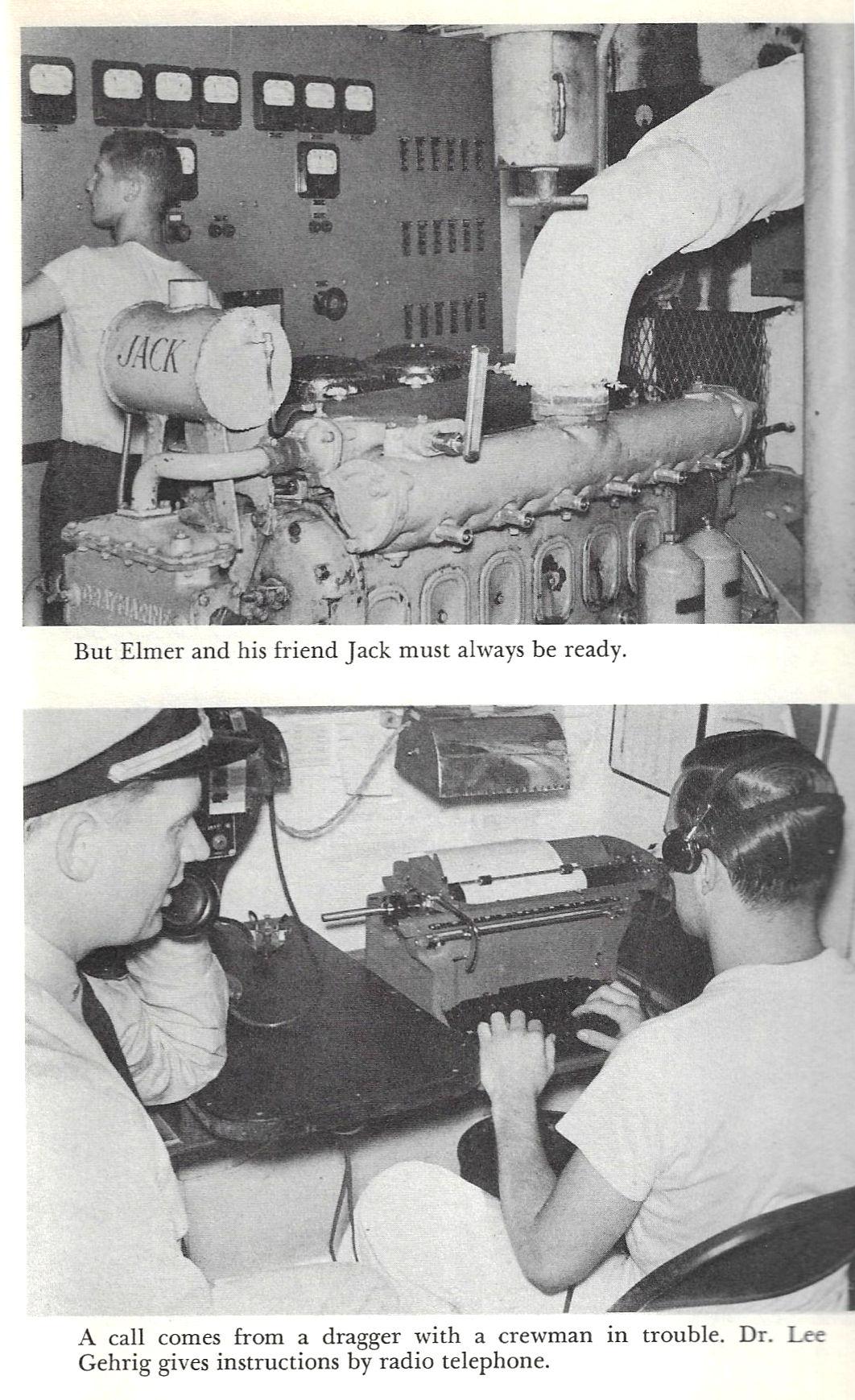
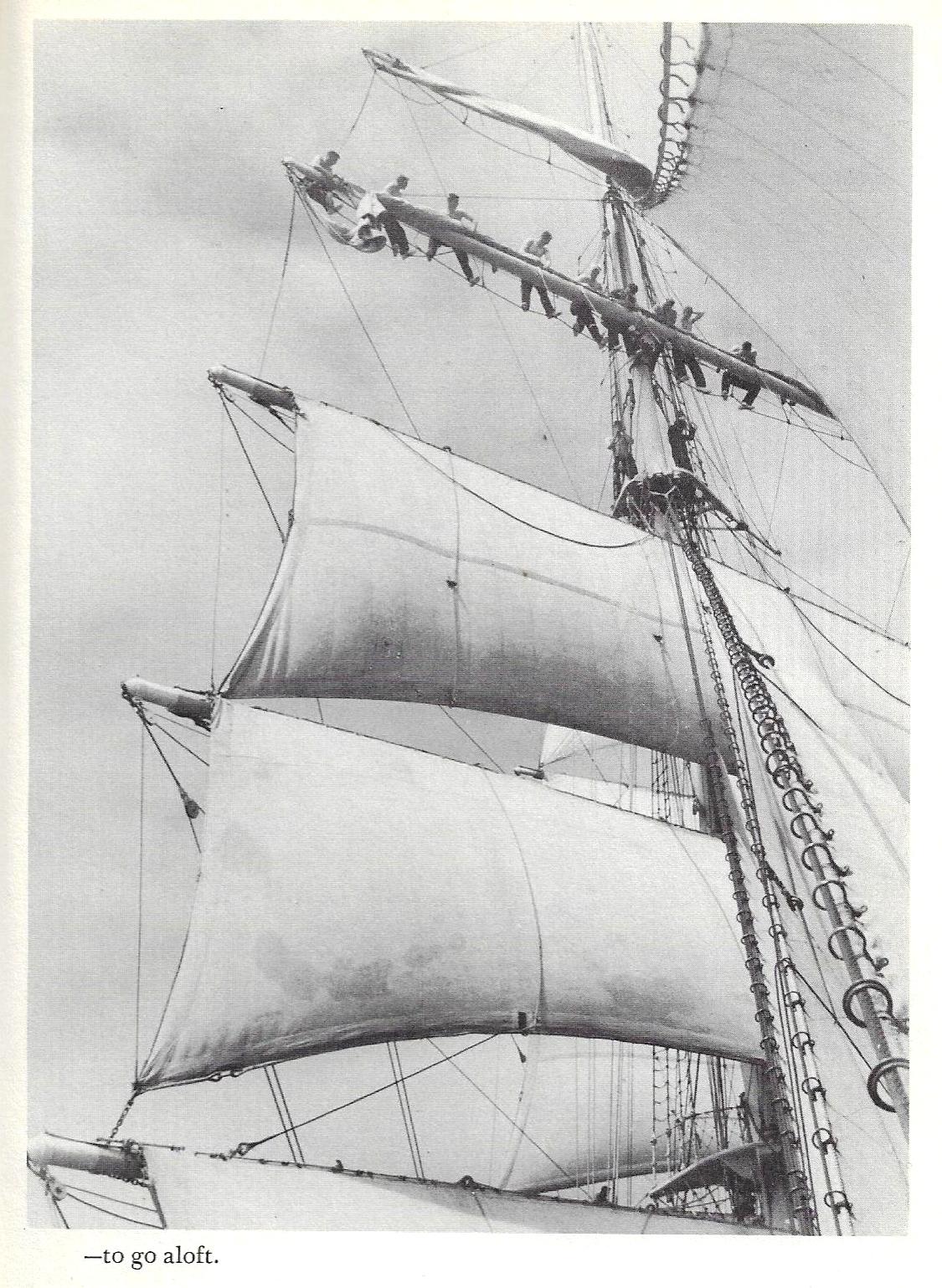
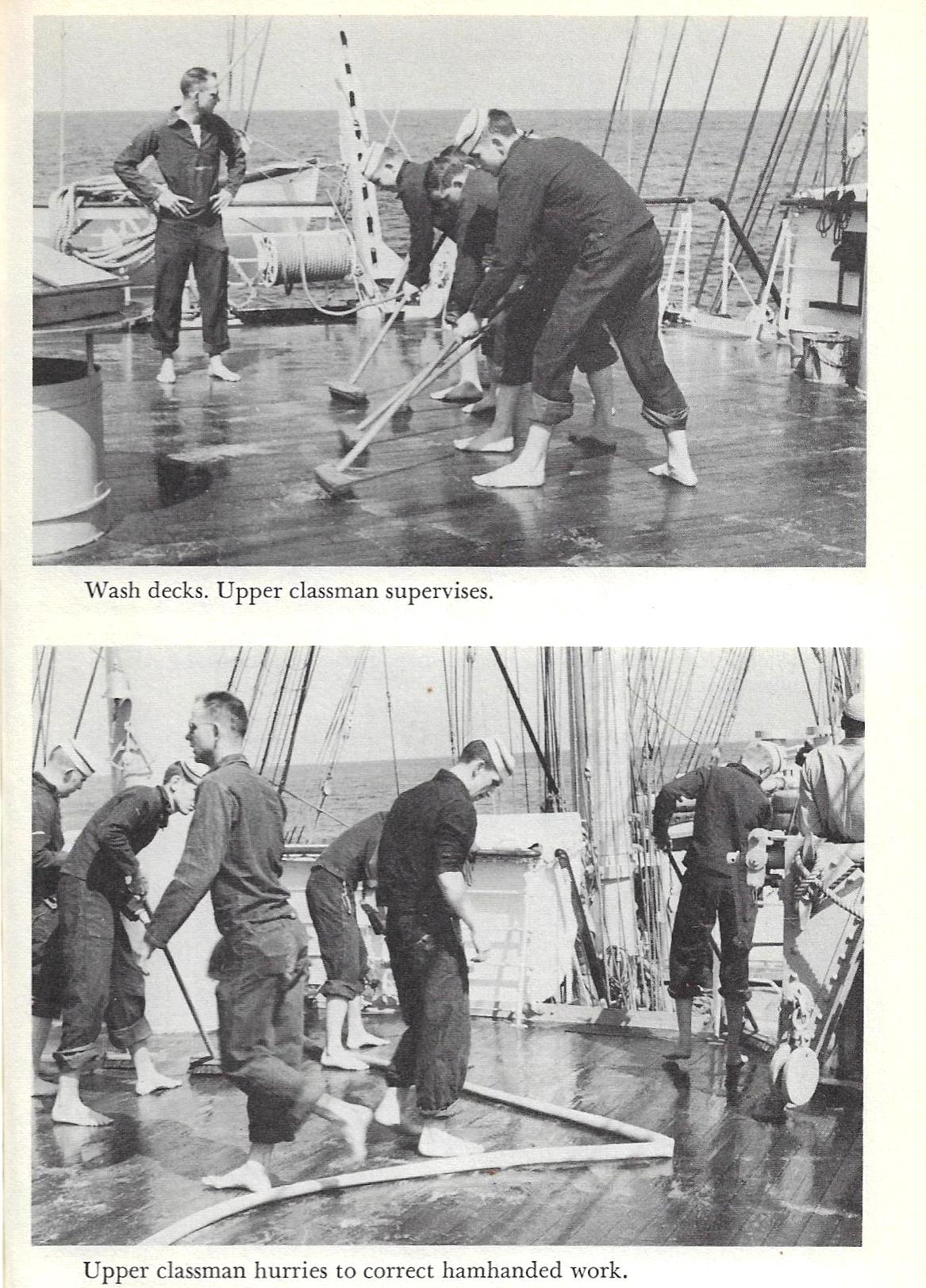

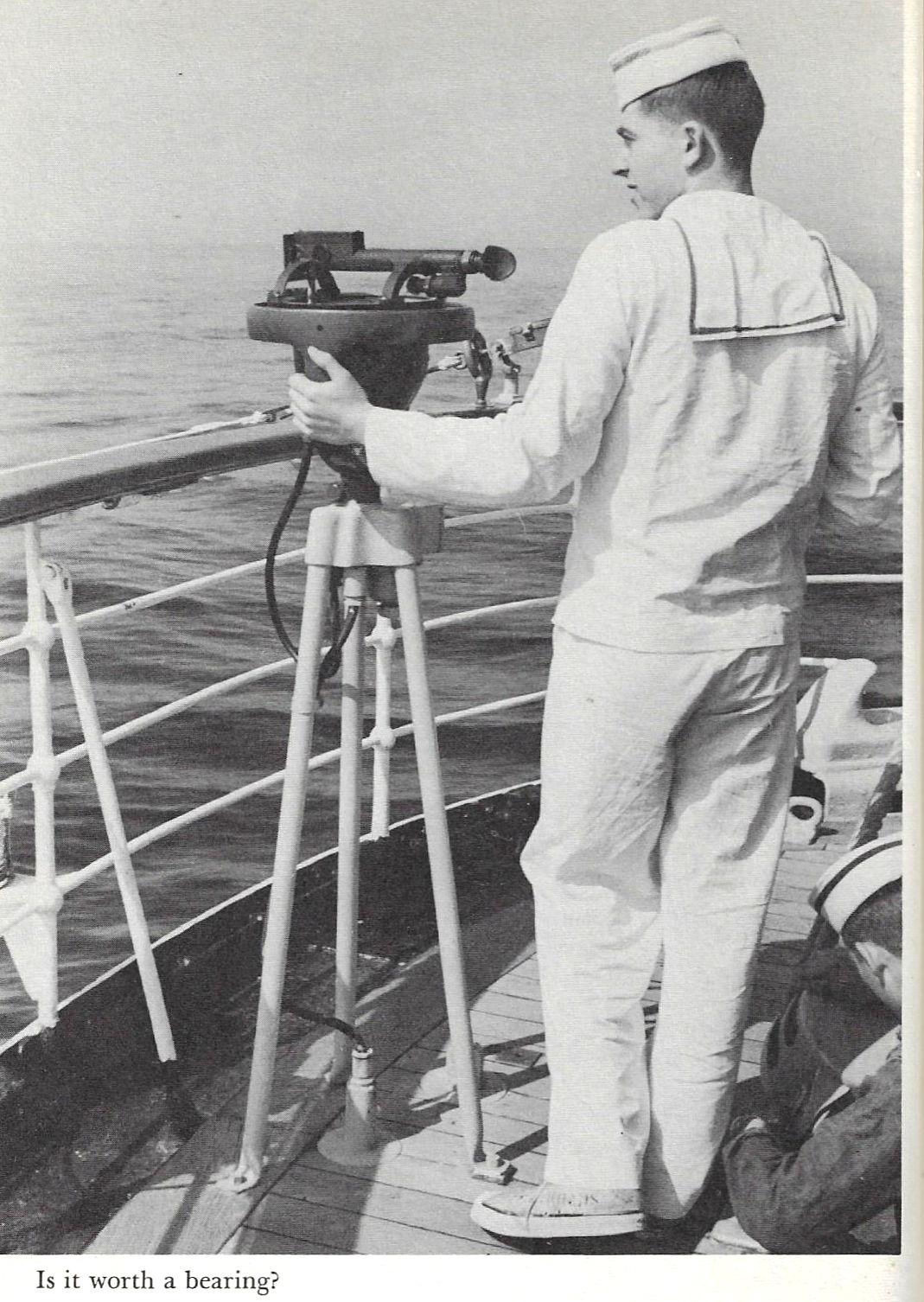
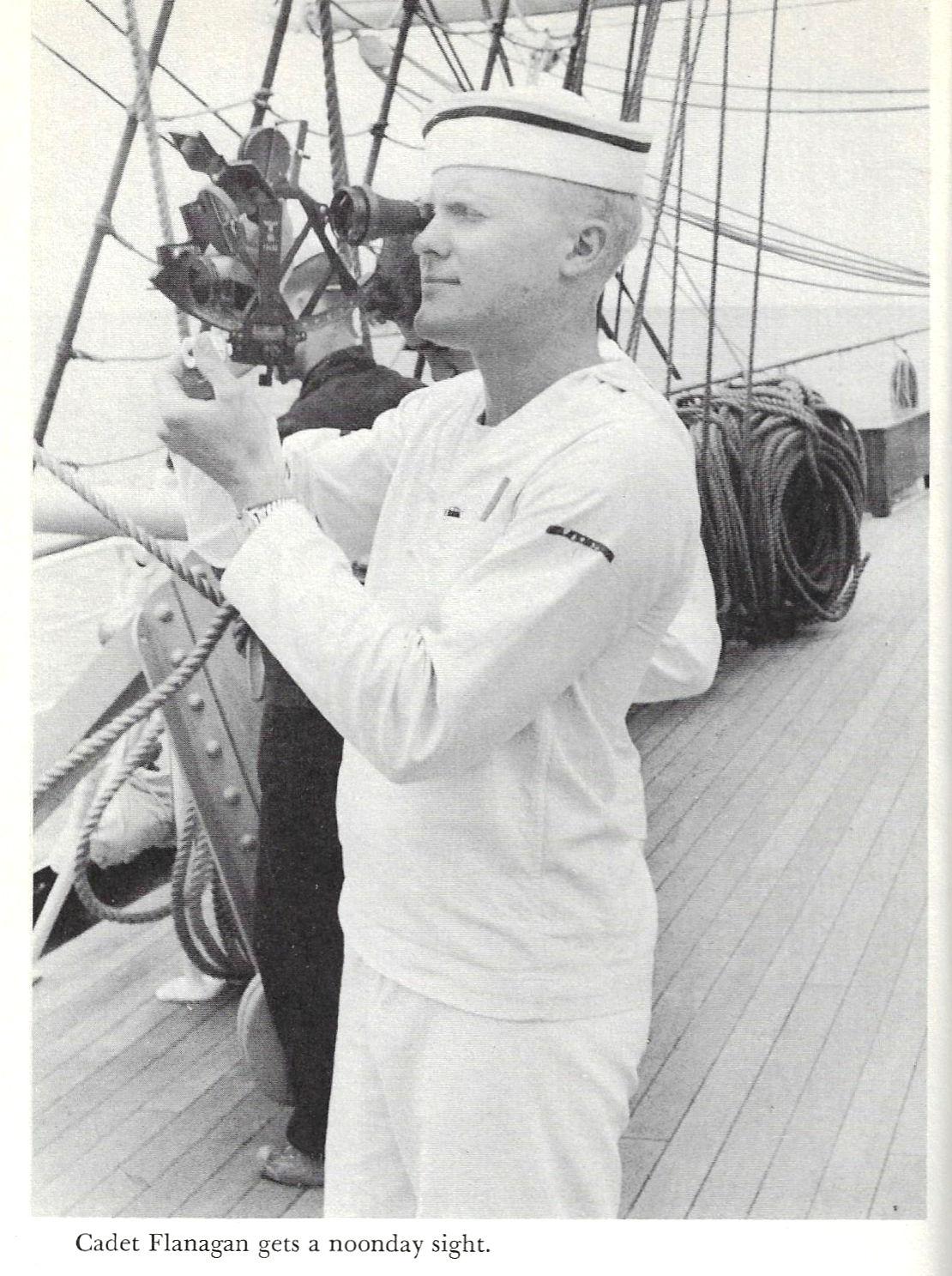
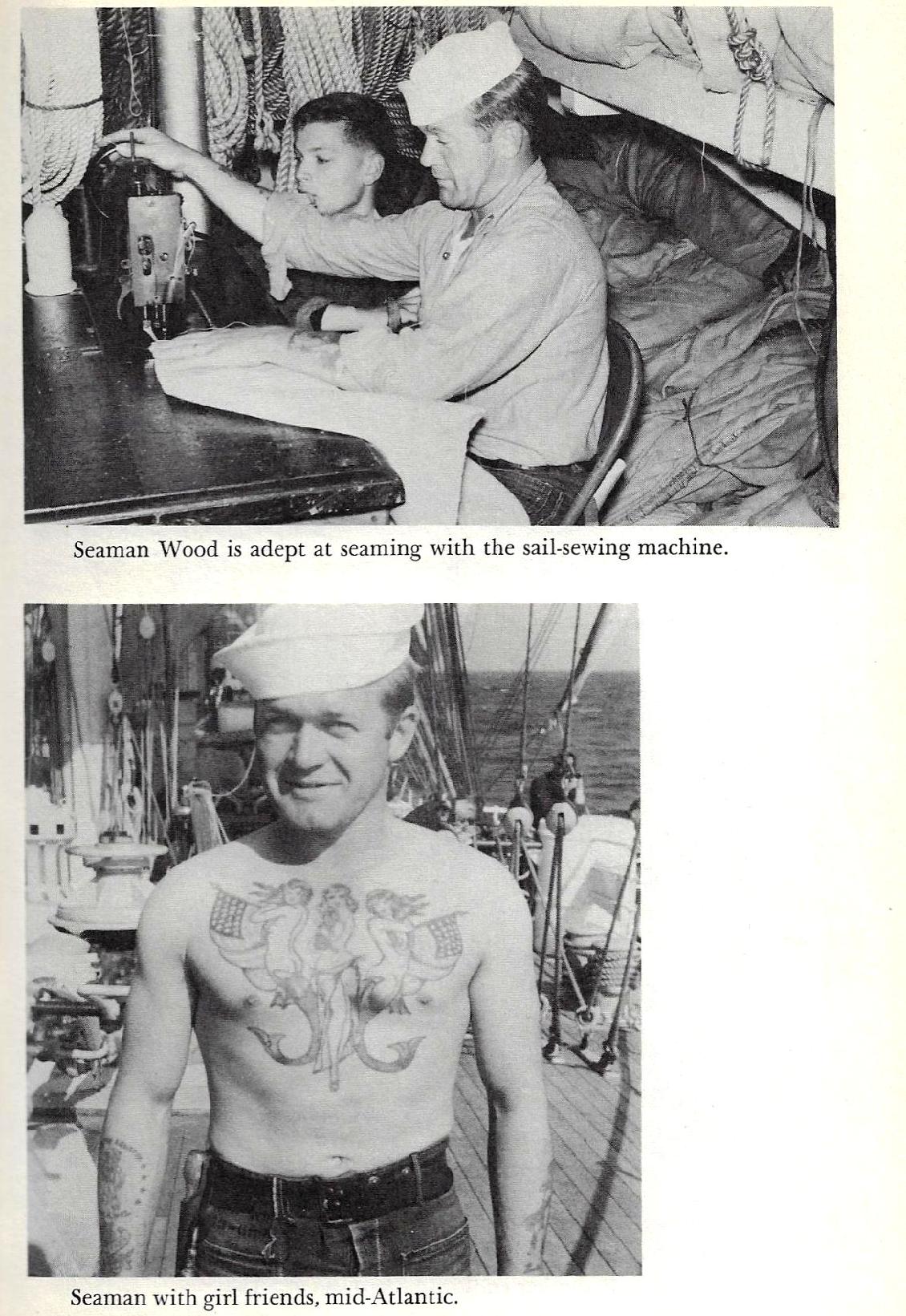


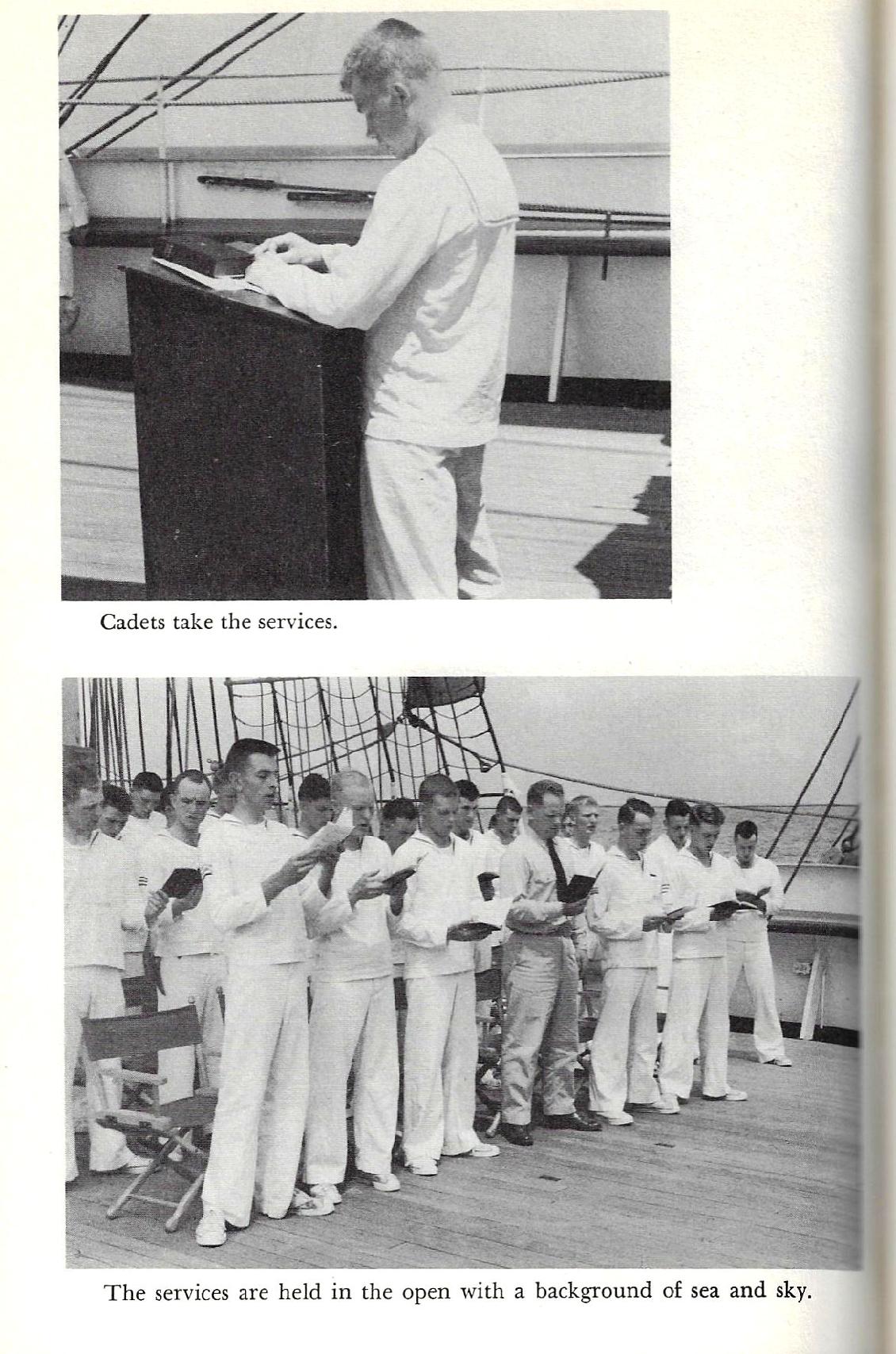
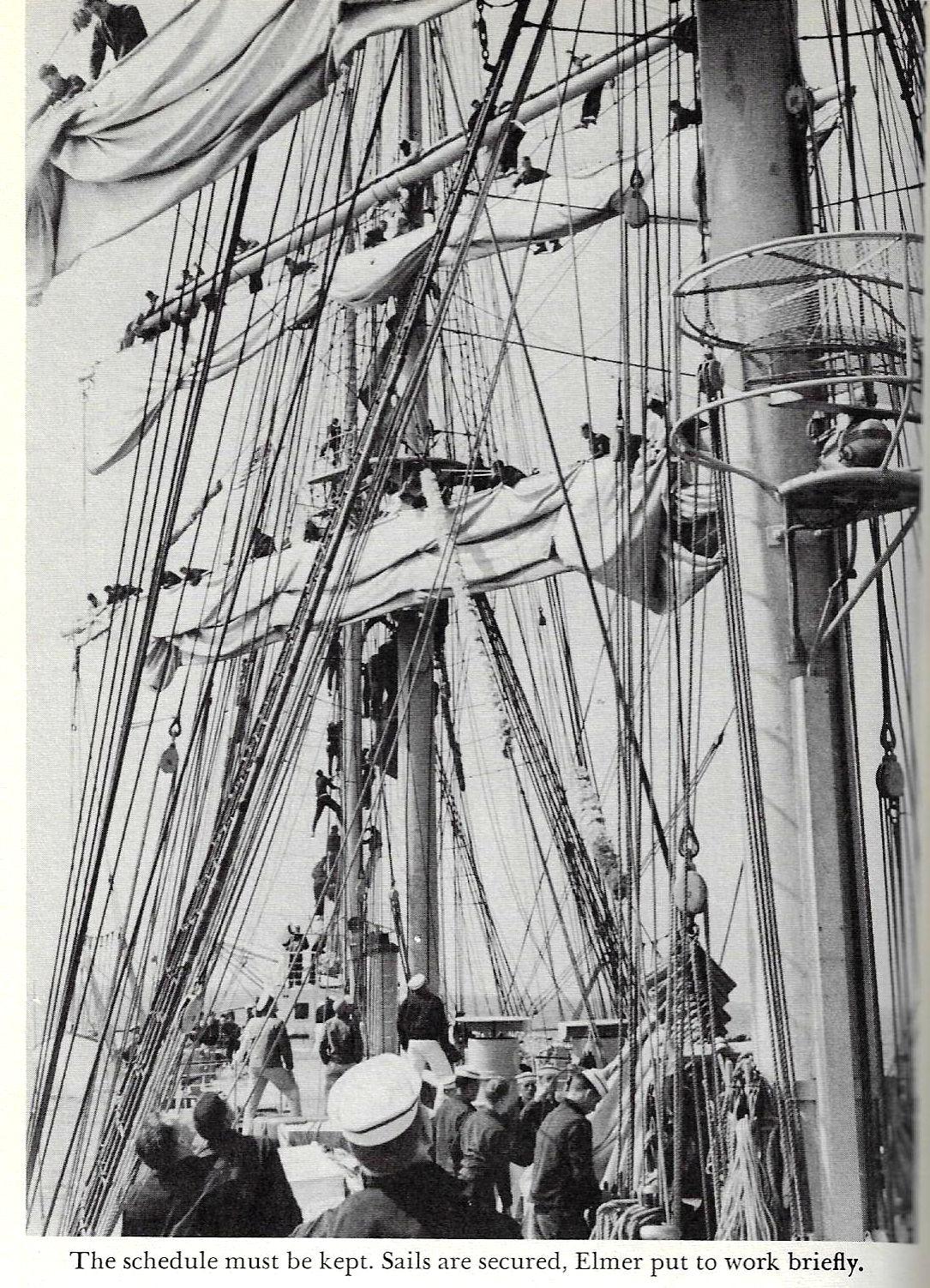
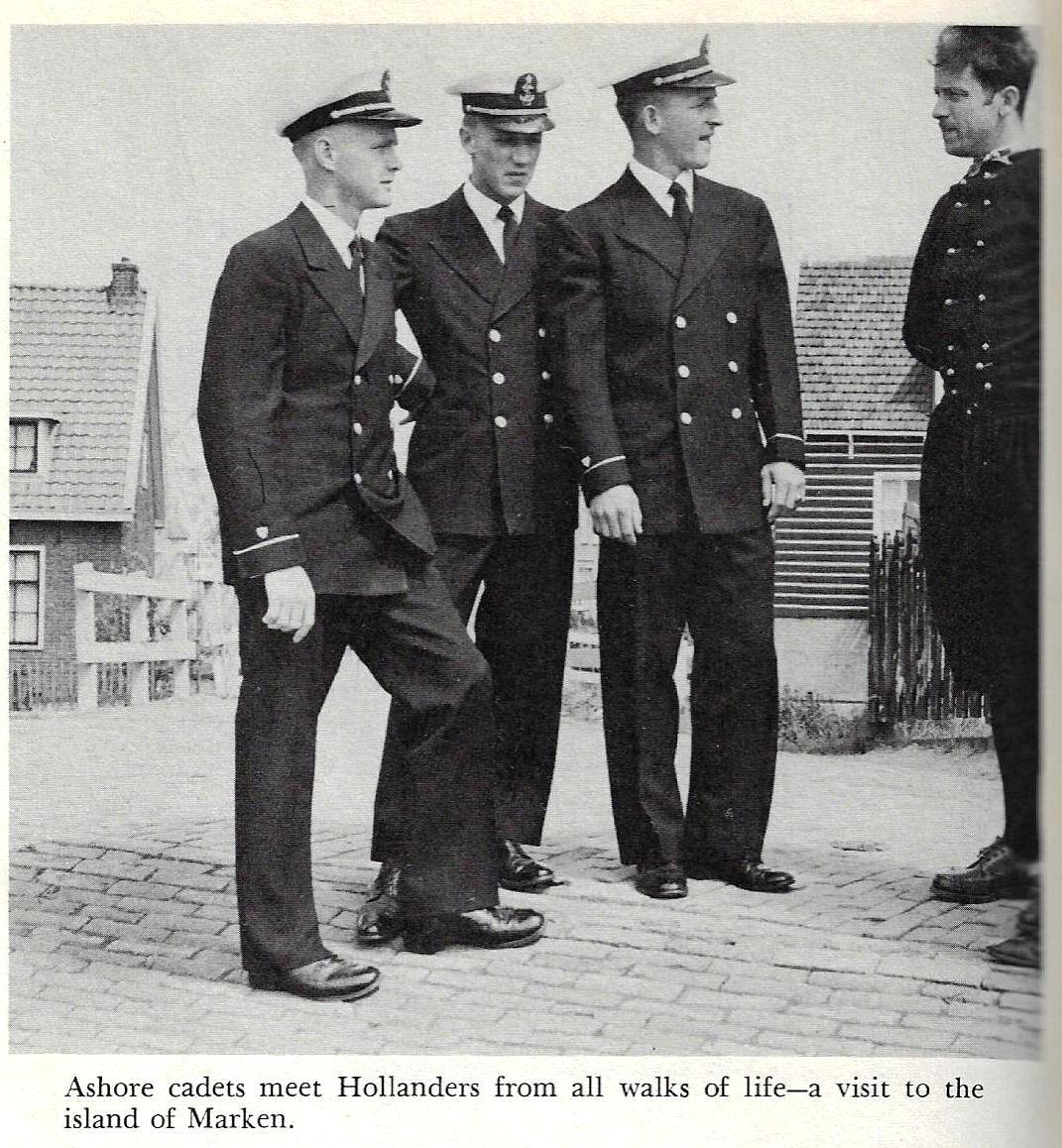
Gregory Michael Lafond - 6/7/78 - 6/11/98 Coast Guard Eagle Fatality
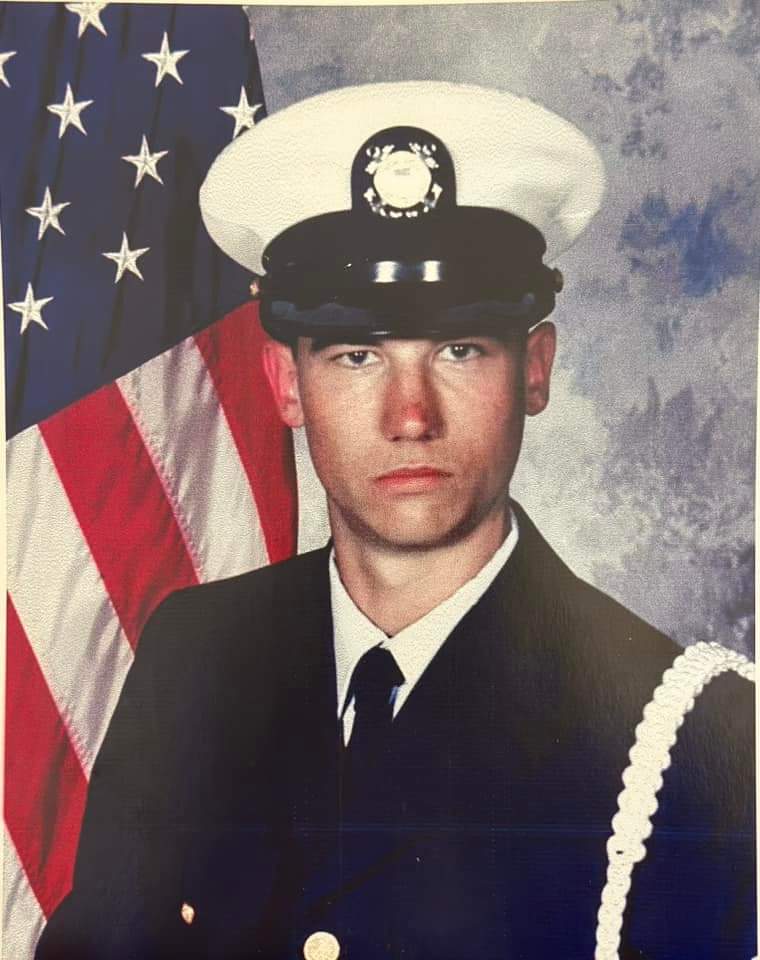
Gregory Michael LaFond, graduated in June of 1996 from Raymond High School. He attended the University of NH the fall of 1996 to study Marine Biology, and the following year (1997) decided to enlist in the U.S. Coast Guard. During his assignment aboard the U.S. Coast Guard Barque Eagle, he was trained to maintain the vessel and traveled to many different Ports. After his death off the coast of St. John in U.S. Virgin Islands on June 11, 1998, Greg was laid to rest in the cemetery’s circle around the American Flag pole at the Old Pine Grove Cemetery in Raymond, NH.
On June 11, 1998 - SA Greg LaFond. While off the coast of the U.S. Virgin Islands and 9 months after reporting on board USCGC Eagle, SA LaFond was moving about the rigging when he lost his grasp and fell 120 feet, impacting the ship's deck before ending up in the sea. He was immediately rescued from the water and transferred by small boat to St. Thomas, where a Coast Guard helicopter was waiting to fly him to San Juan, P.R. He died during the flight.
© Copyright www.coastguardhistory.org
